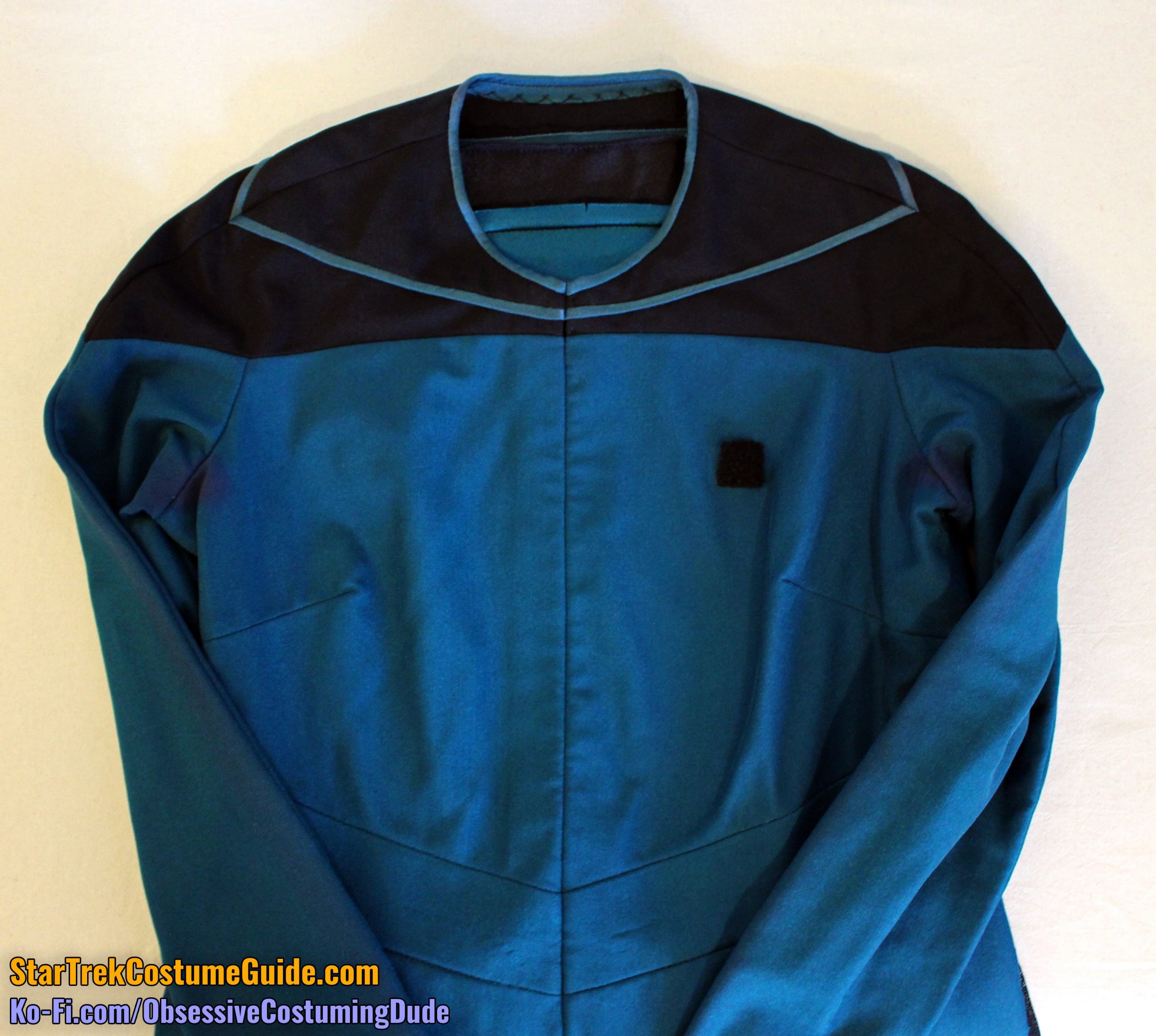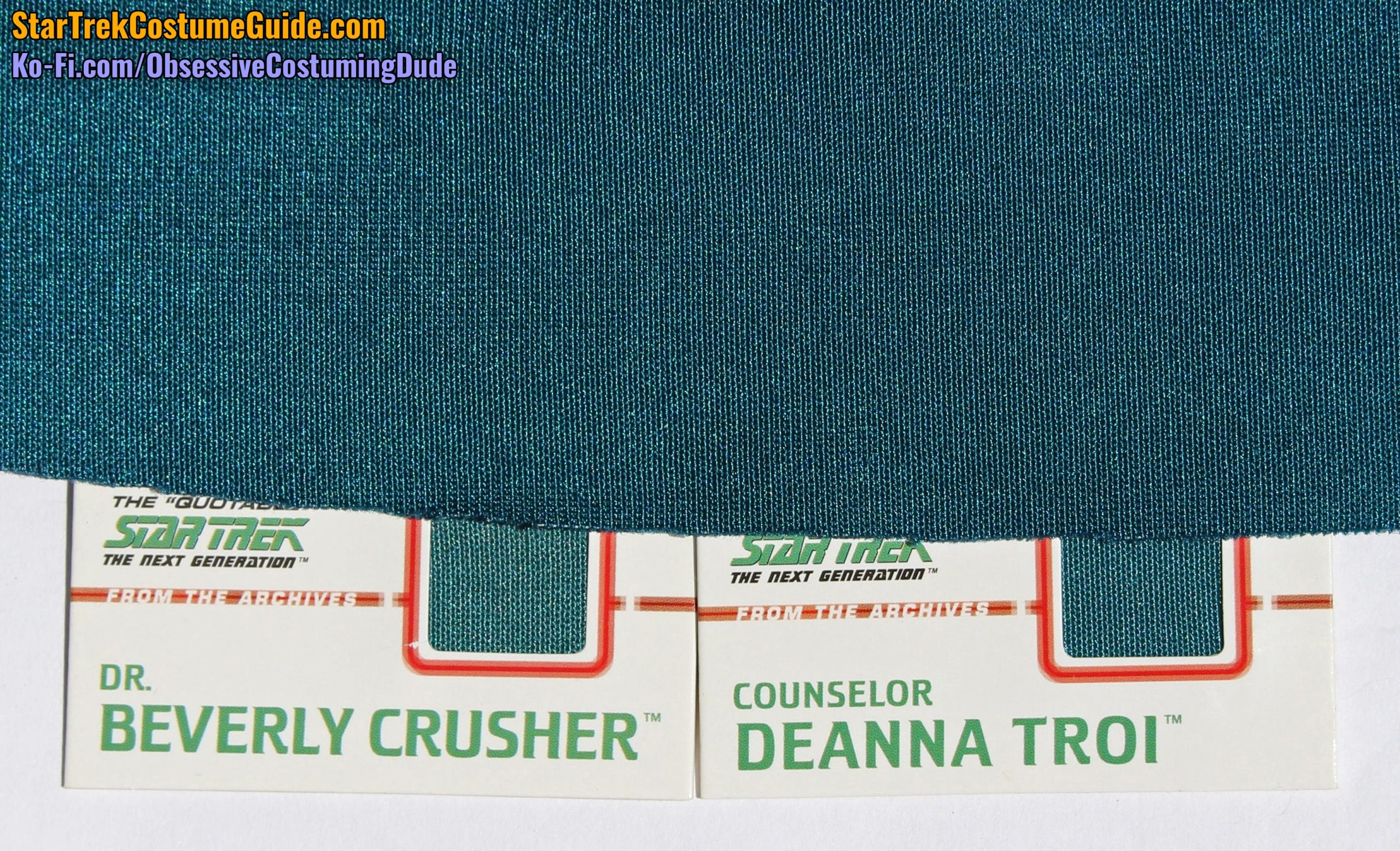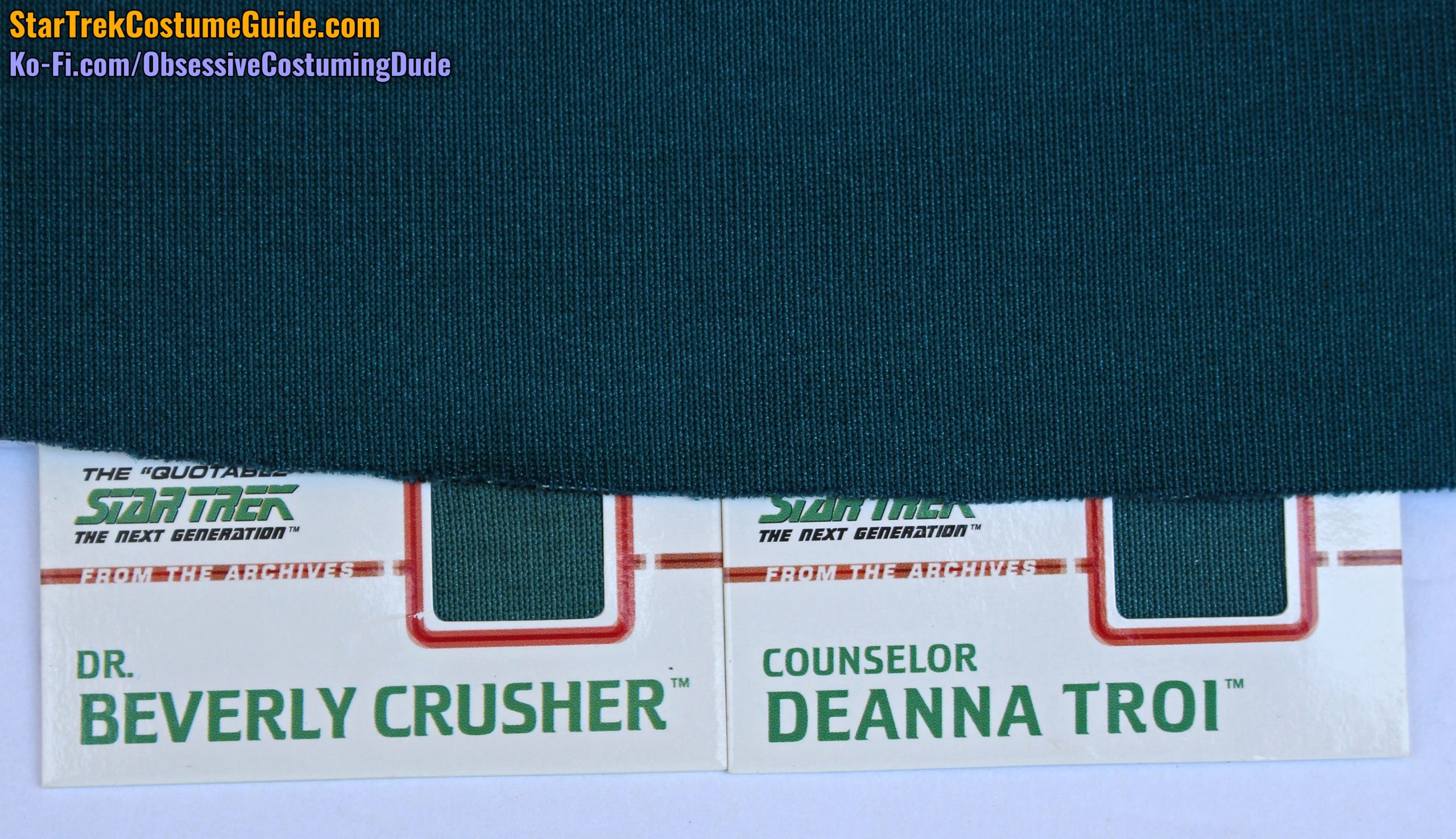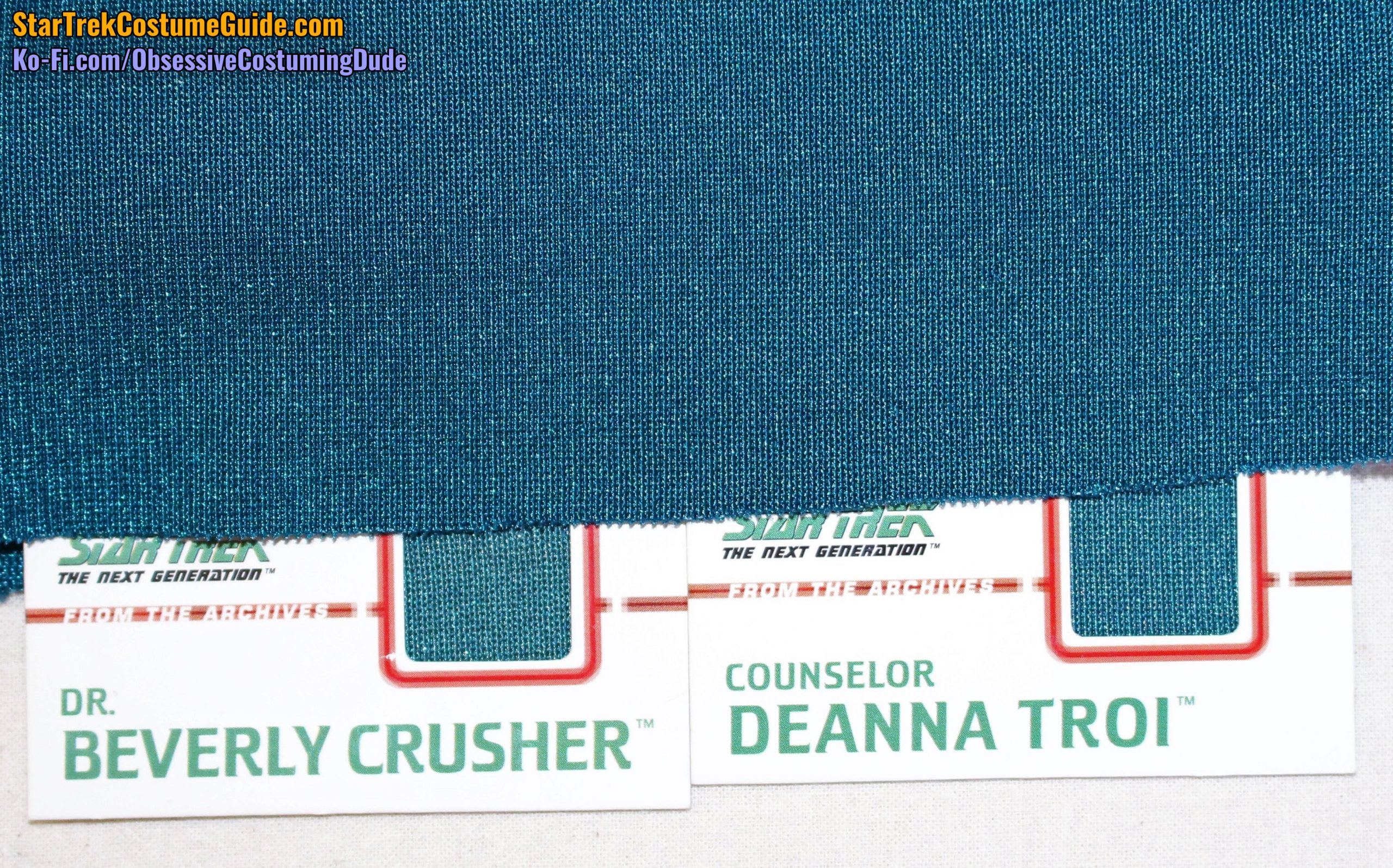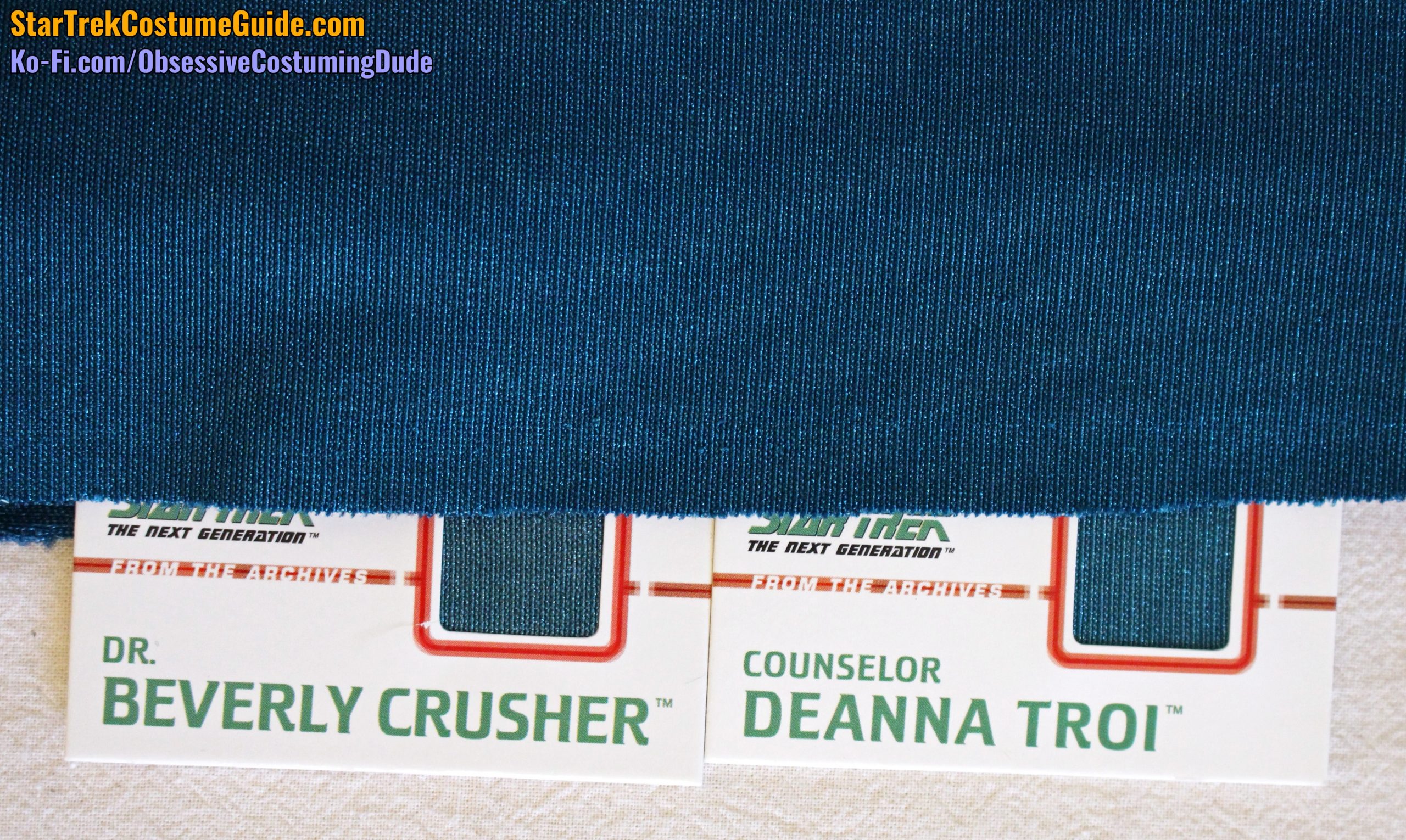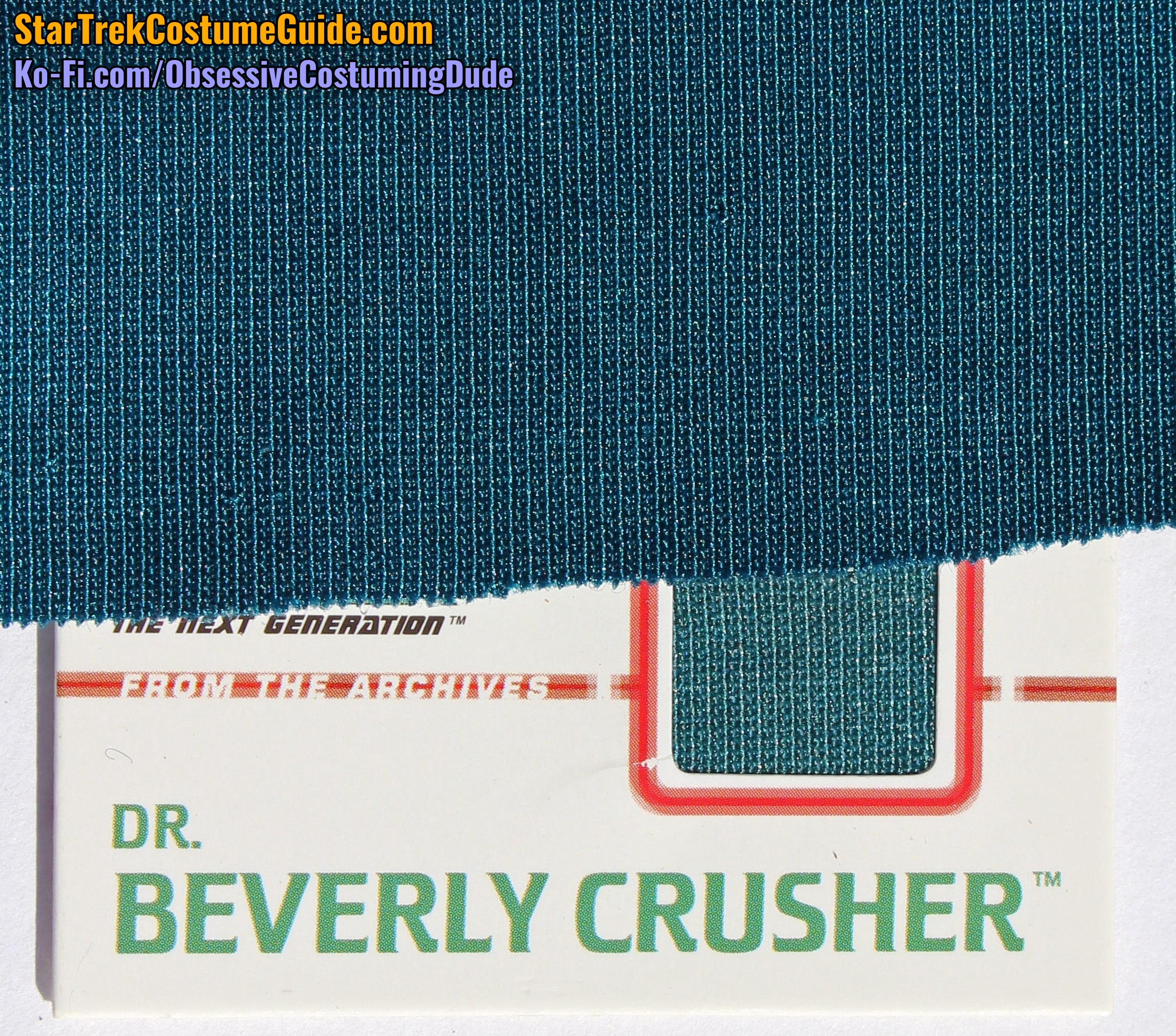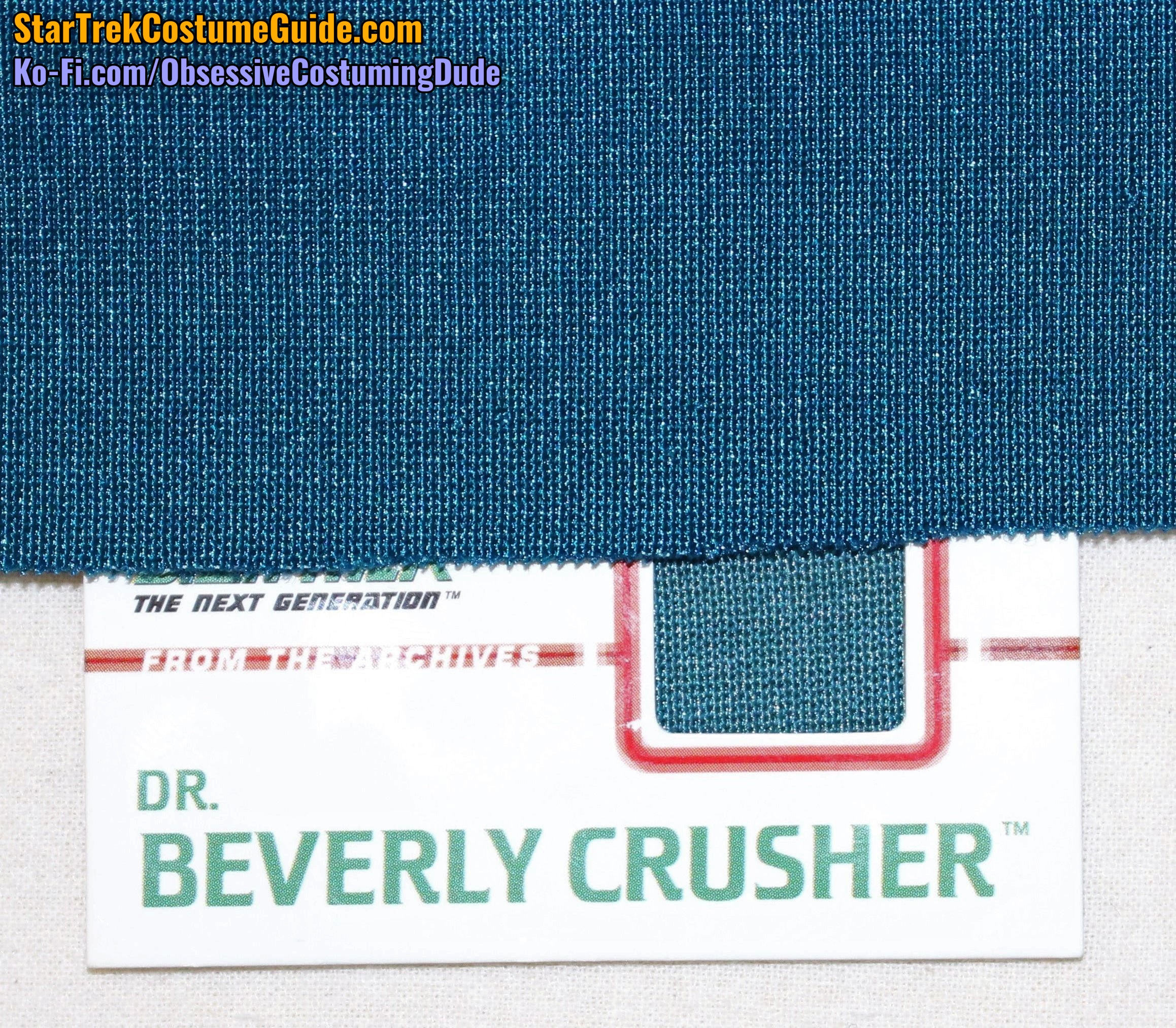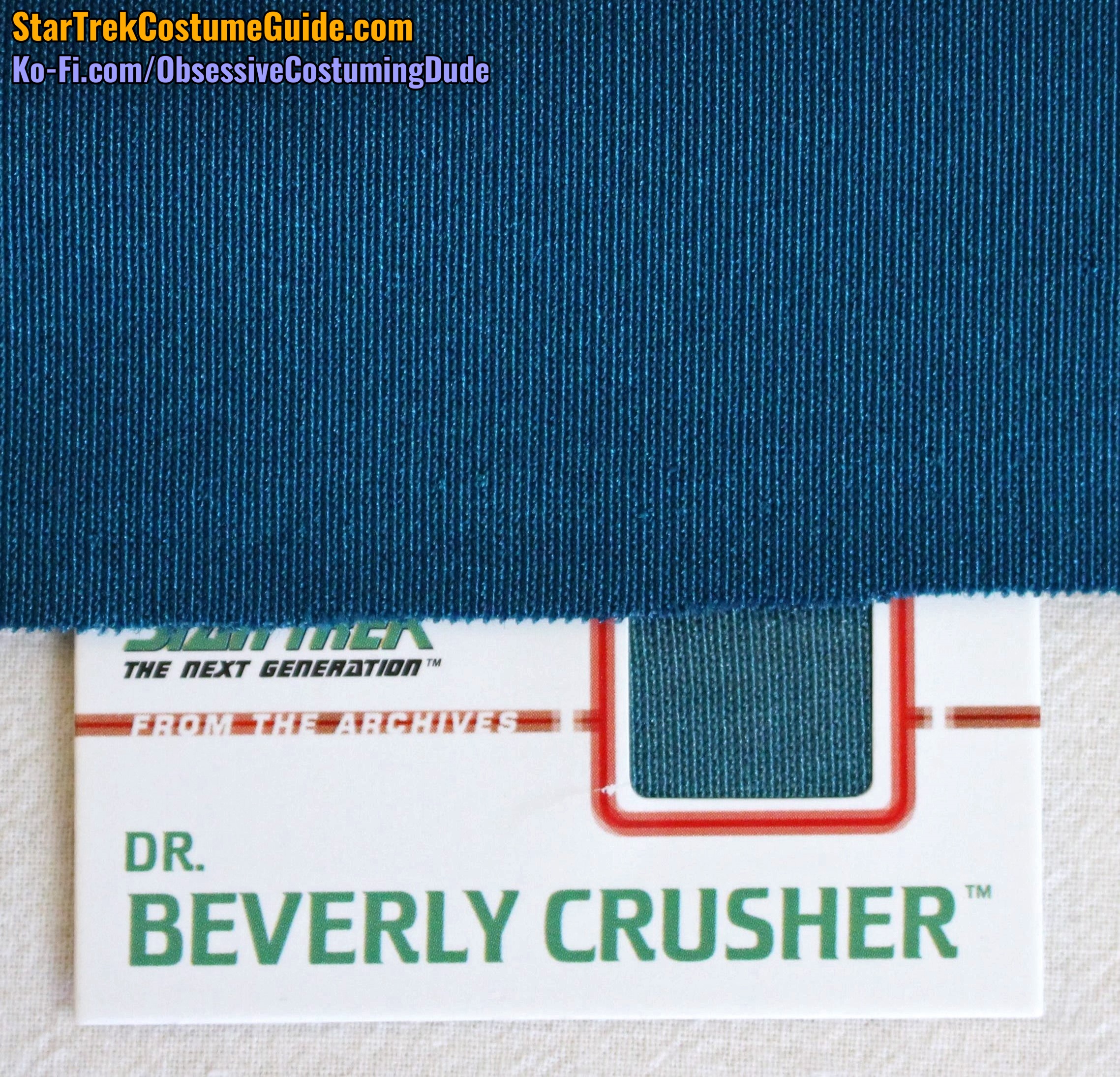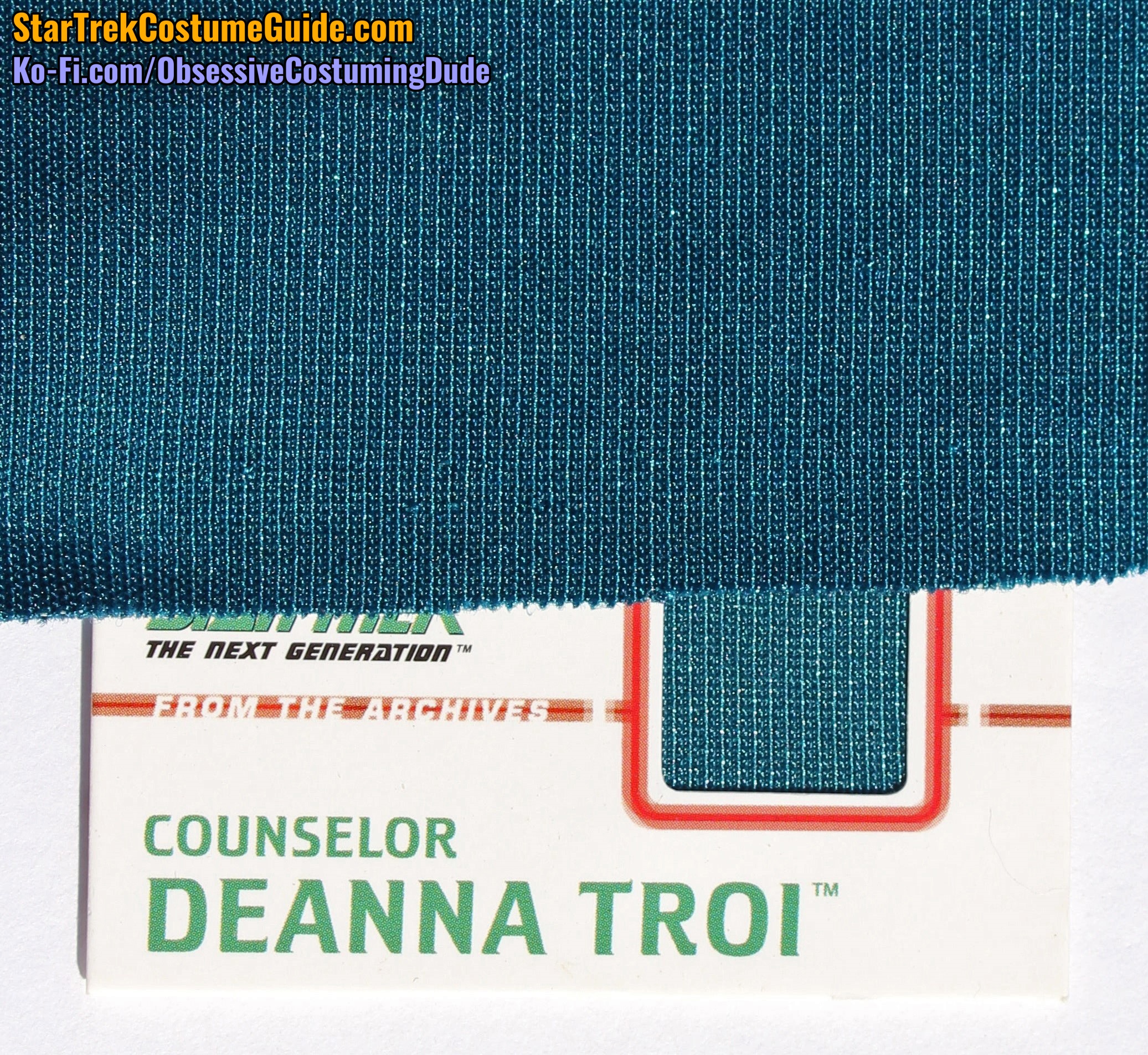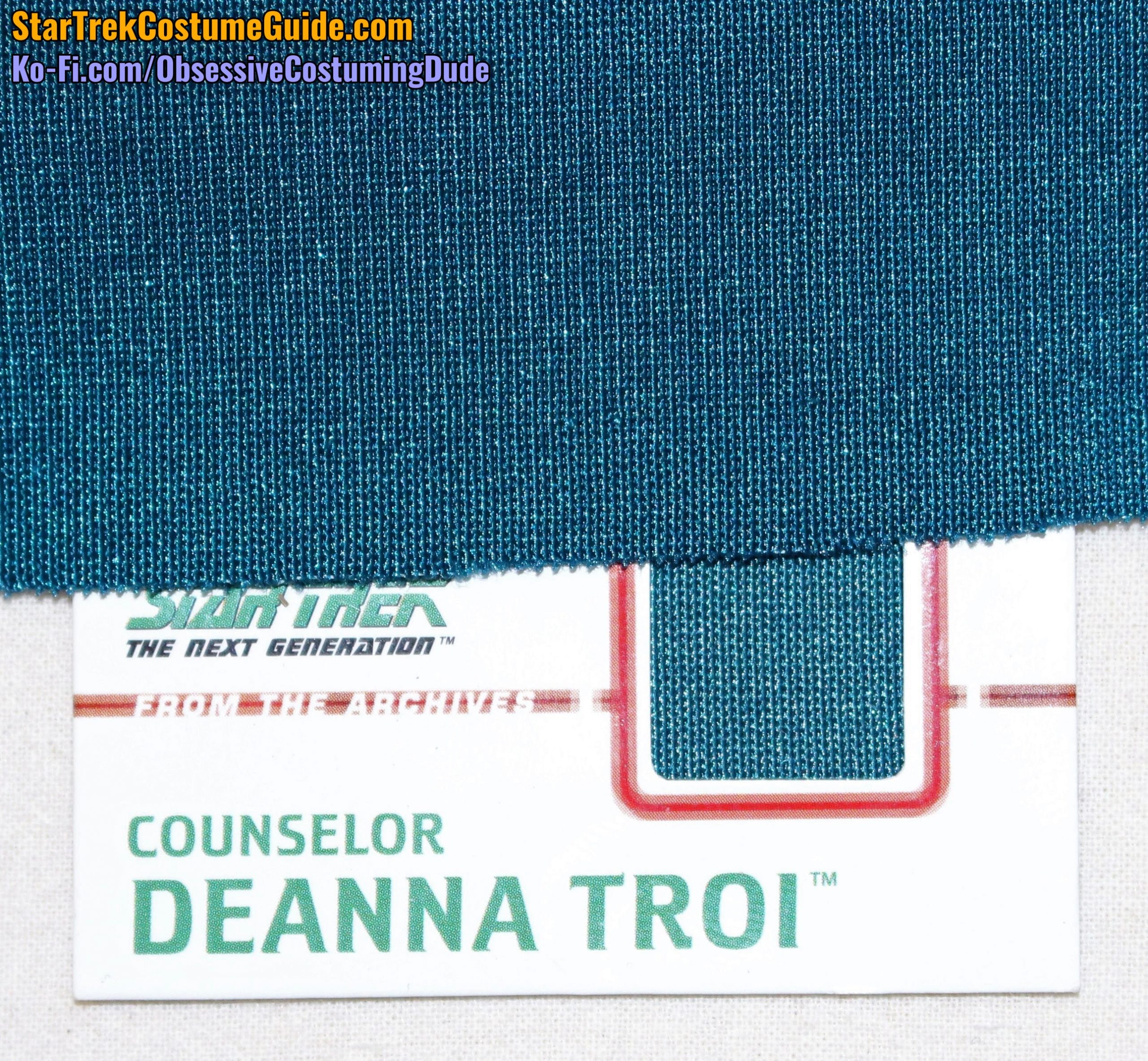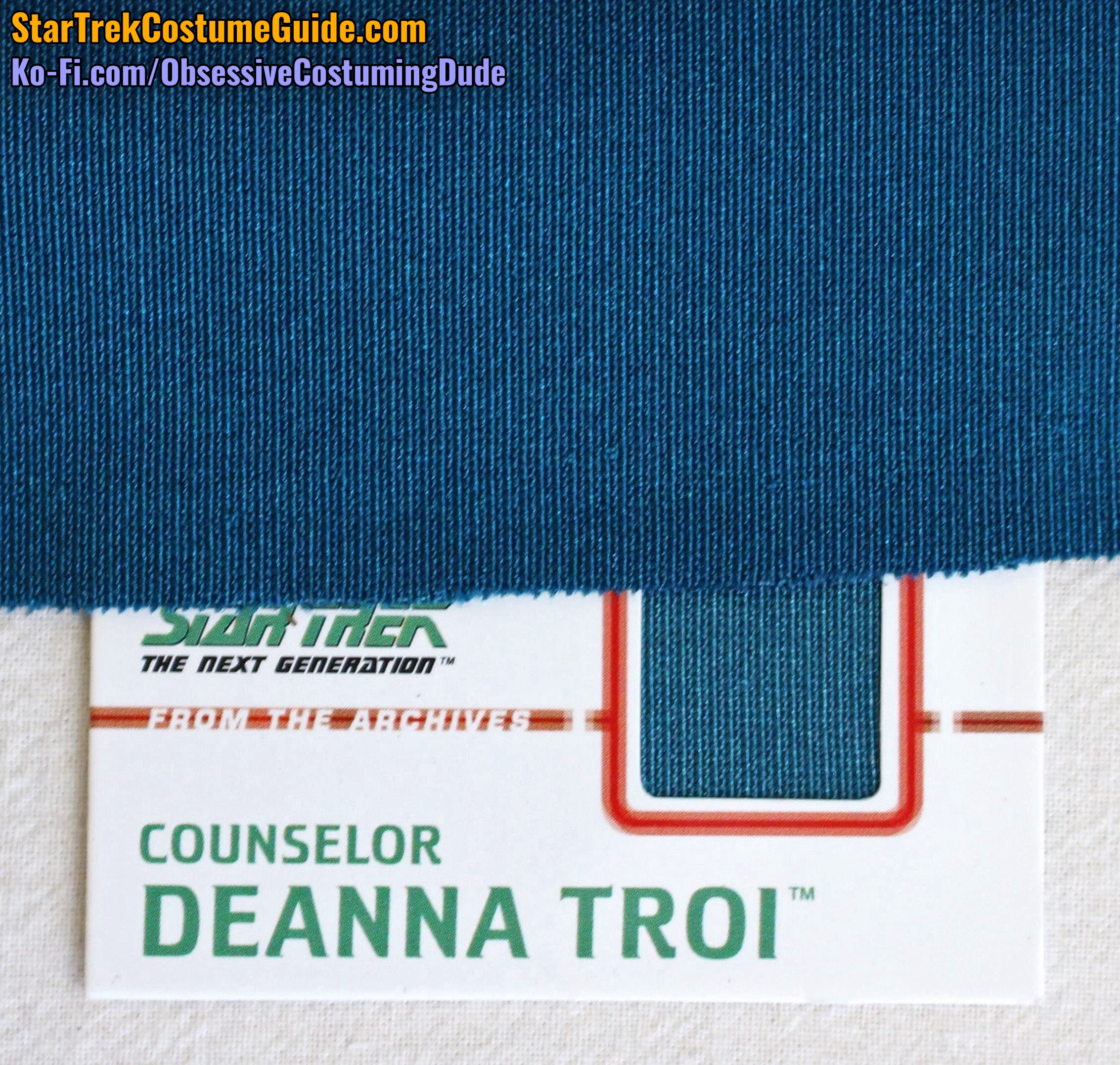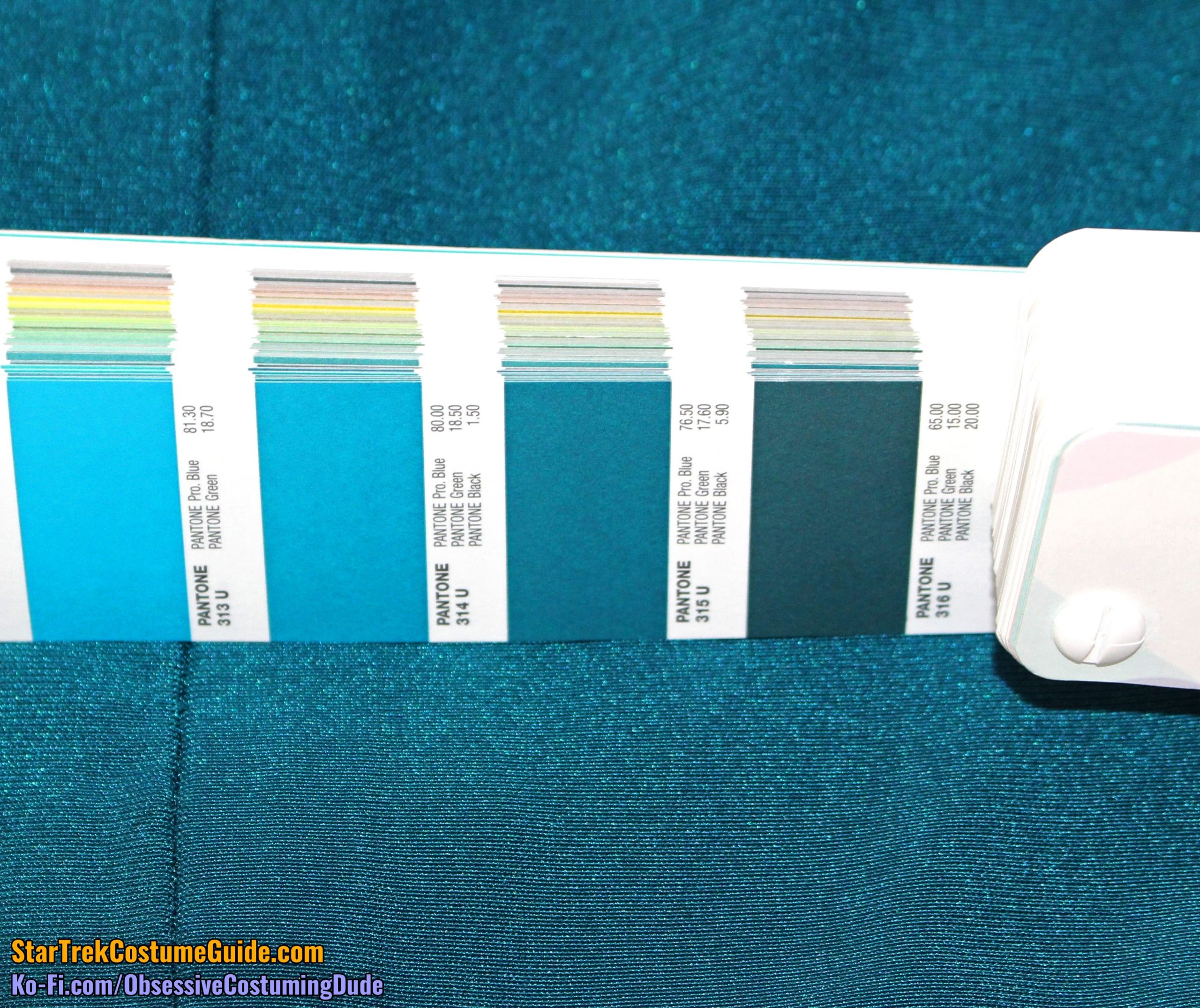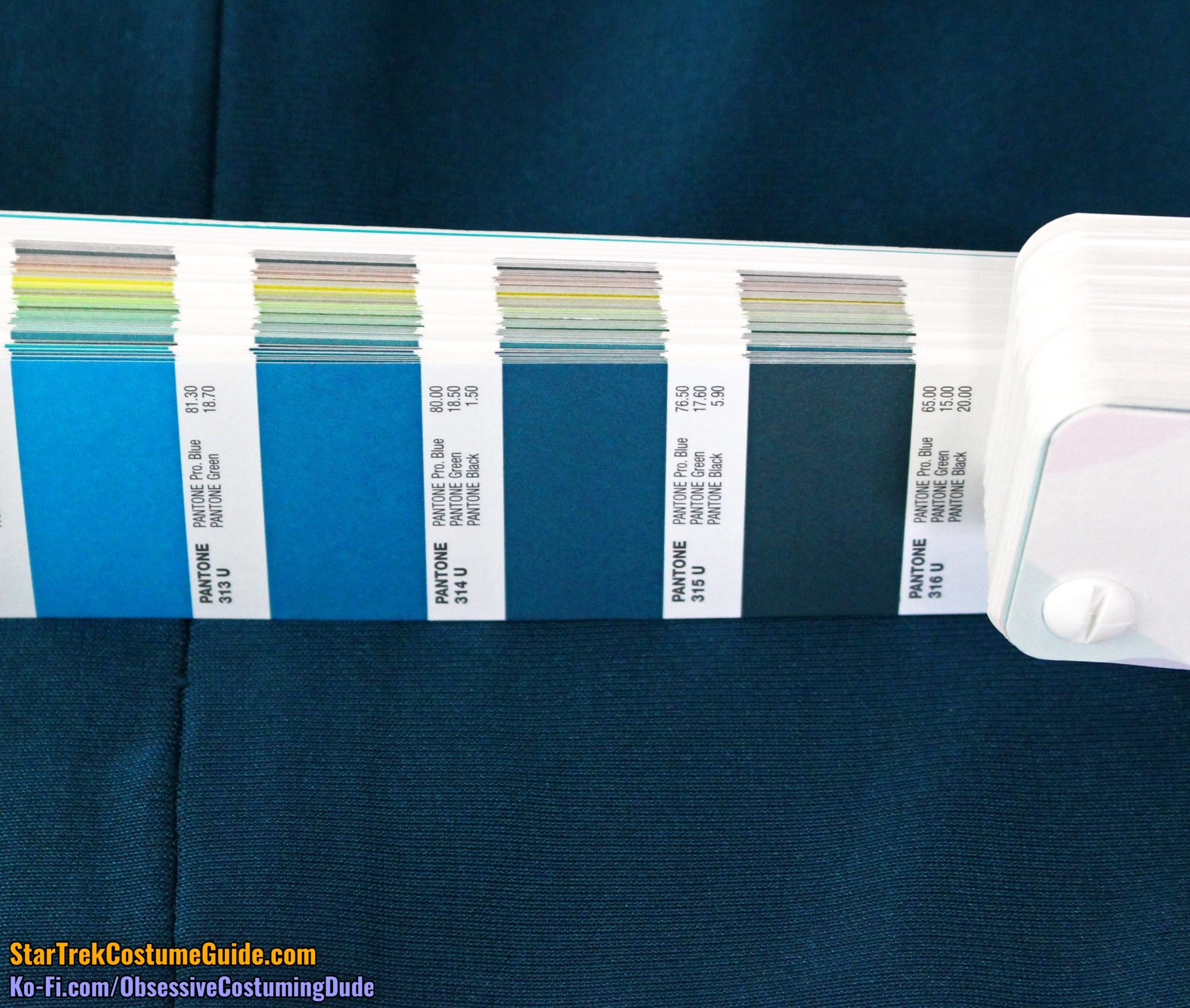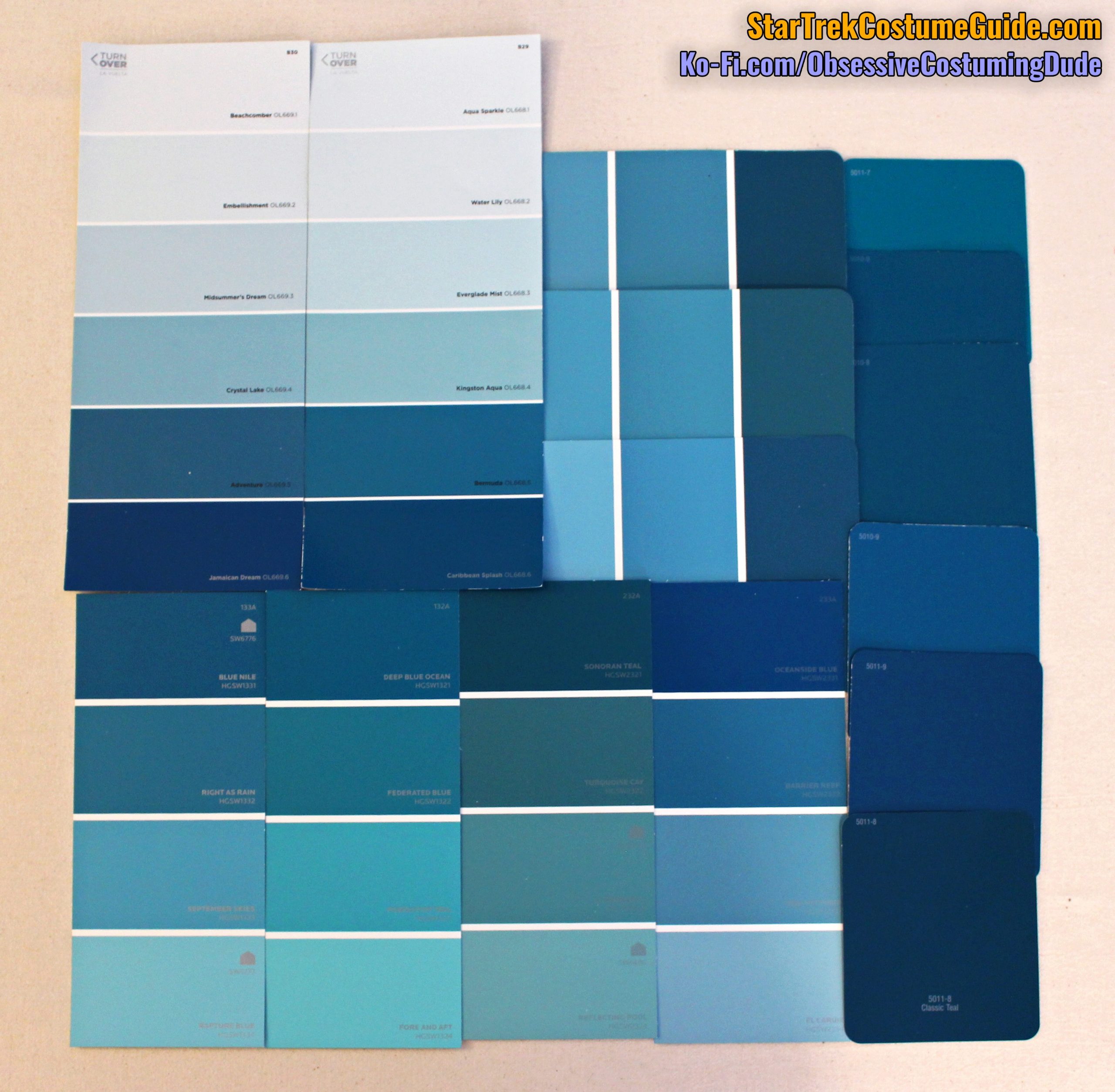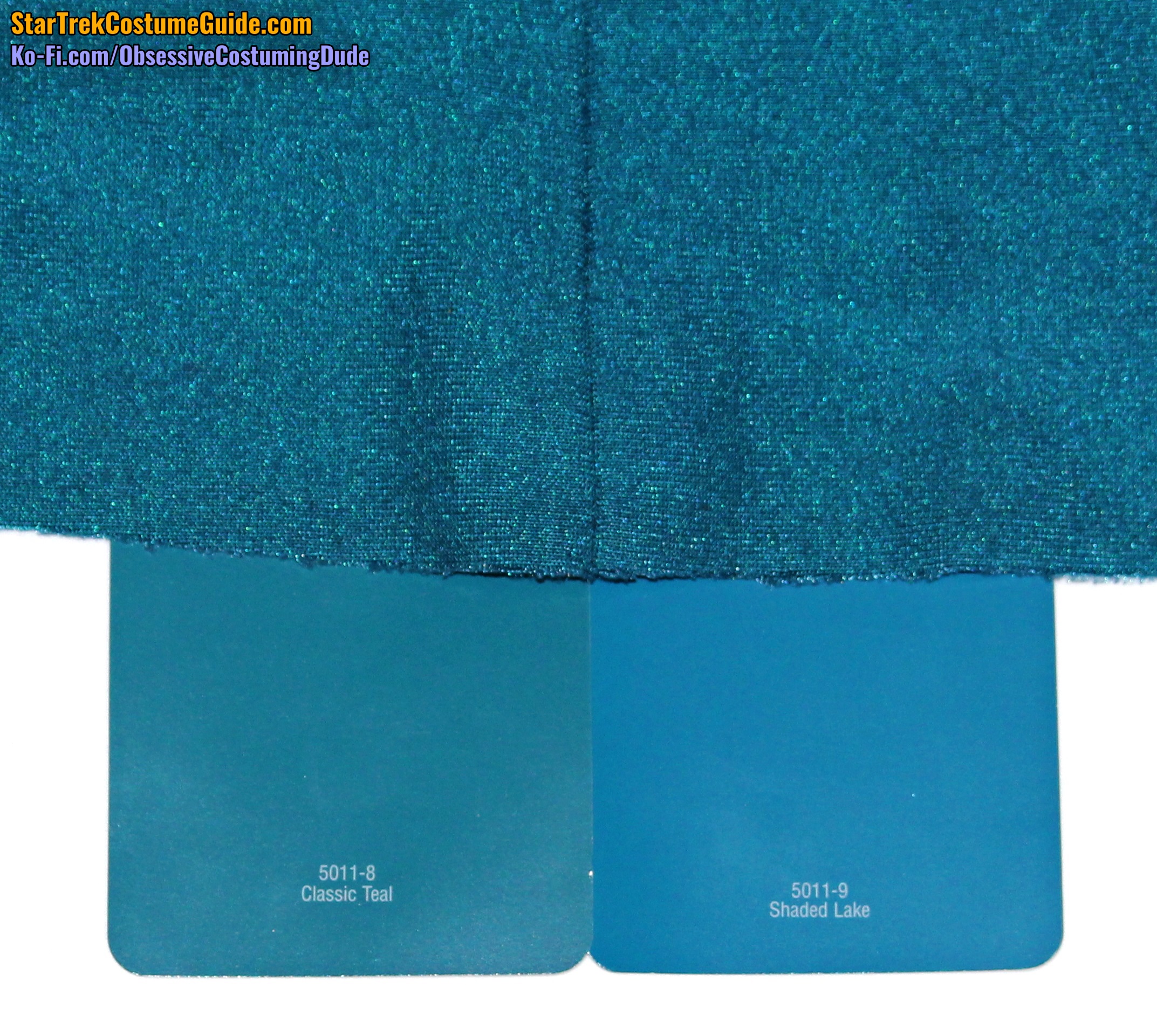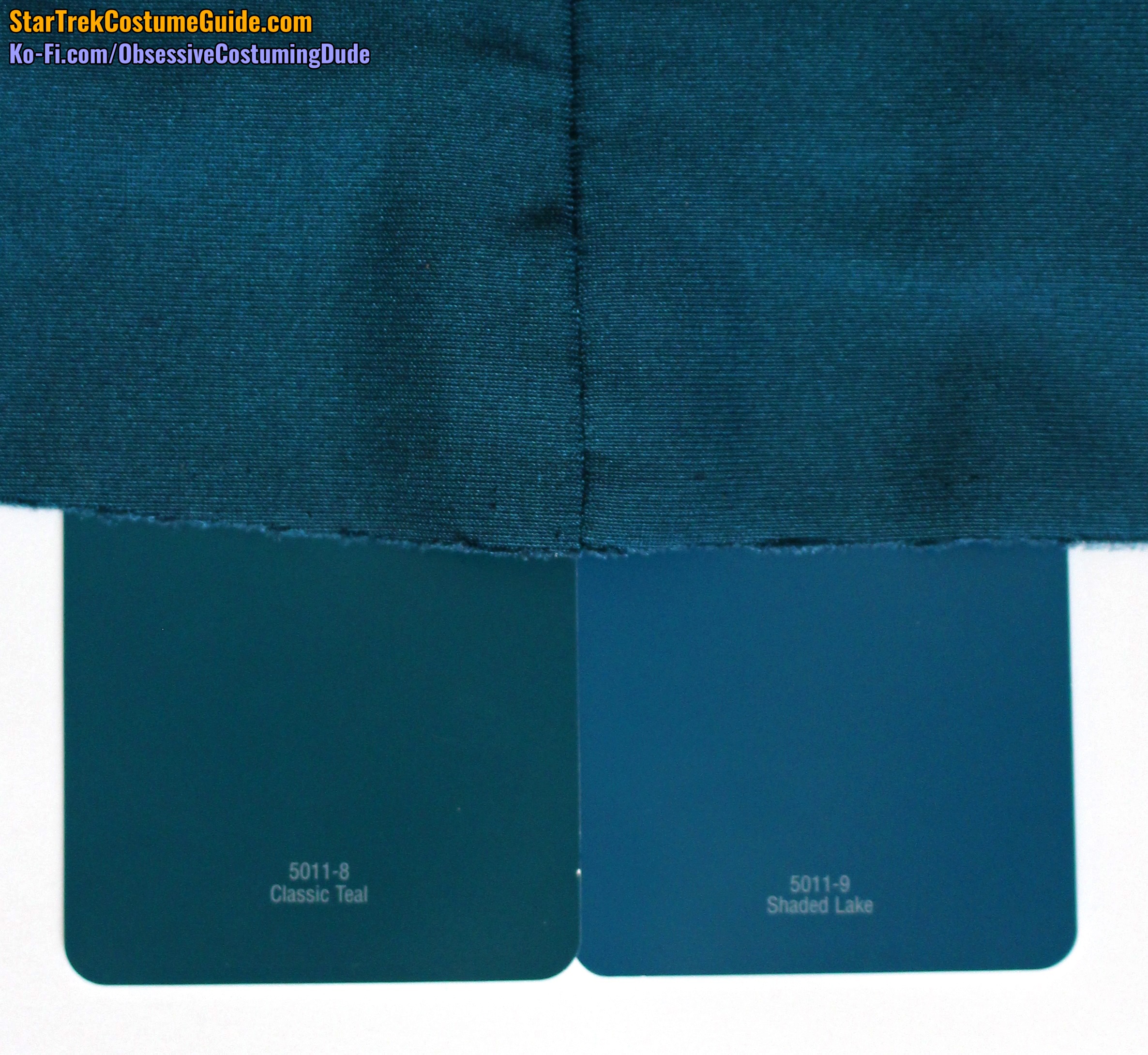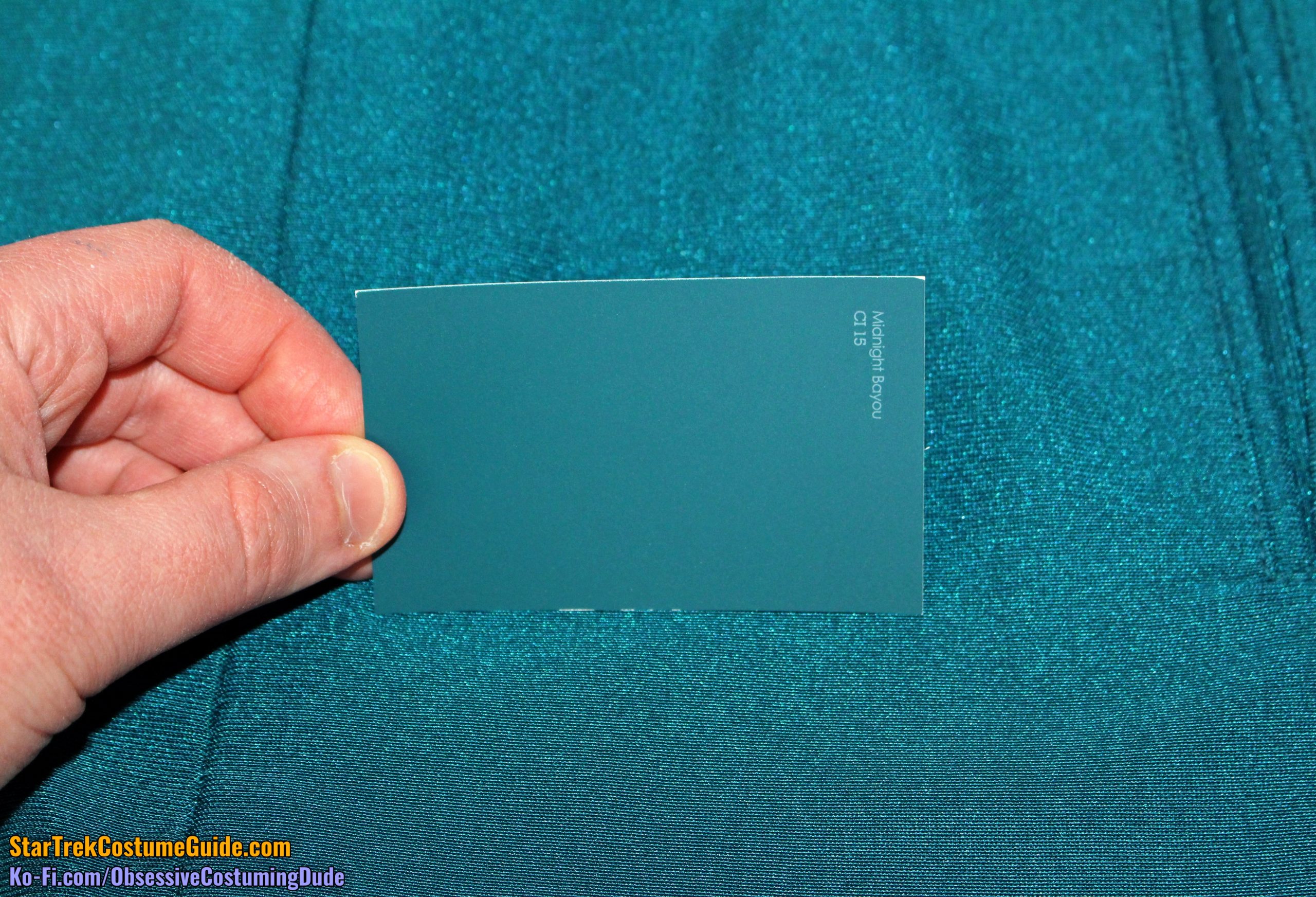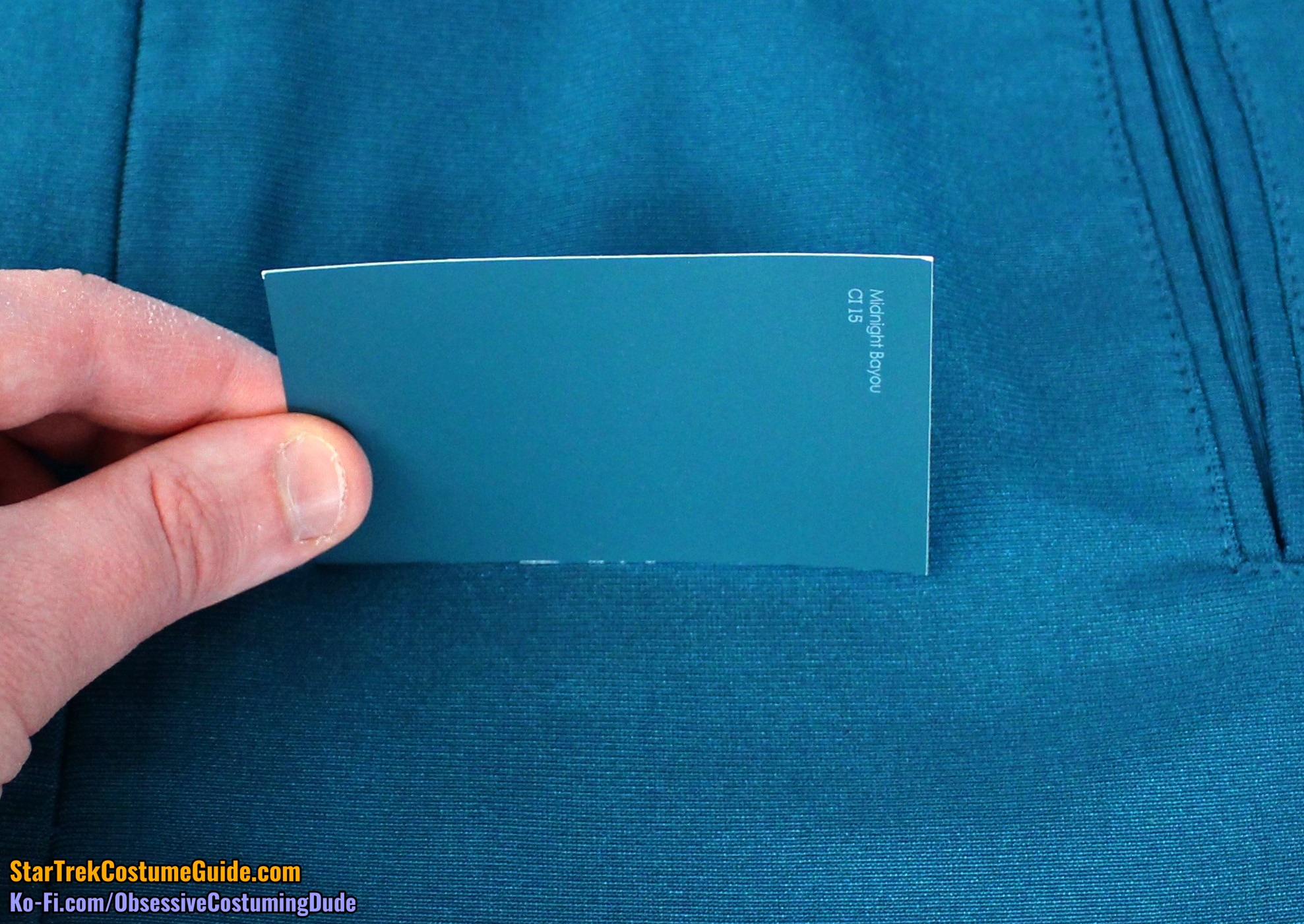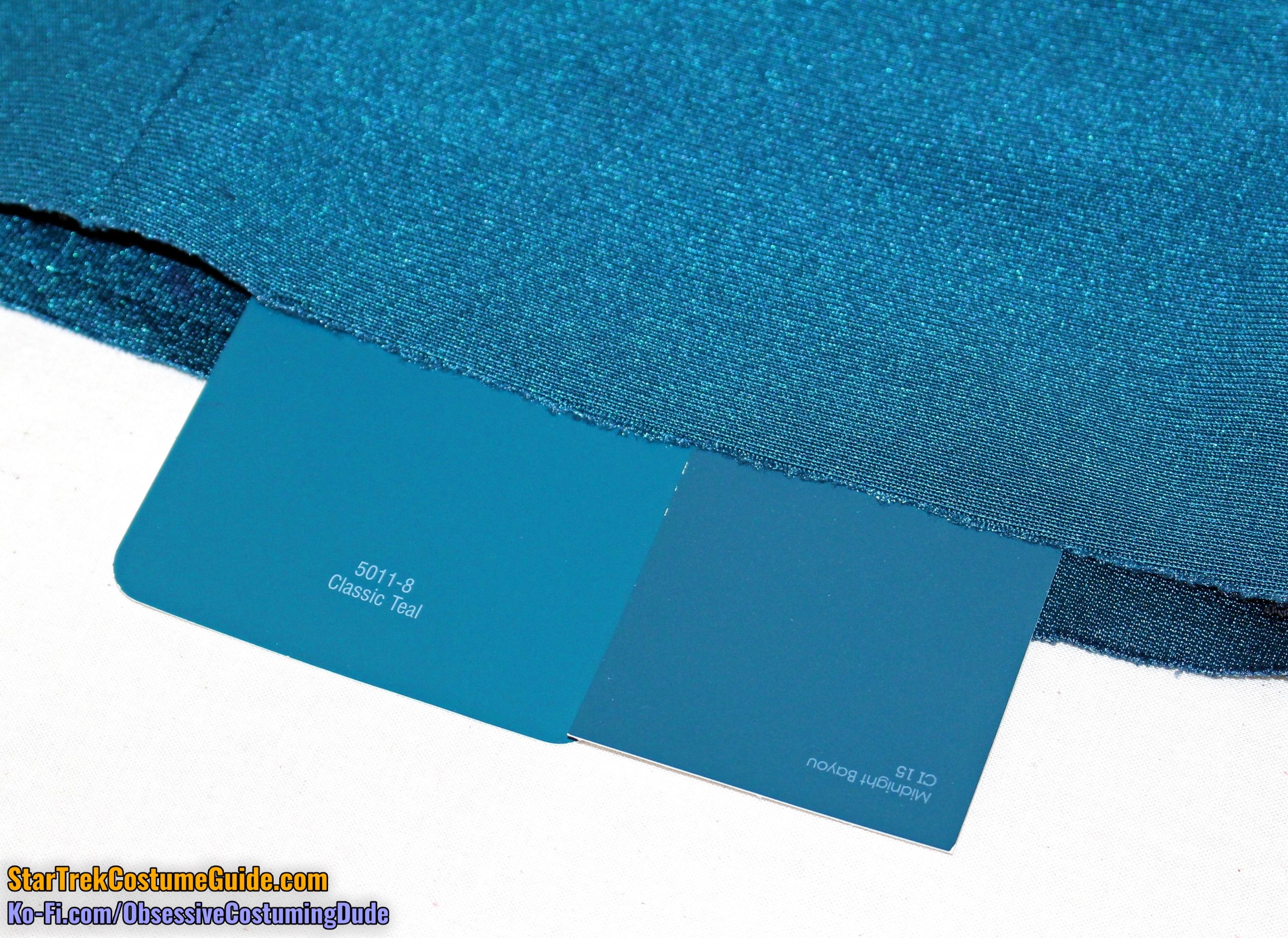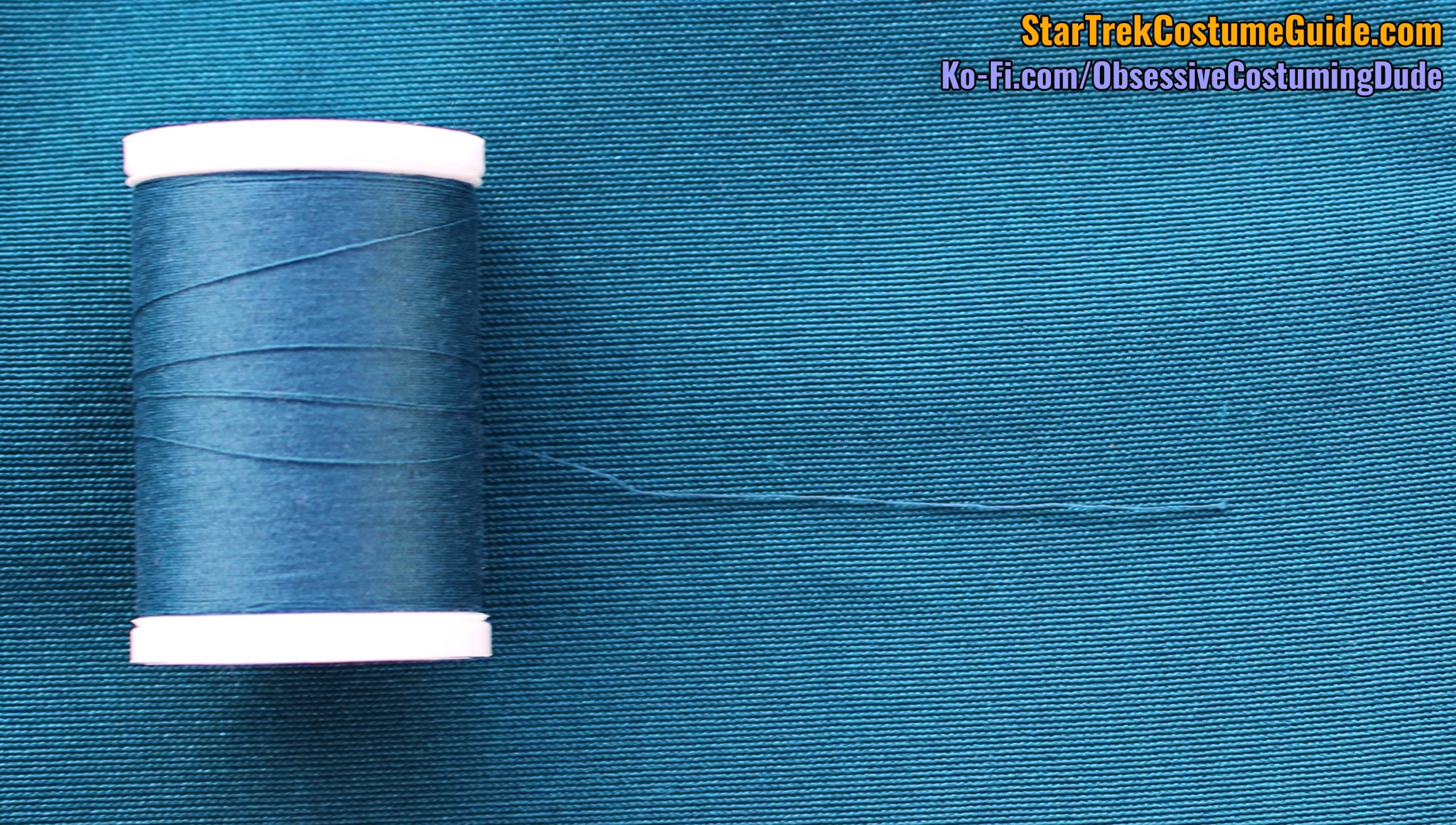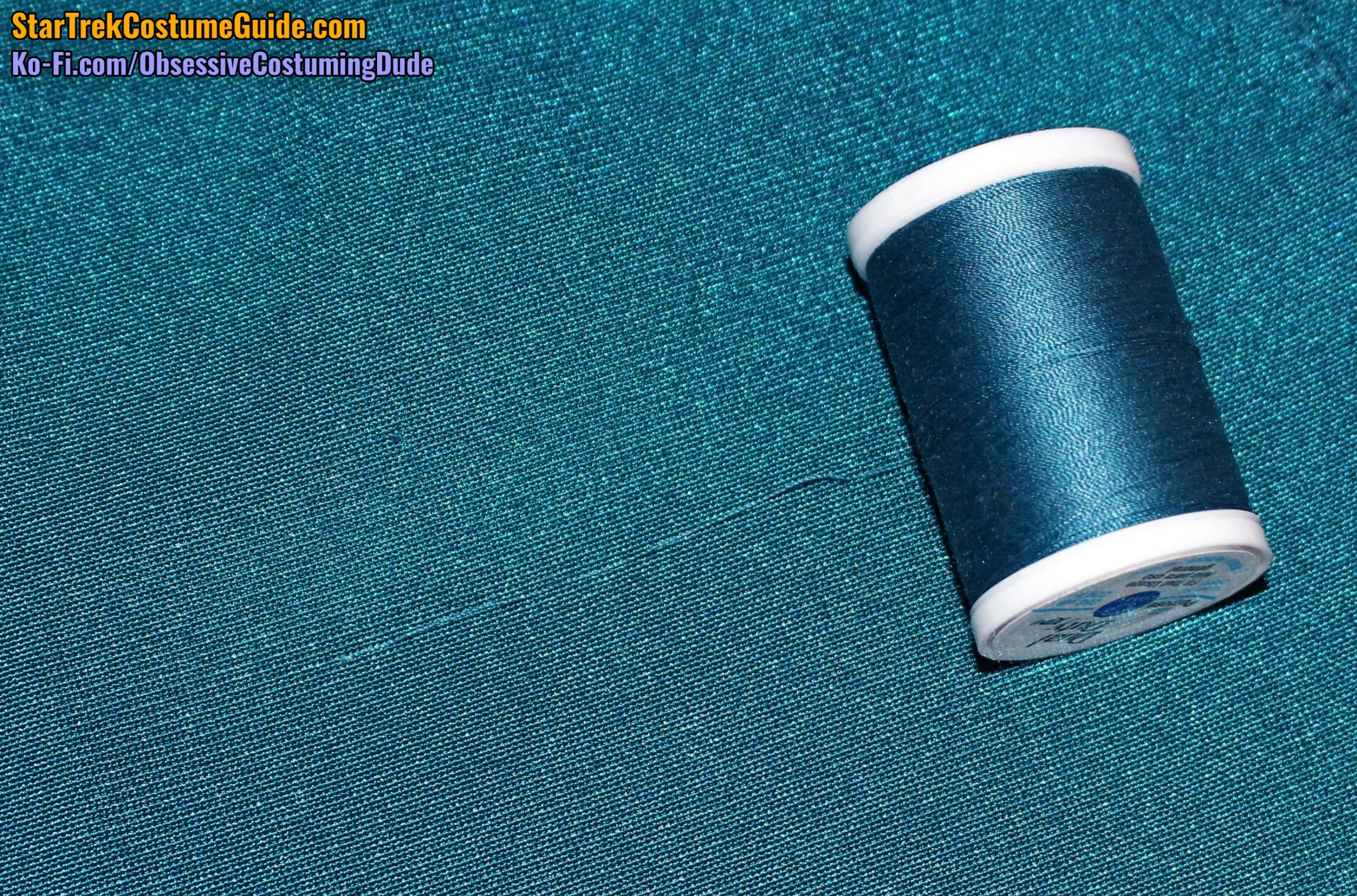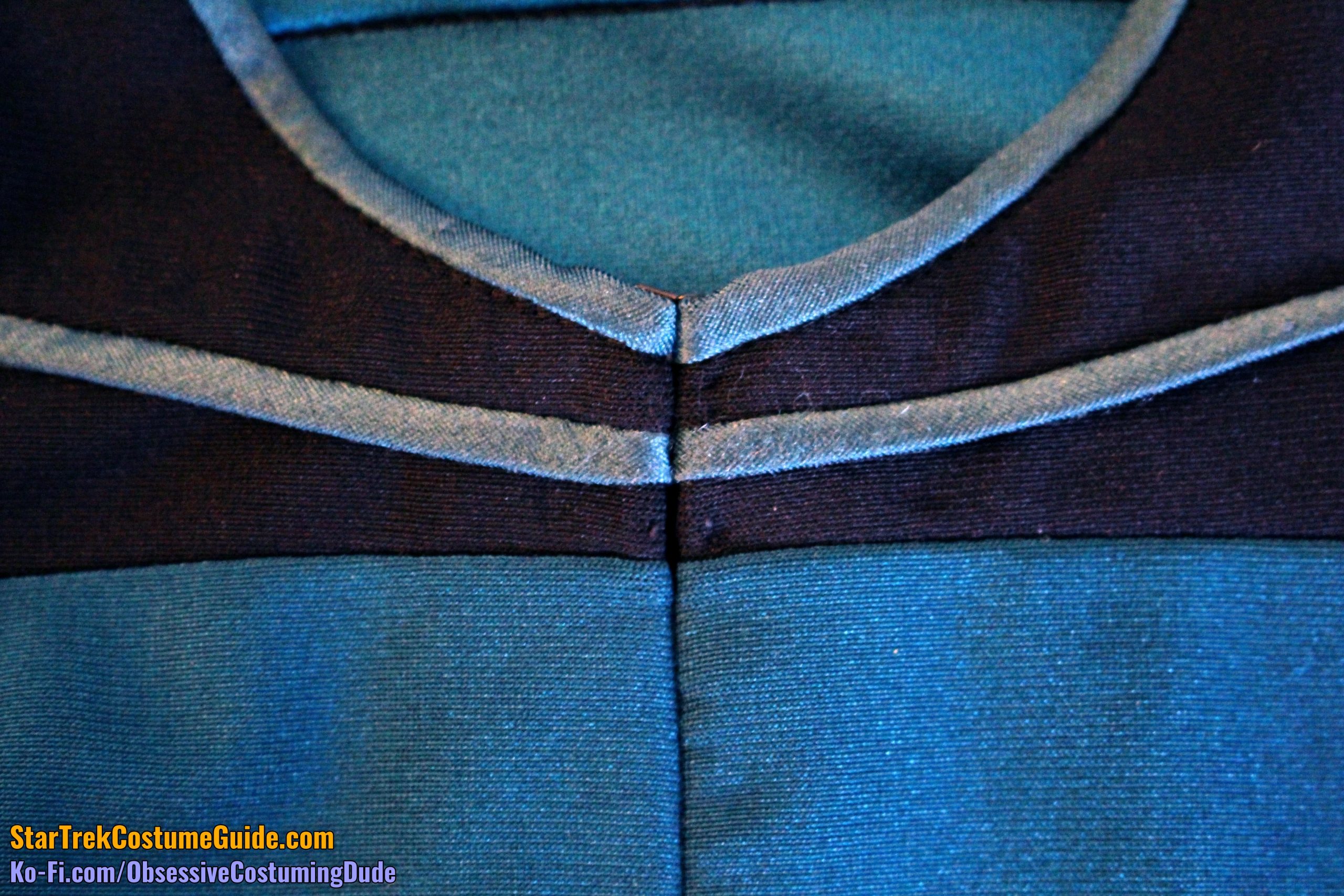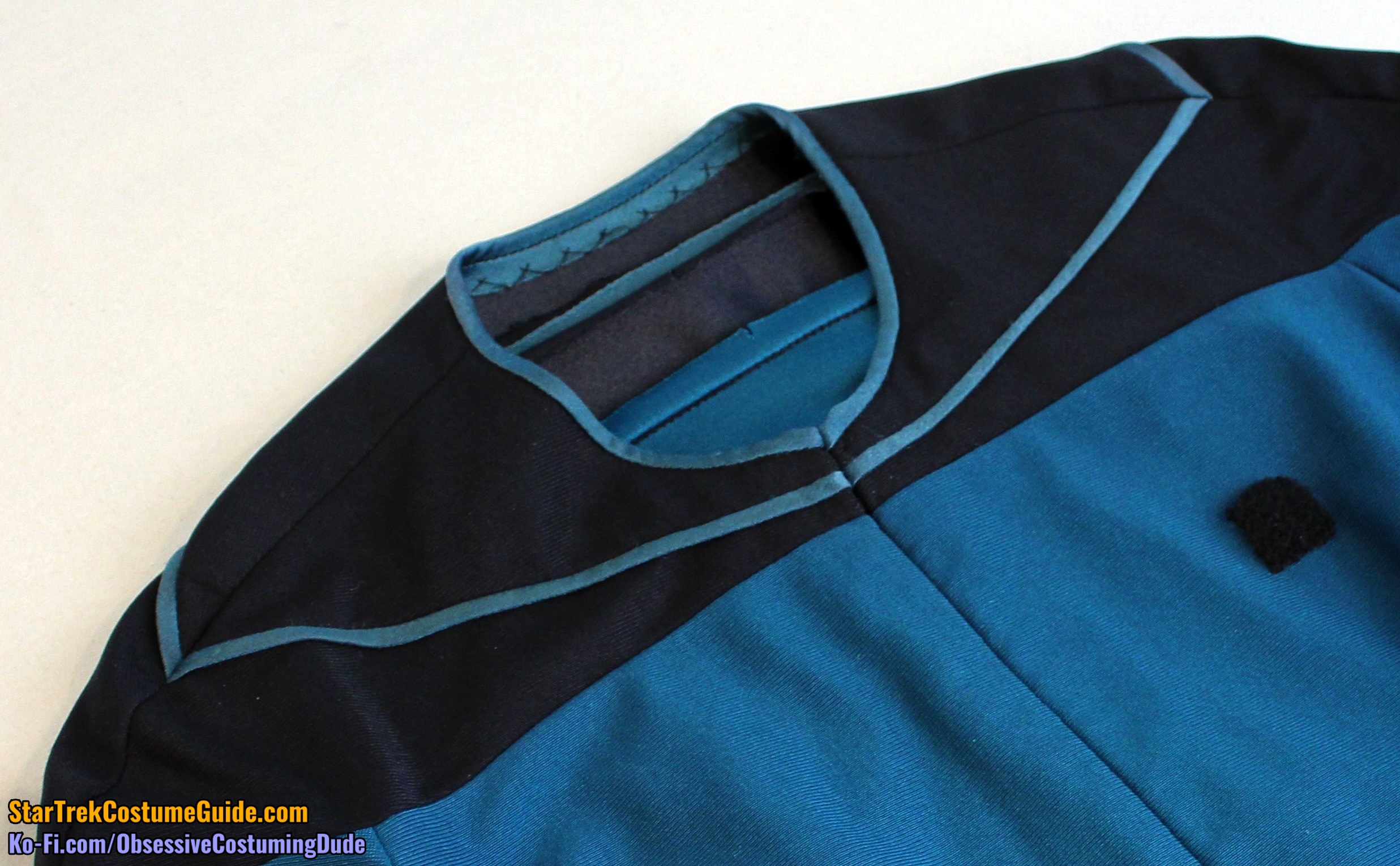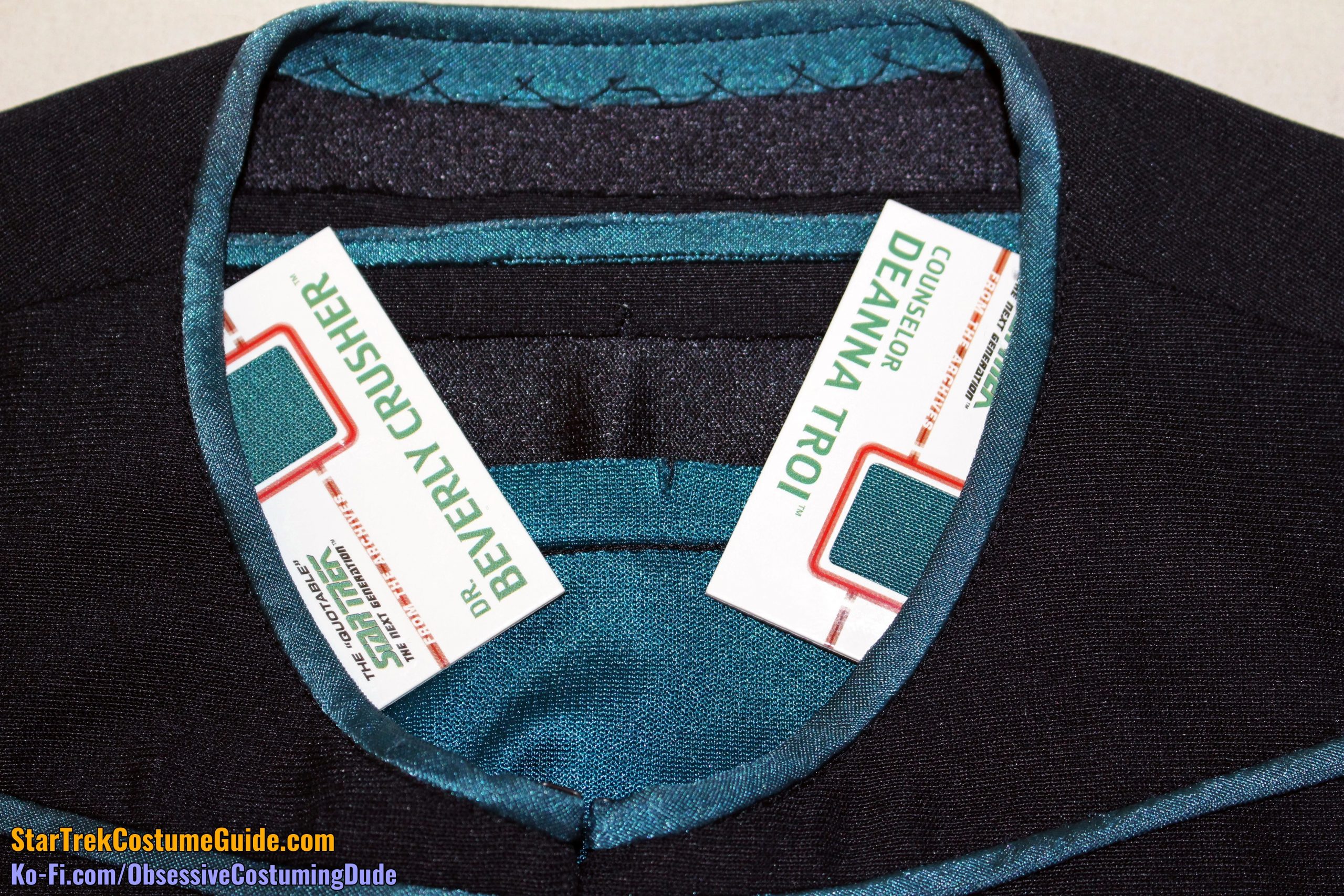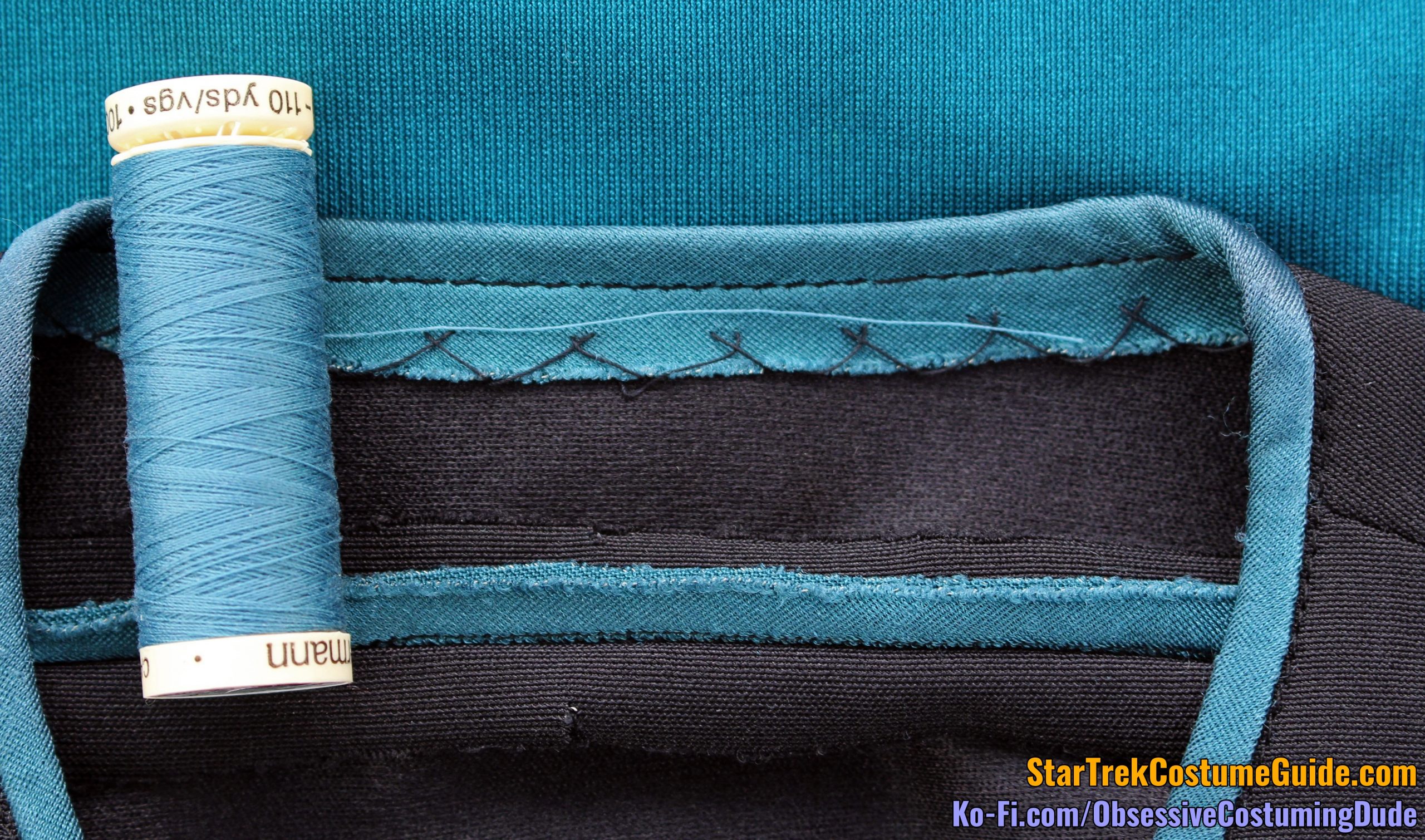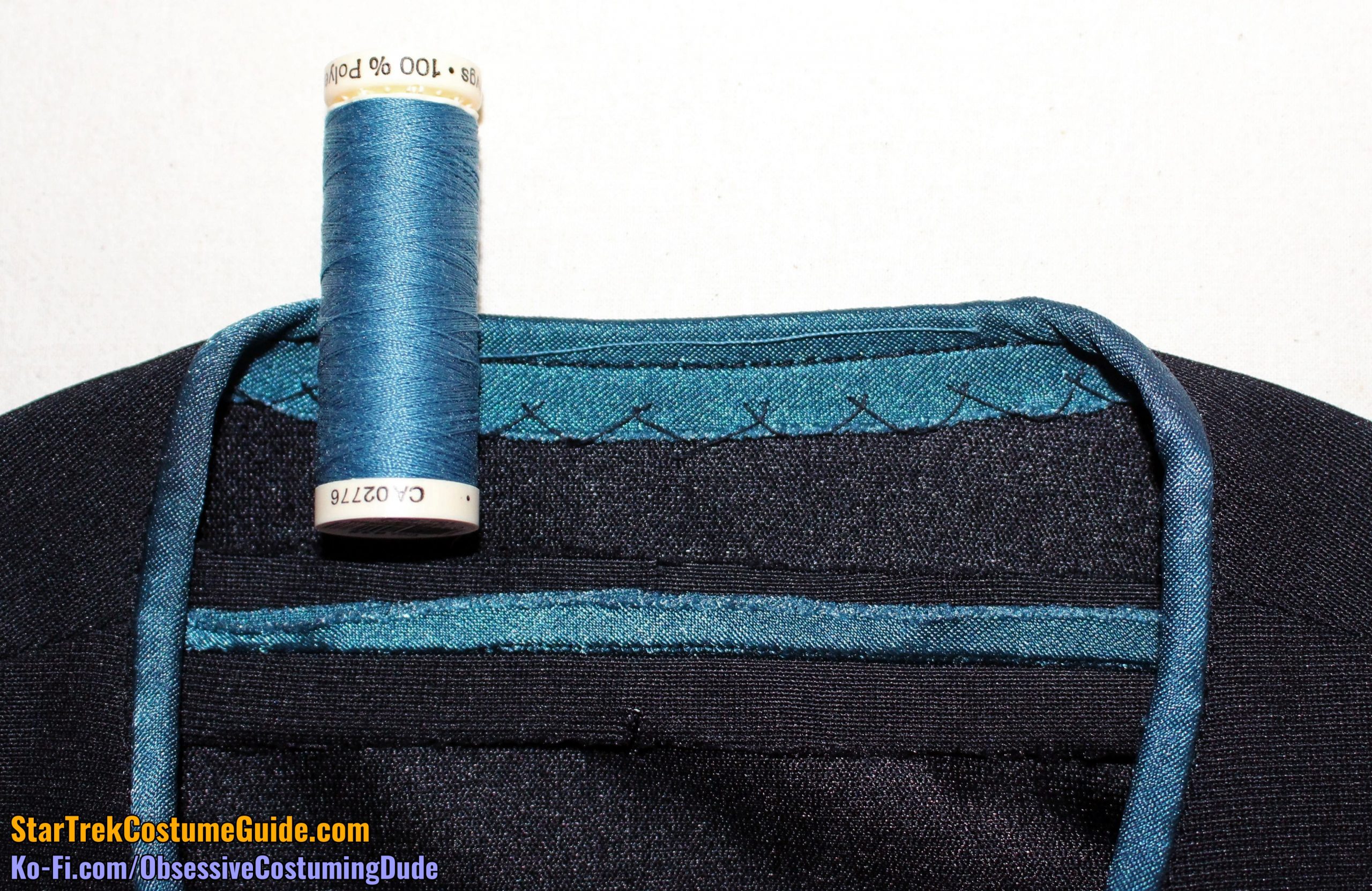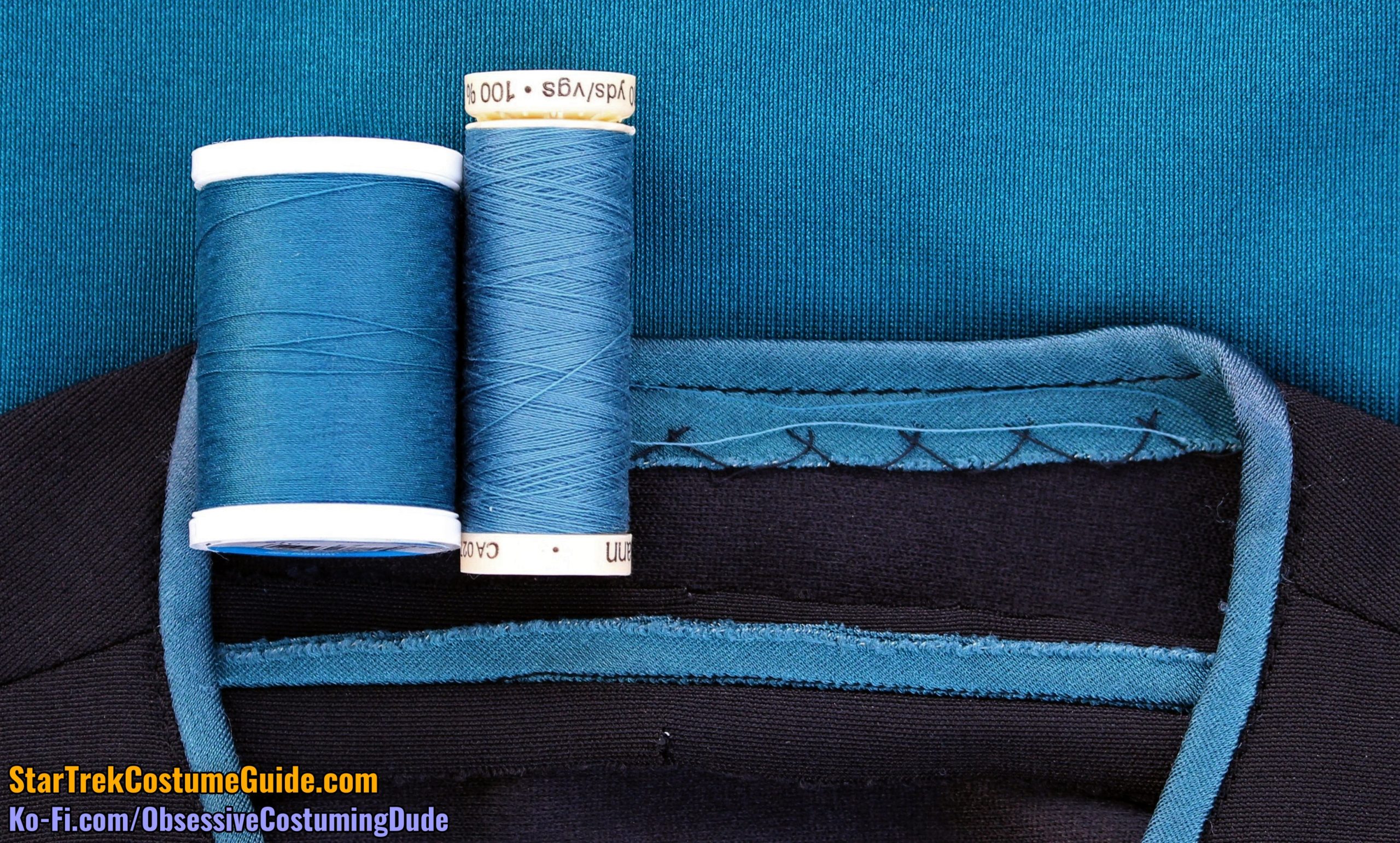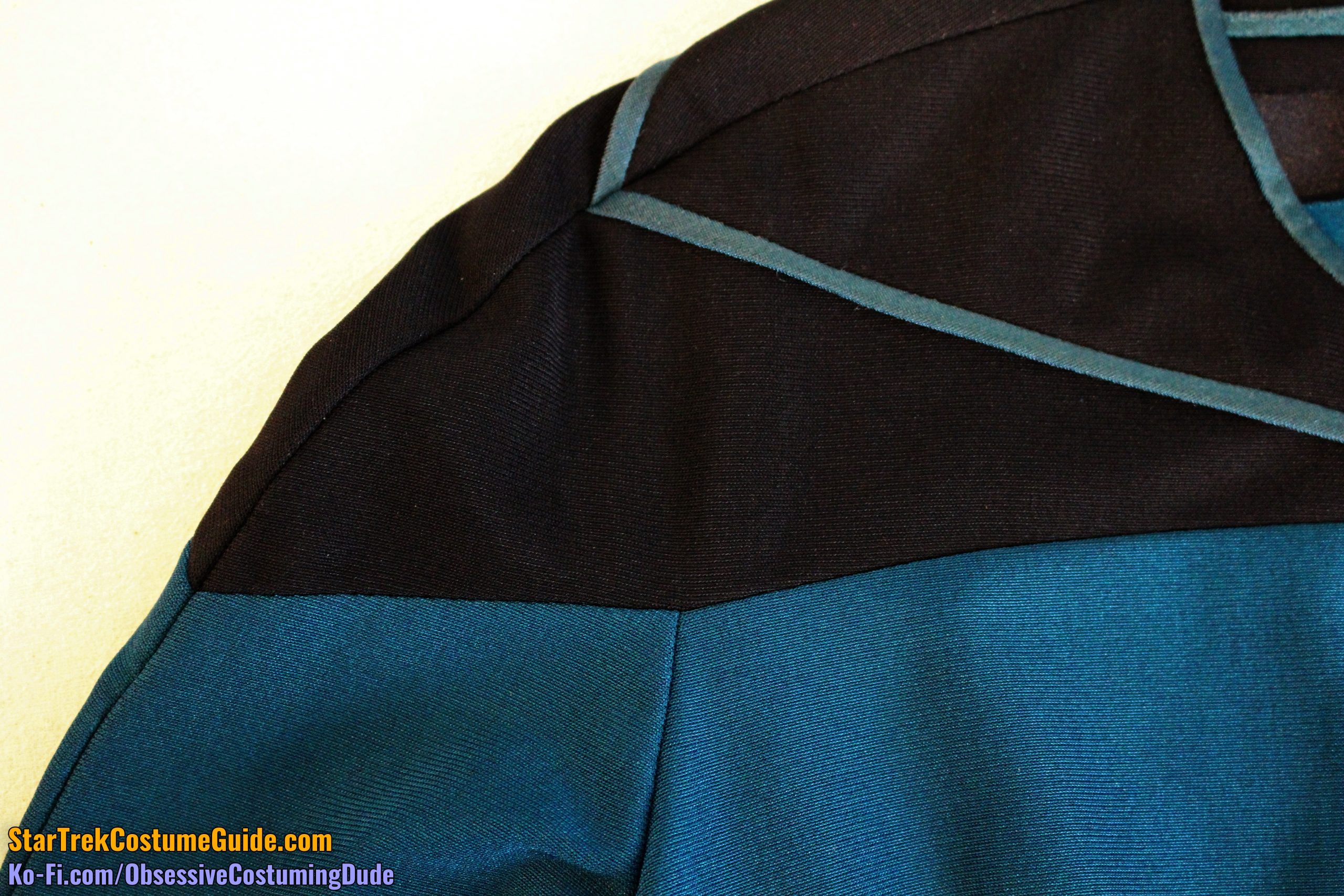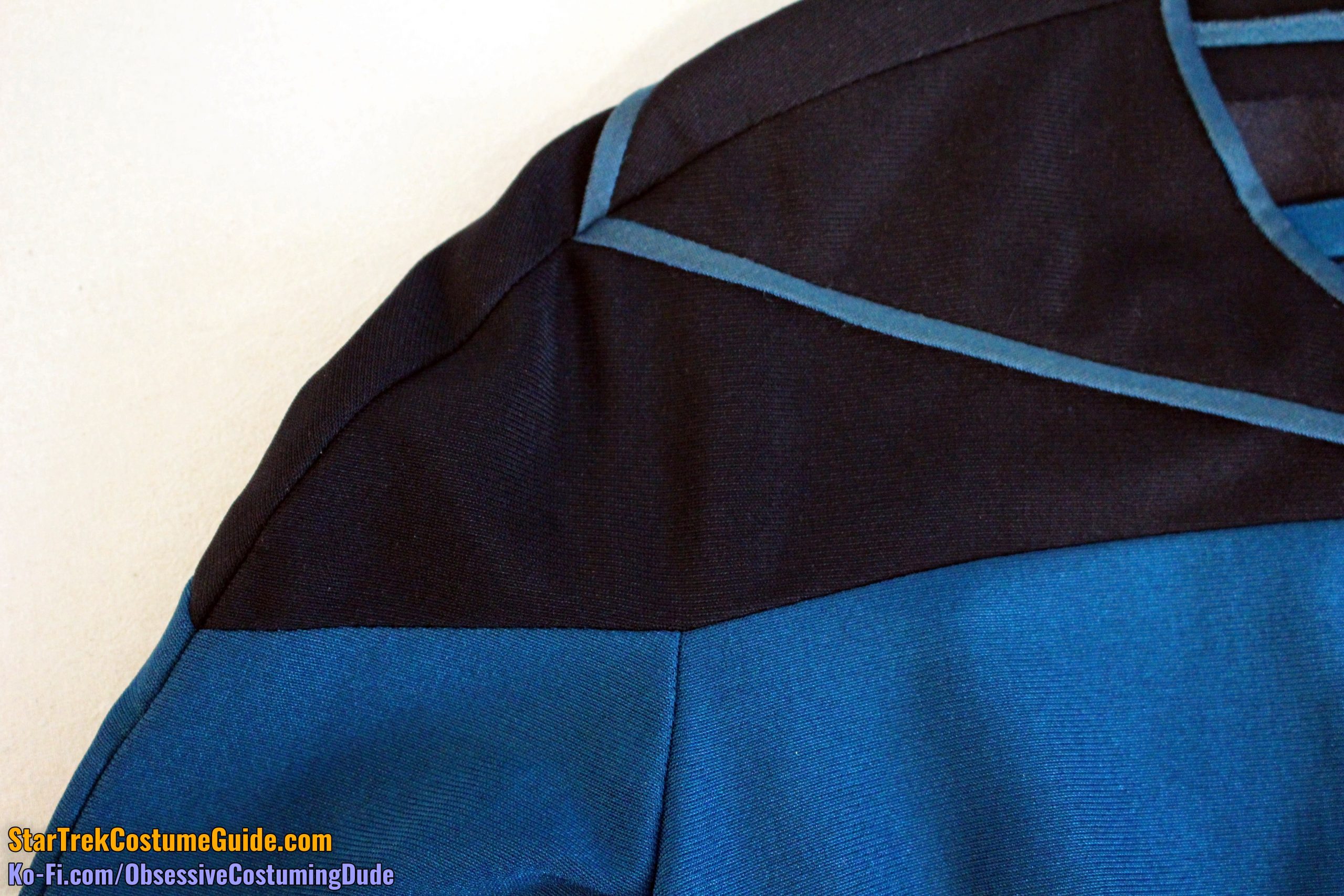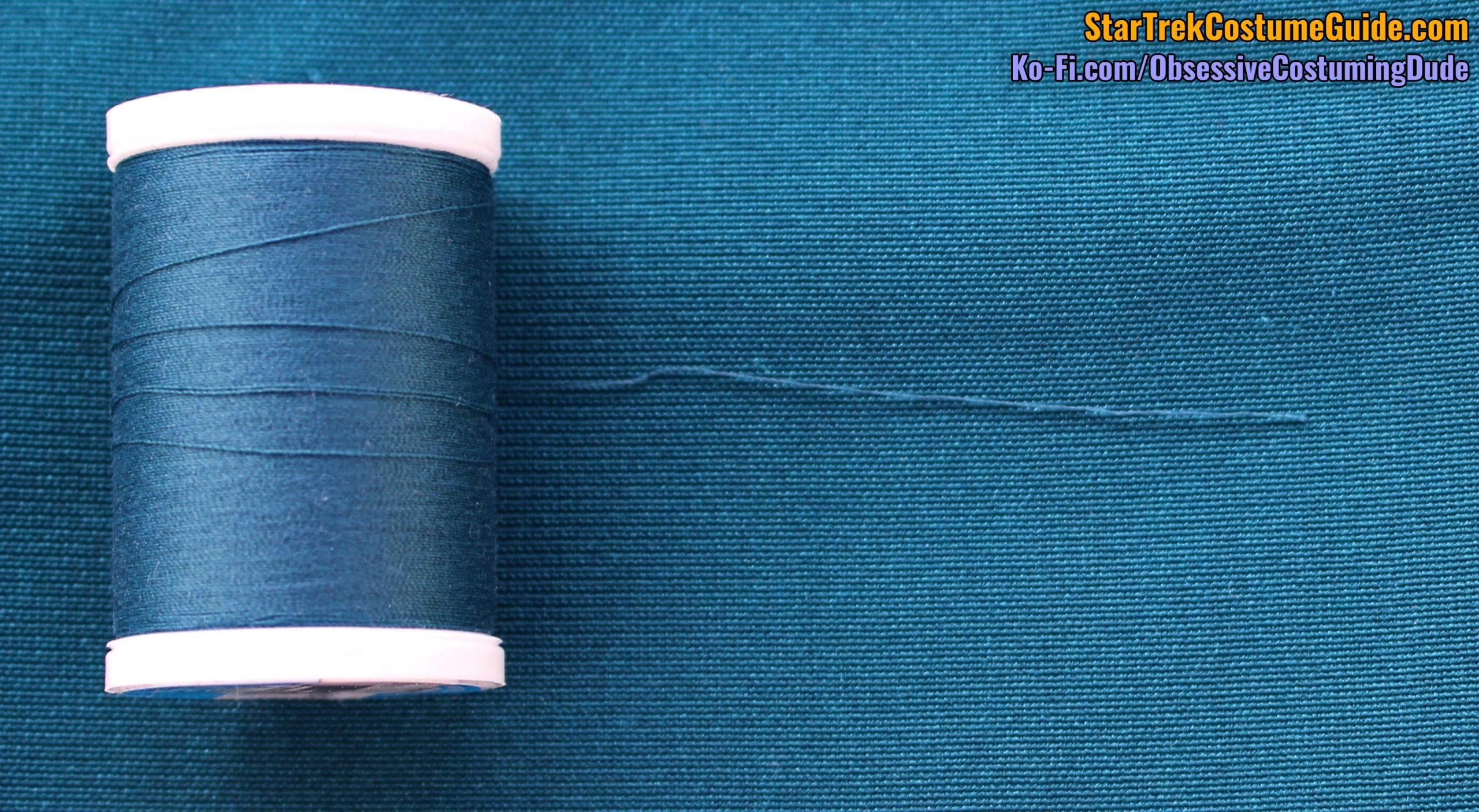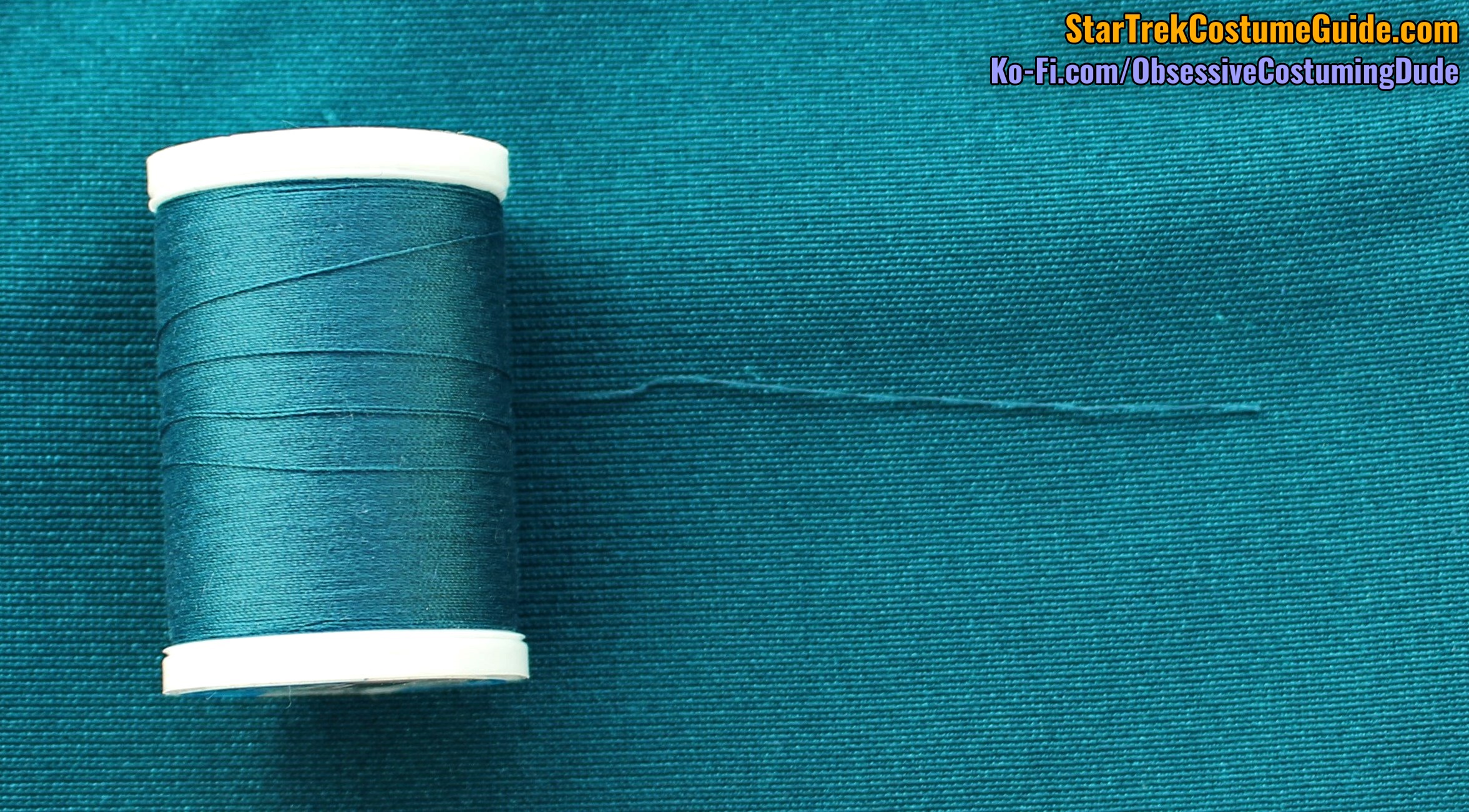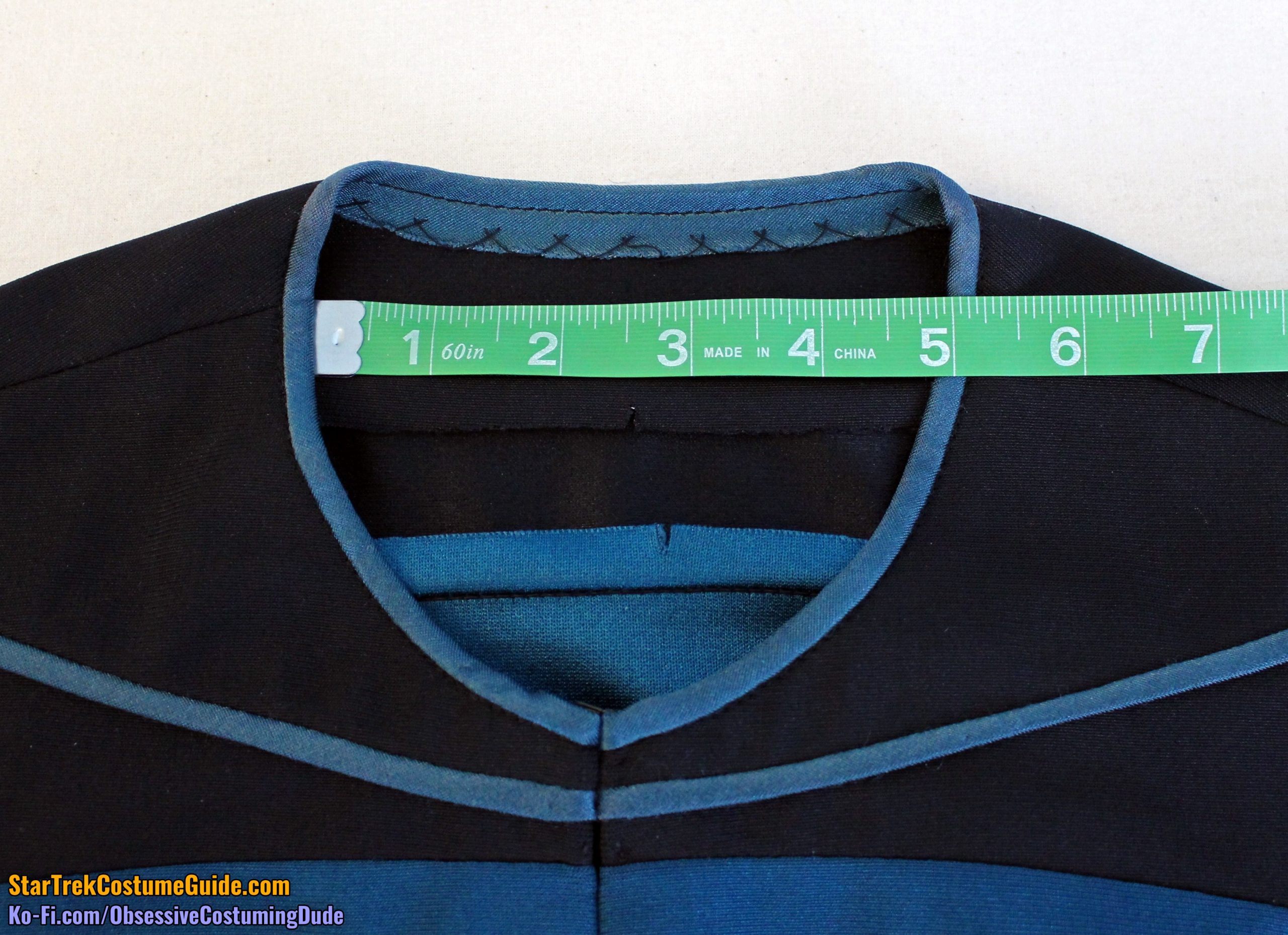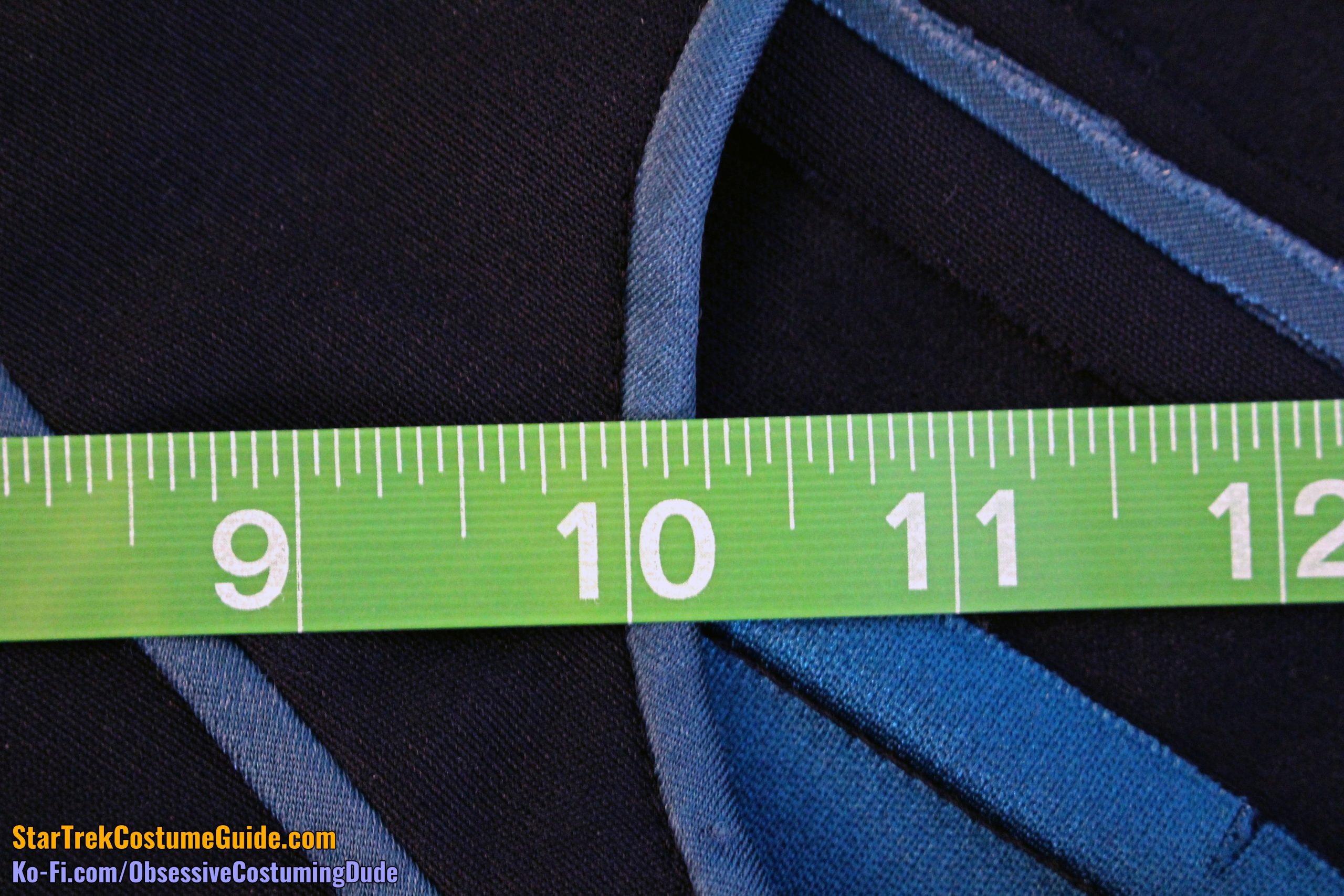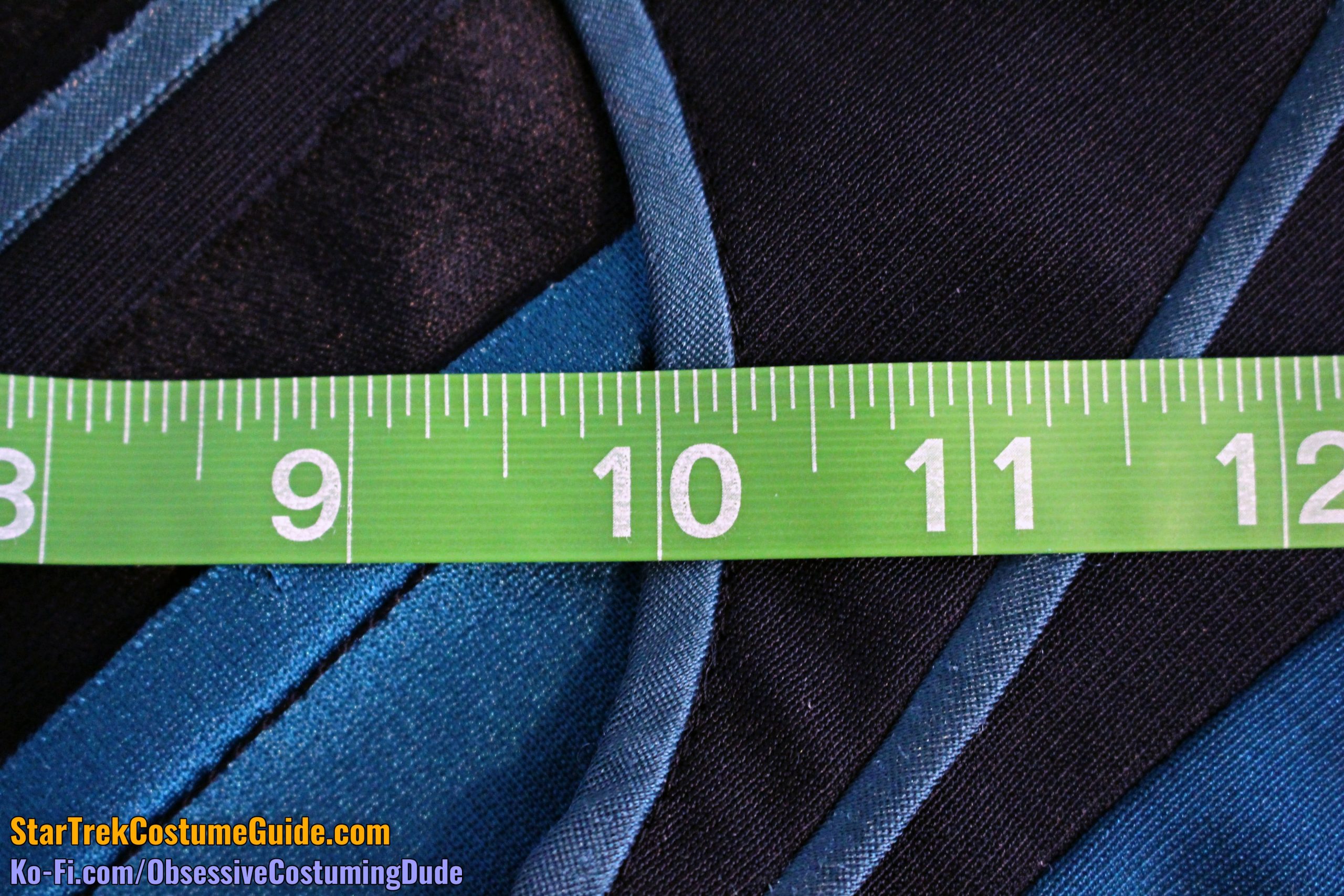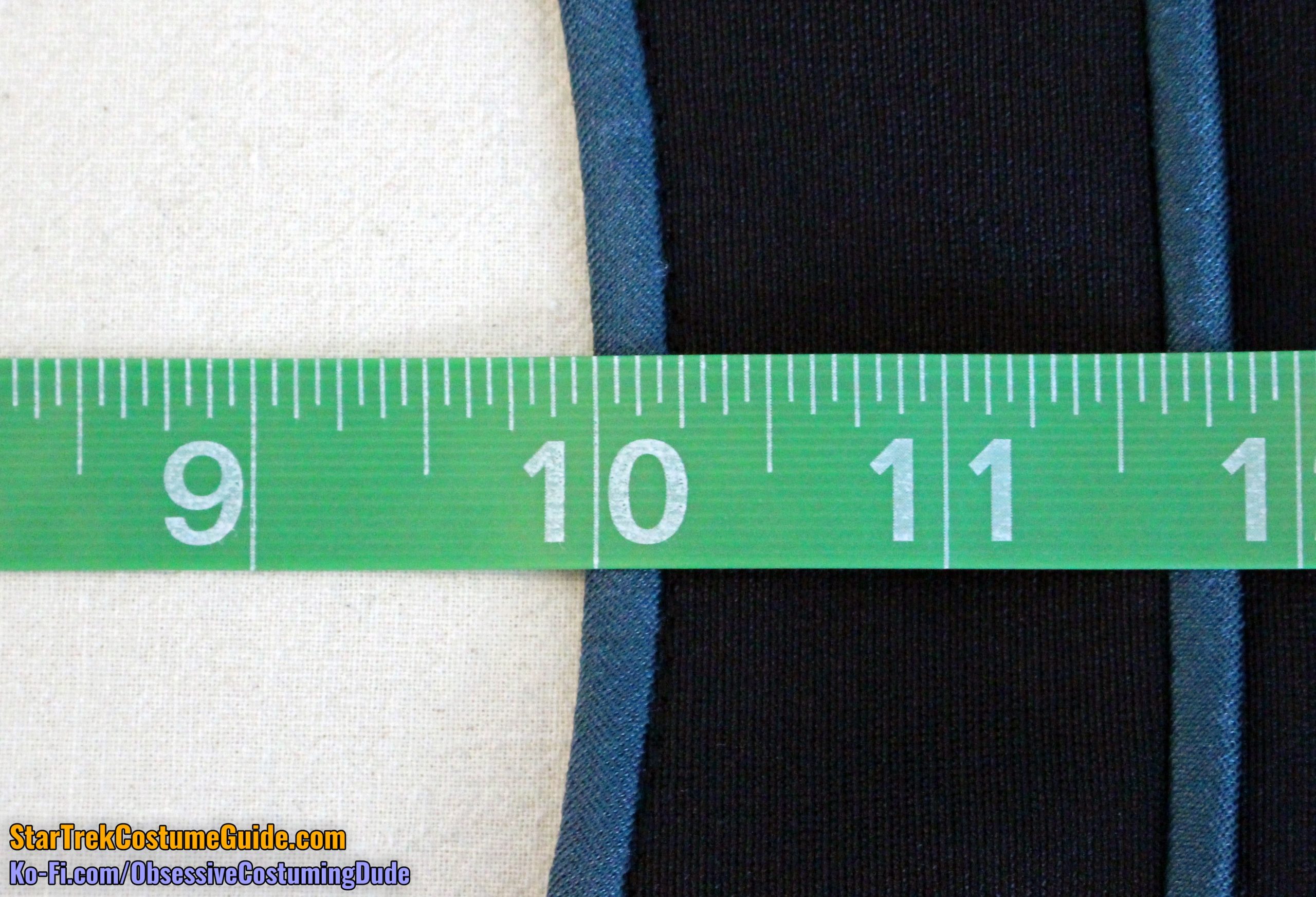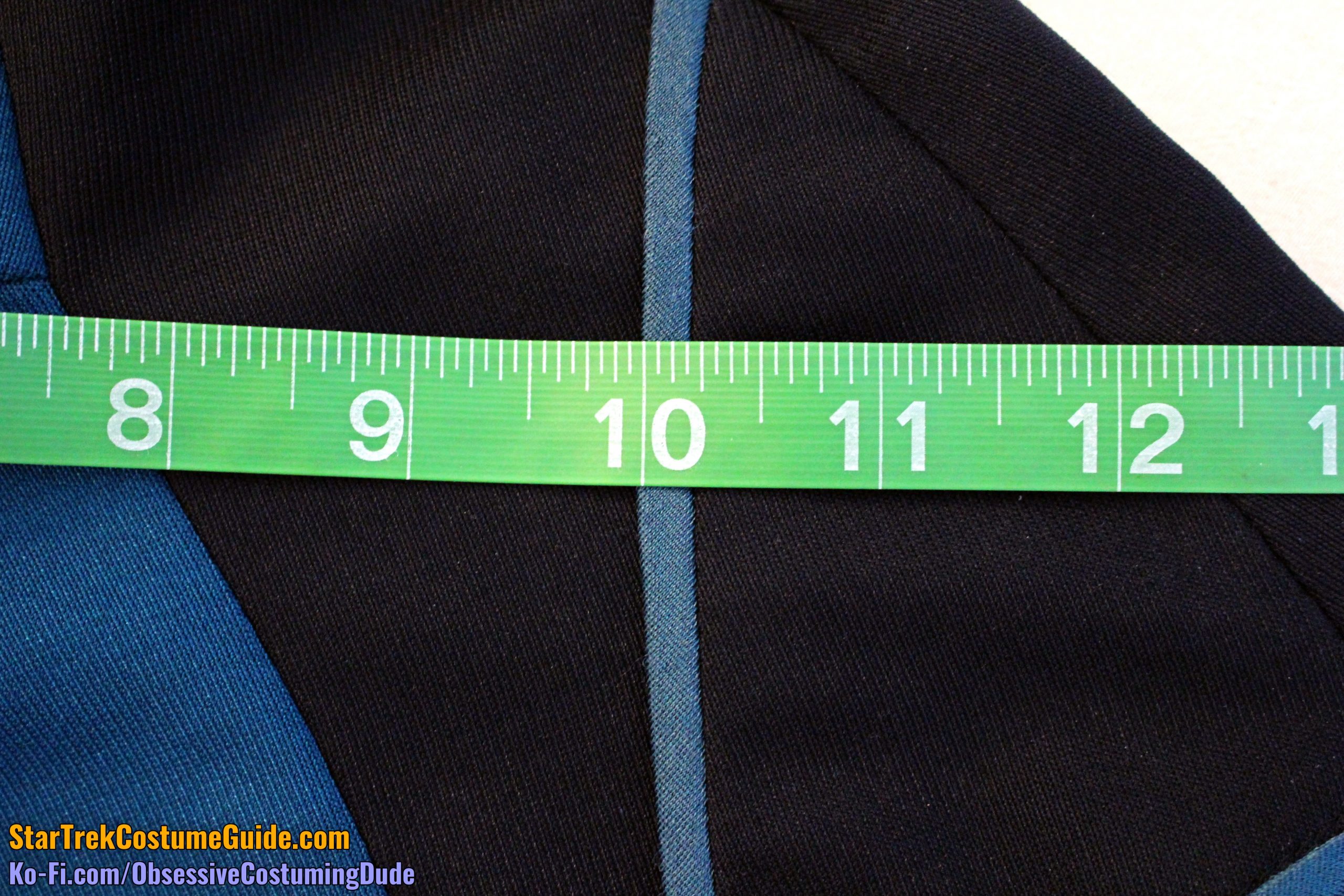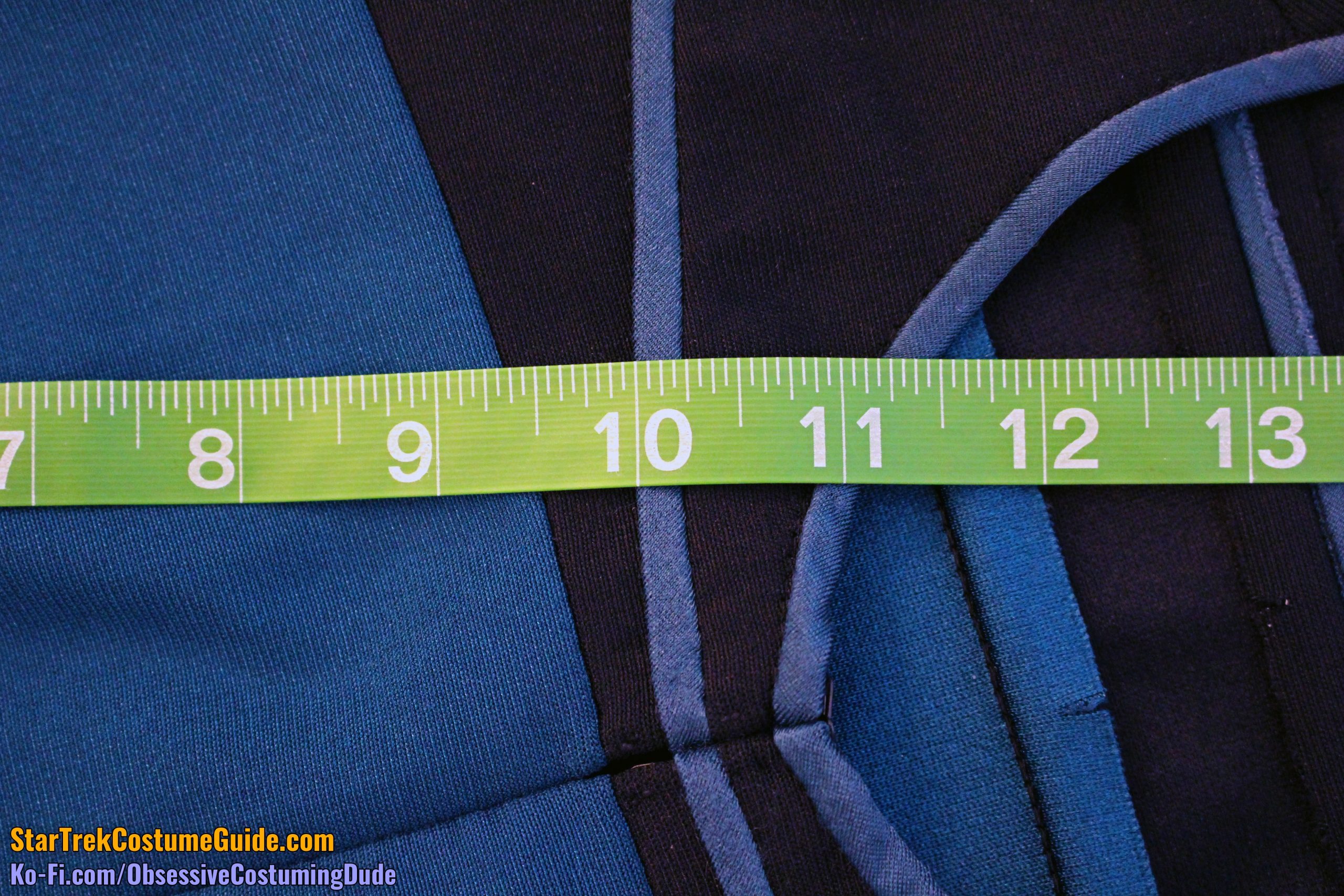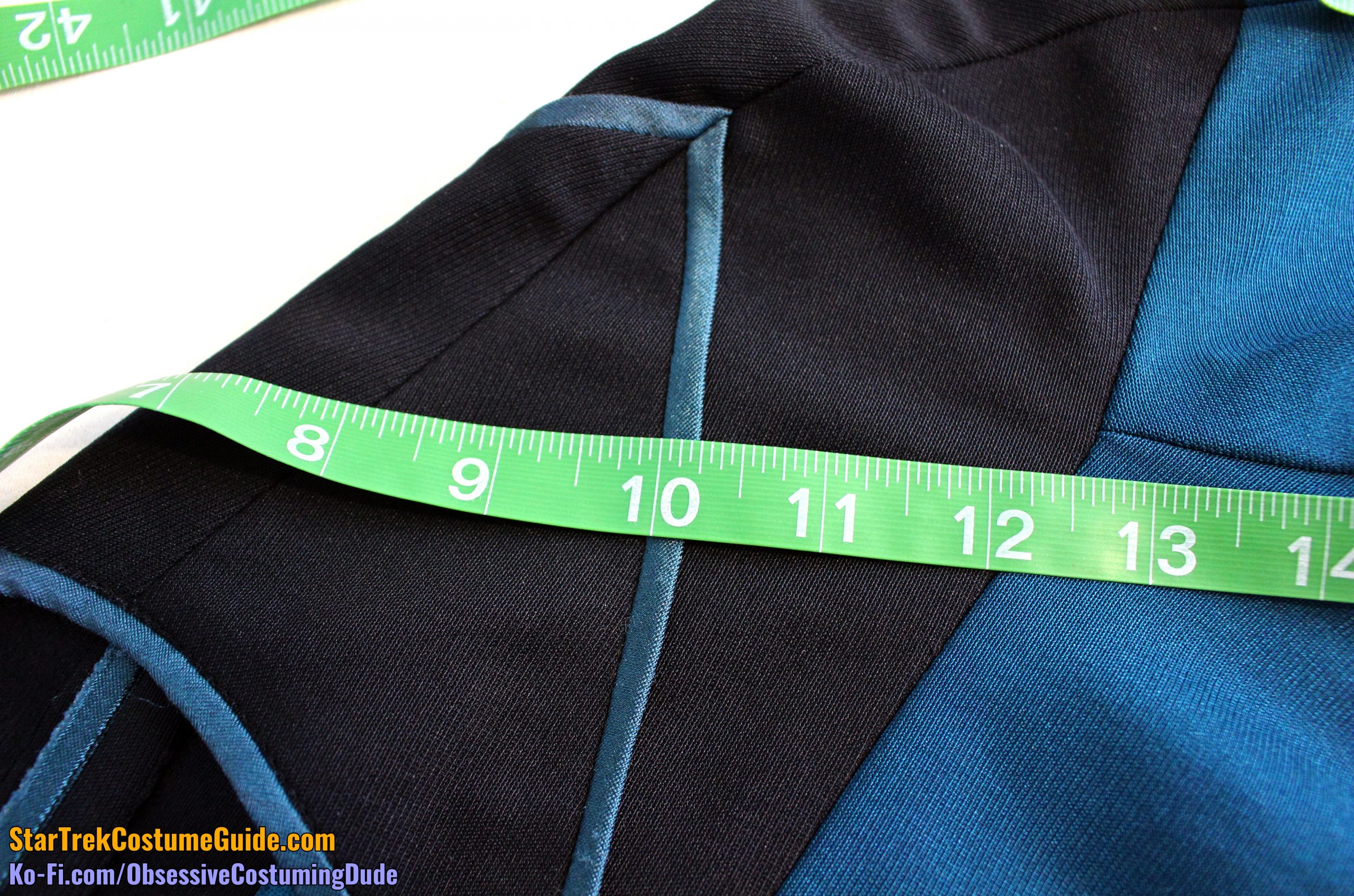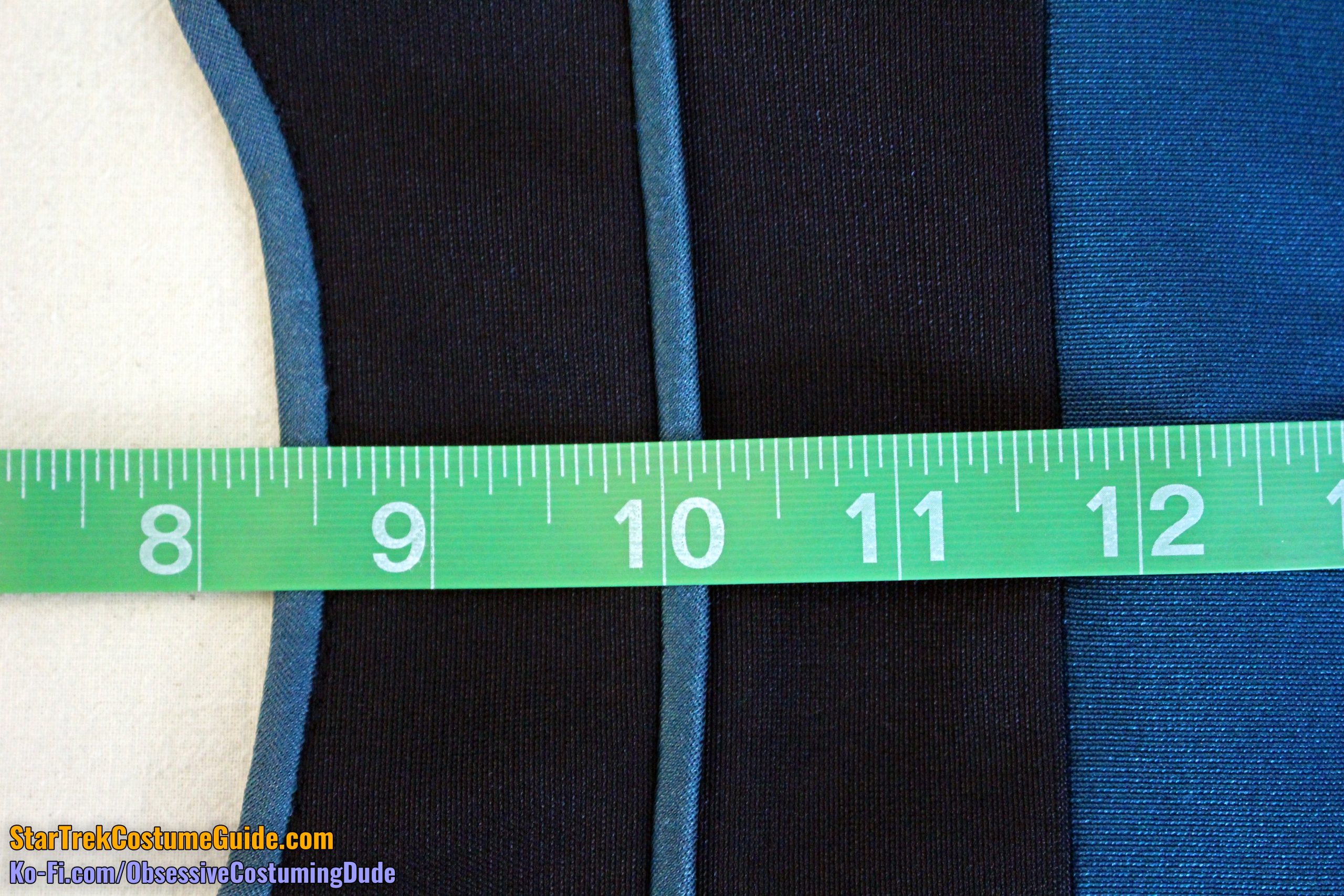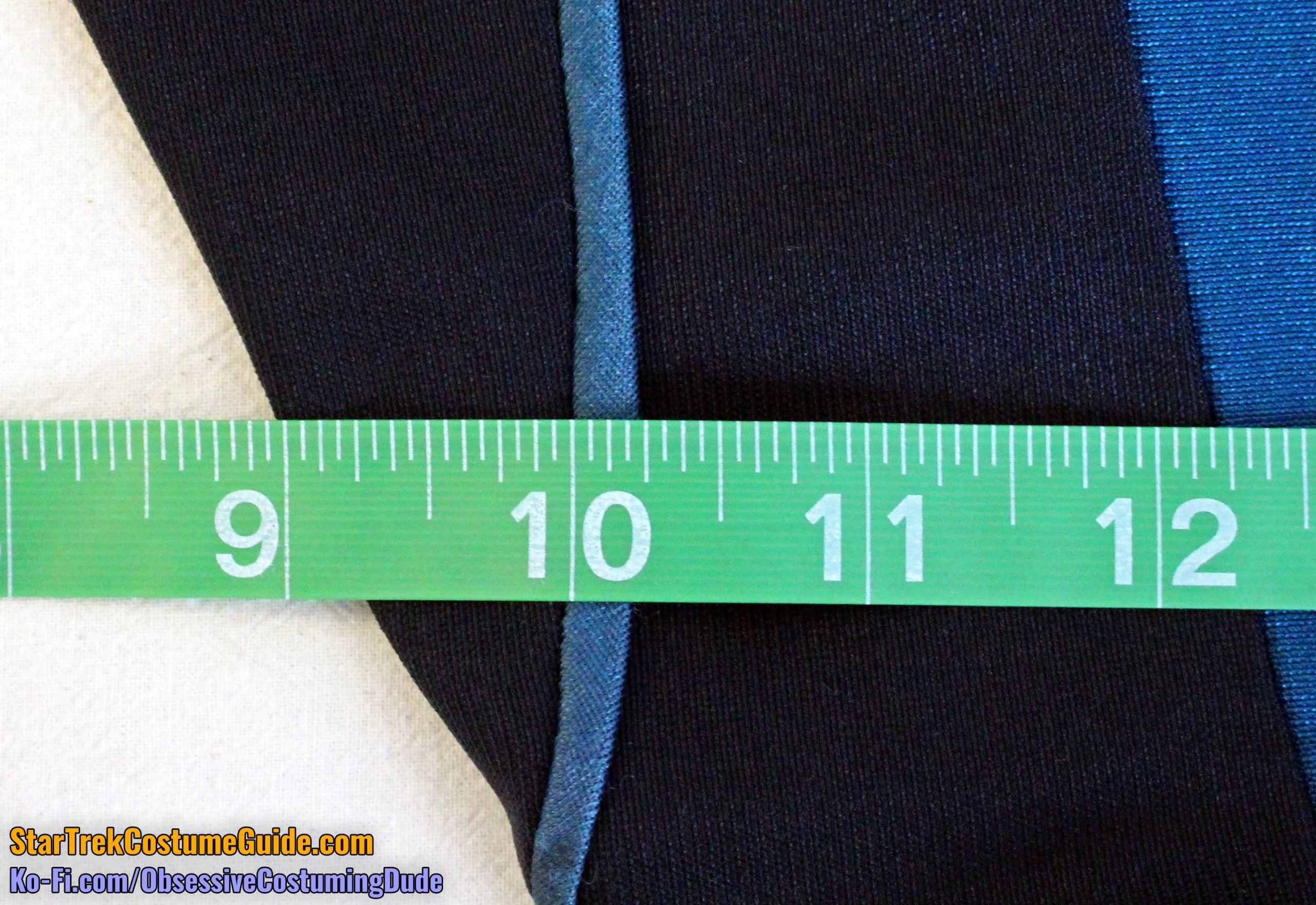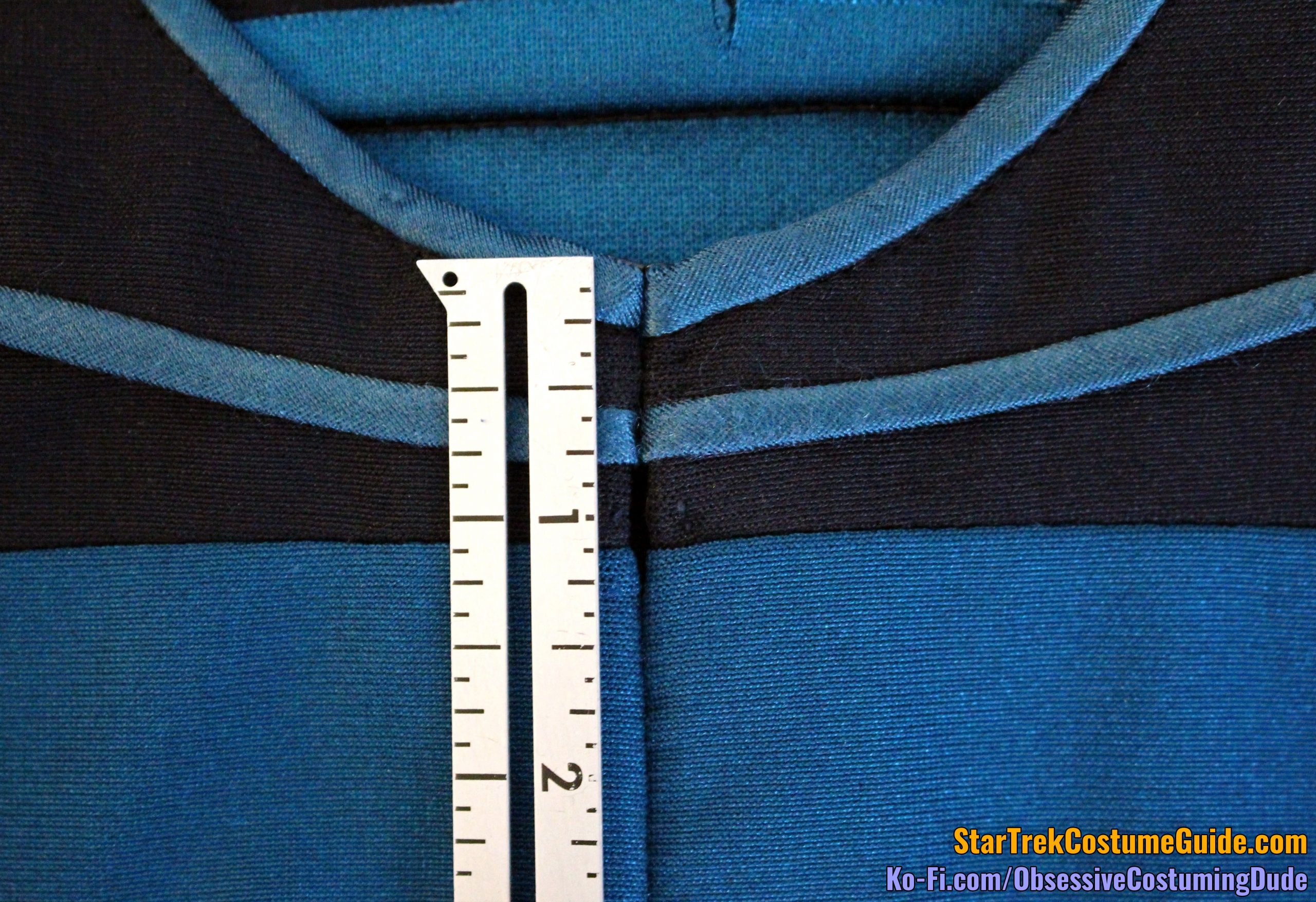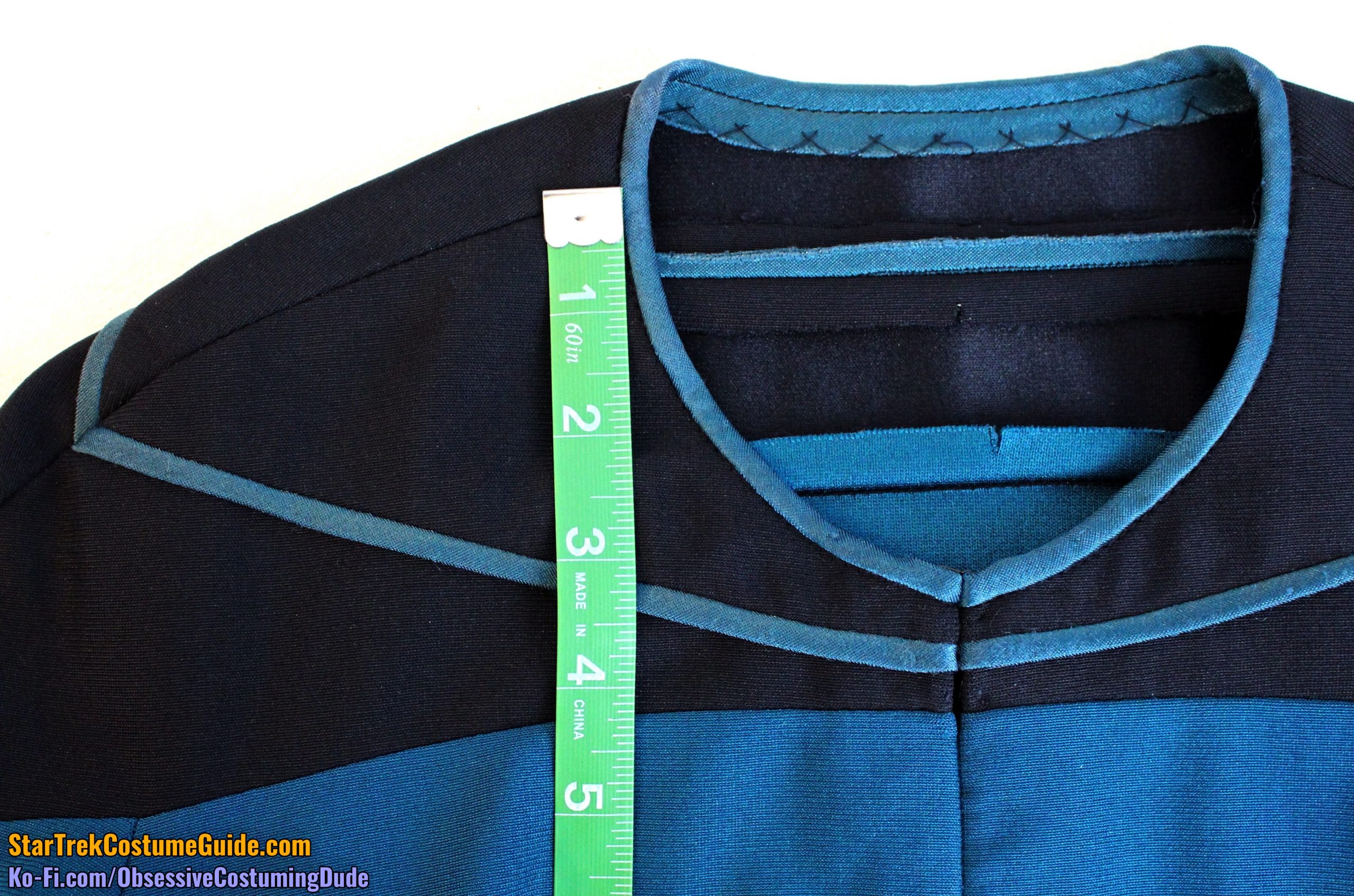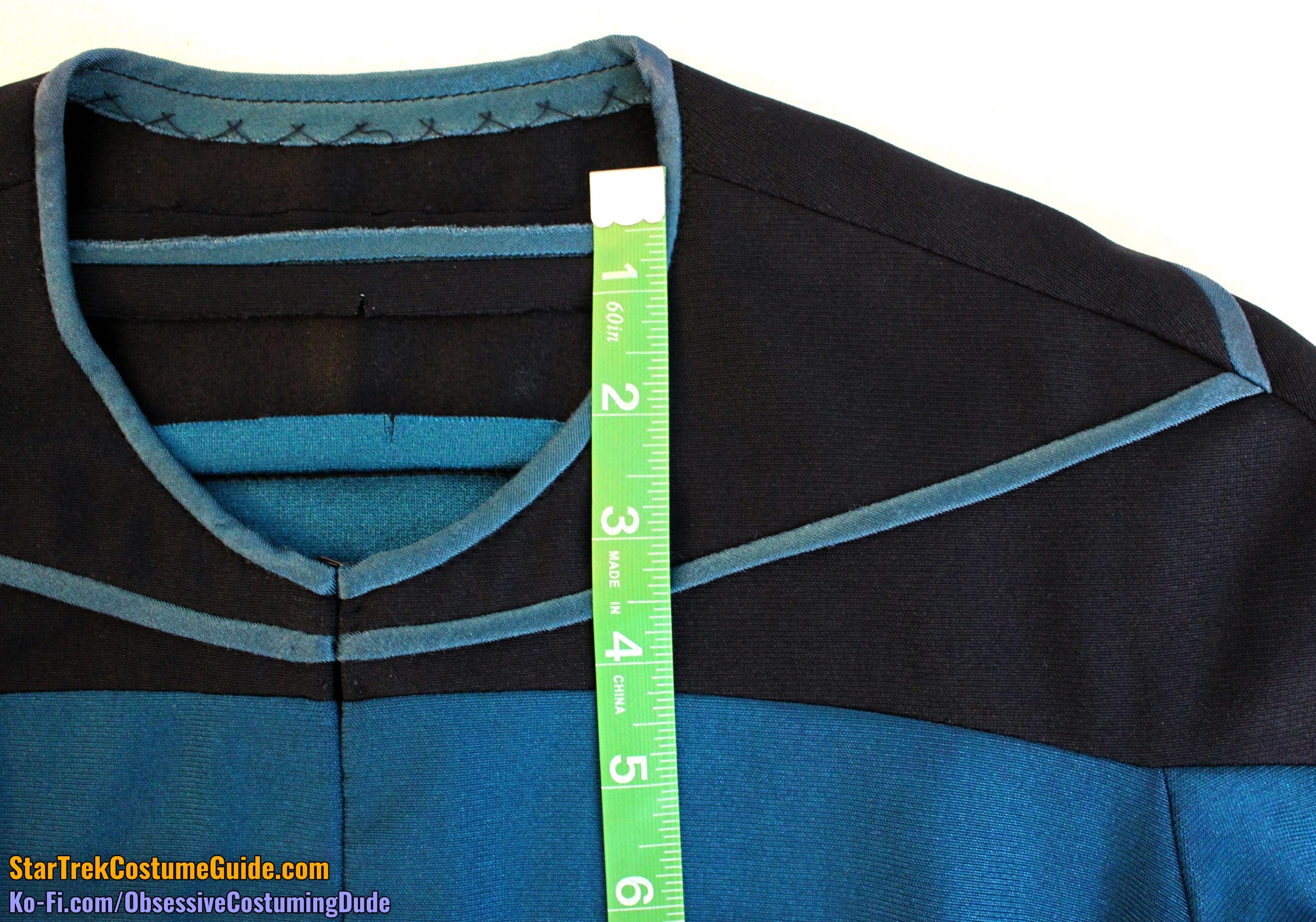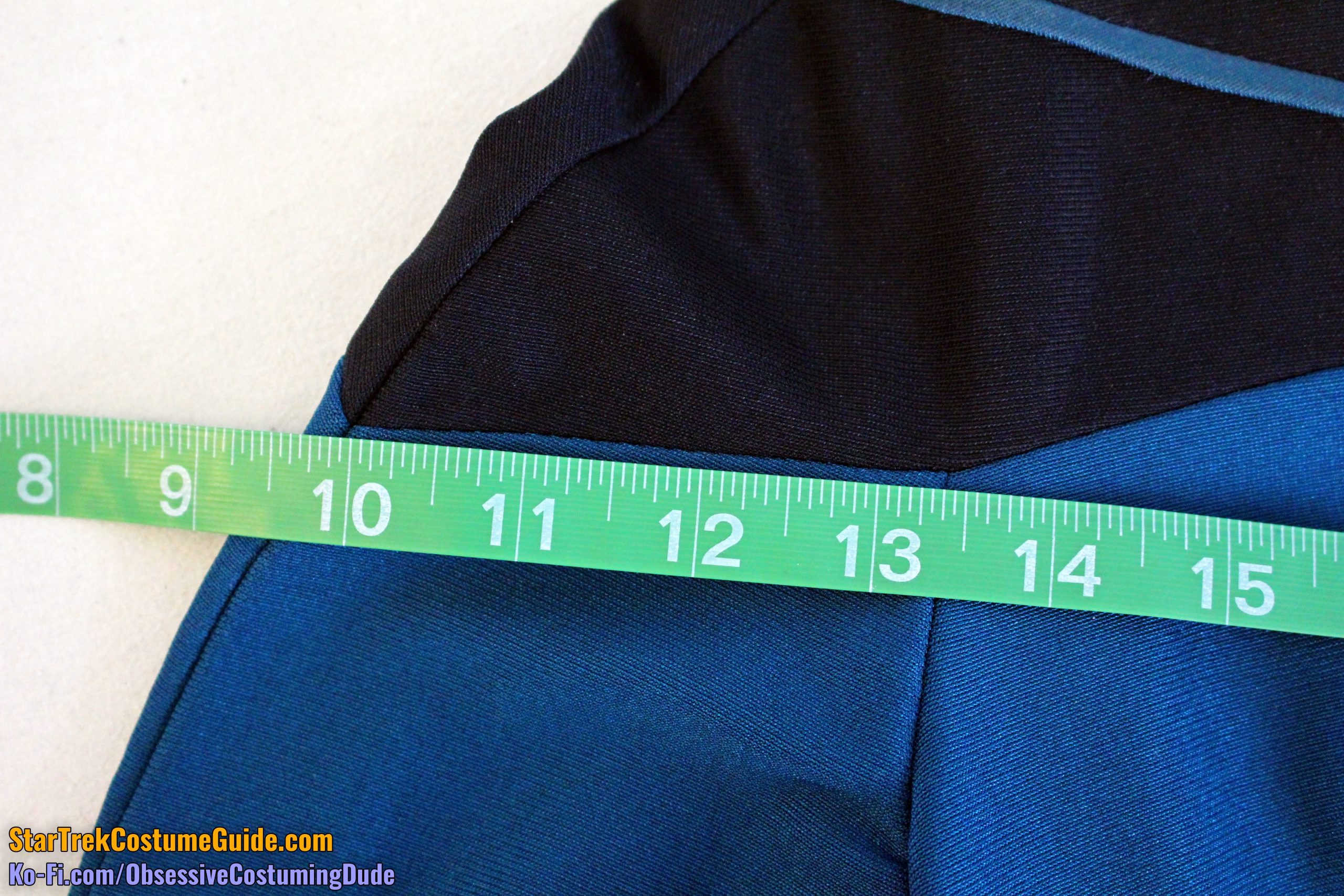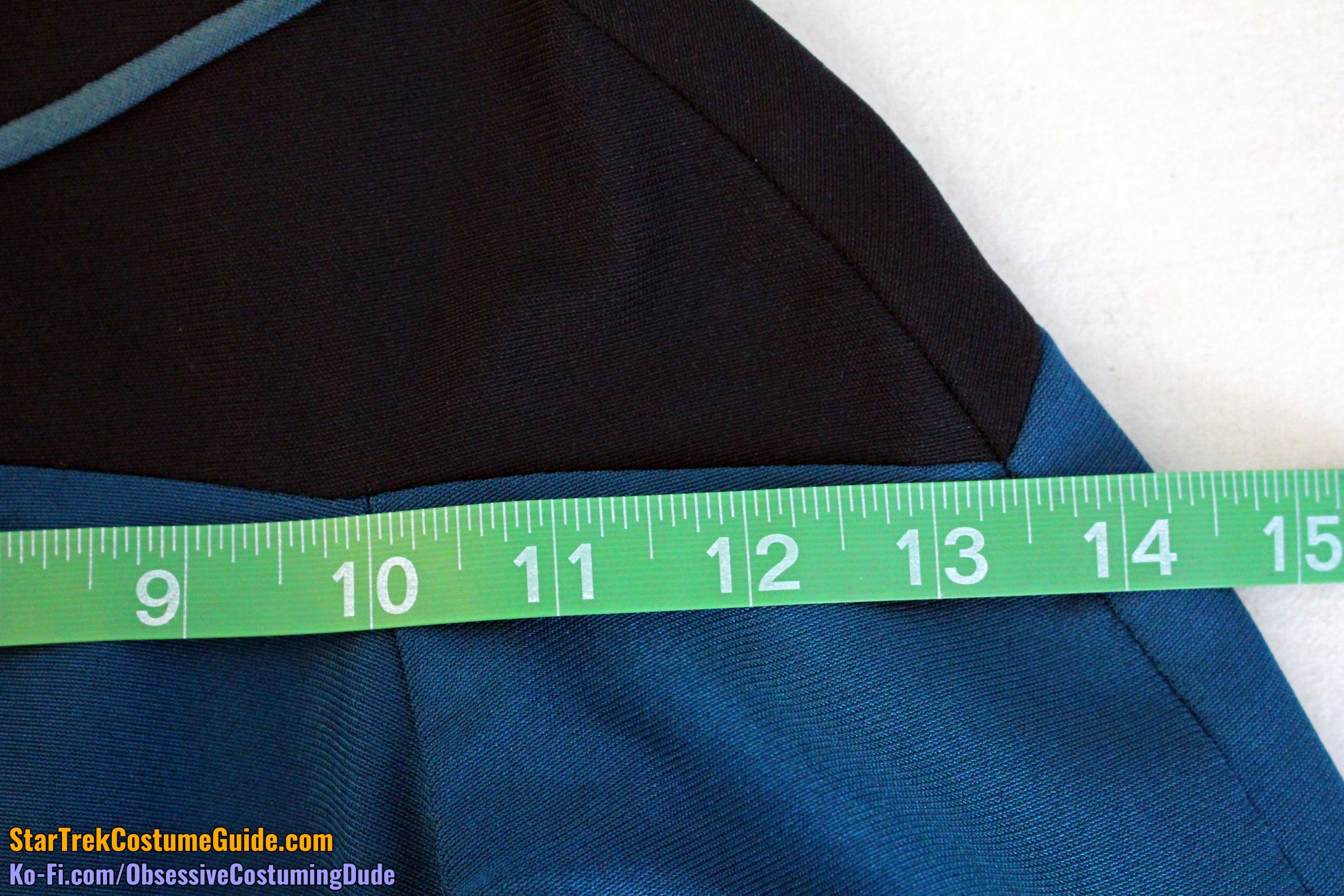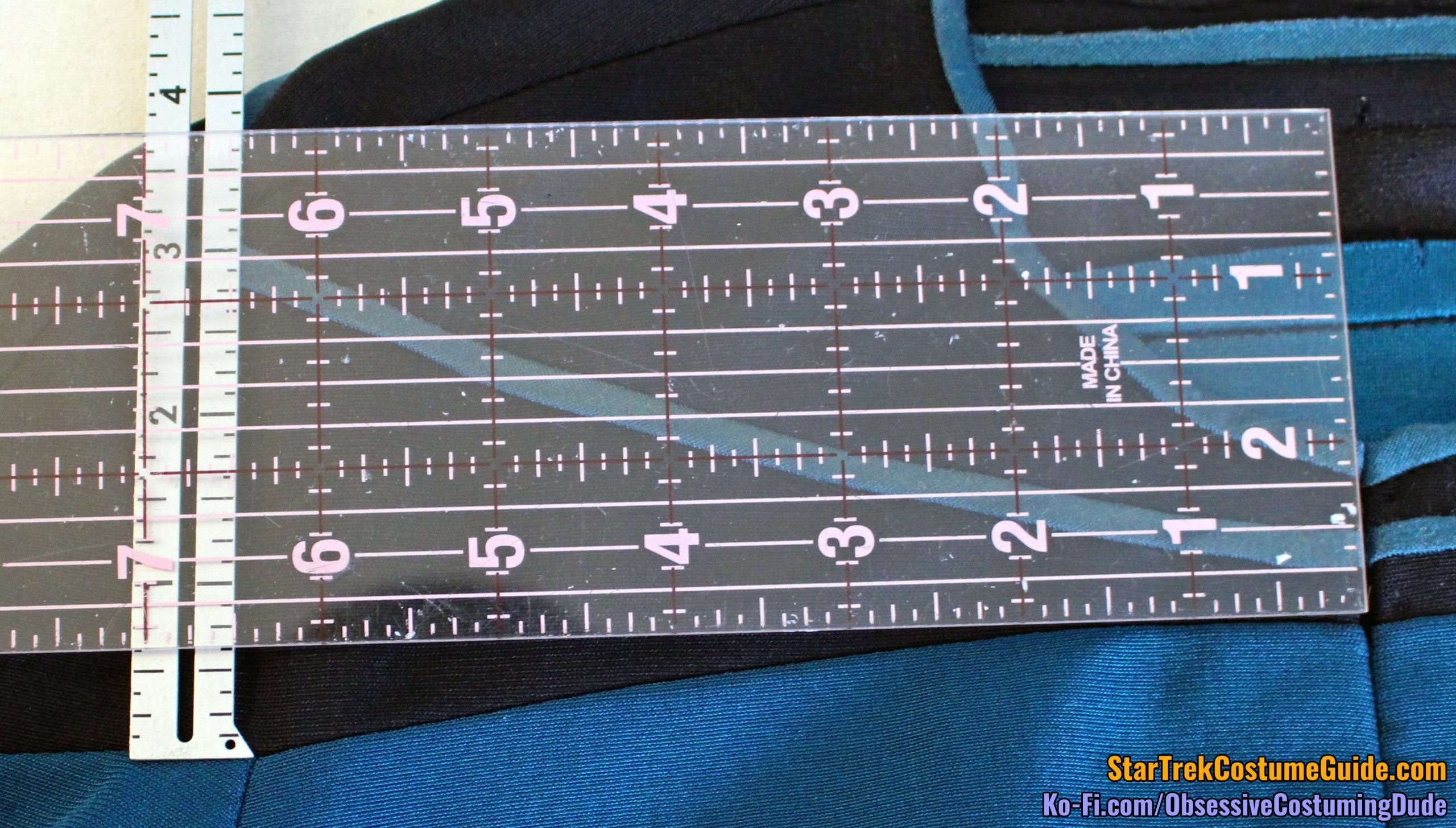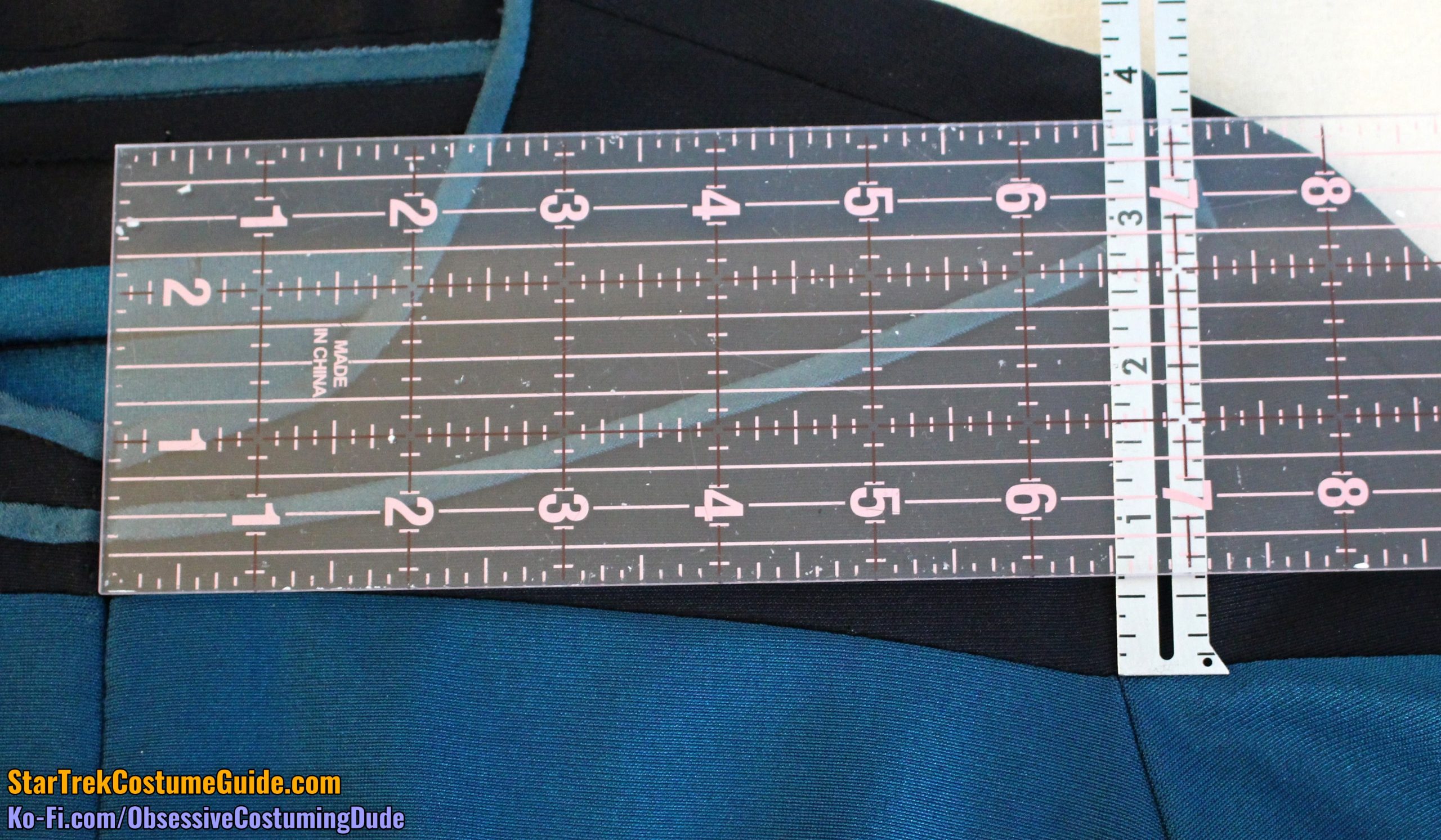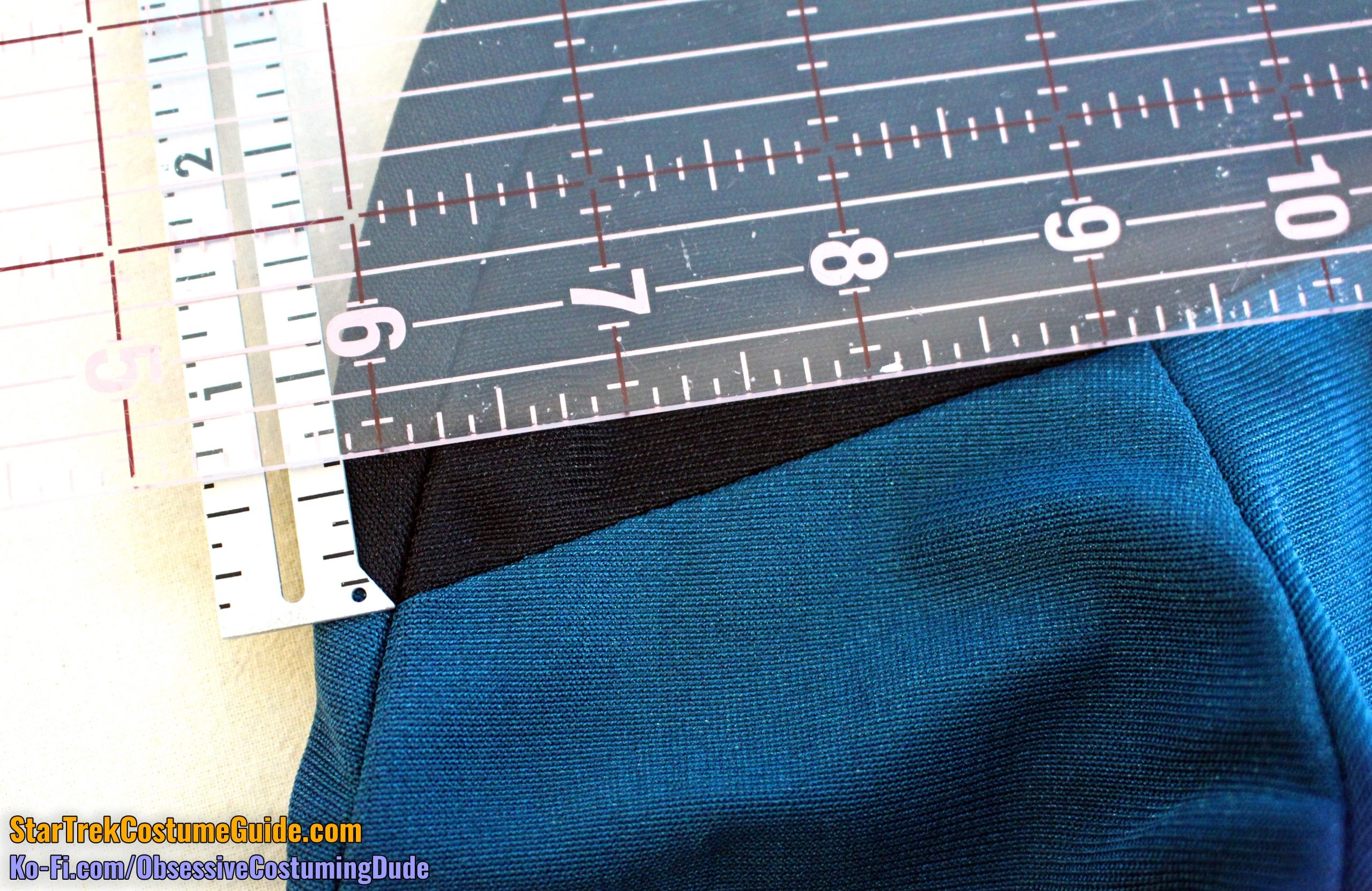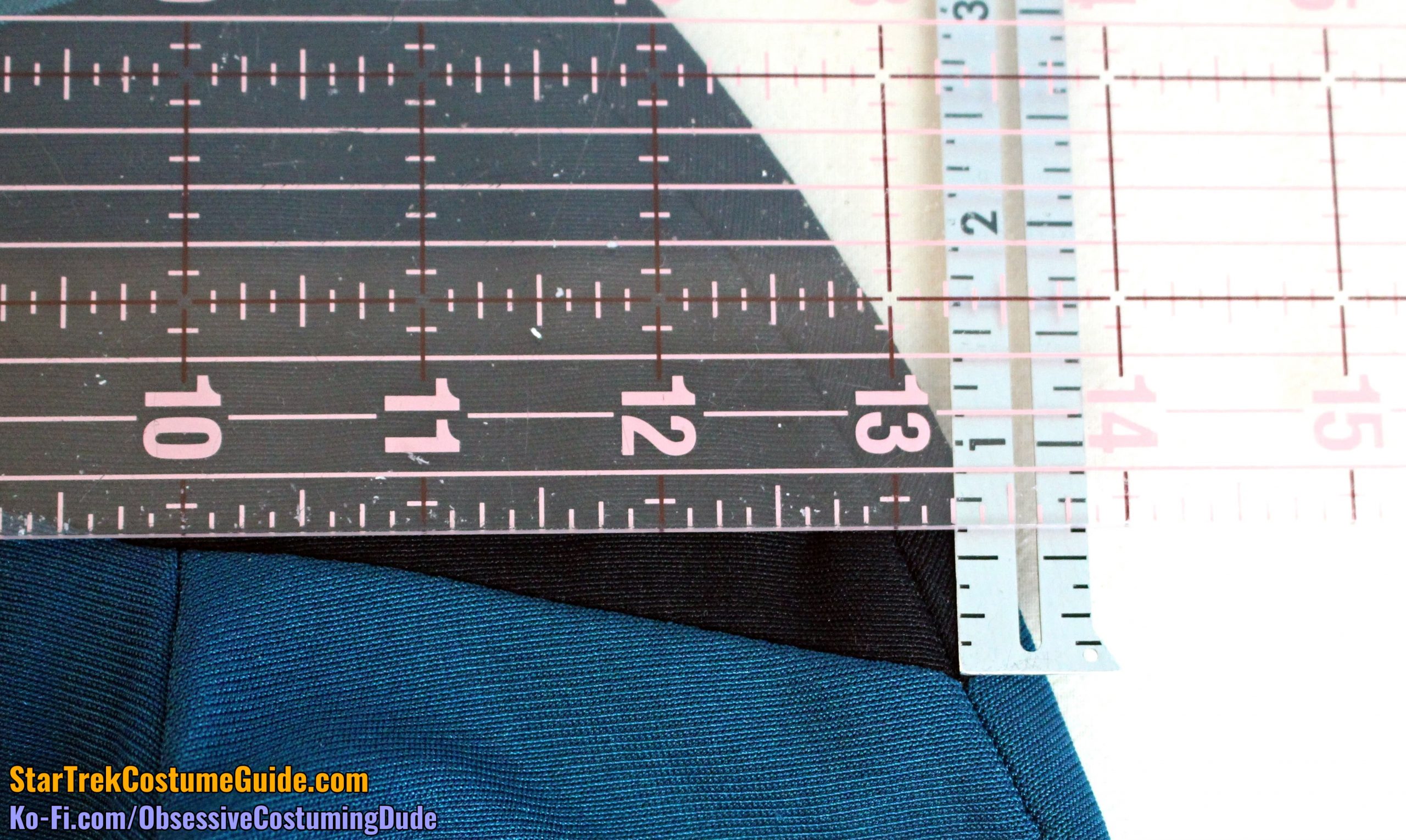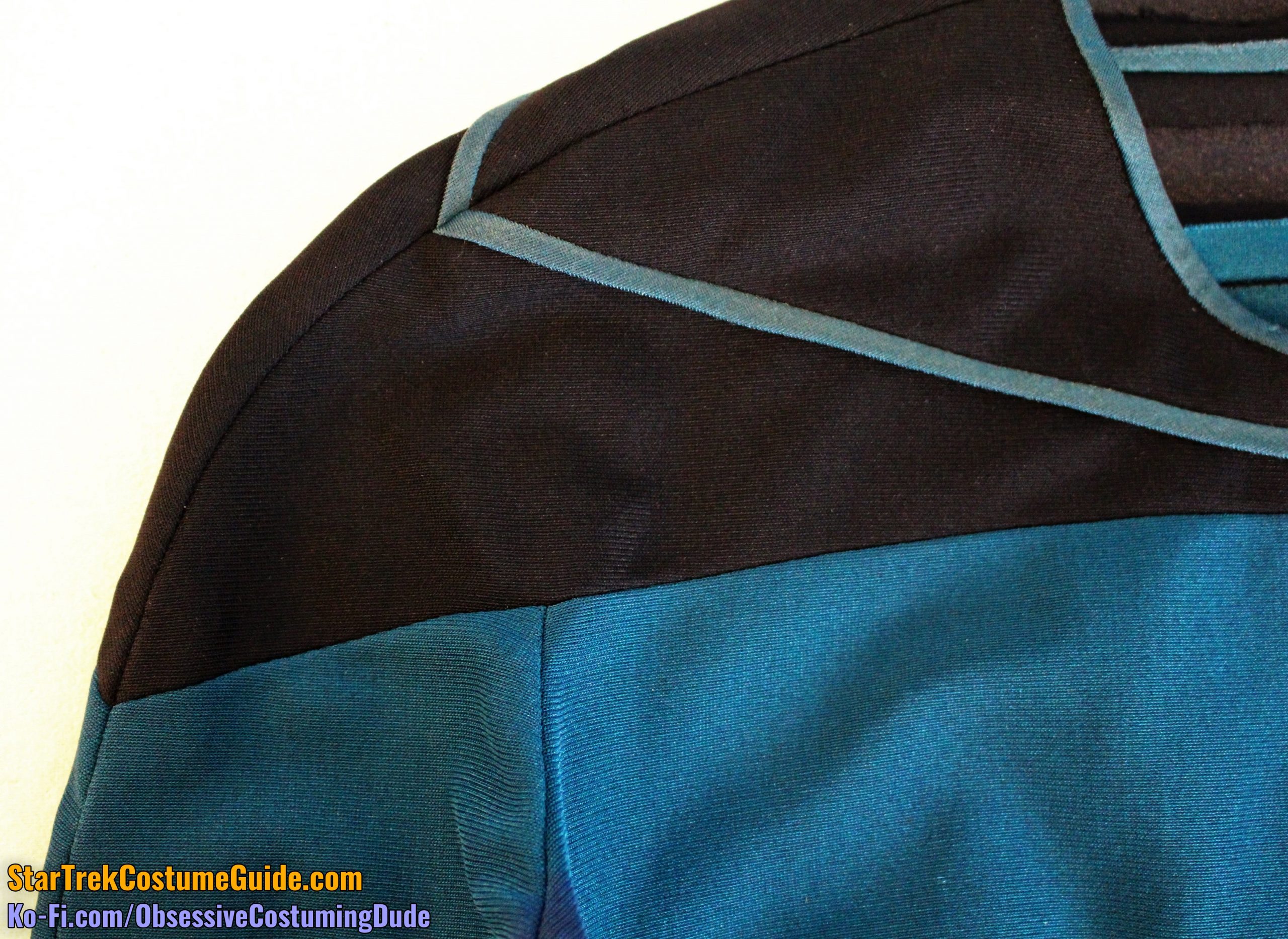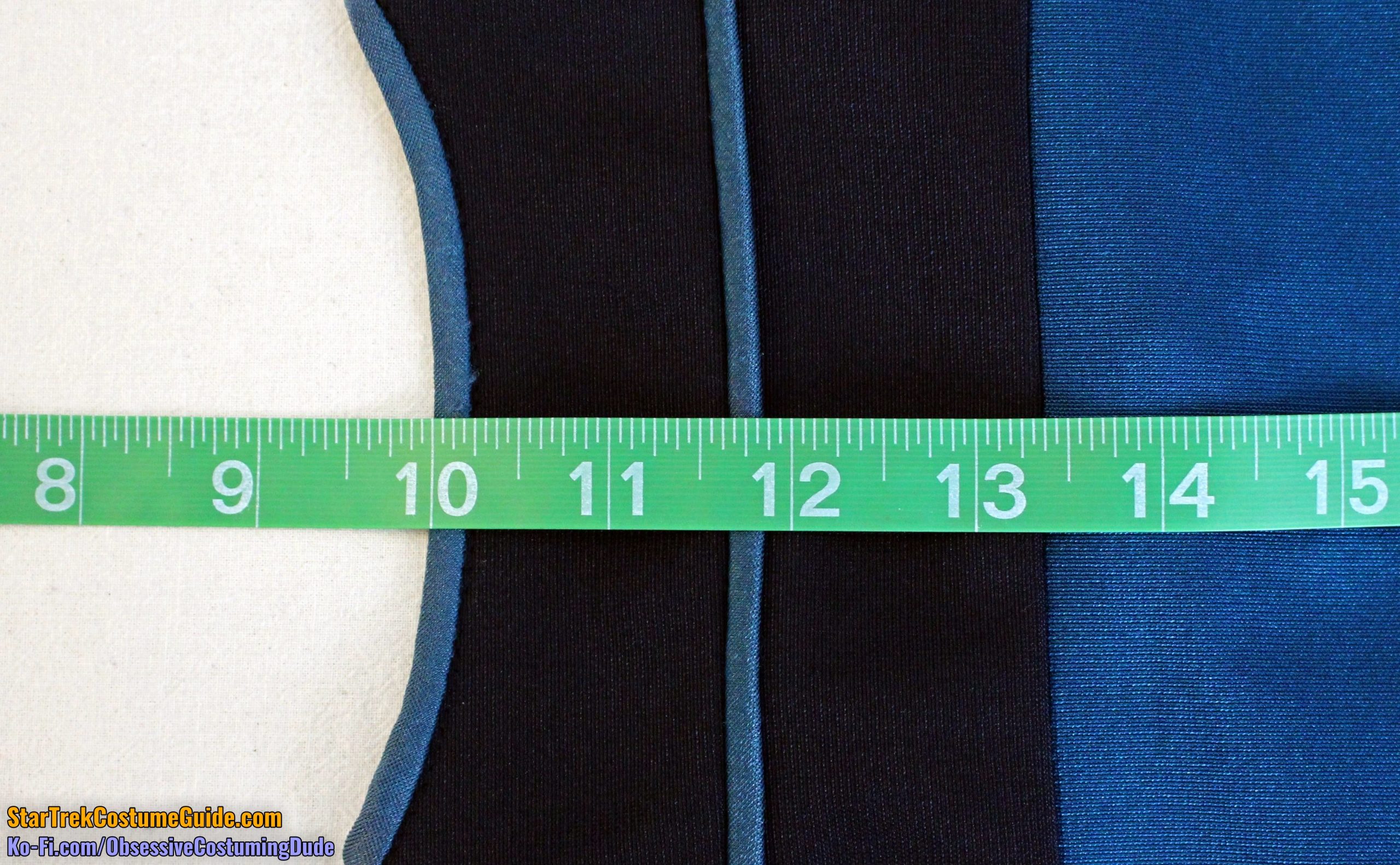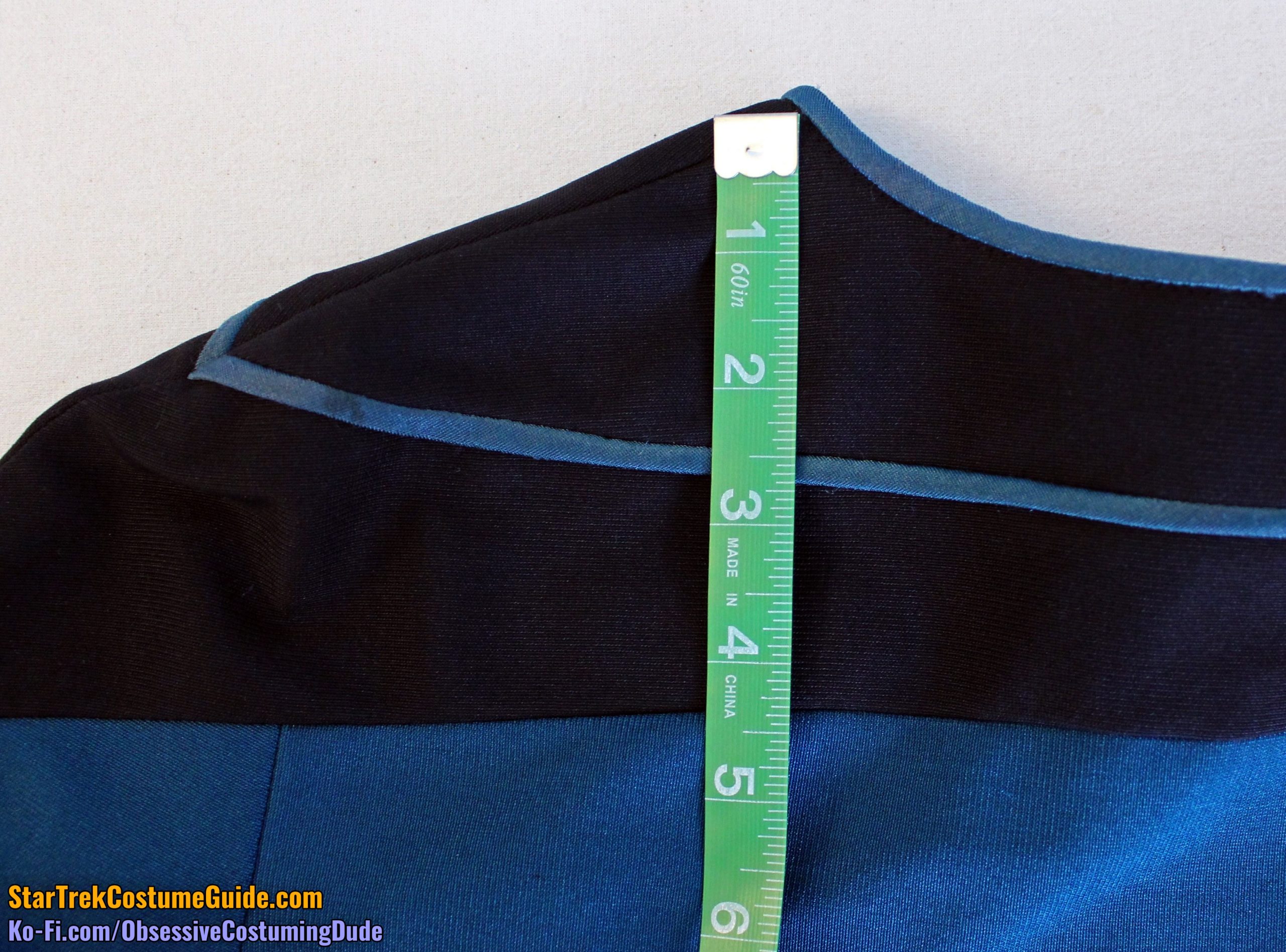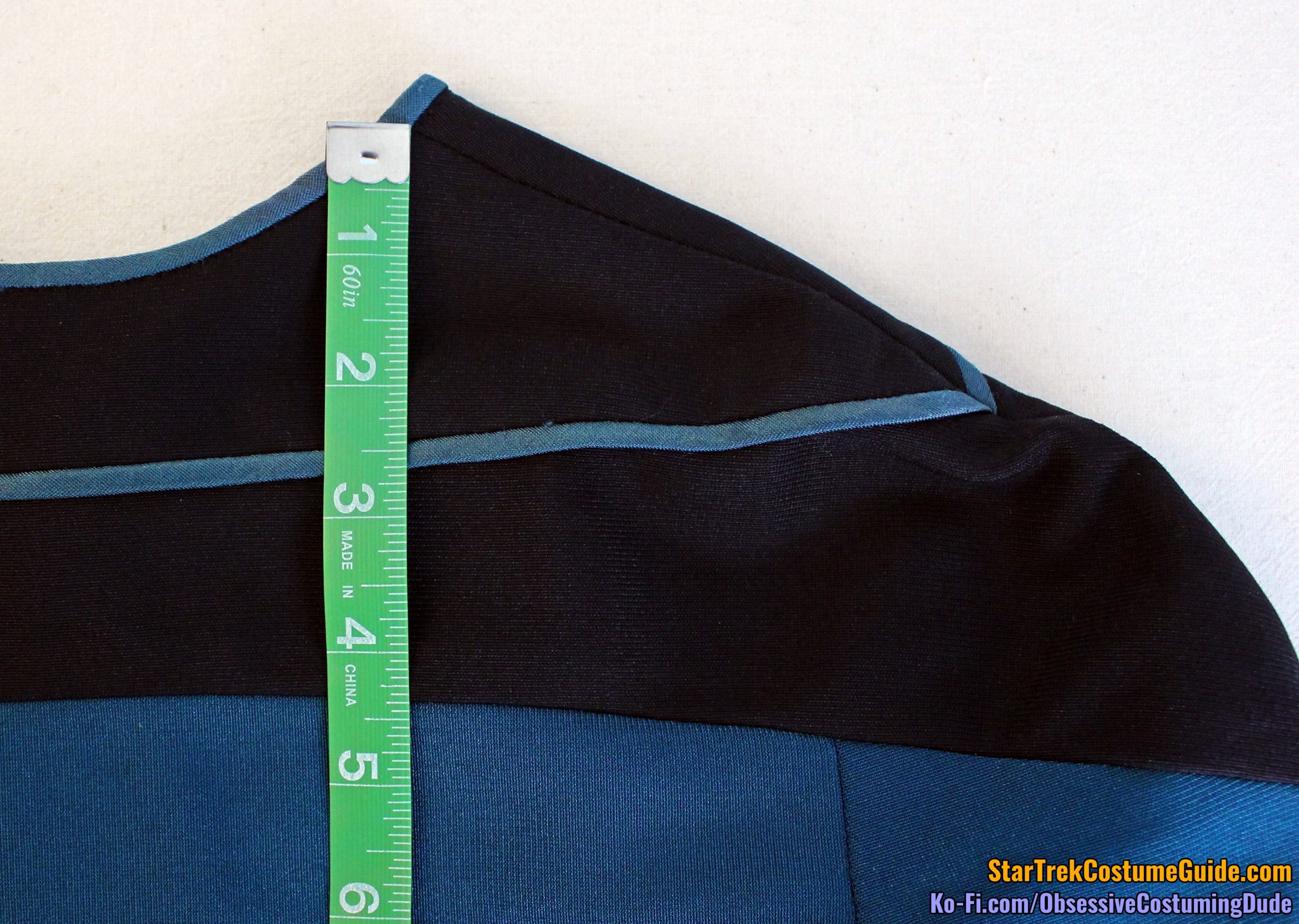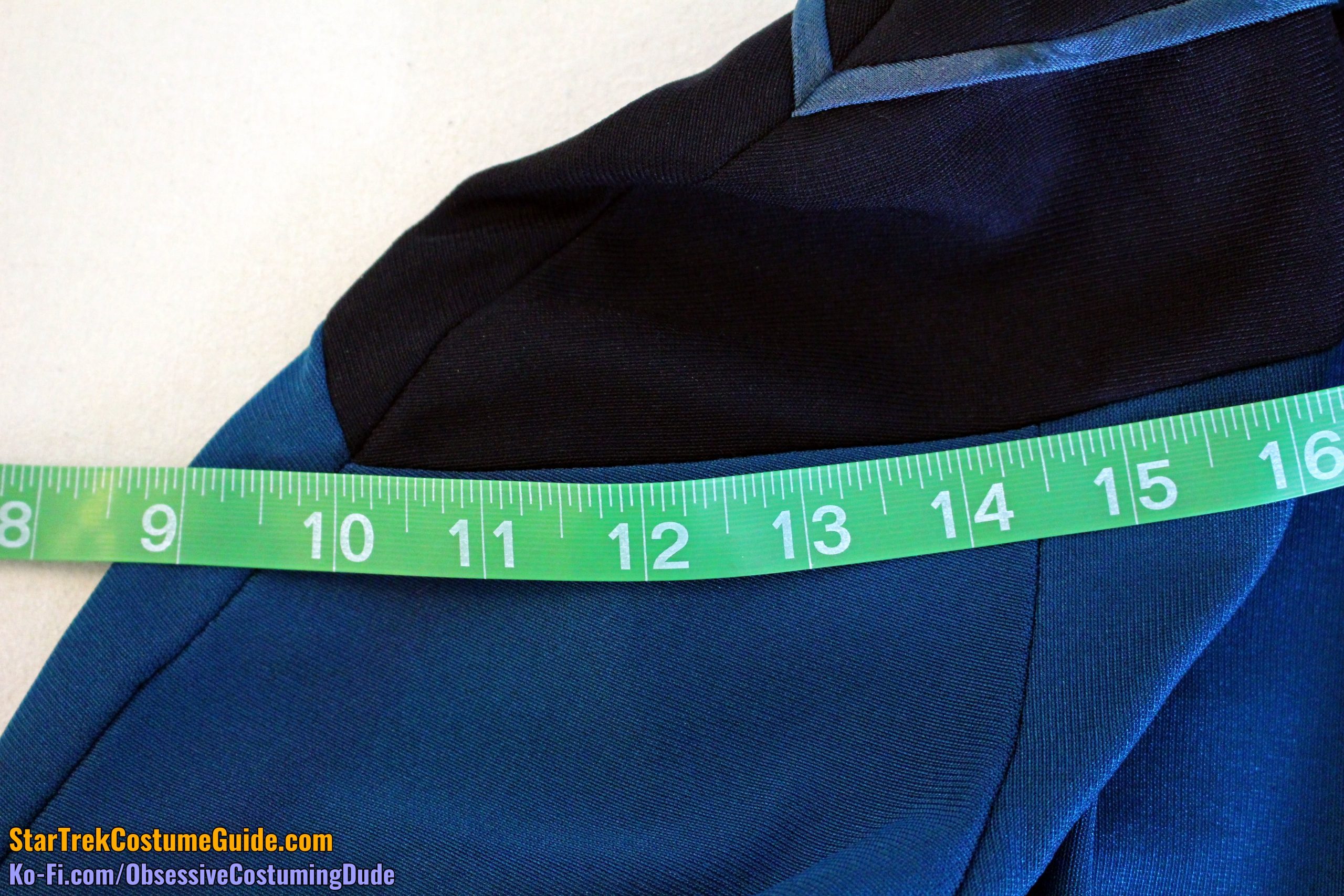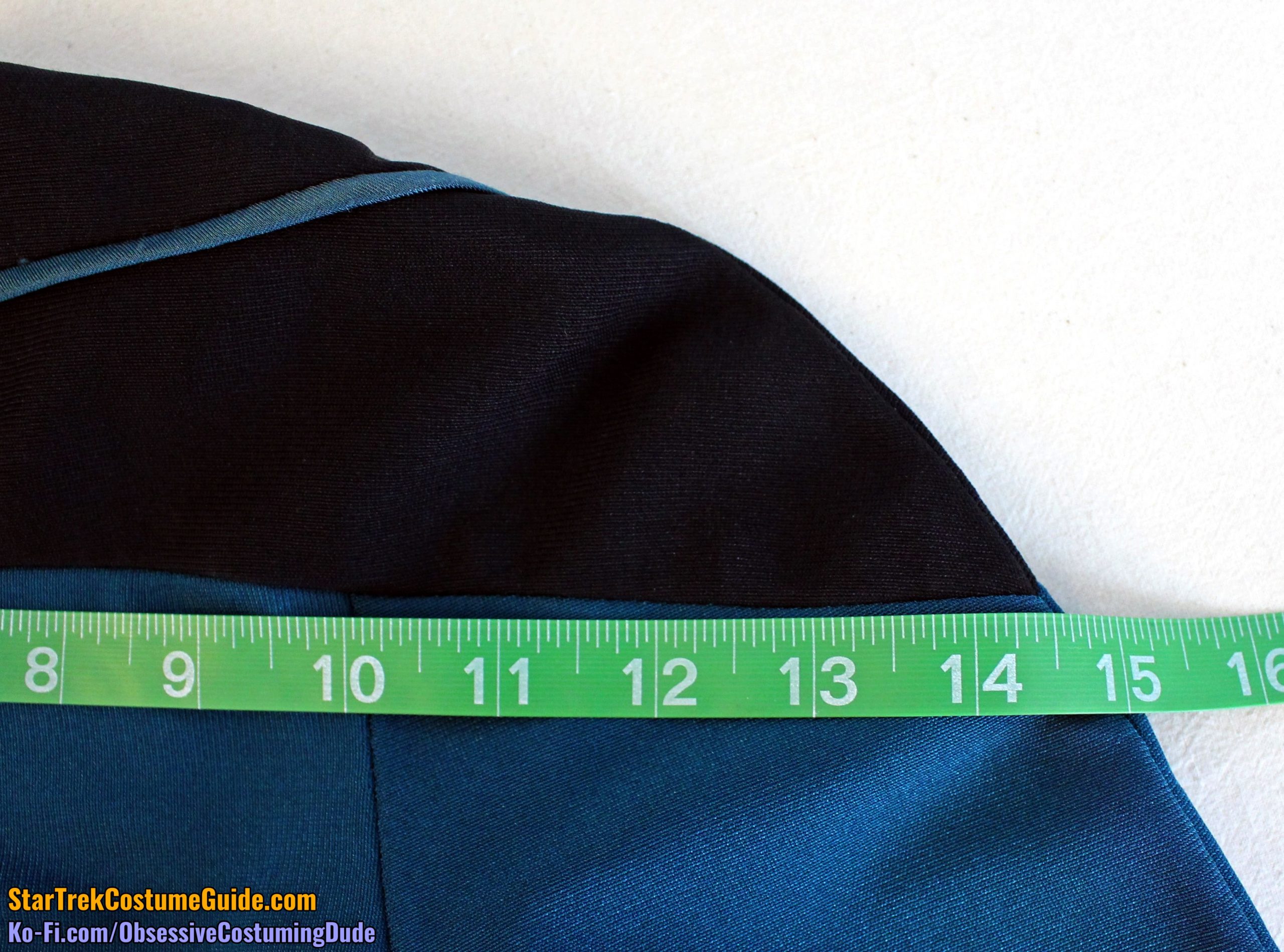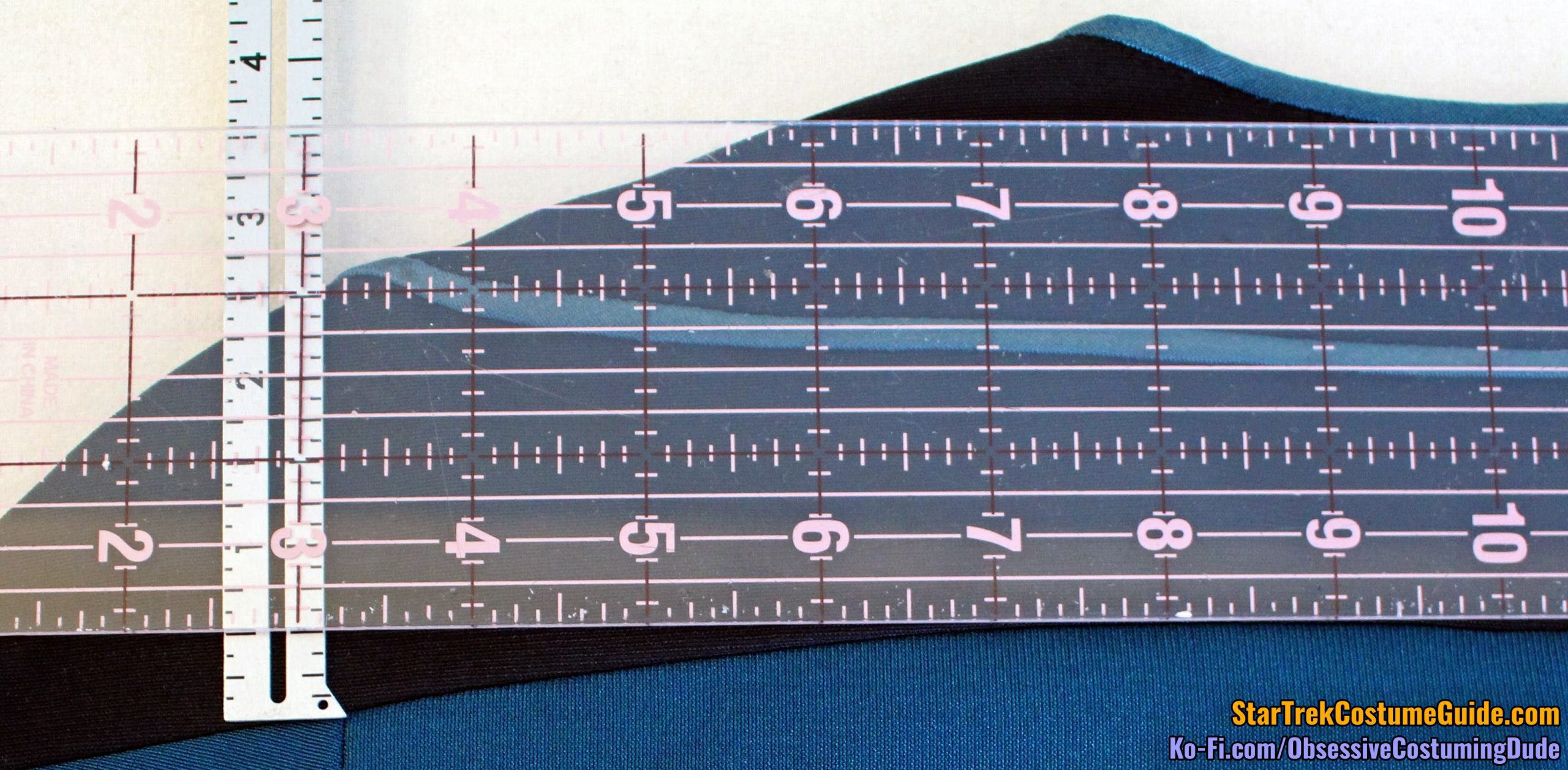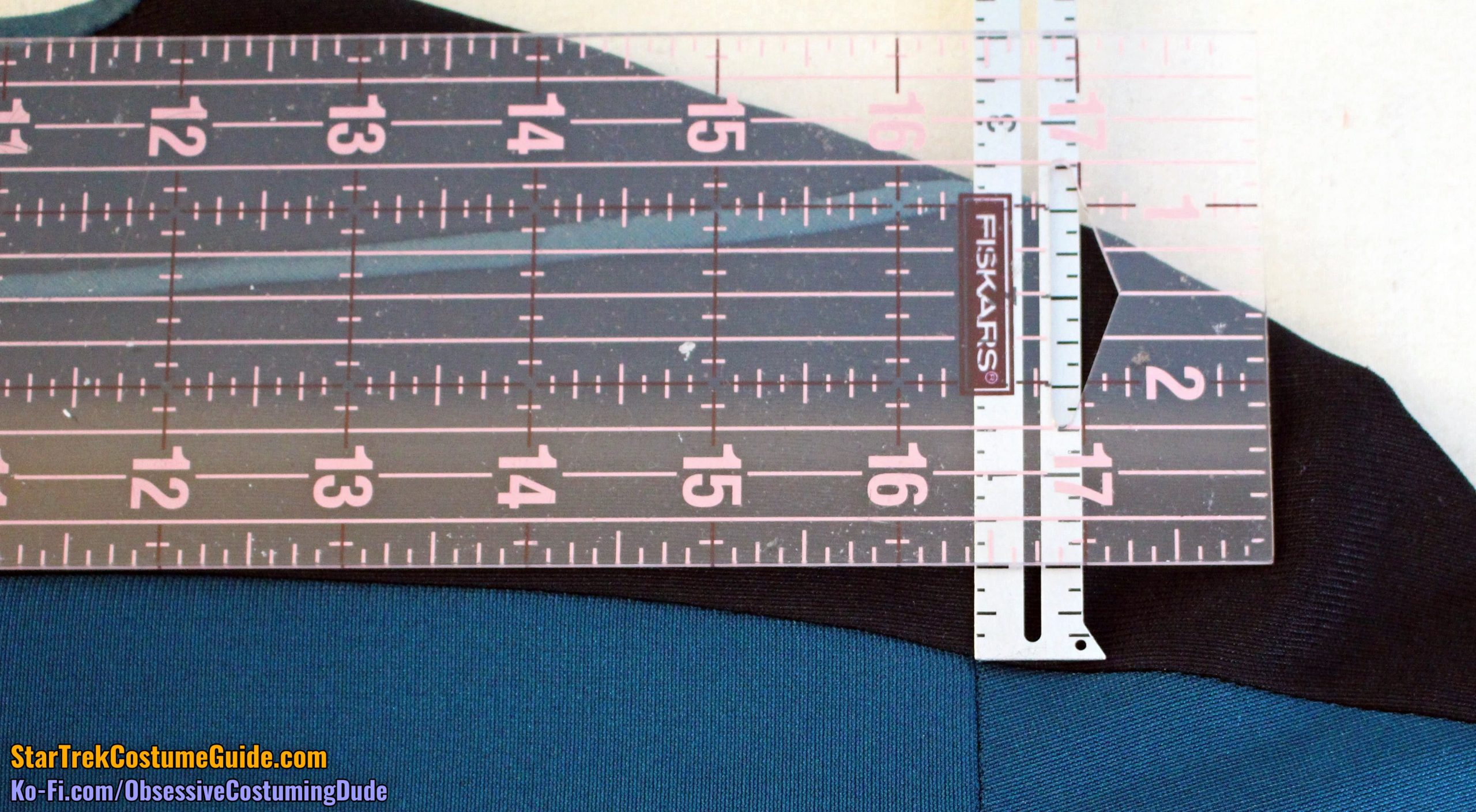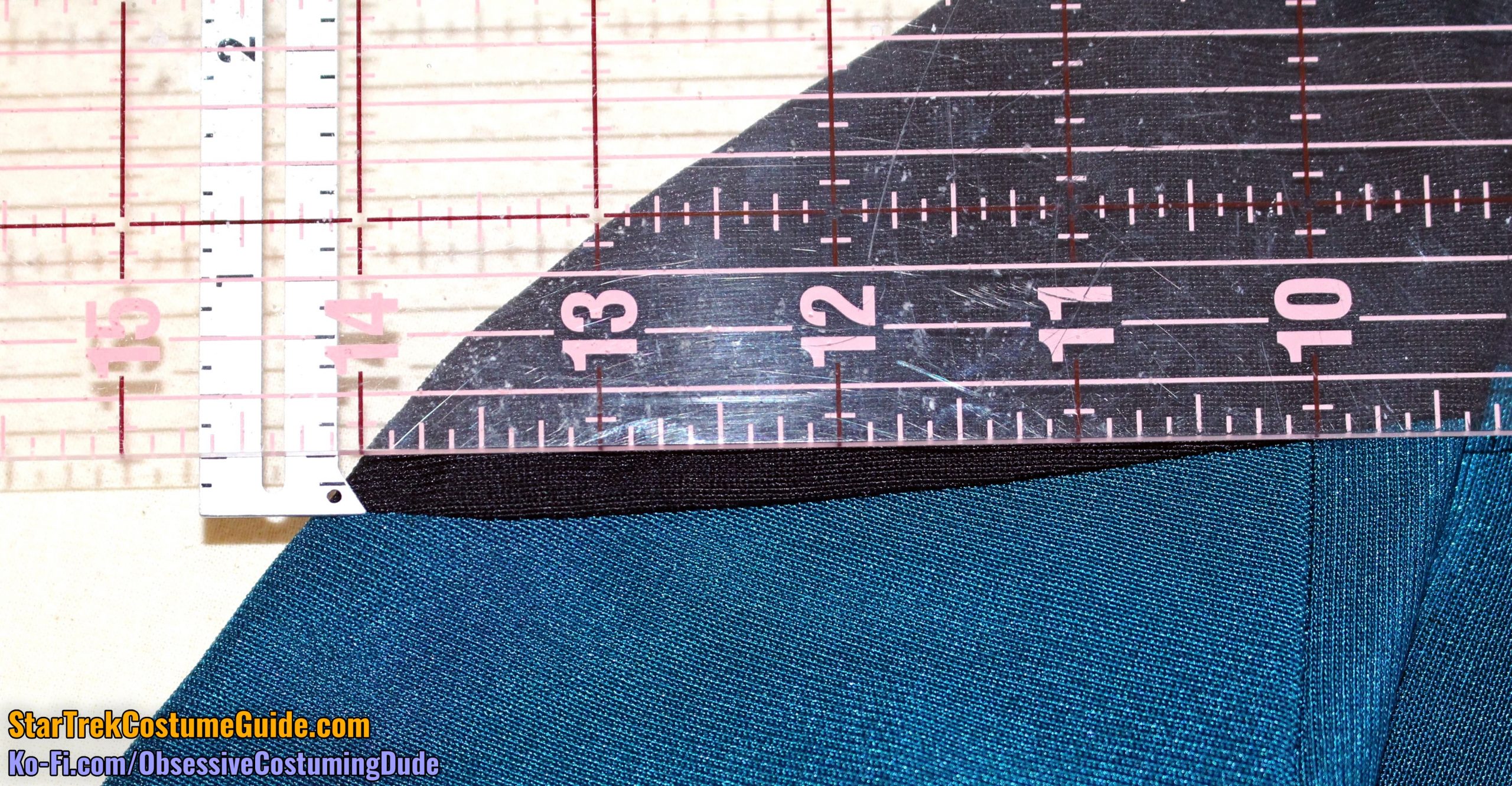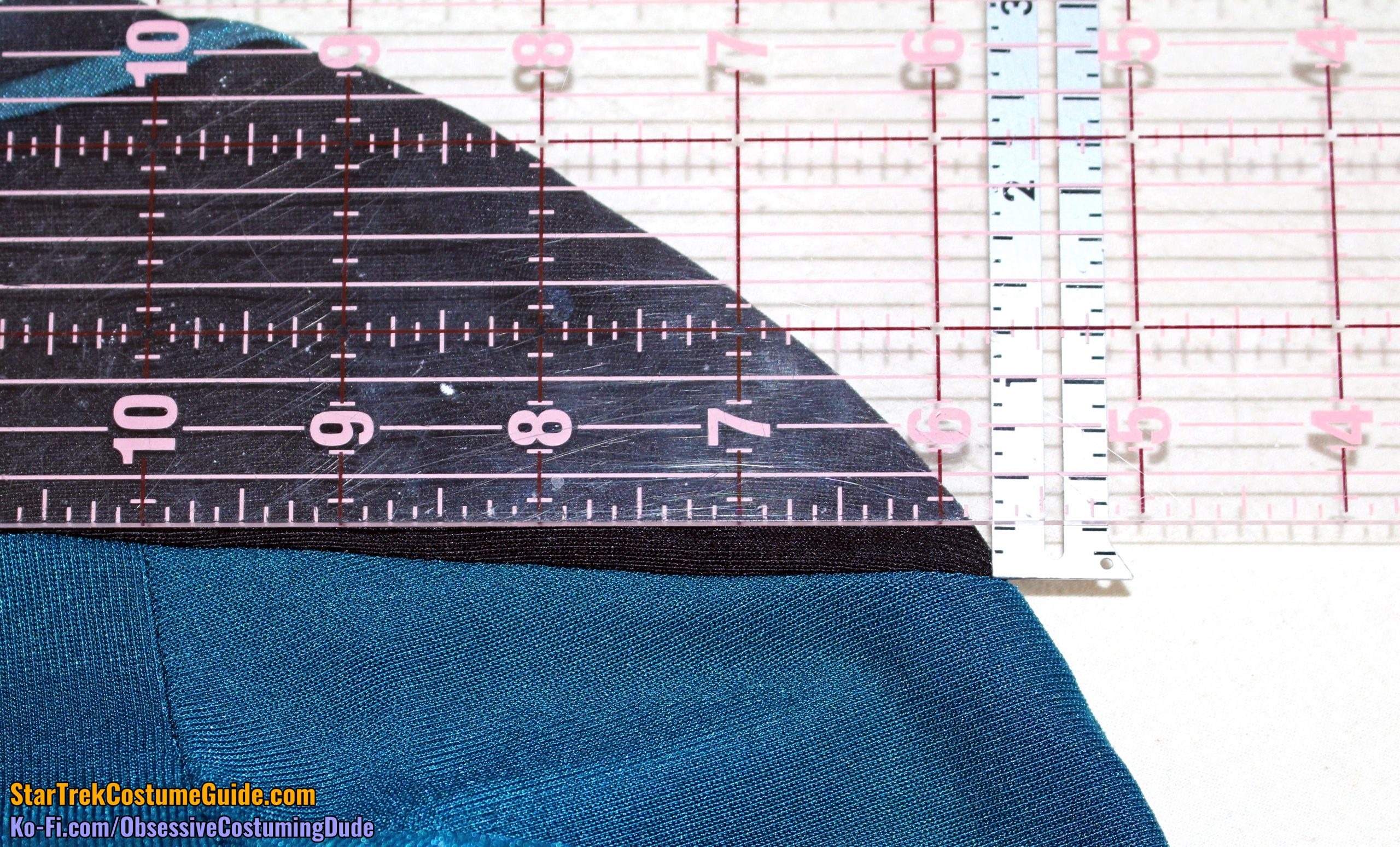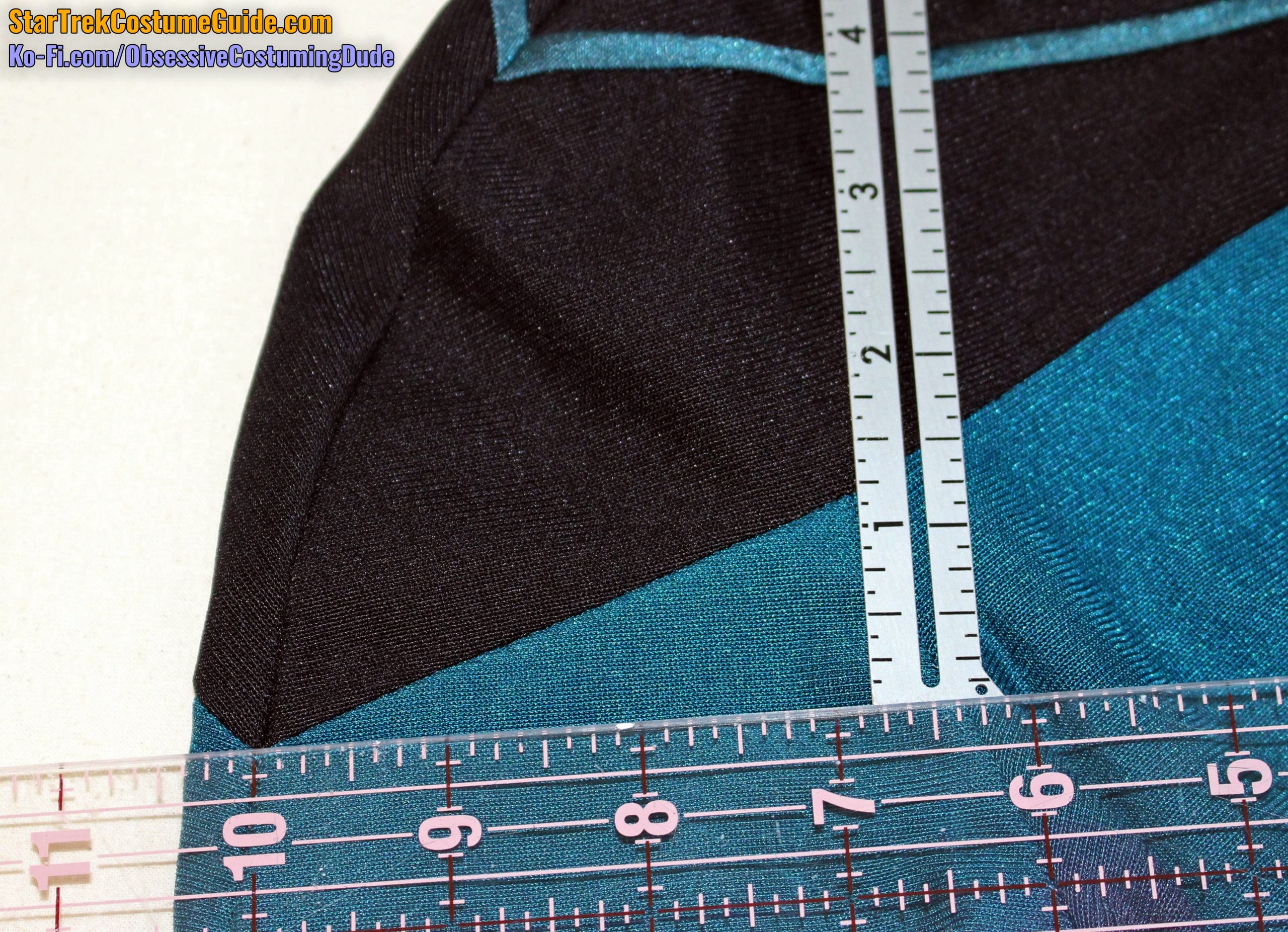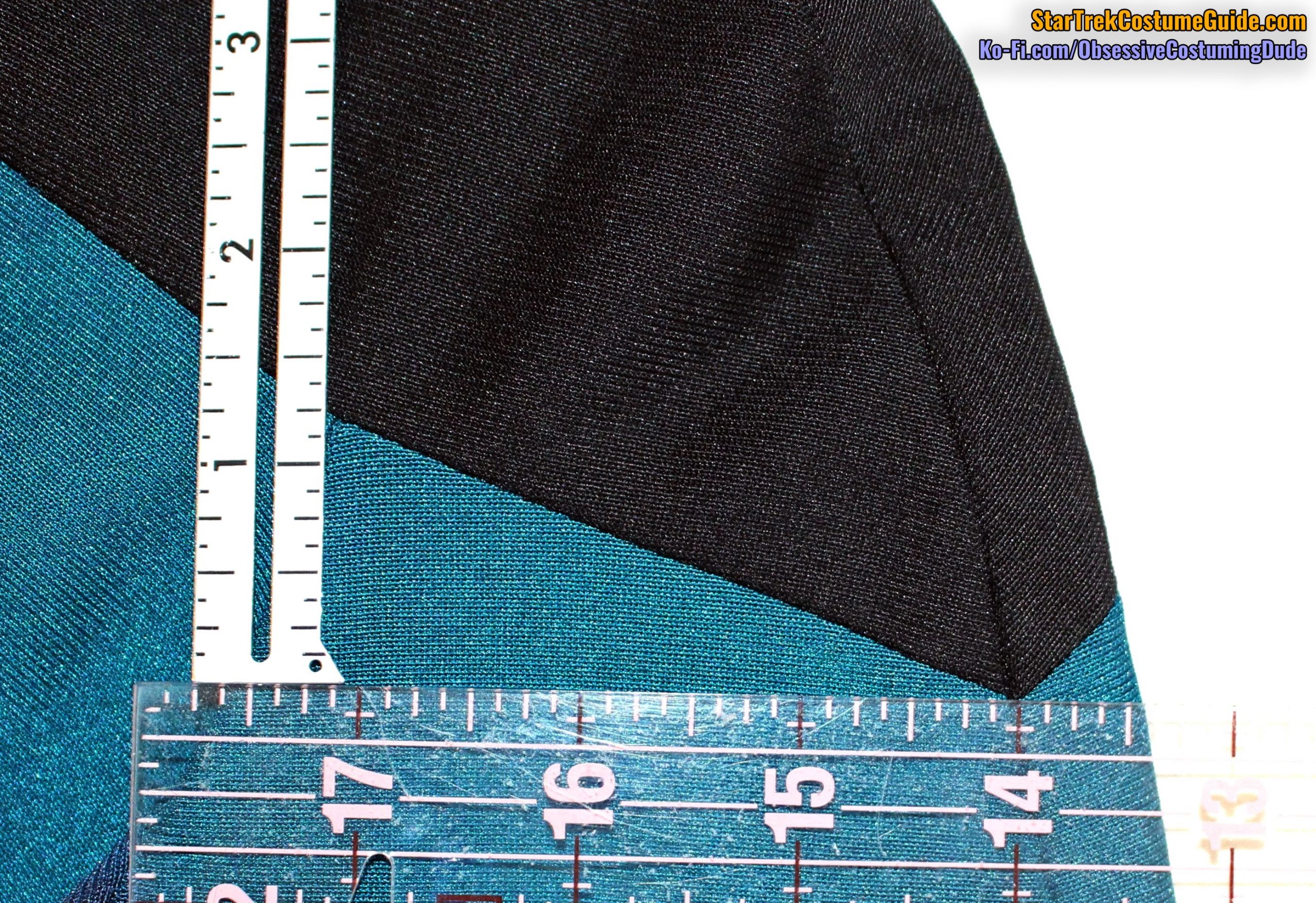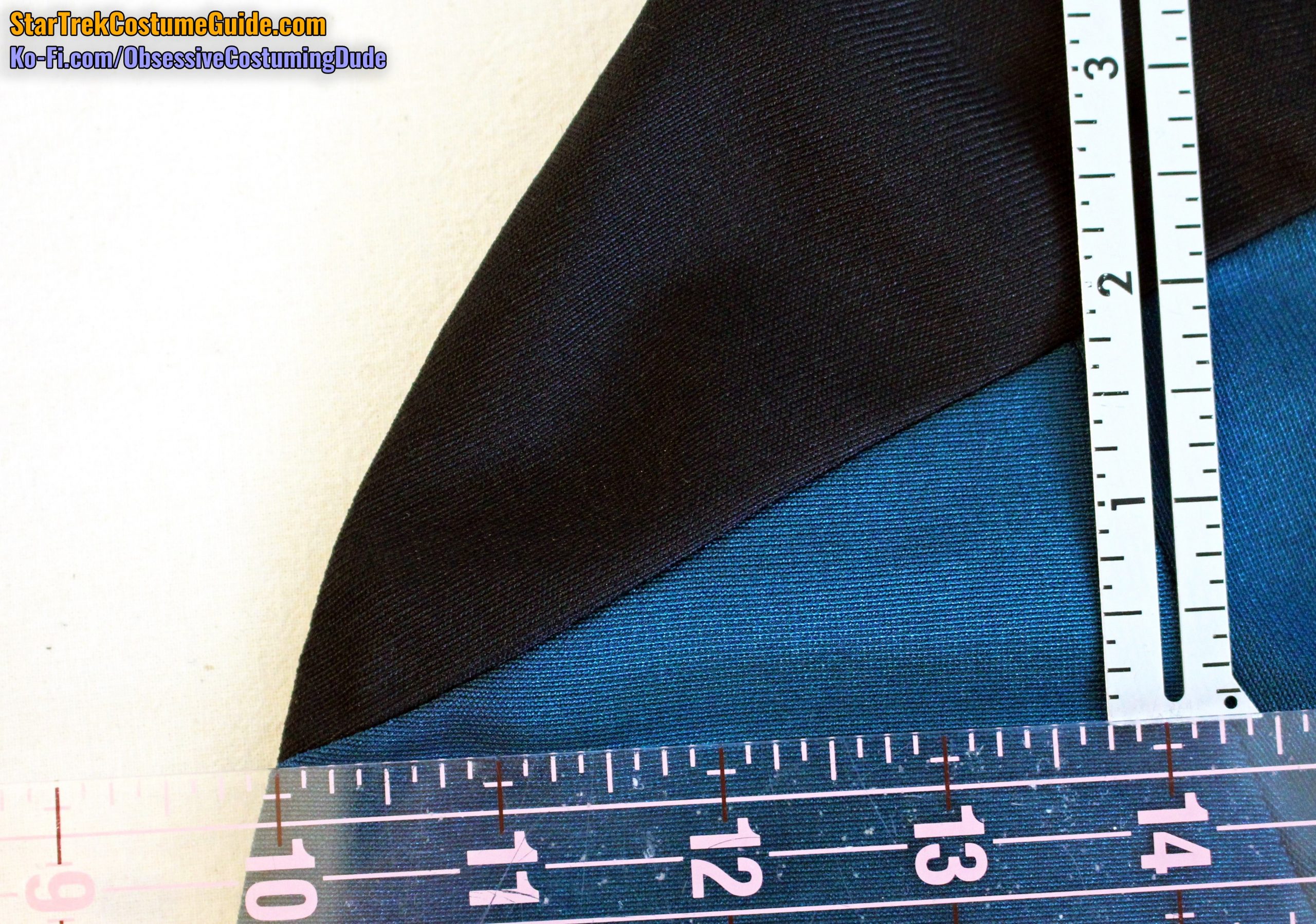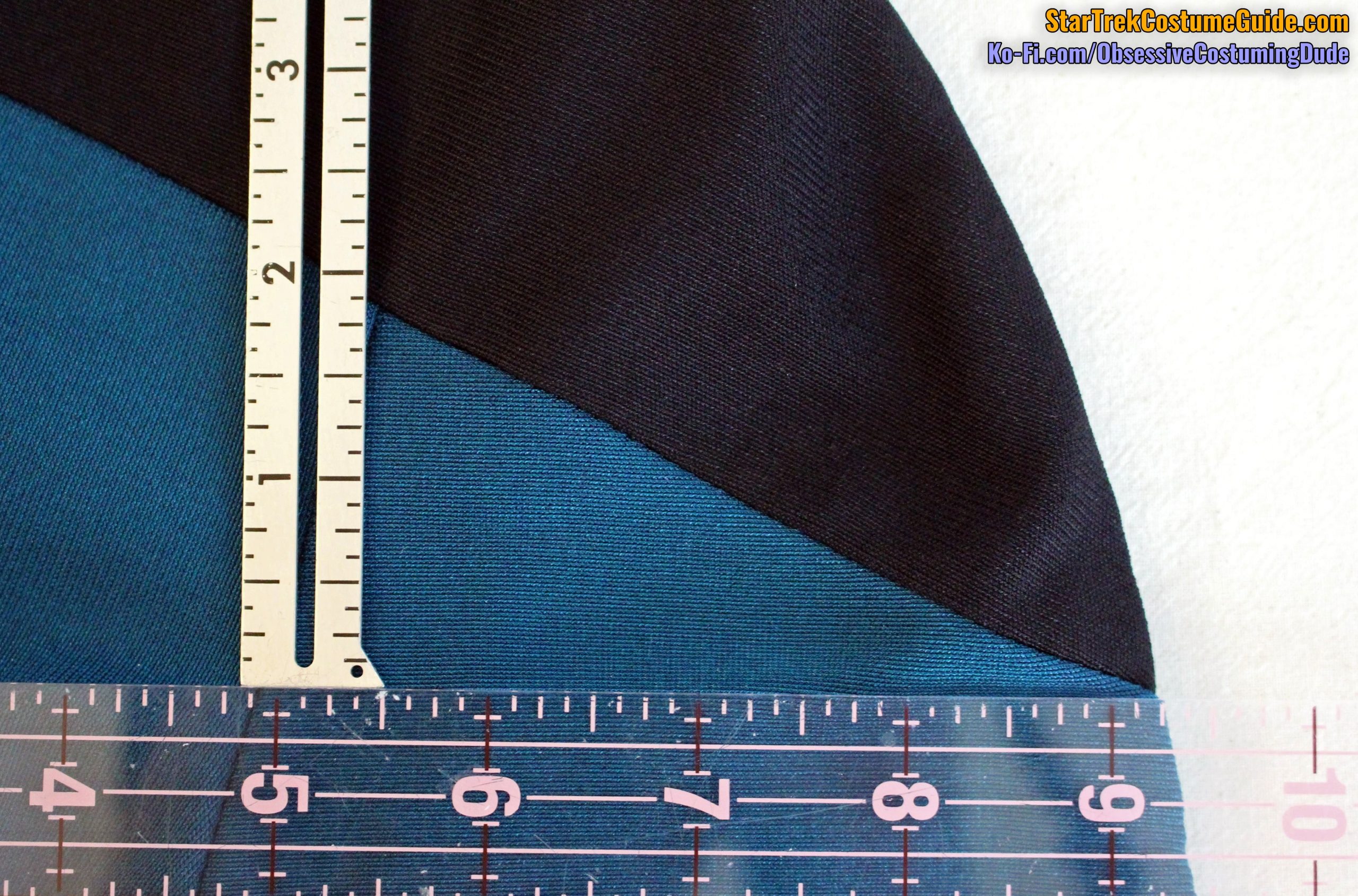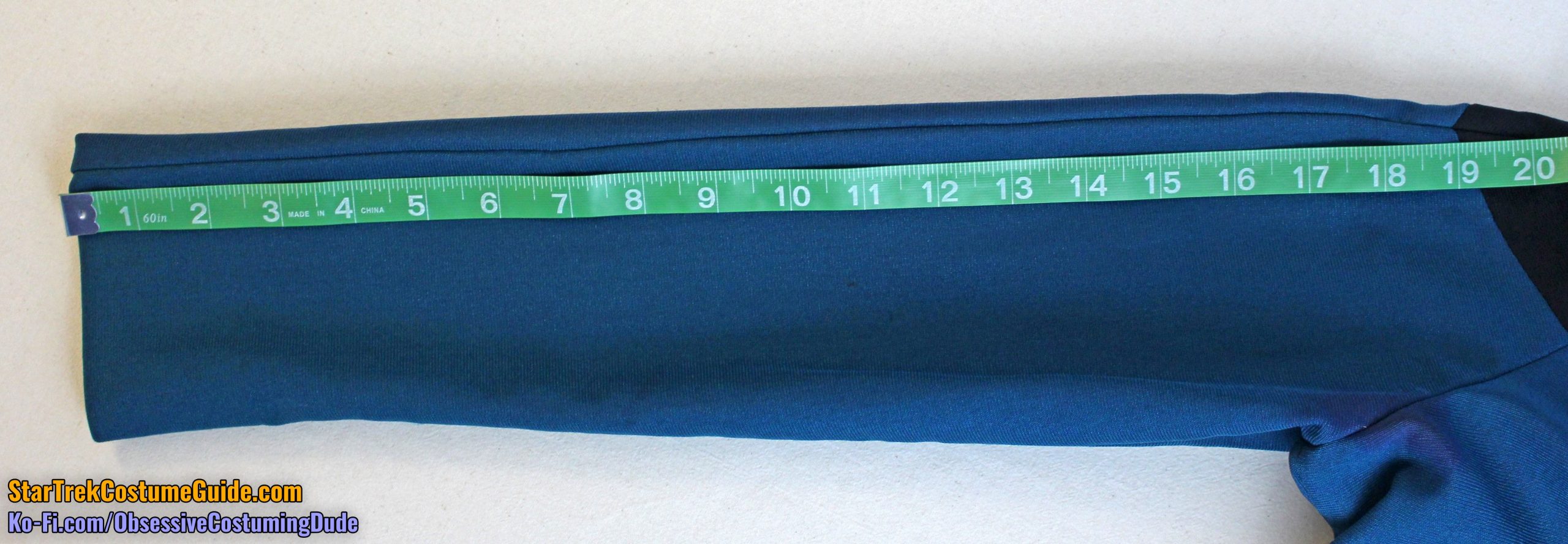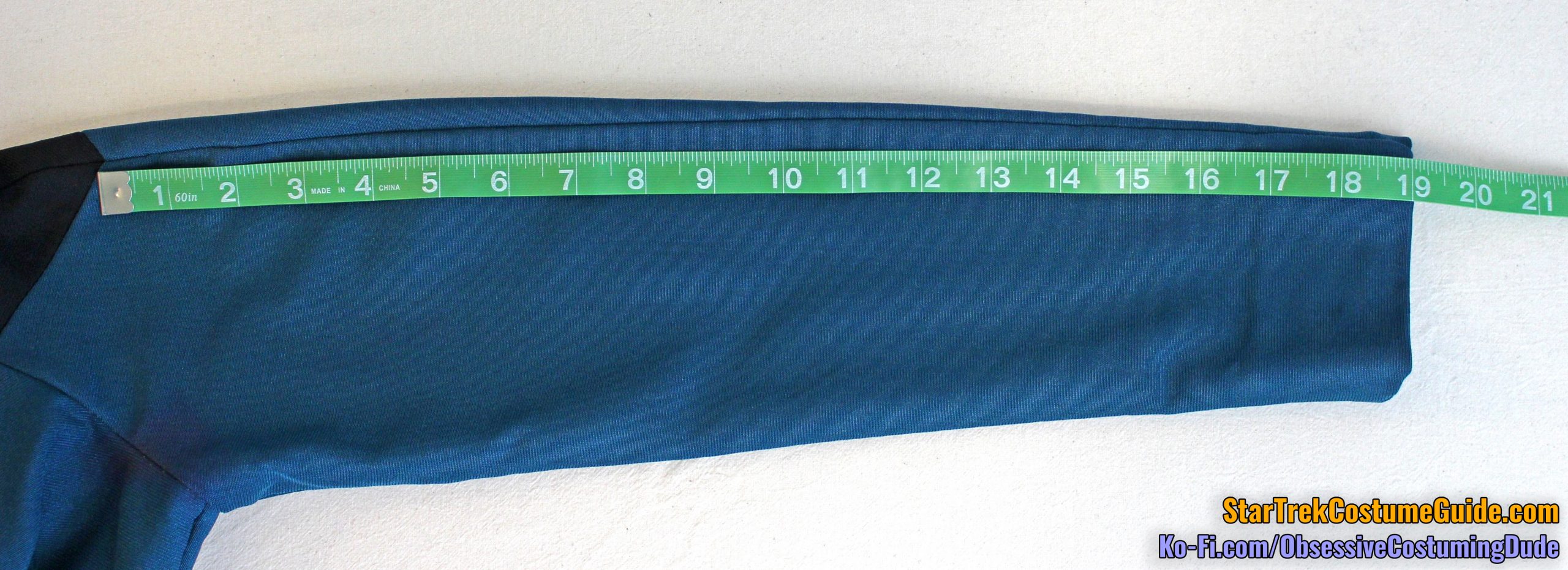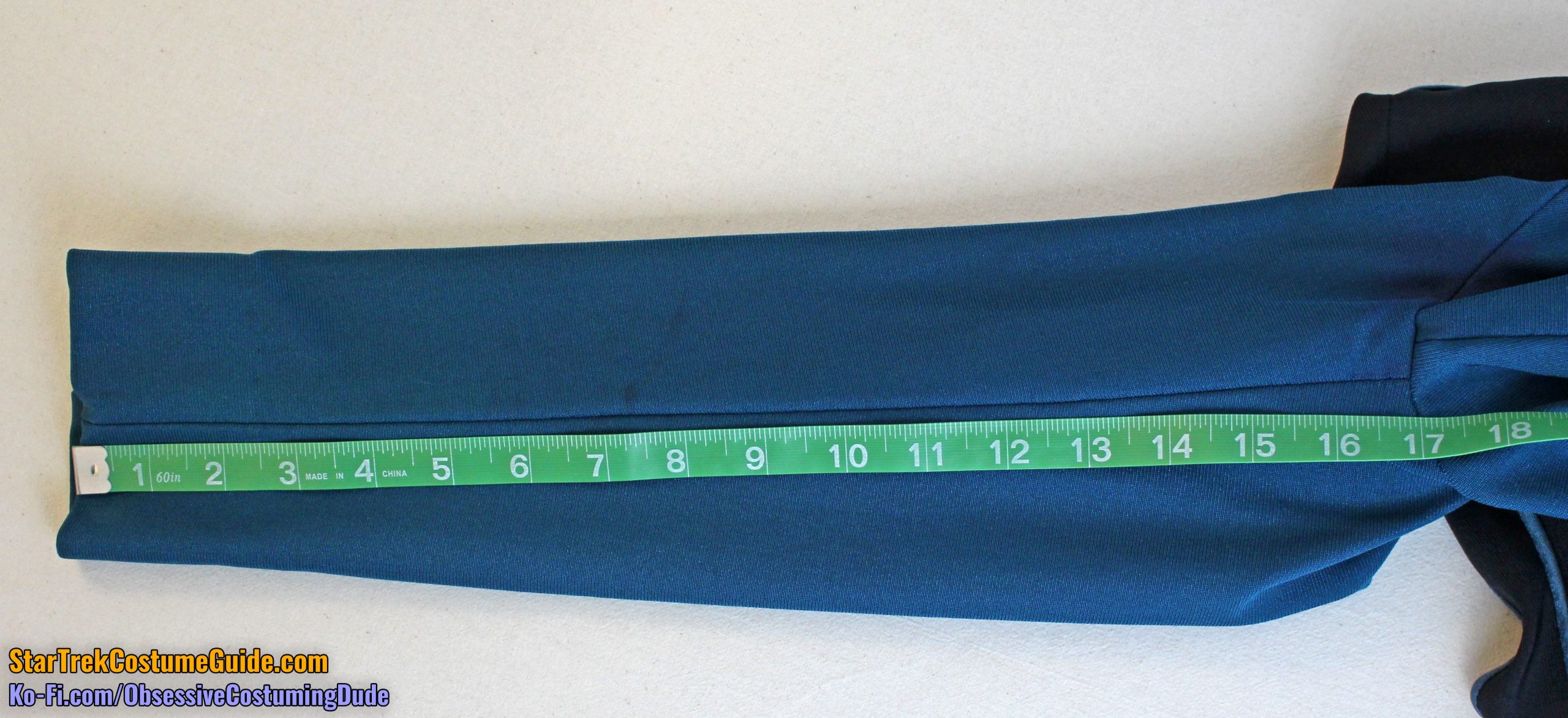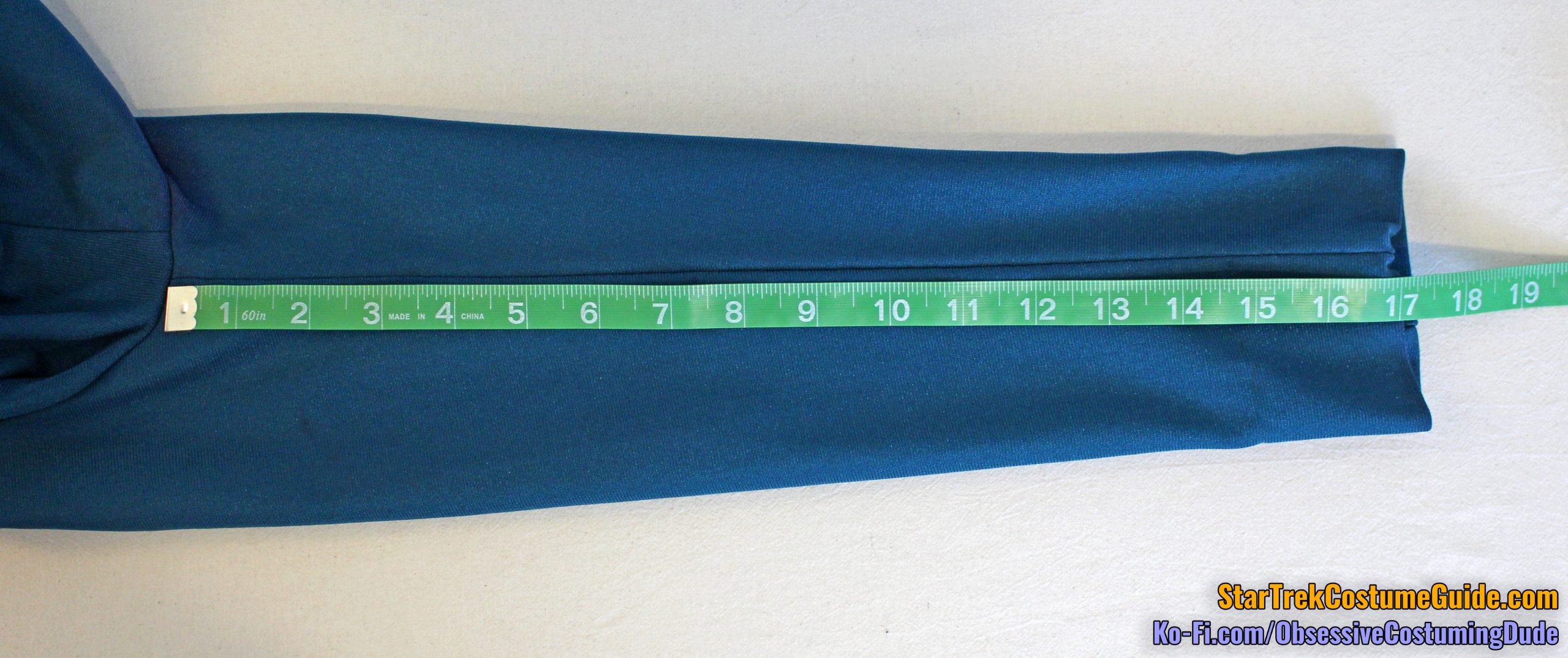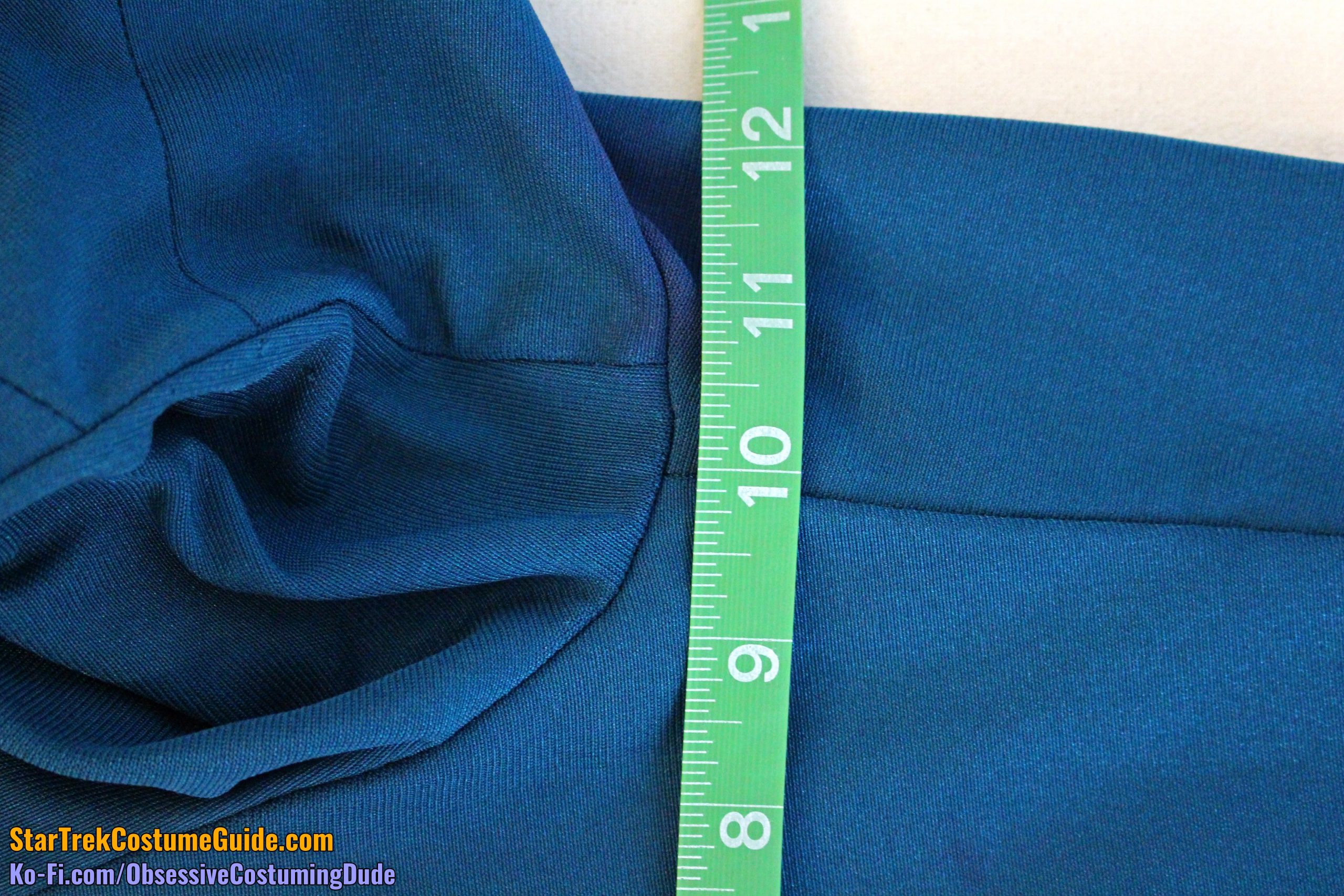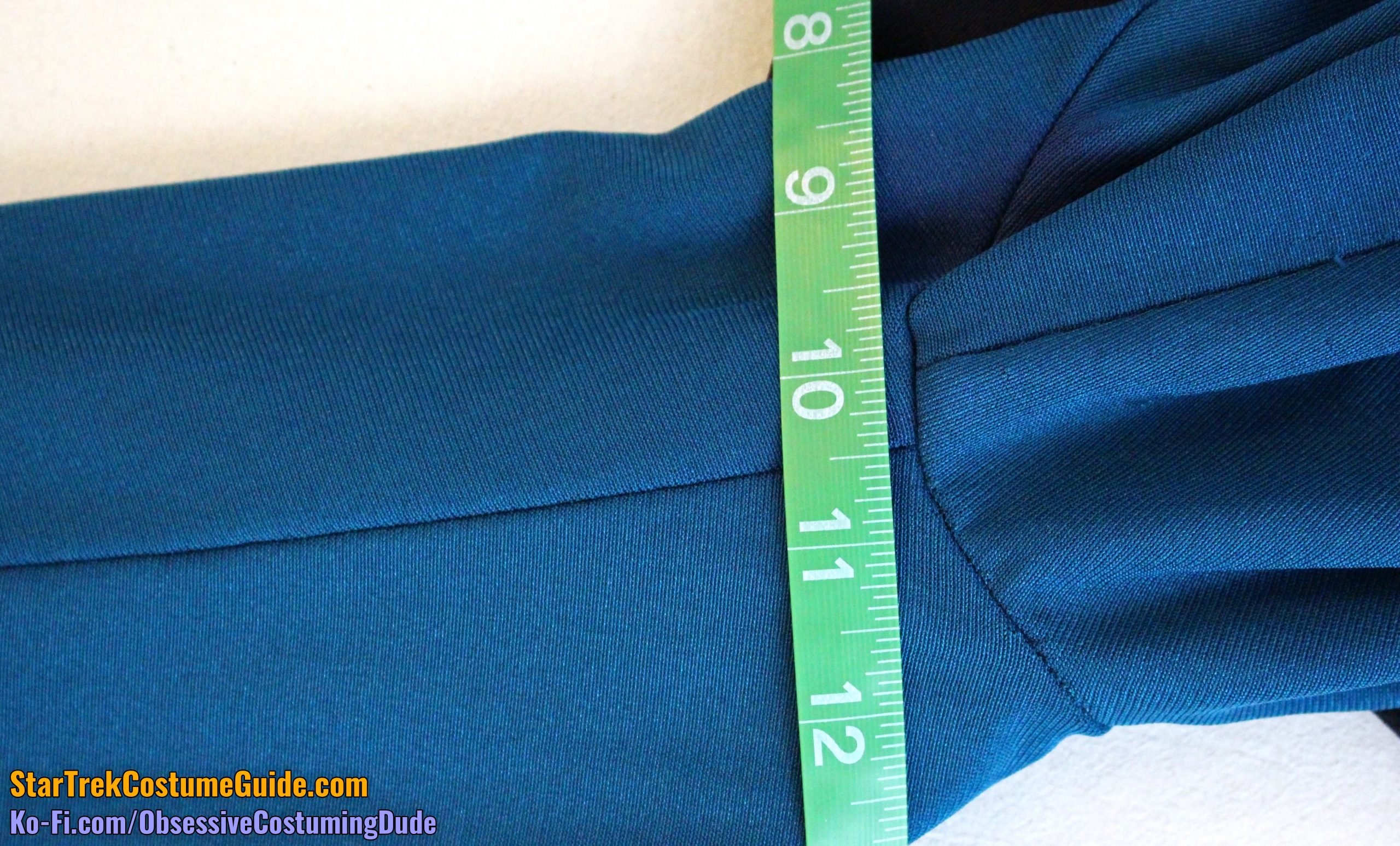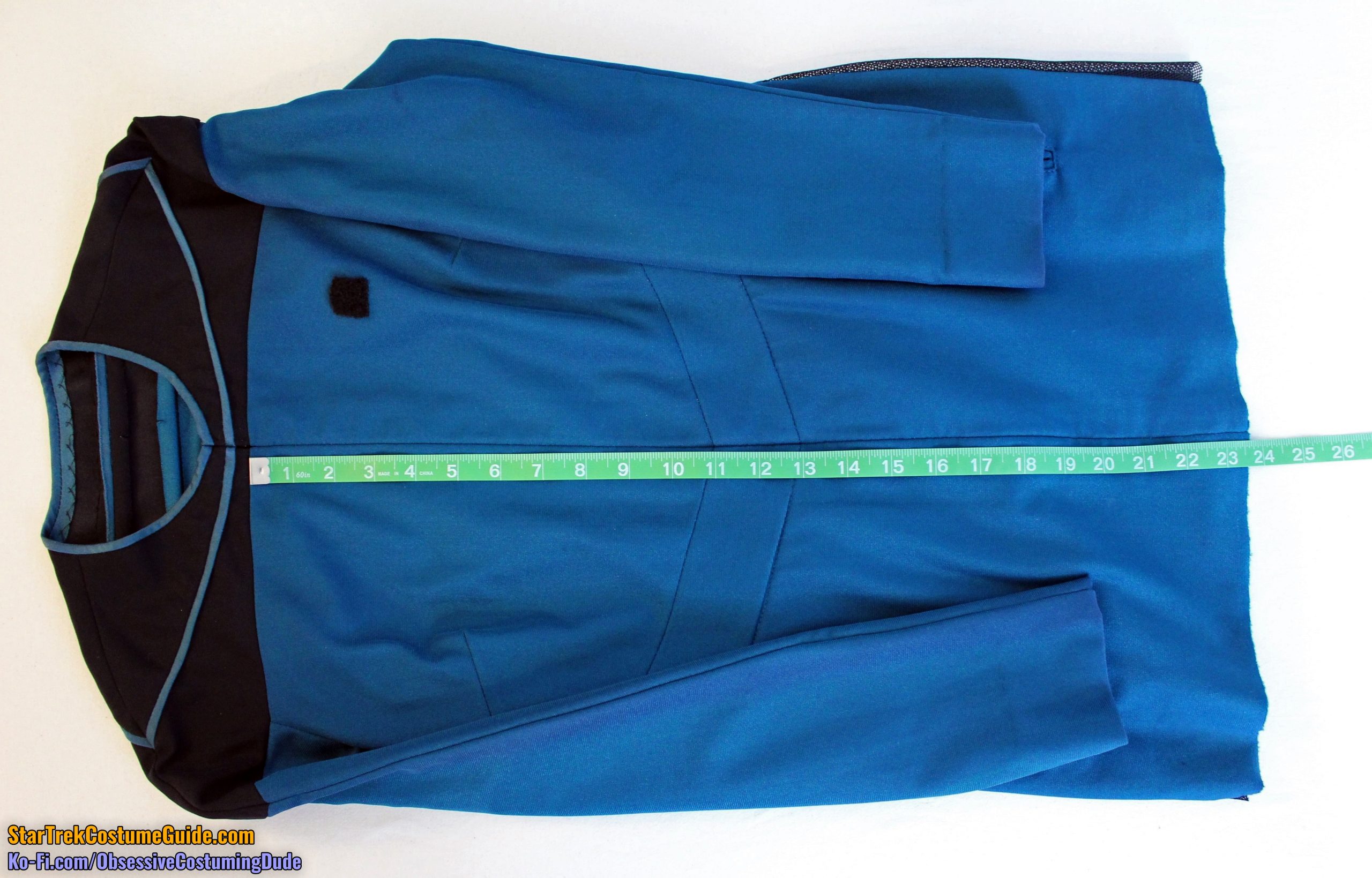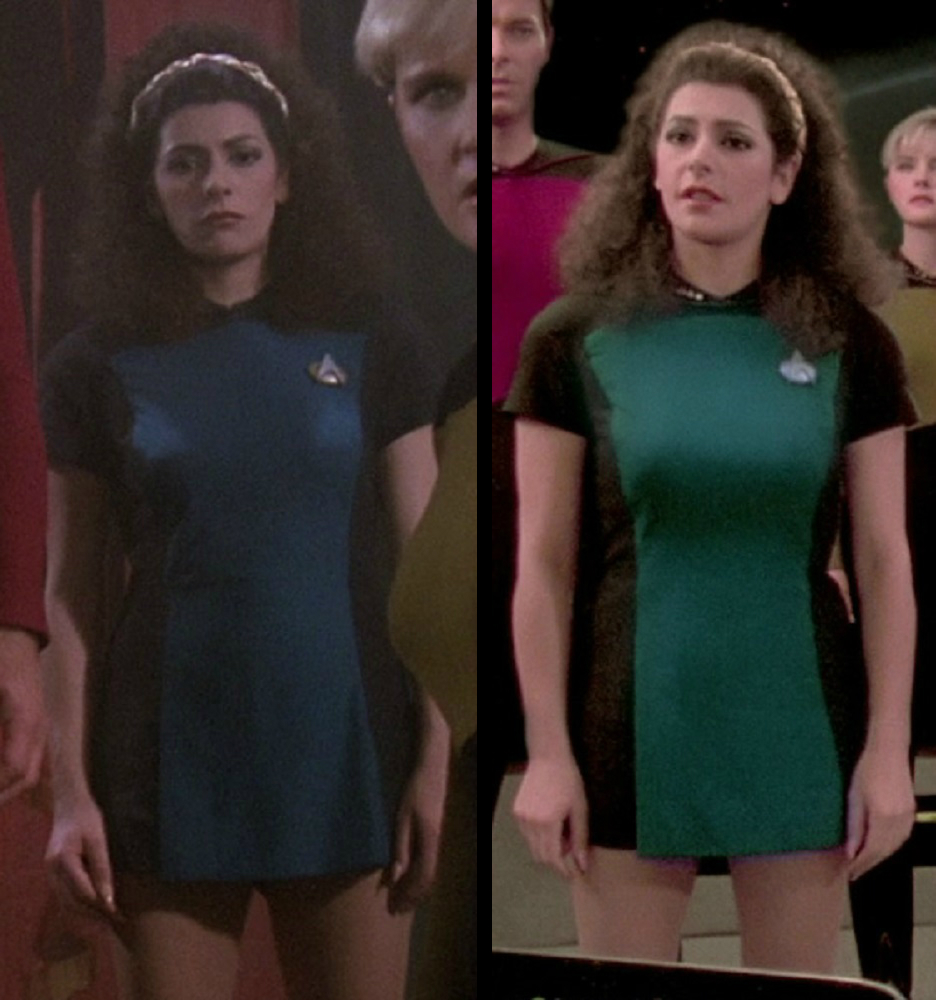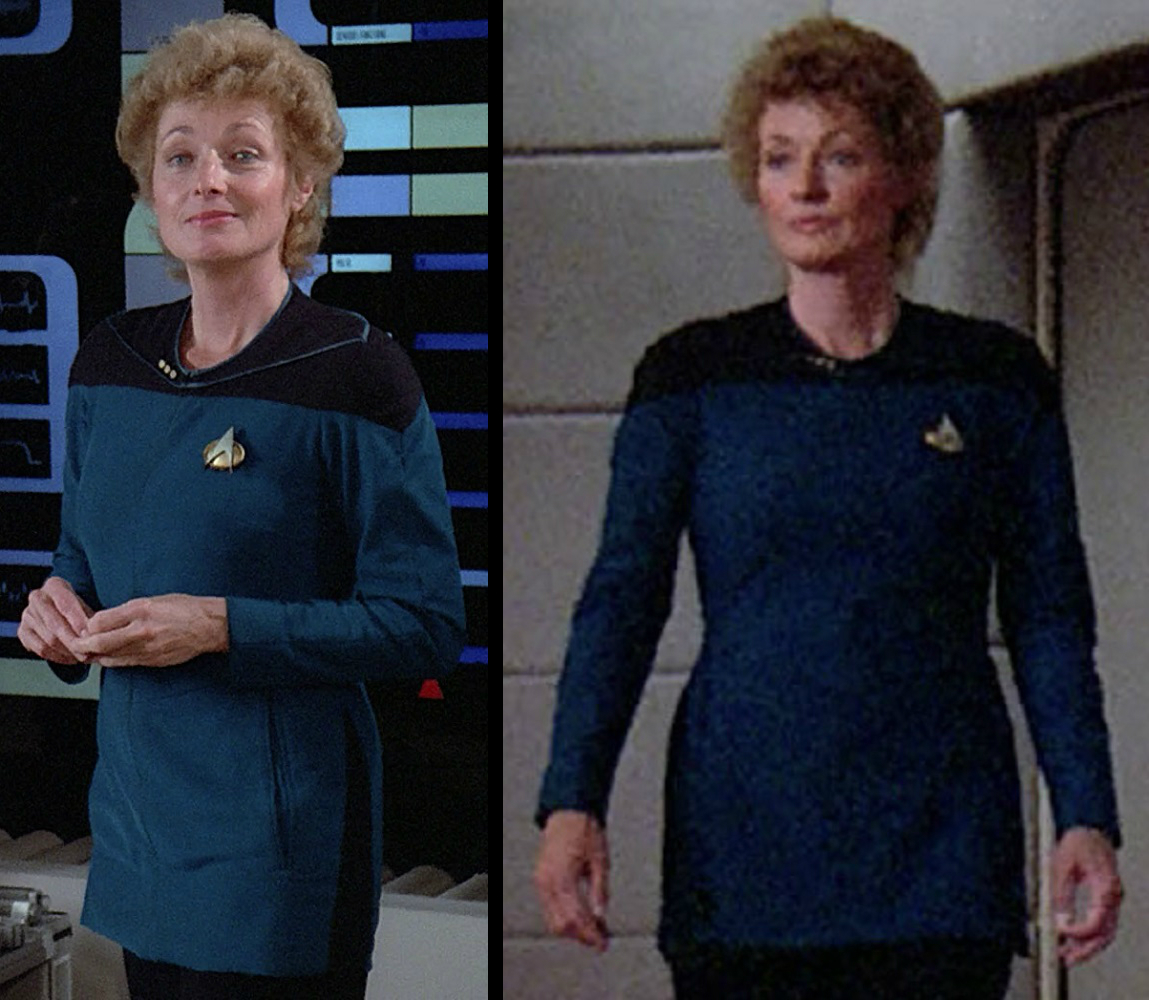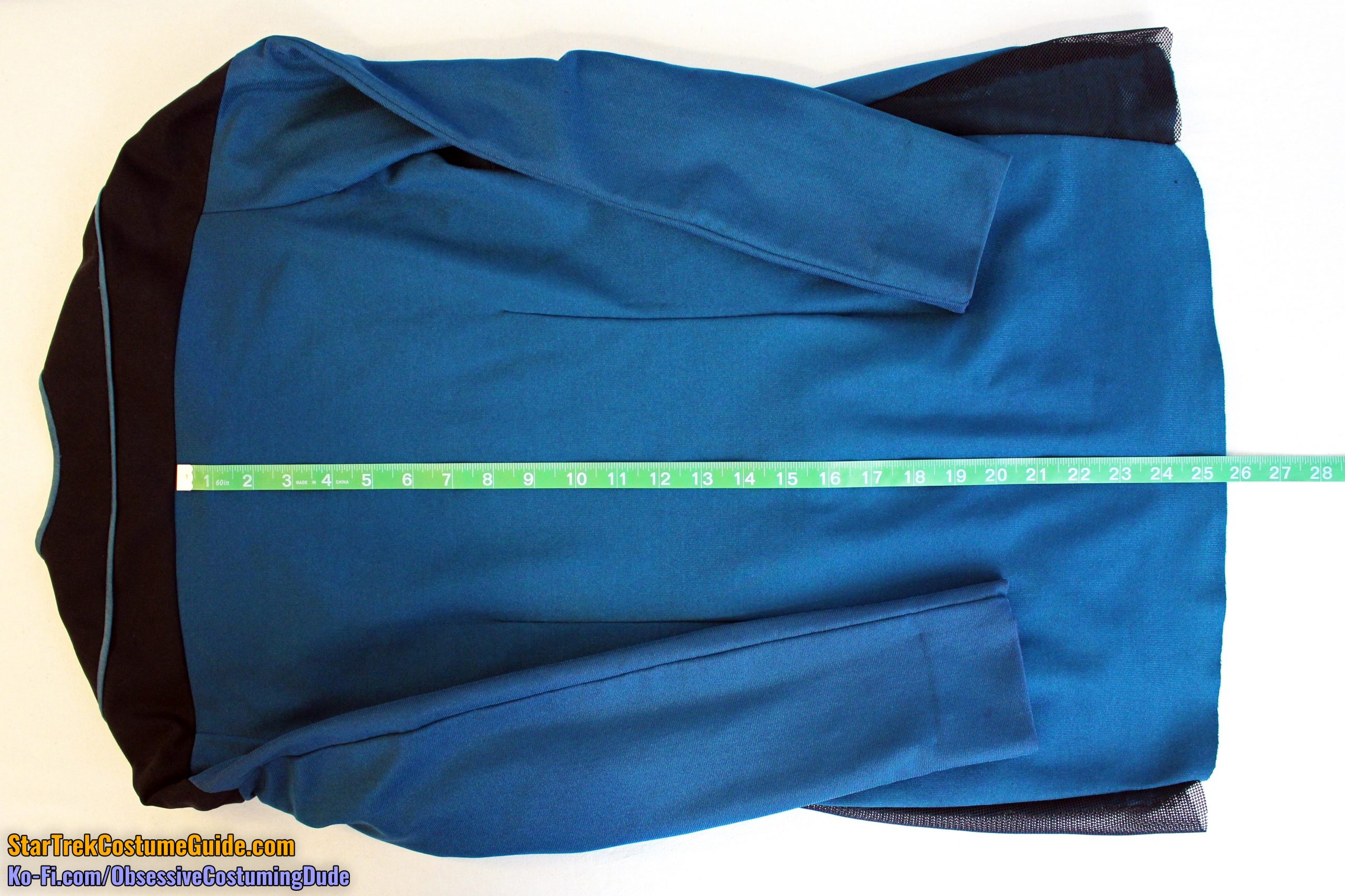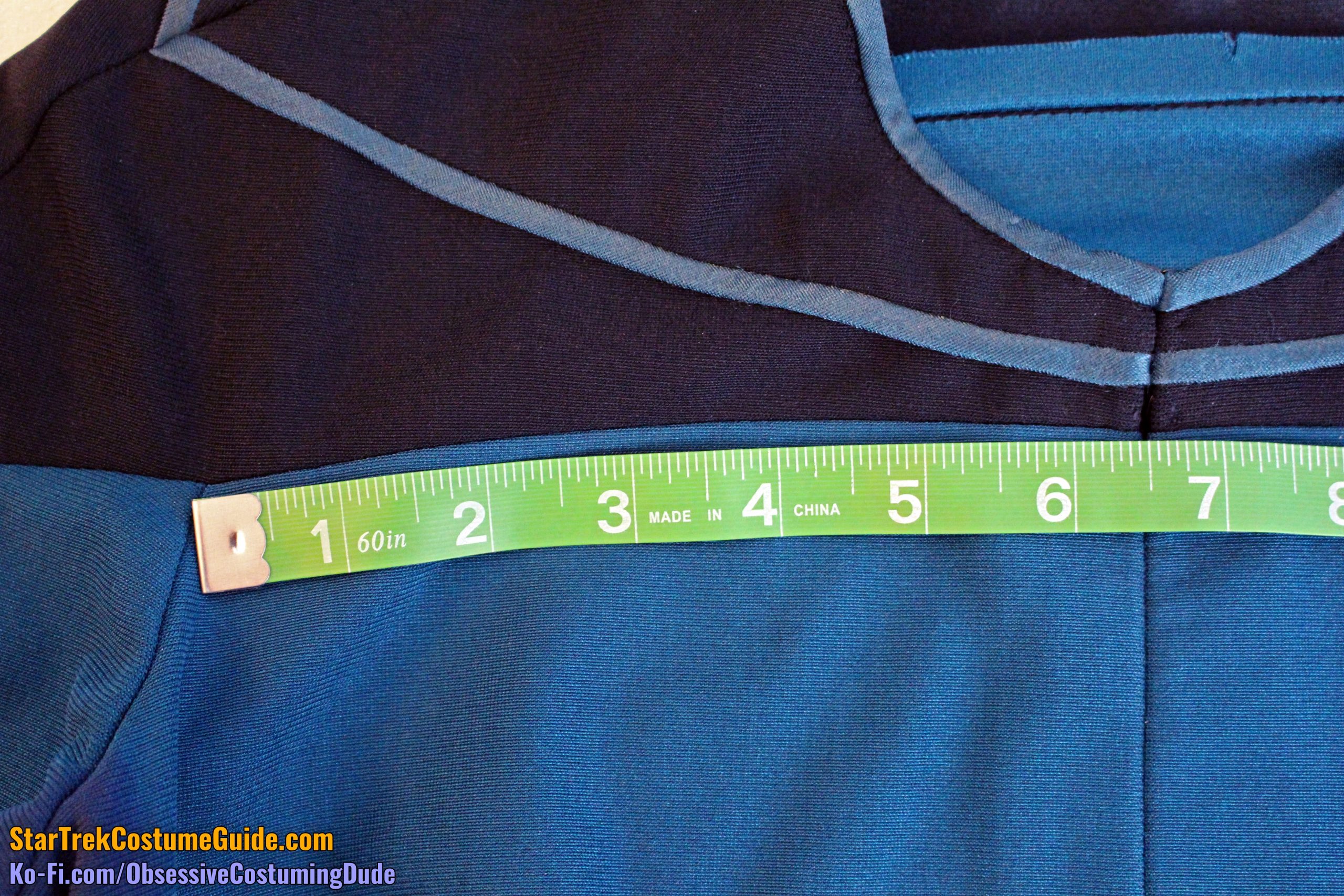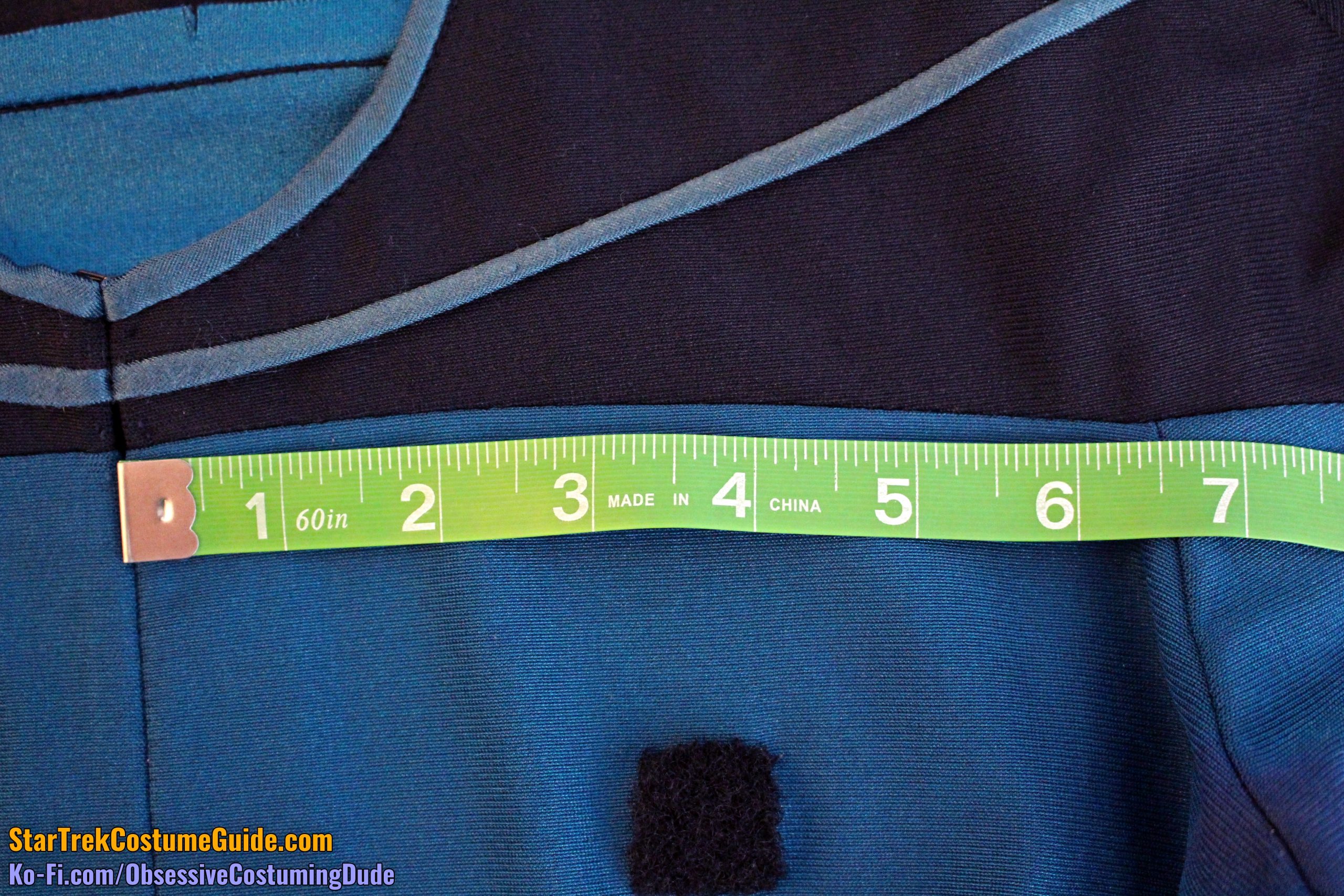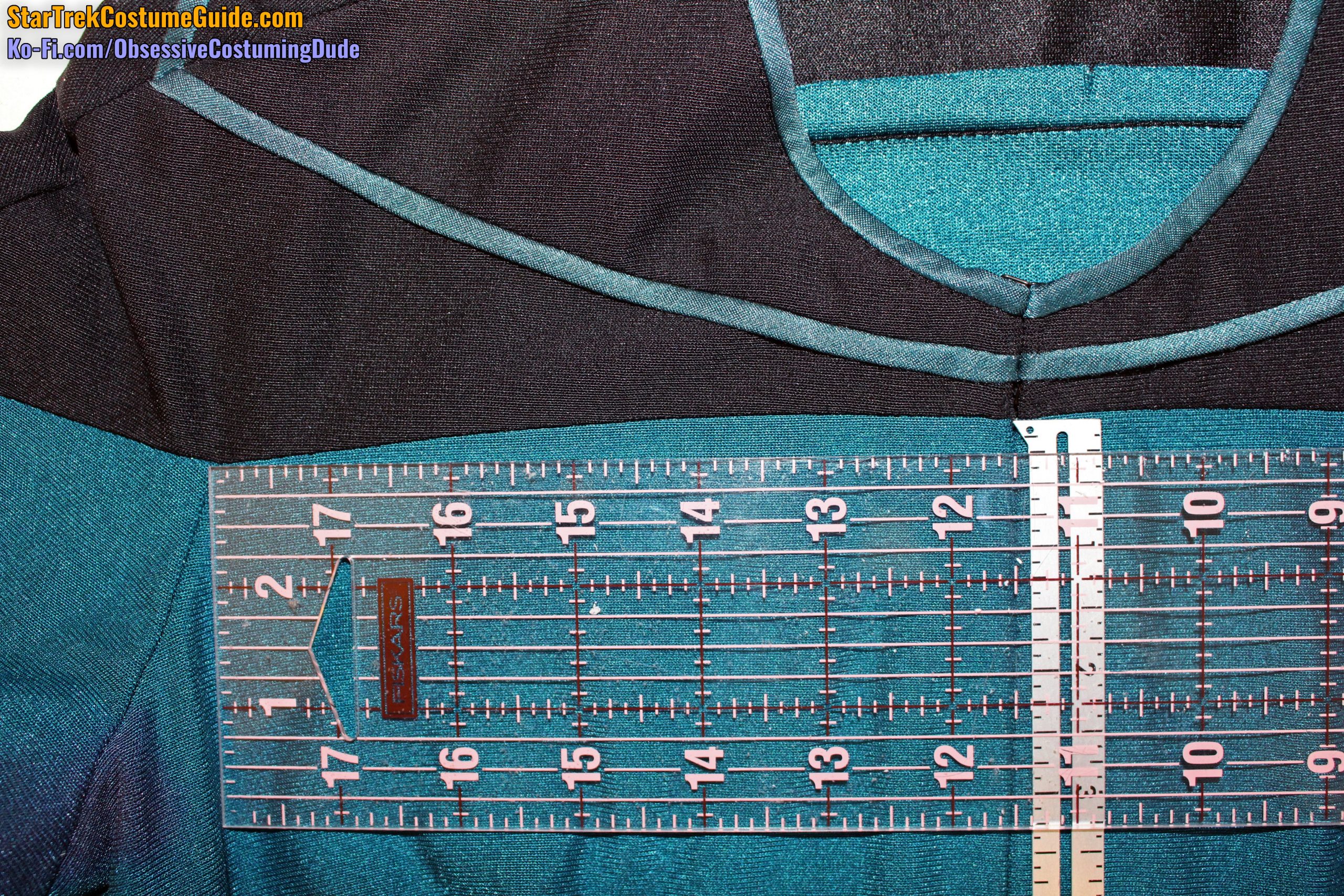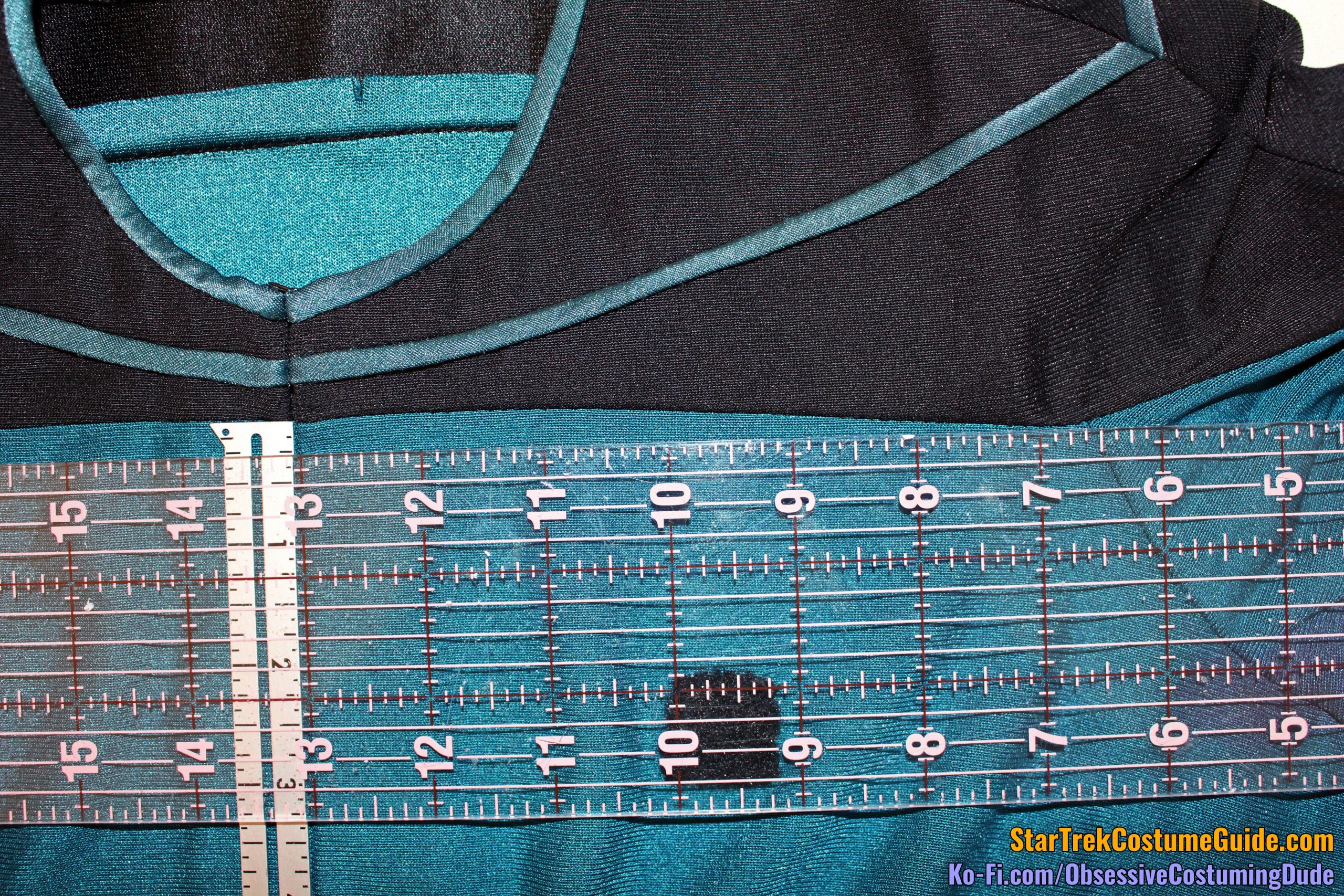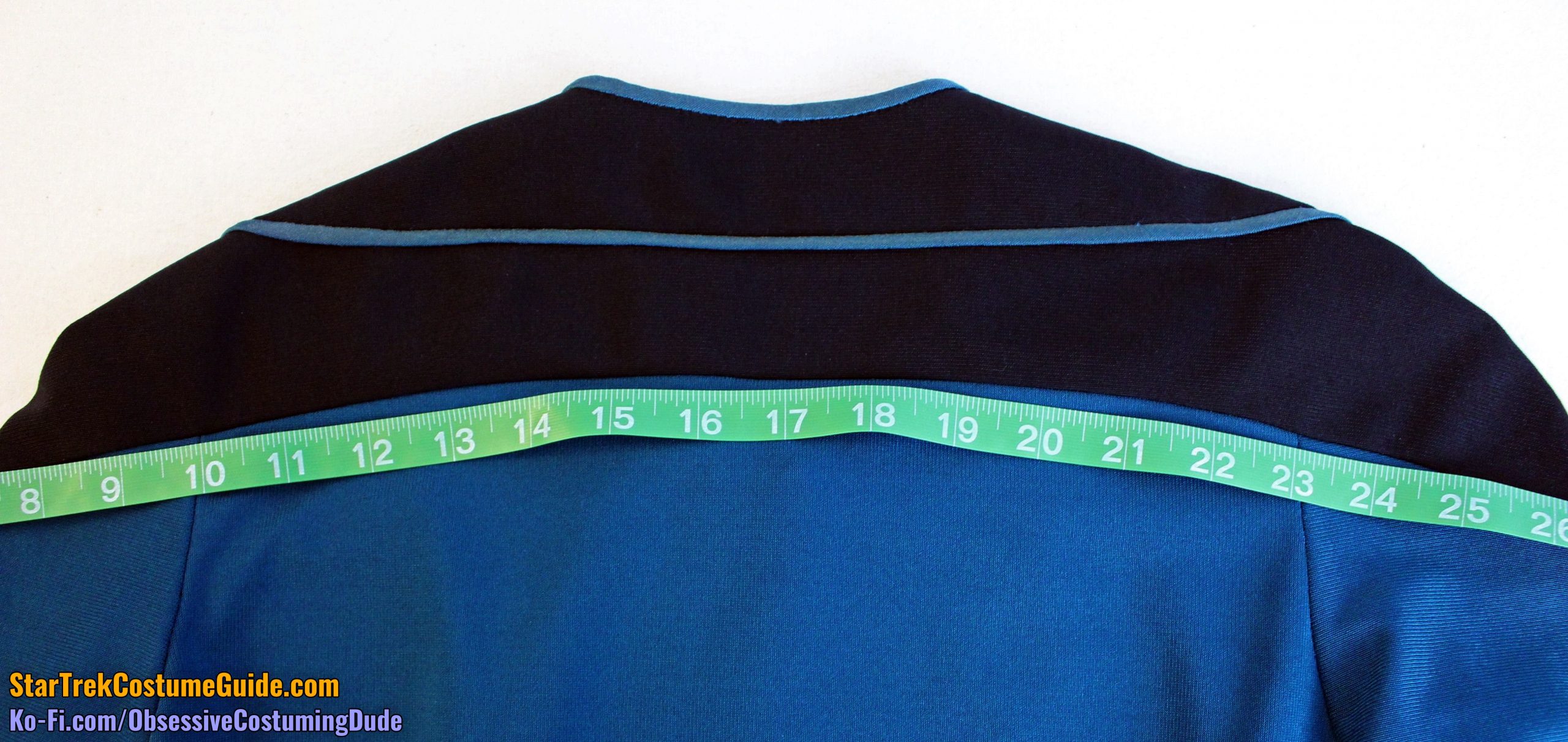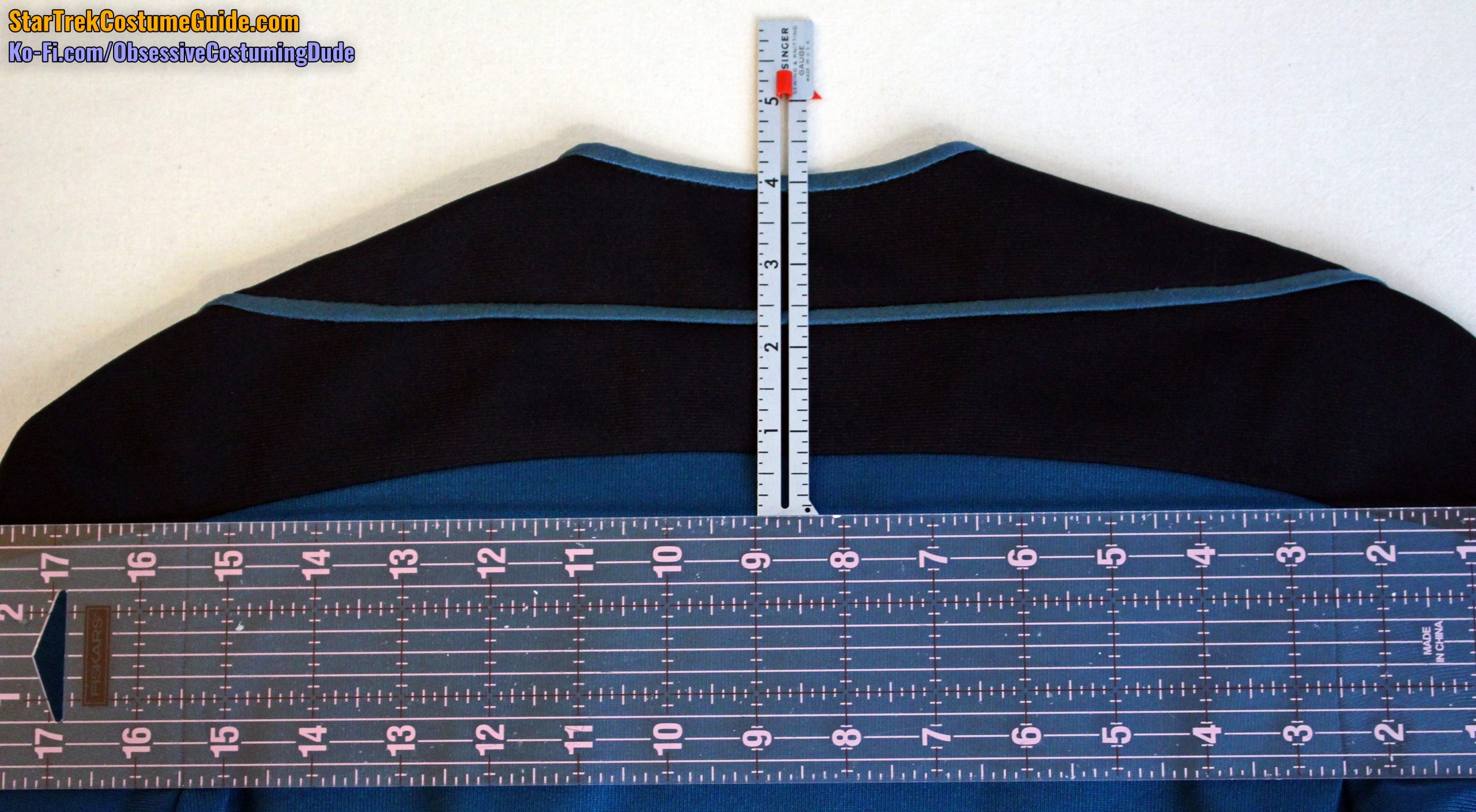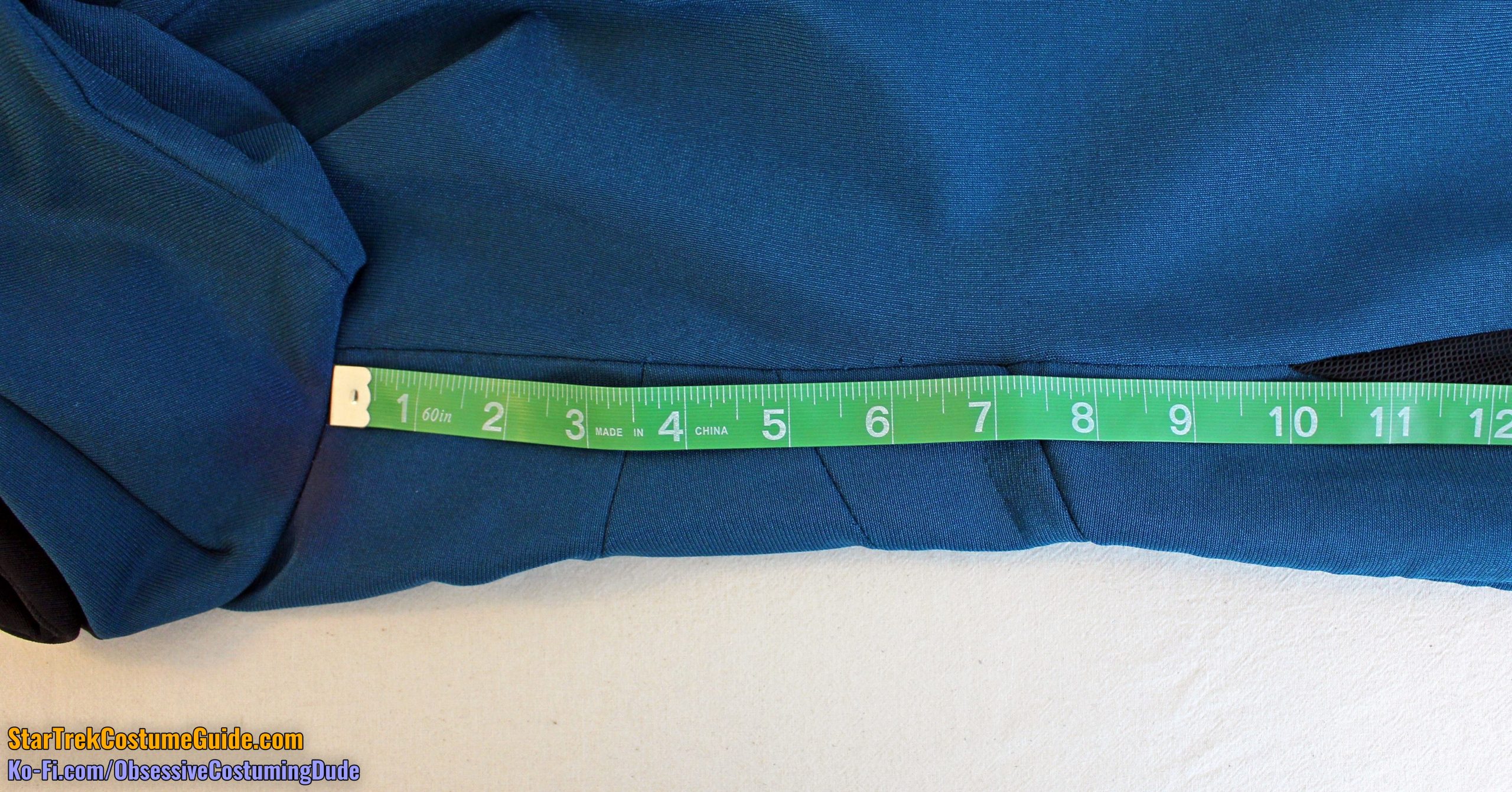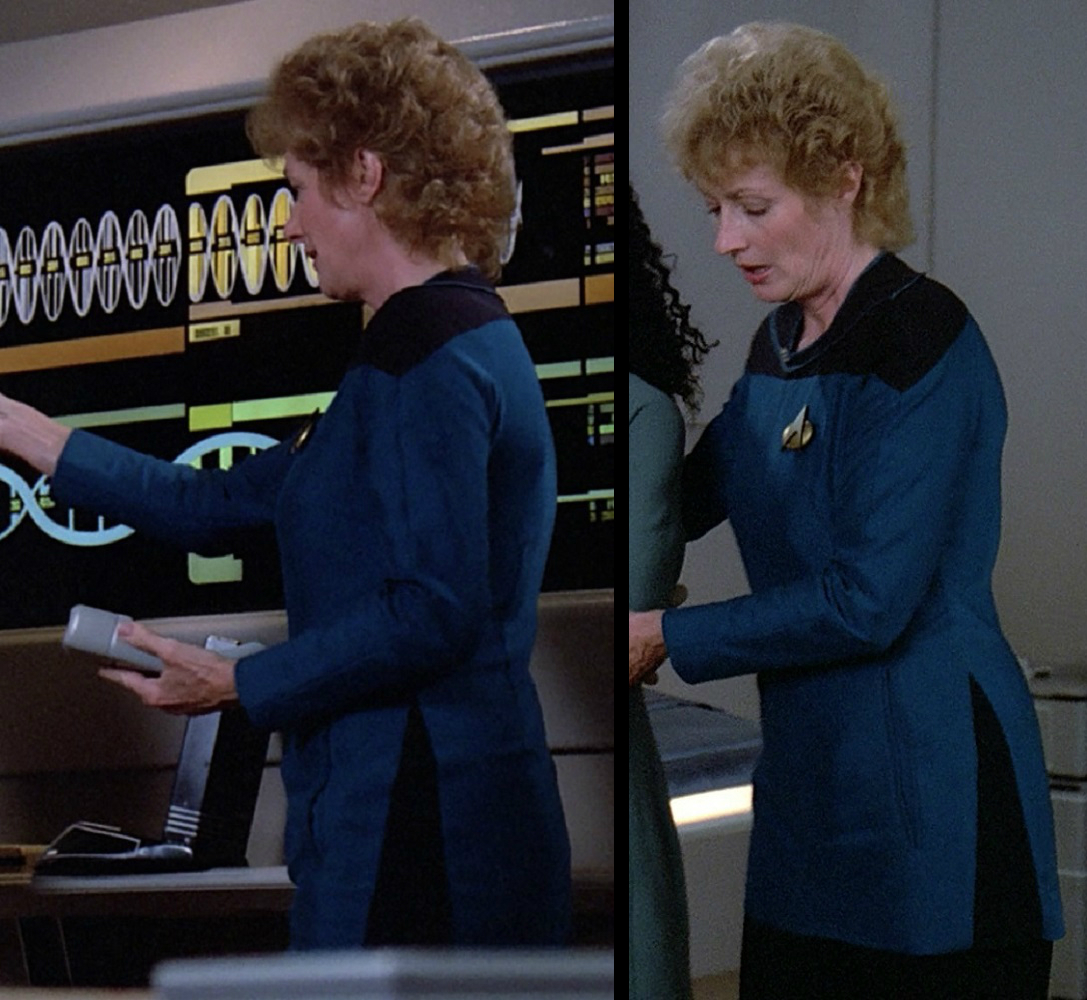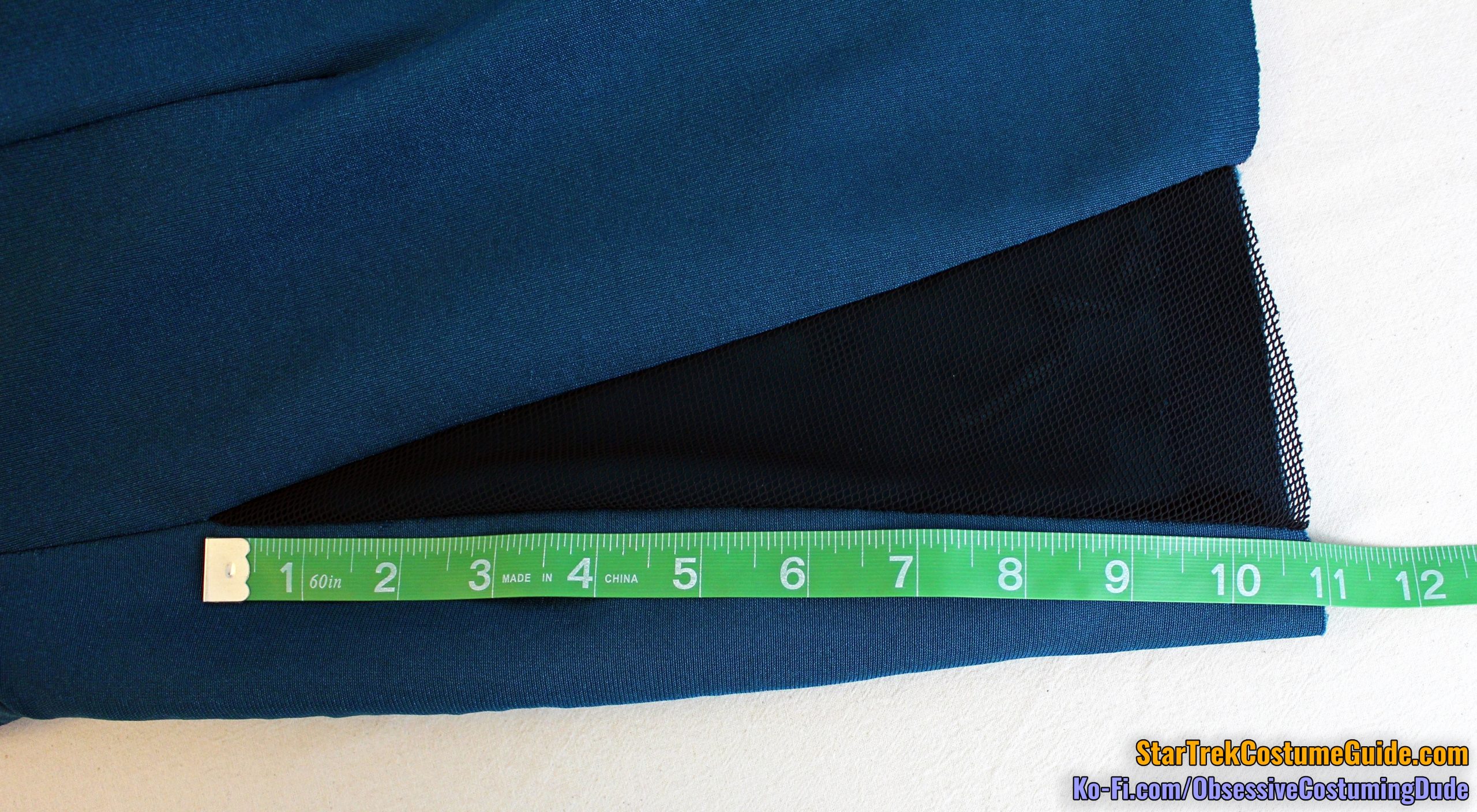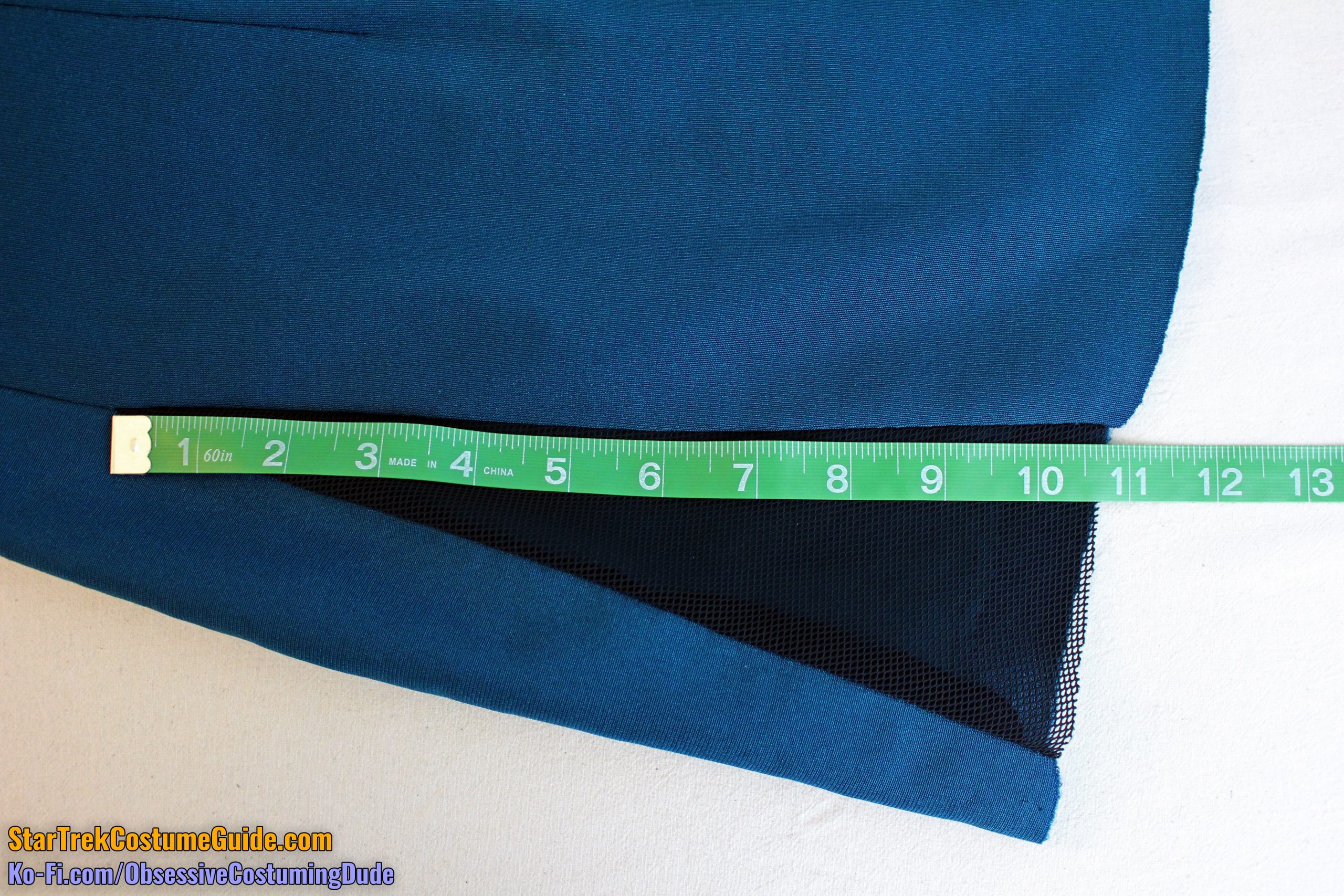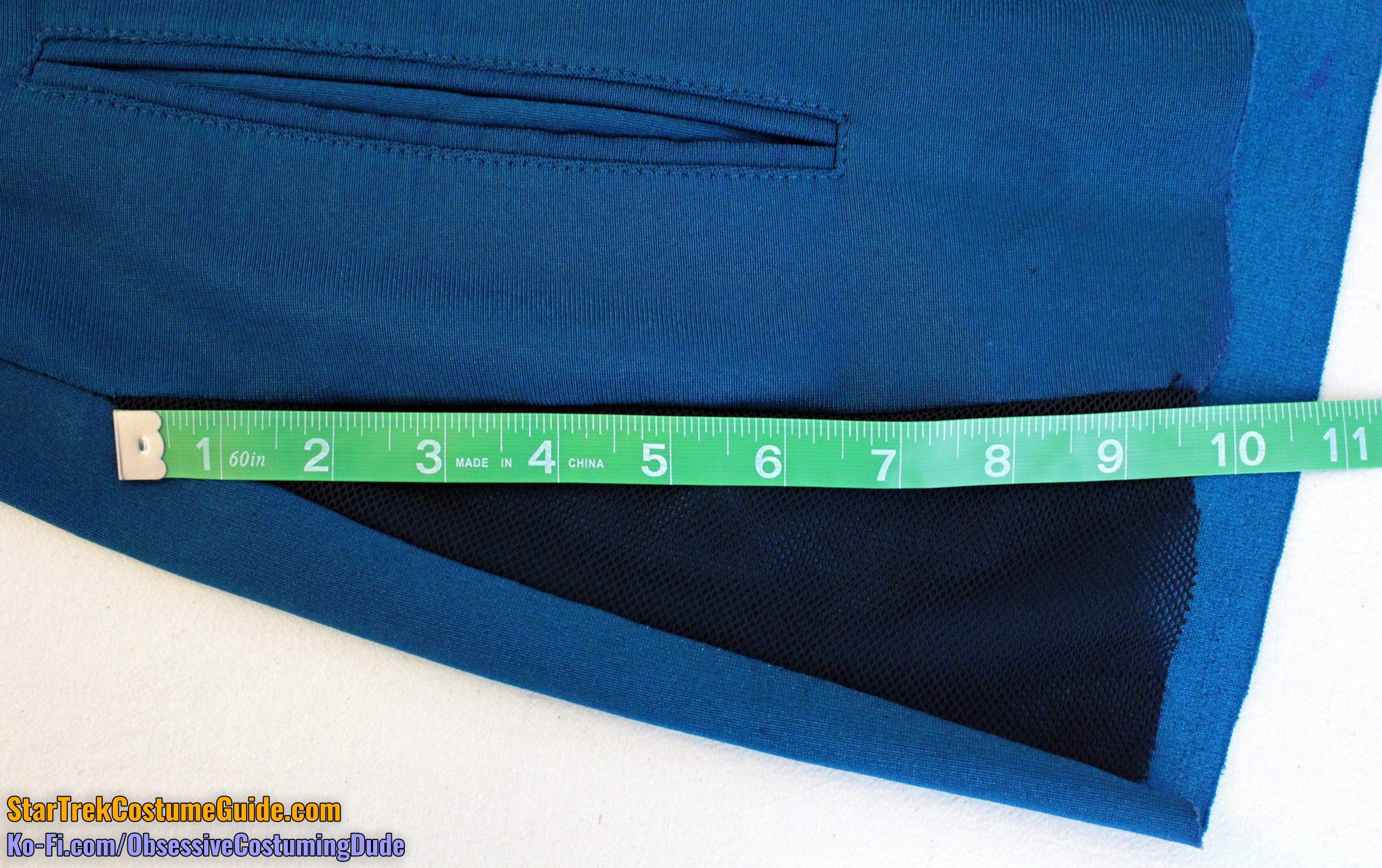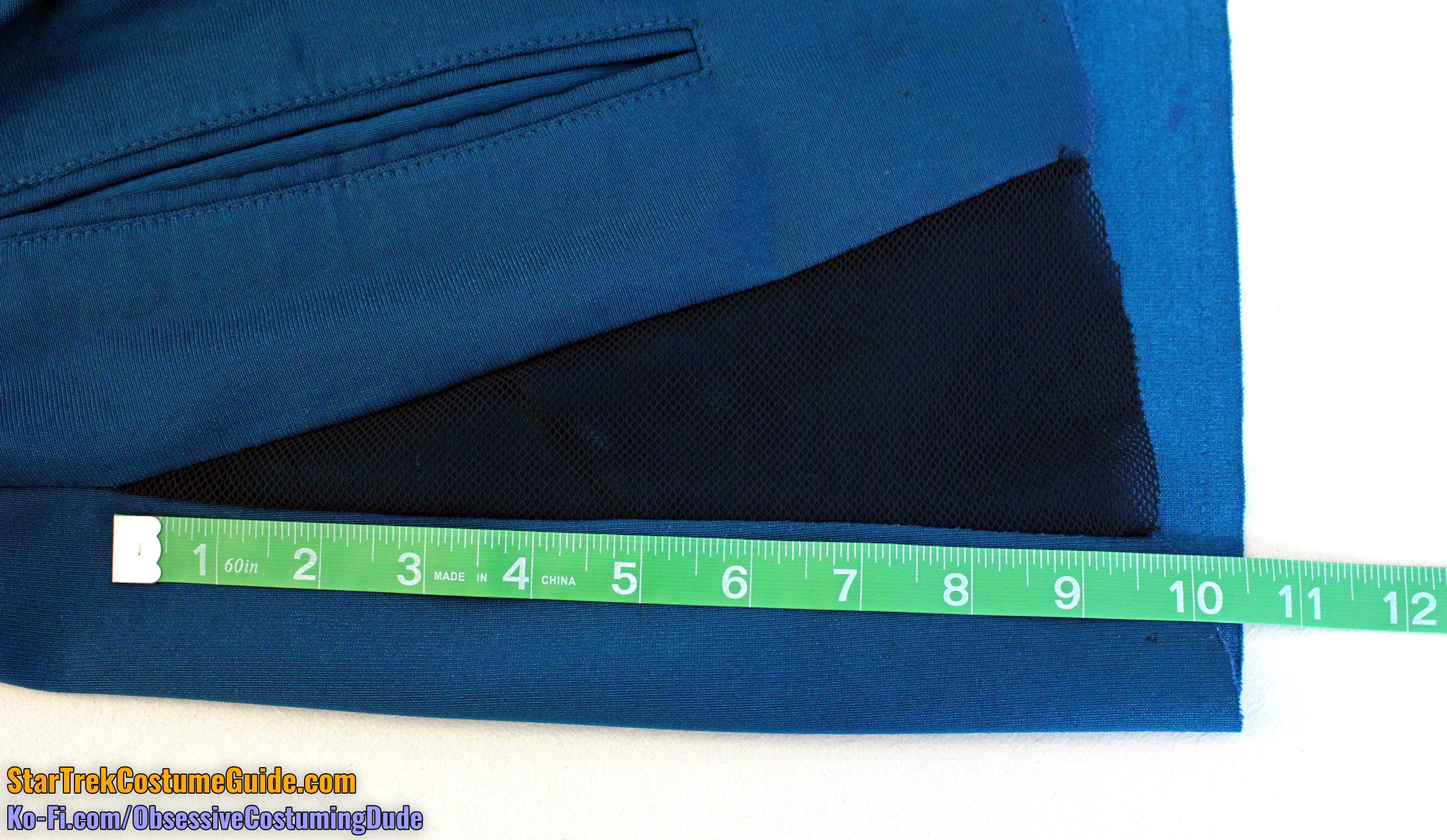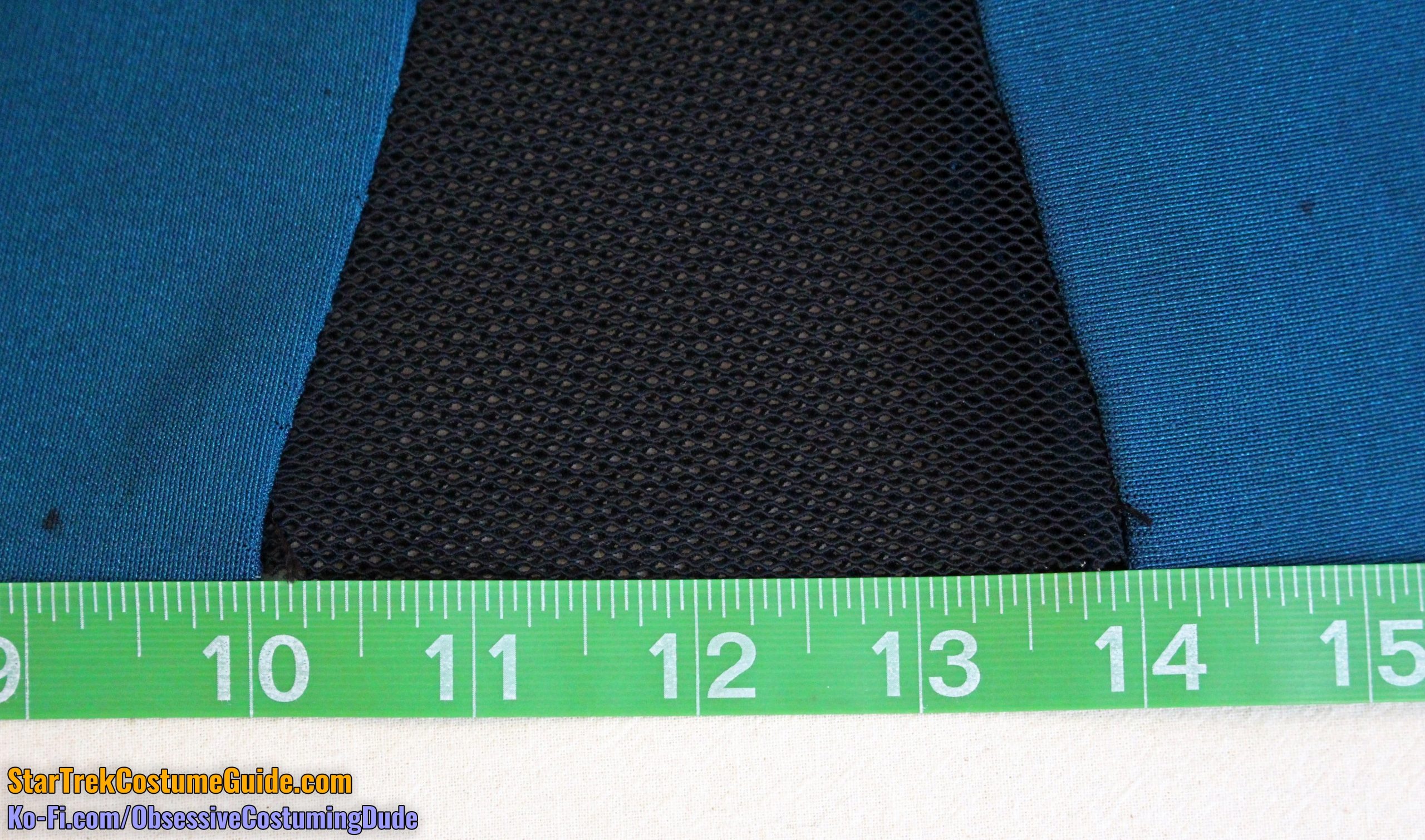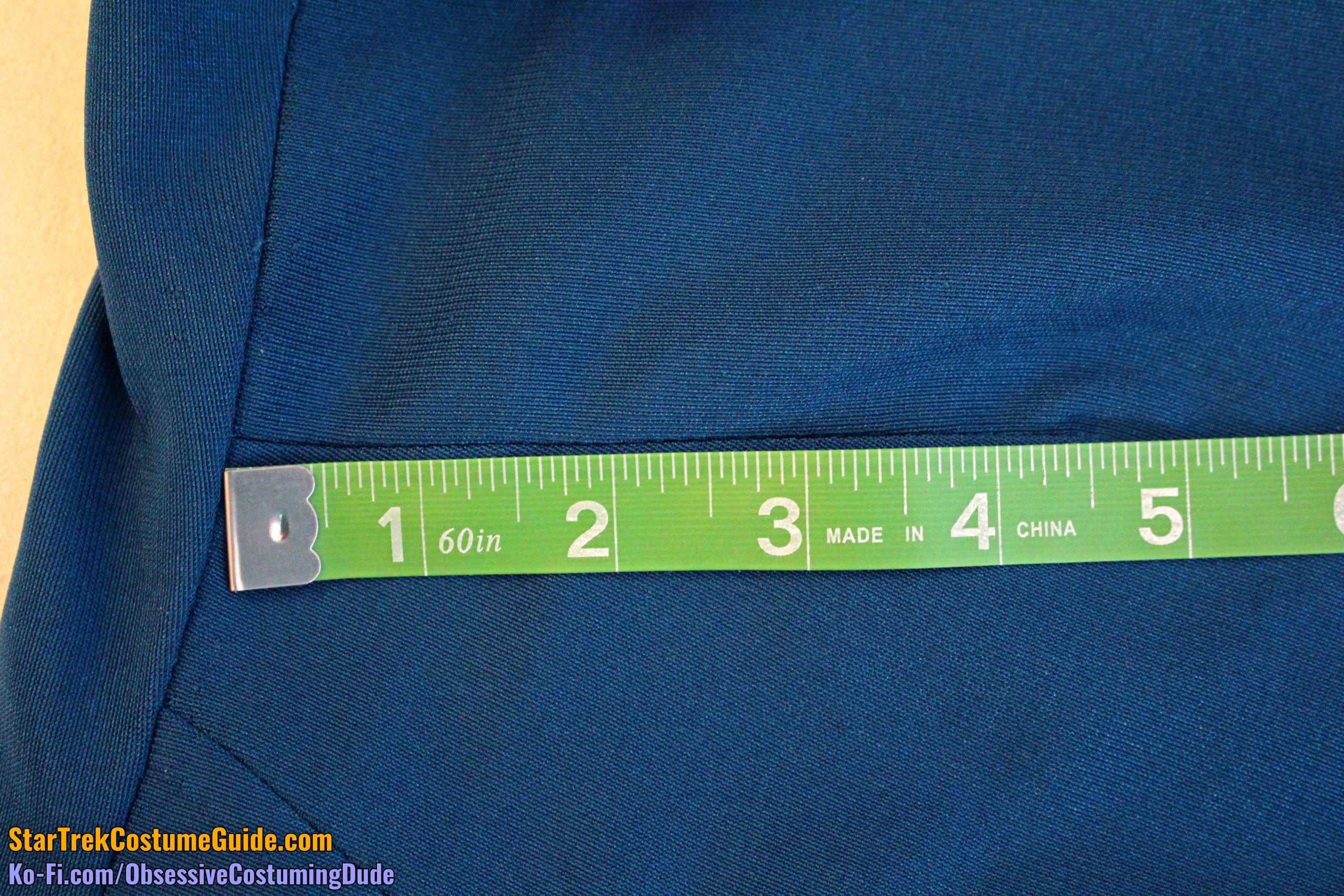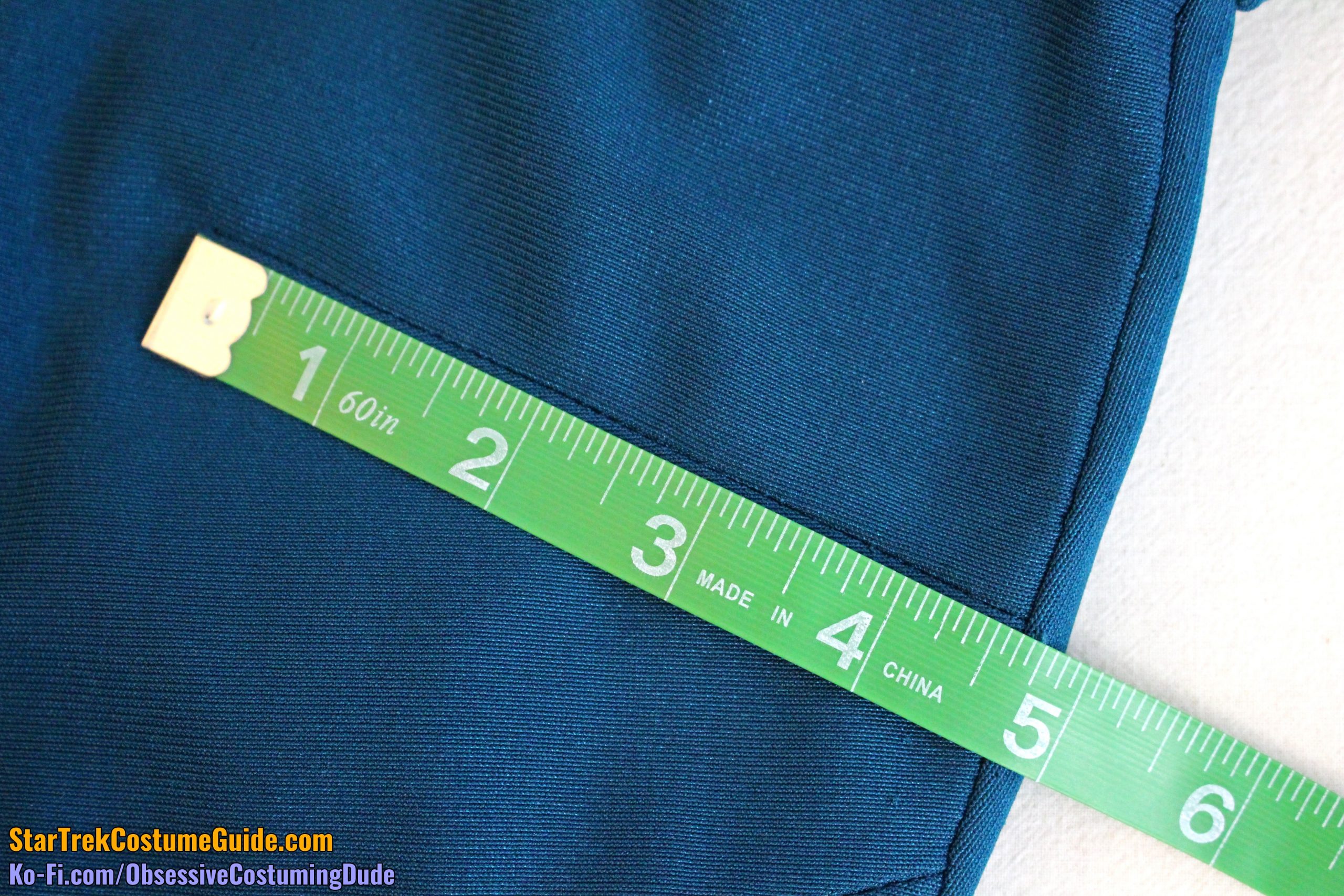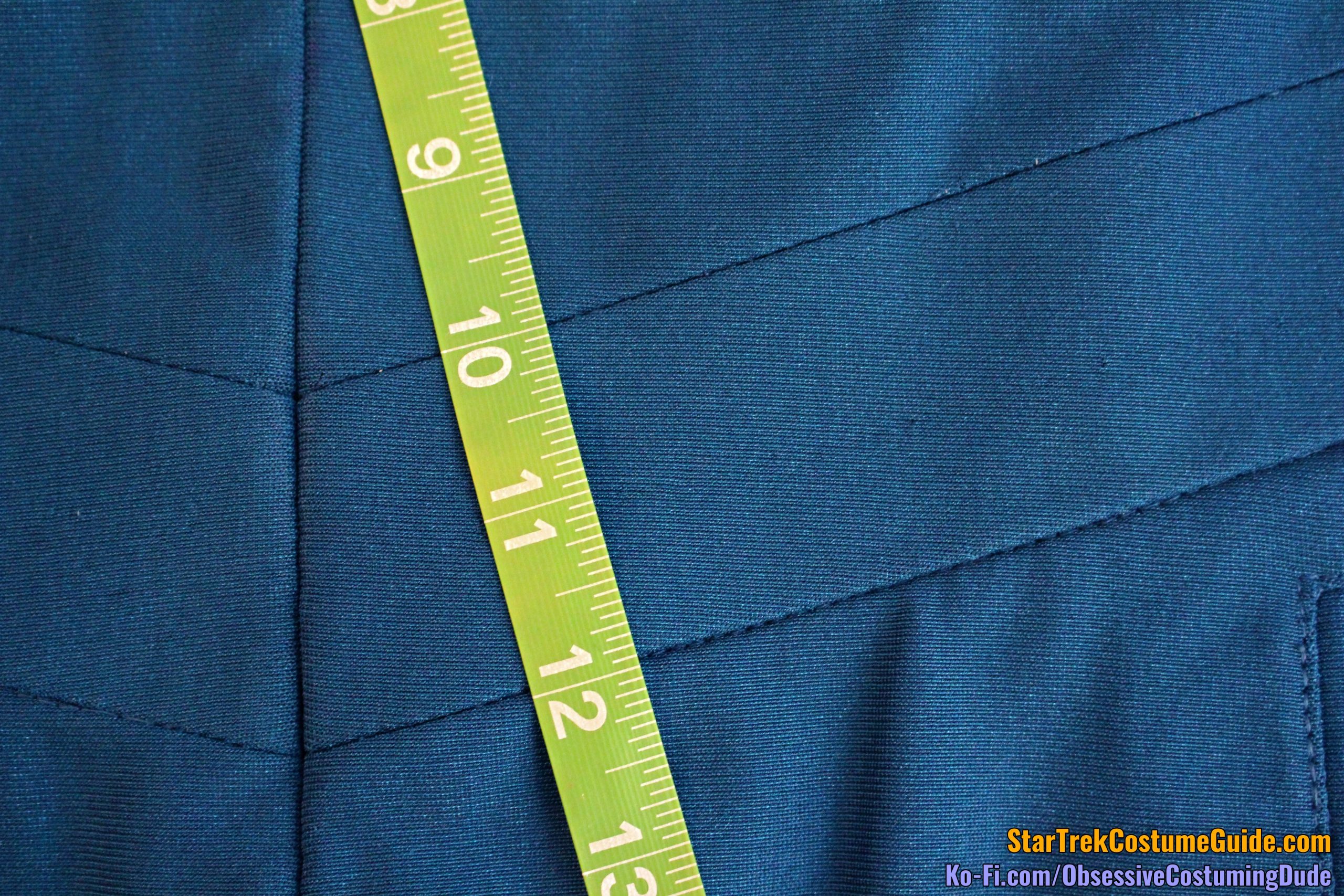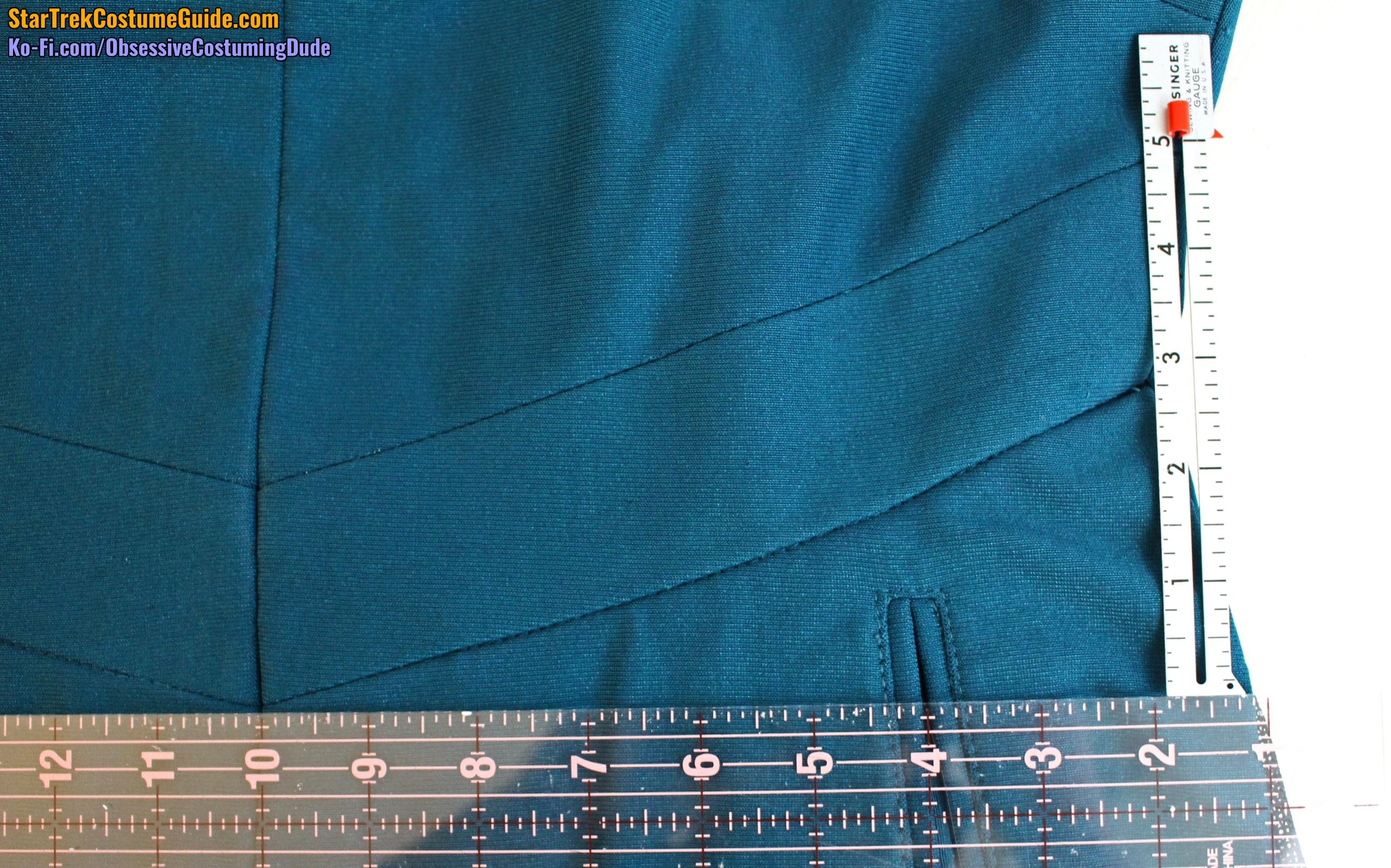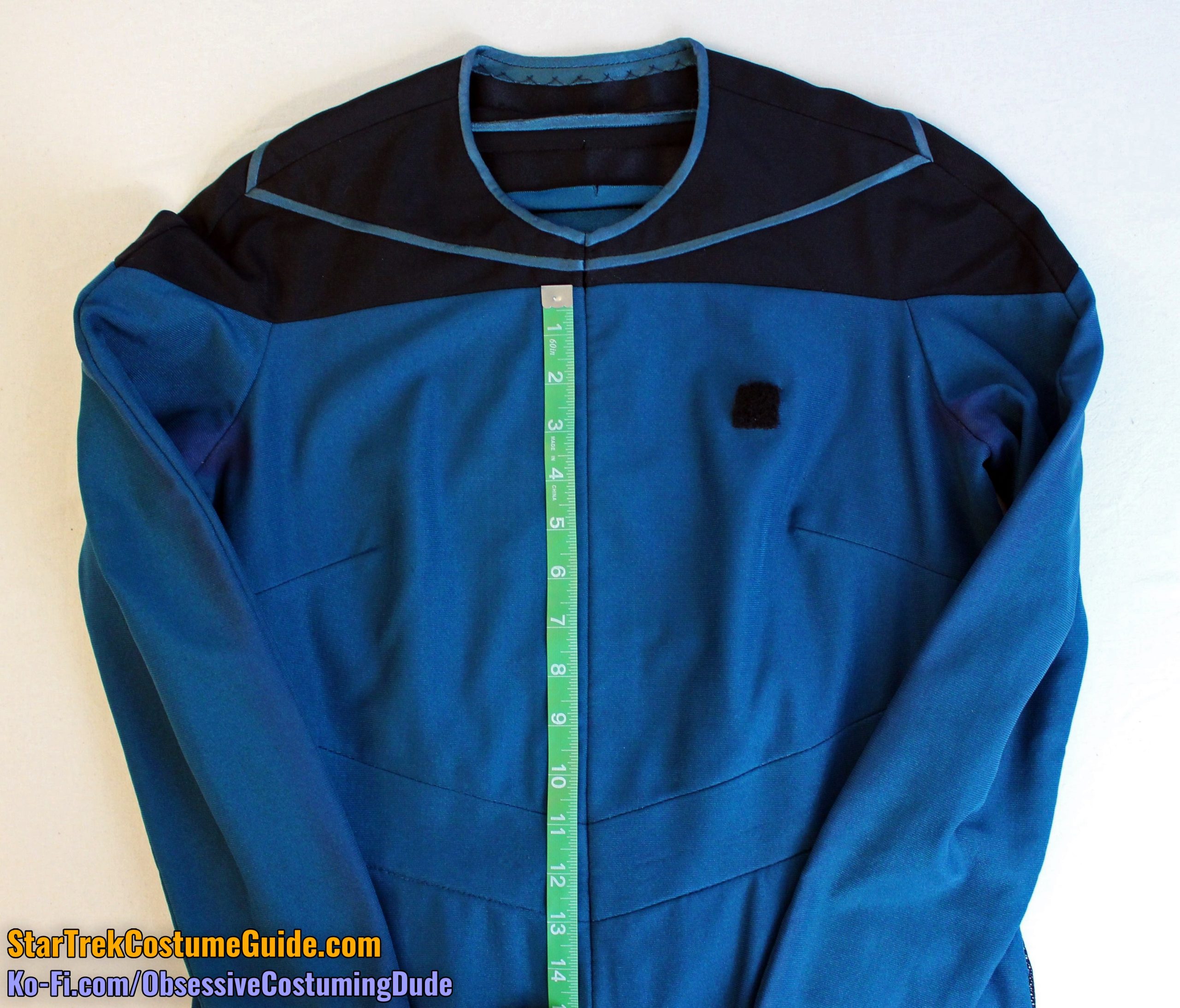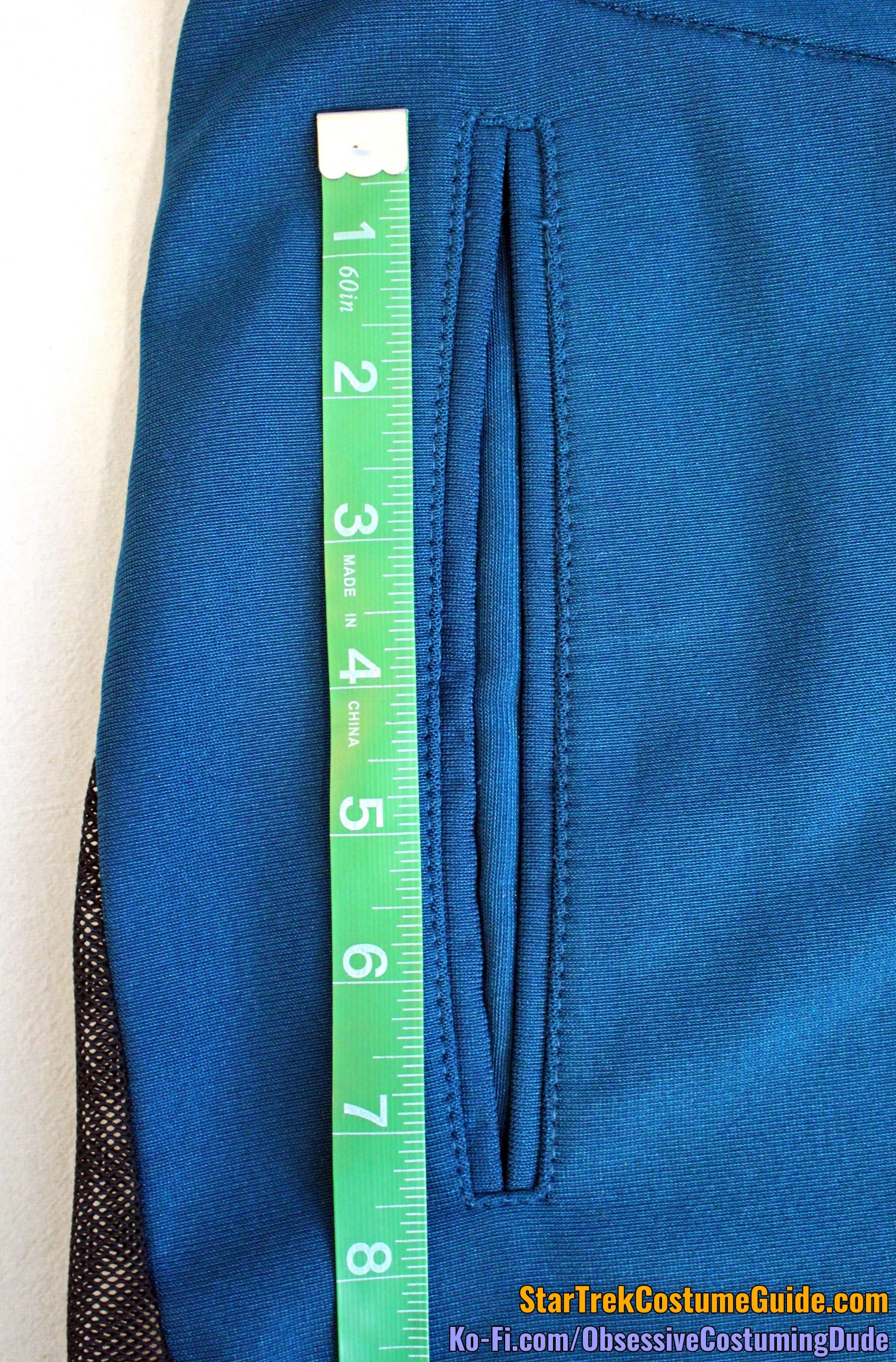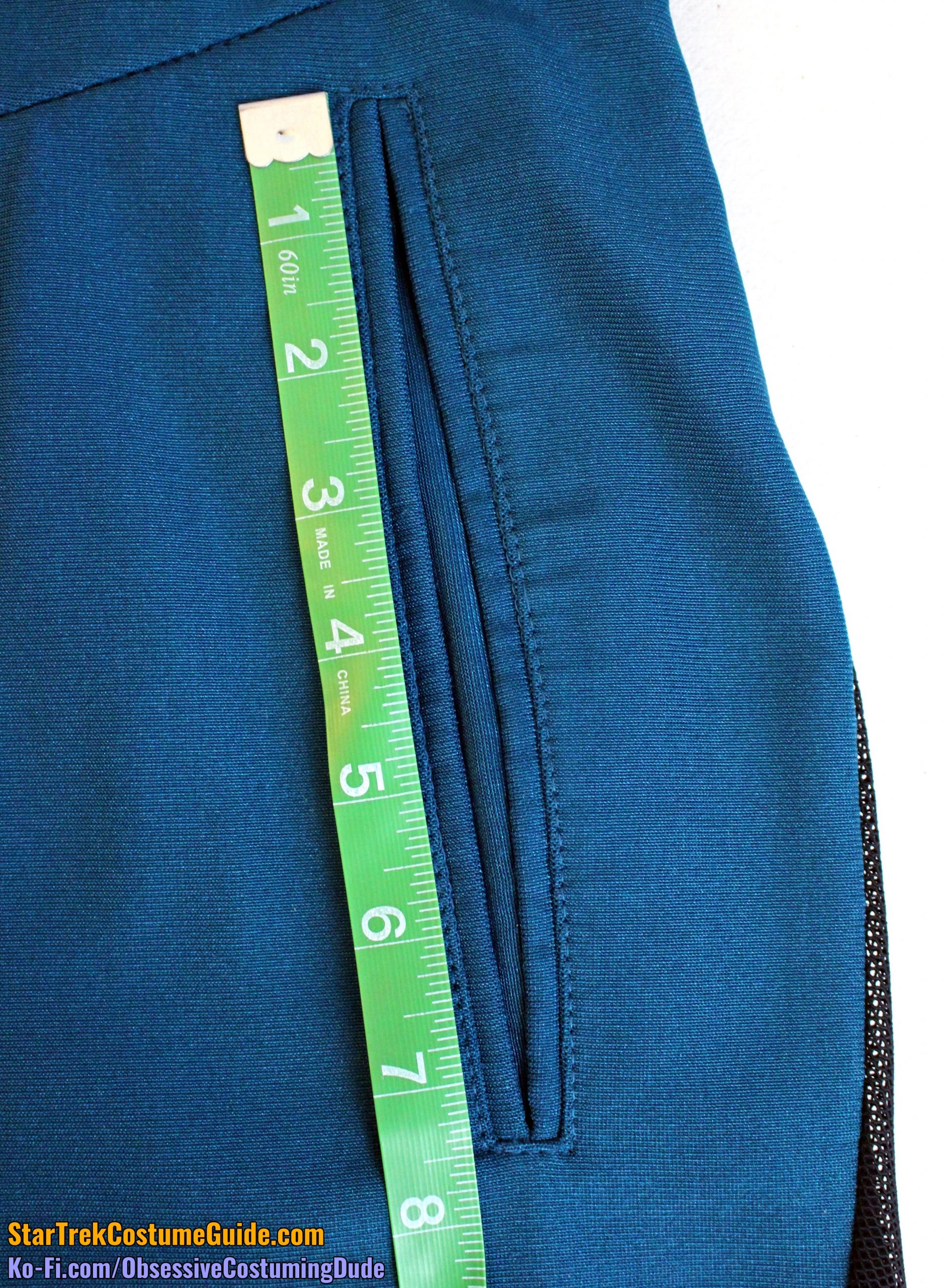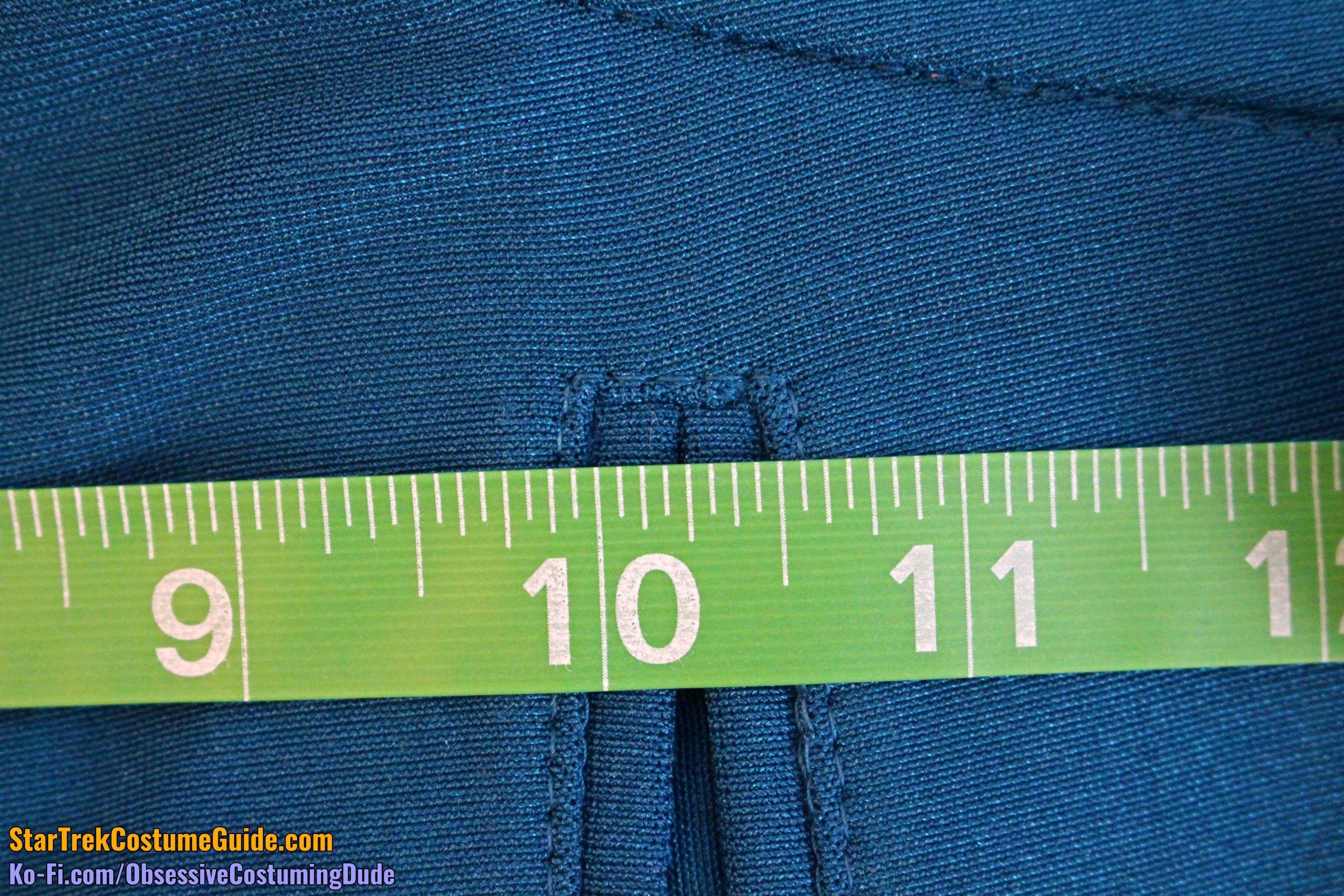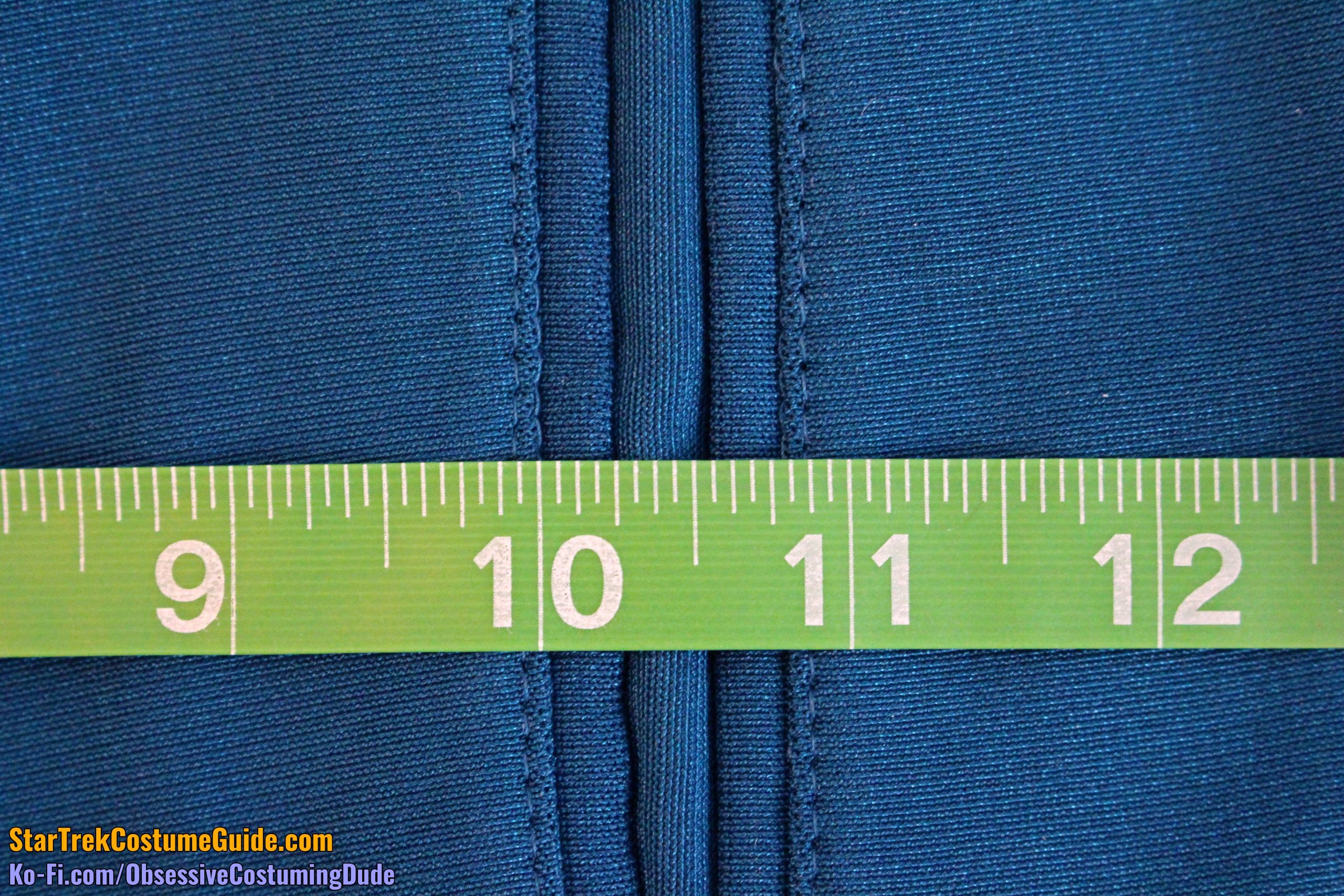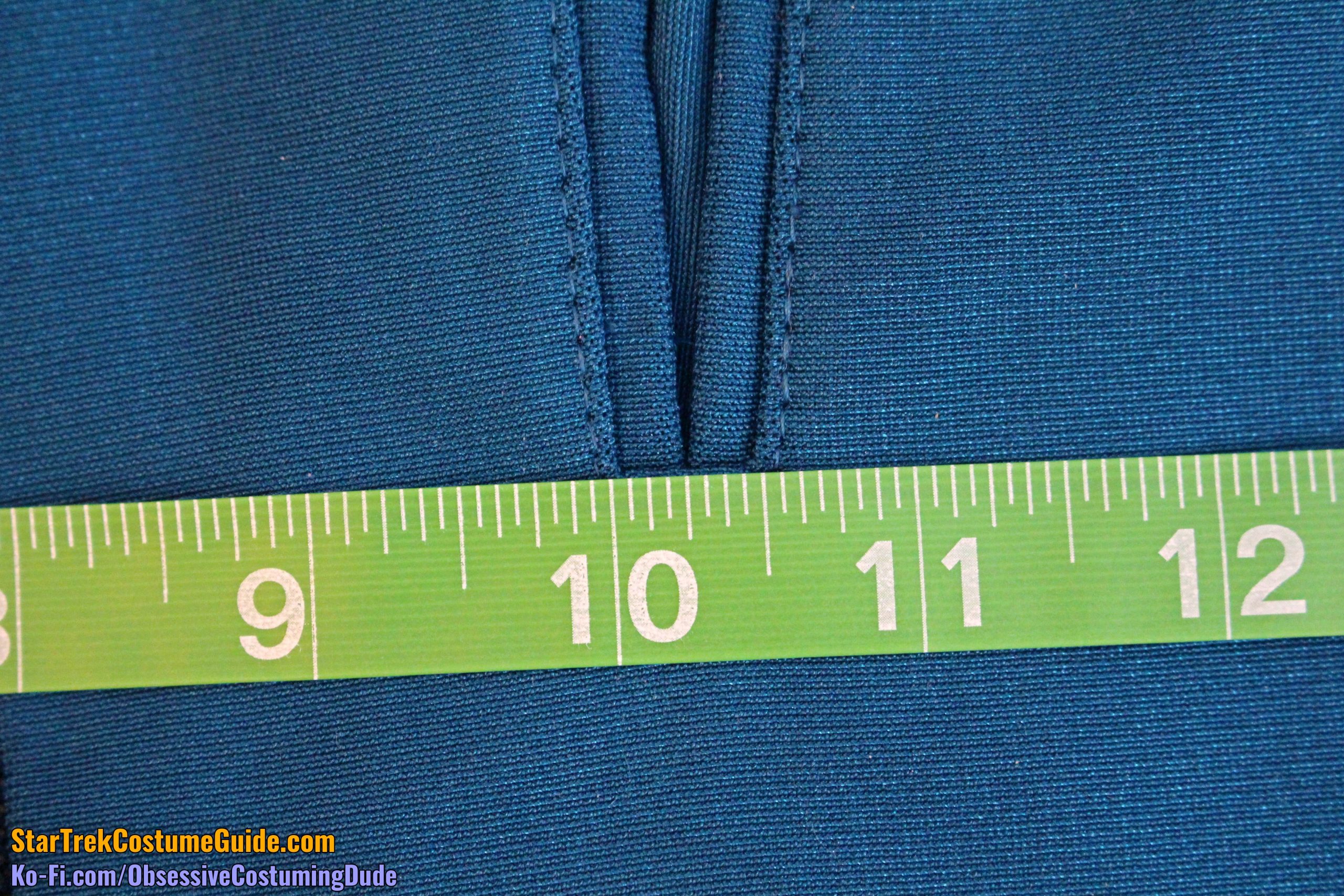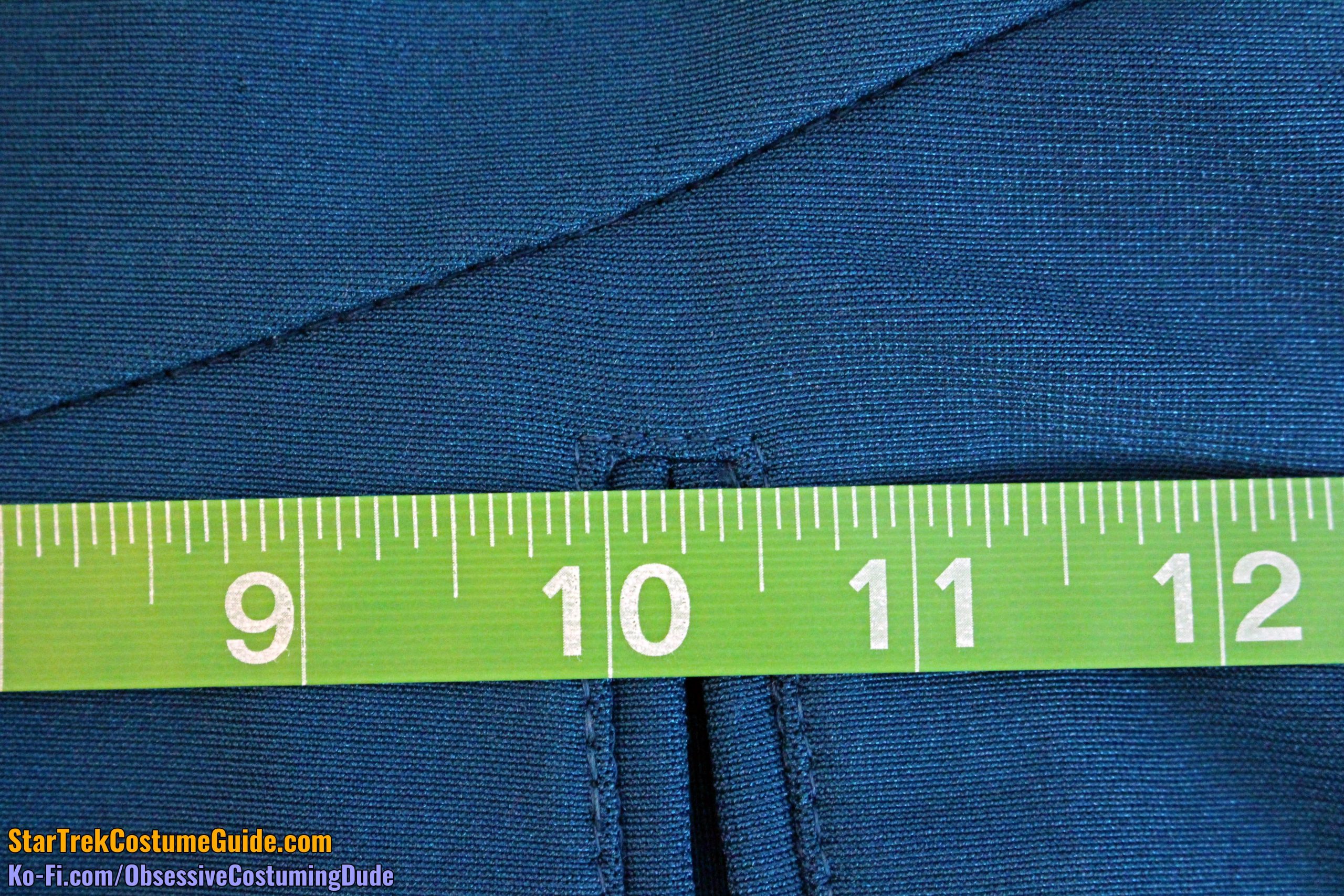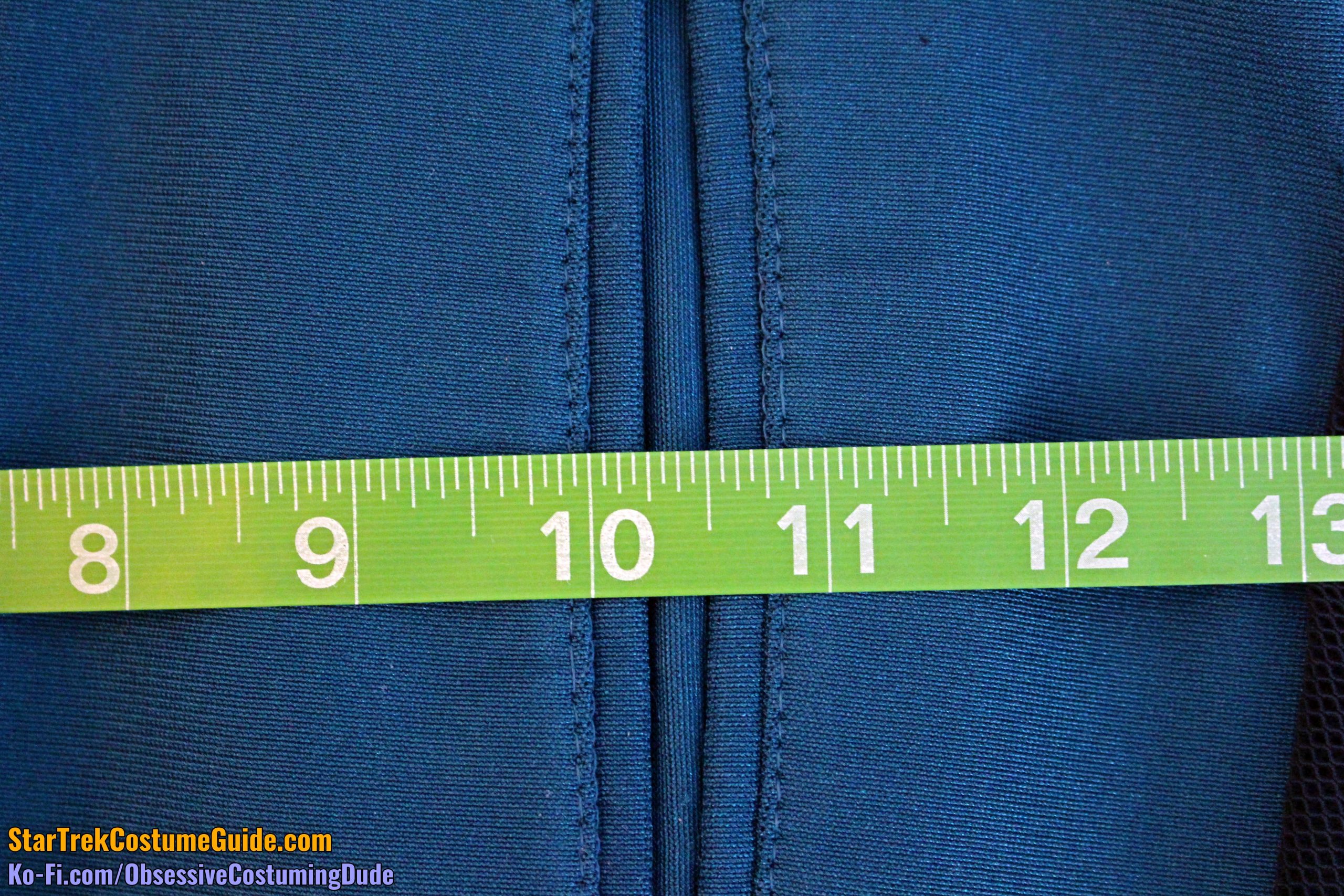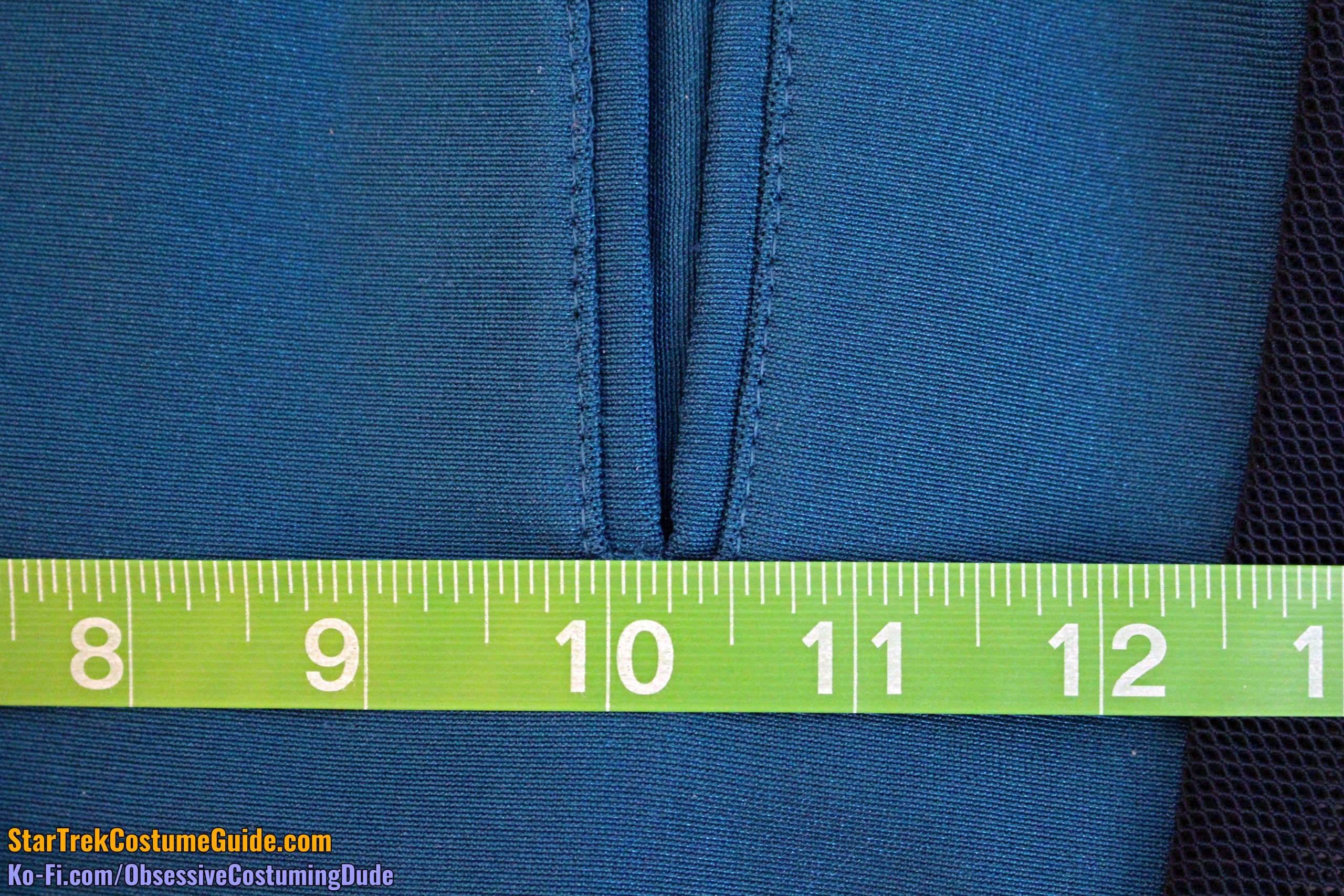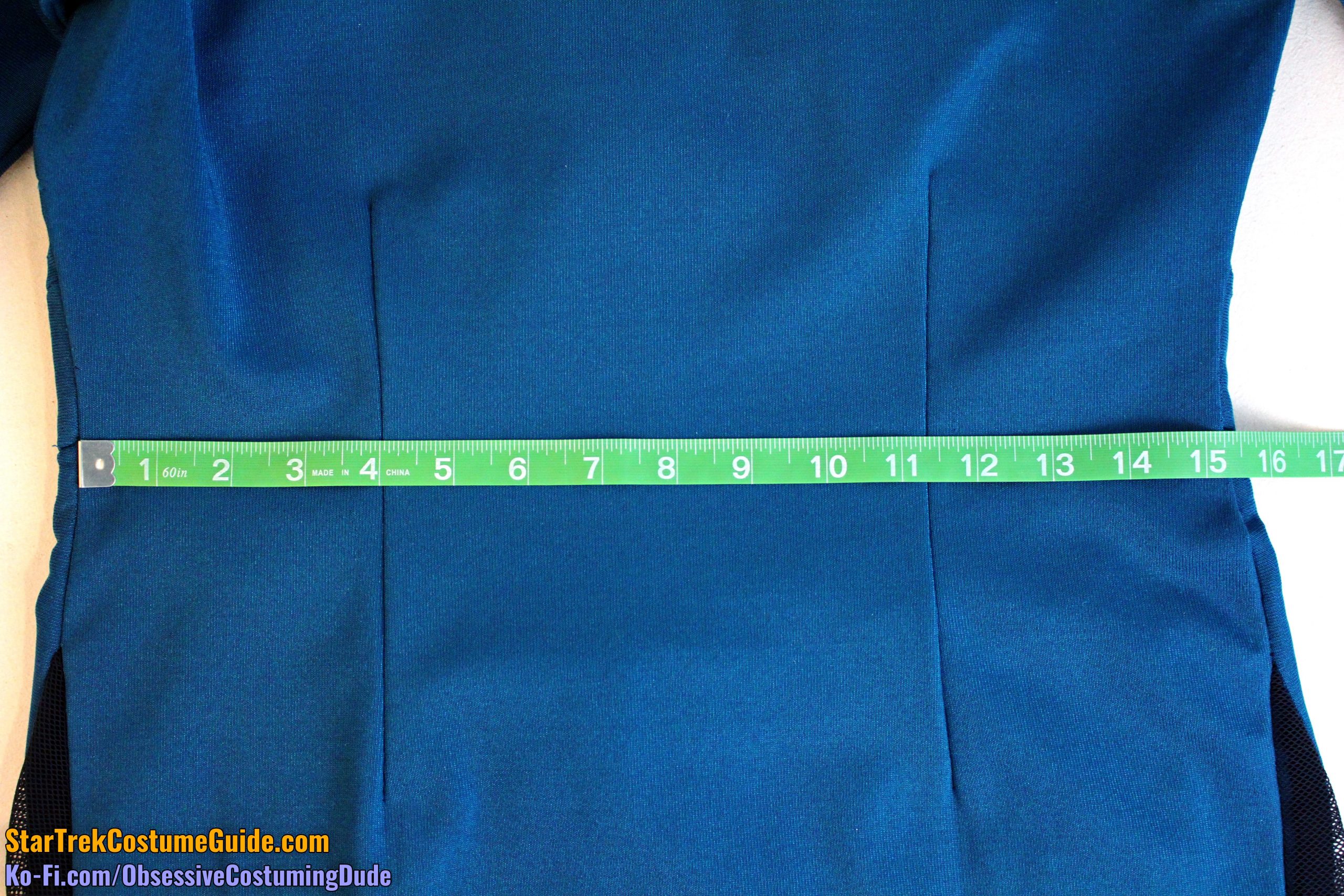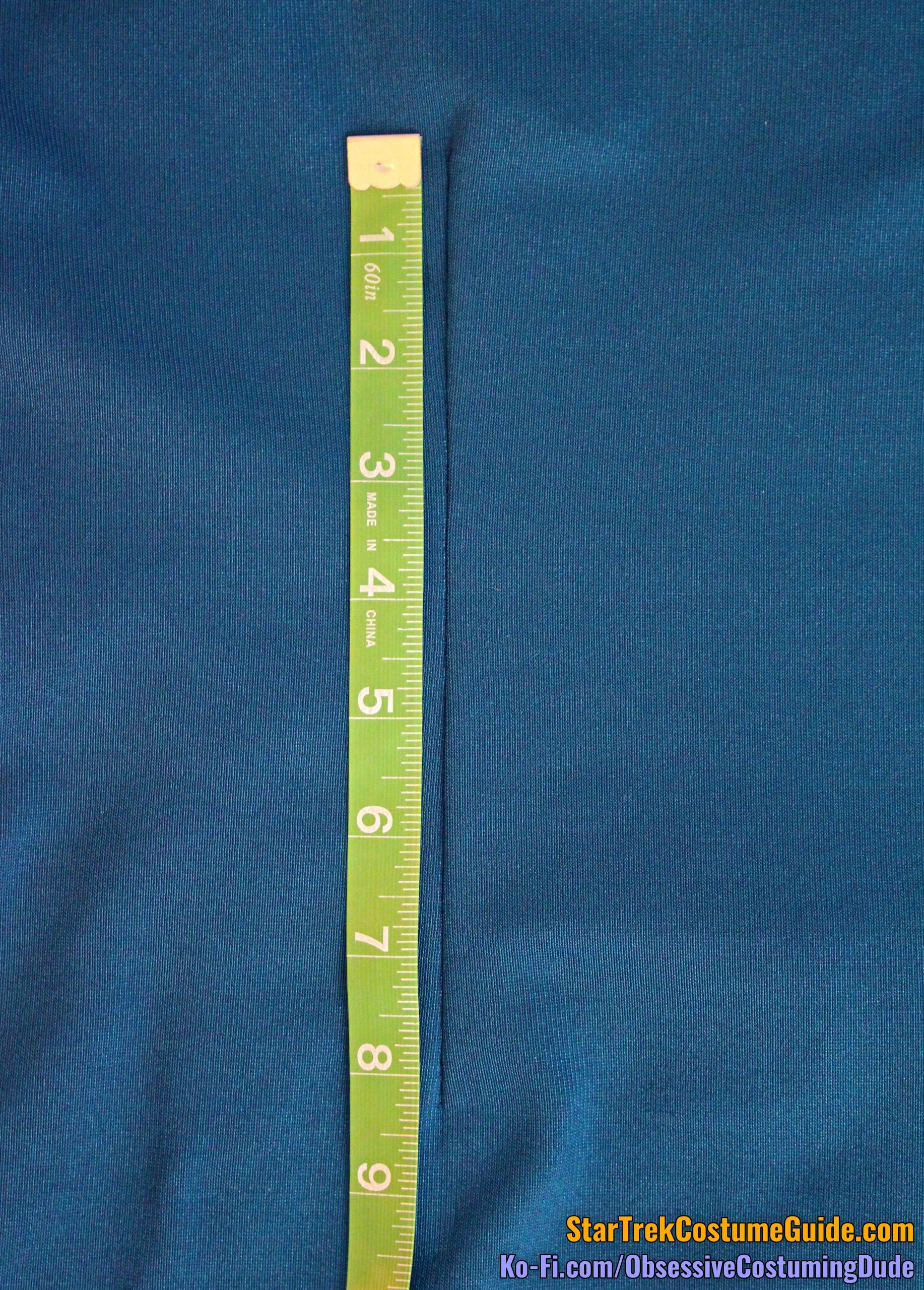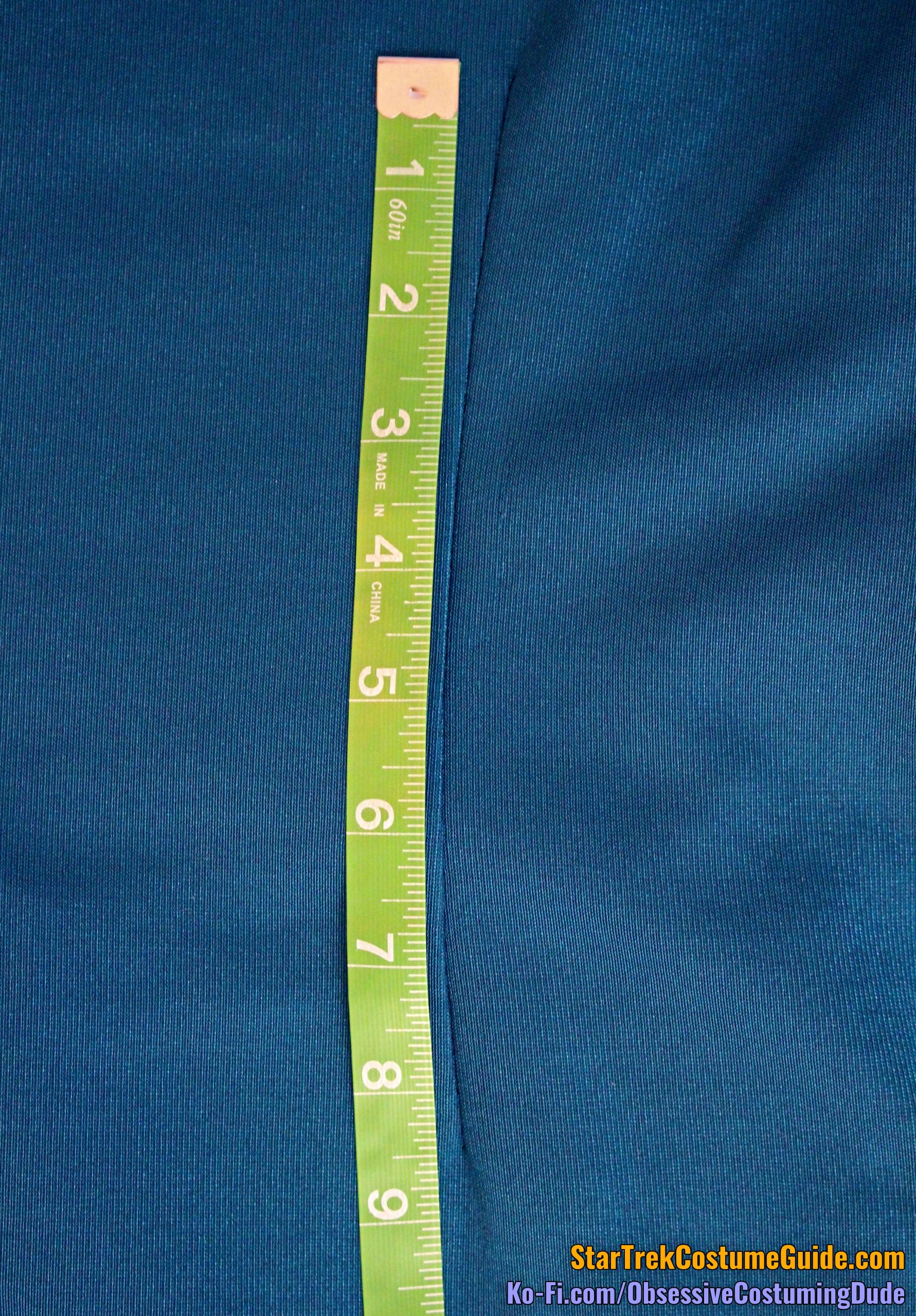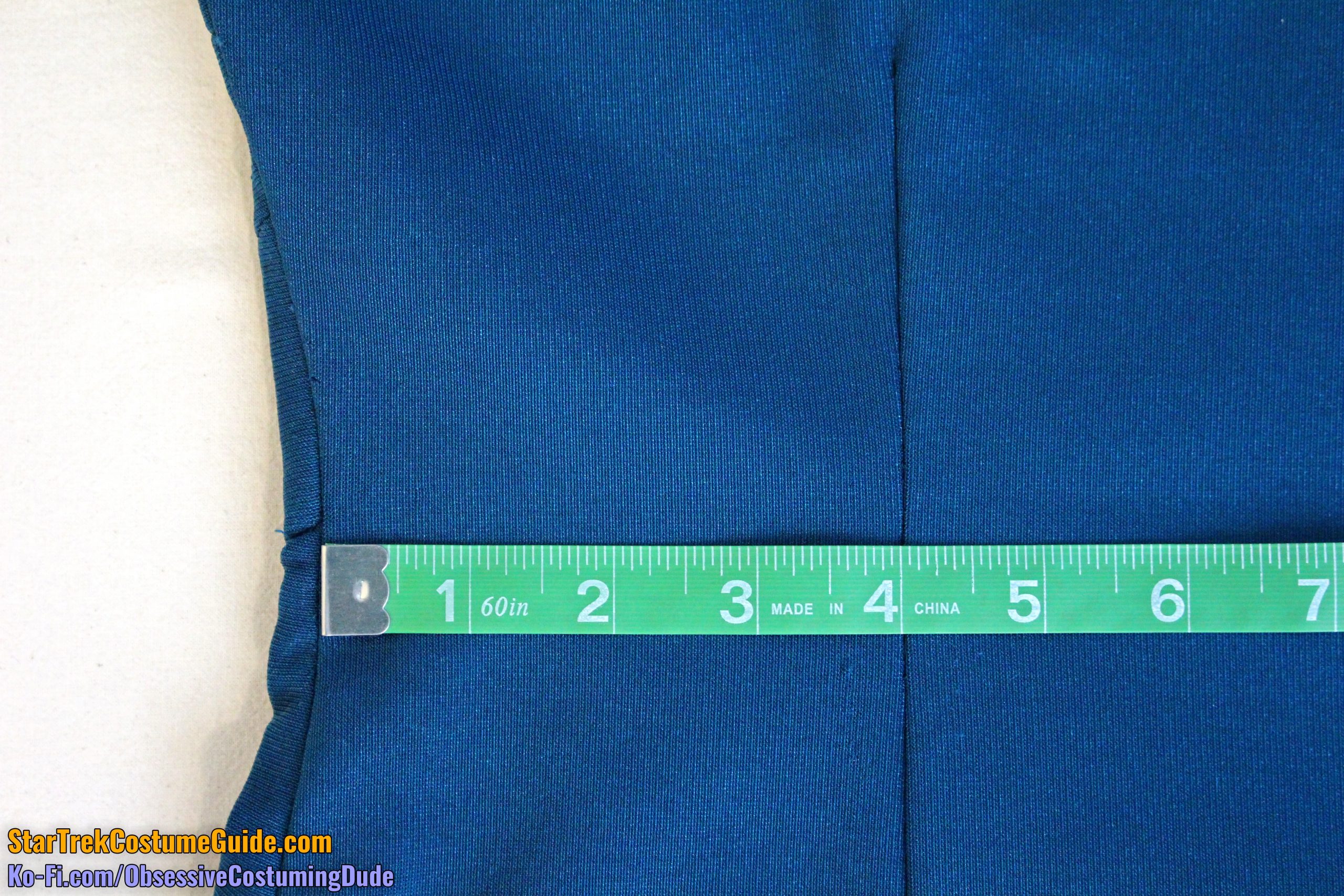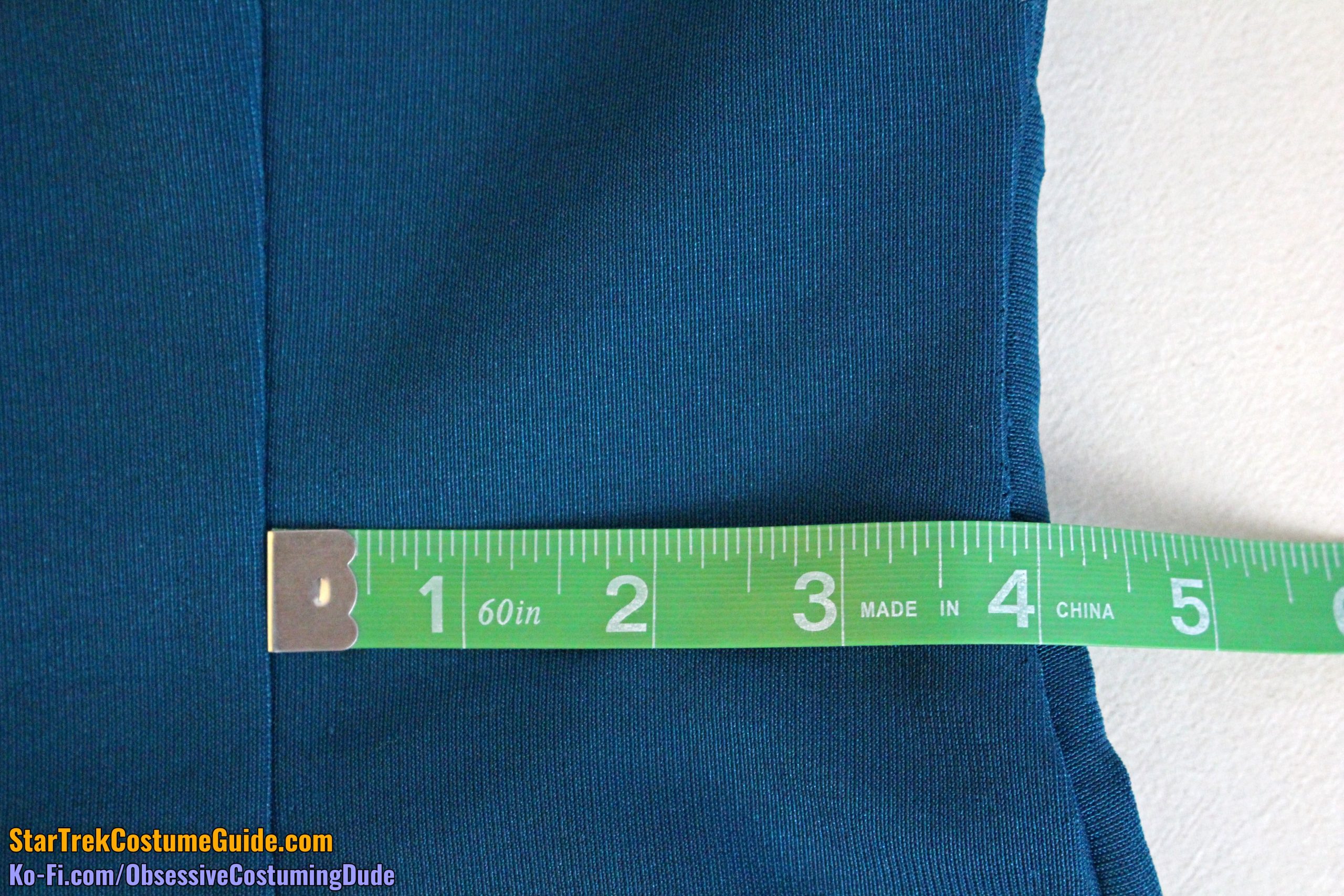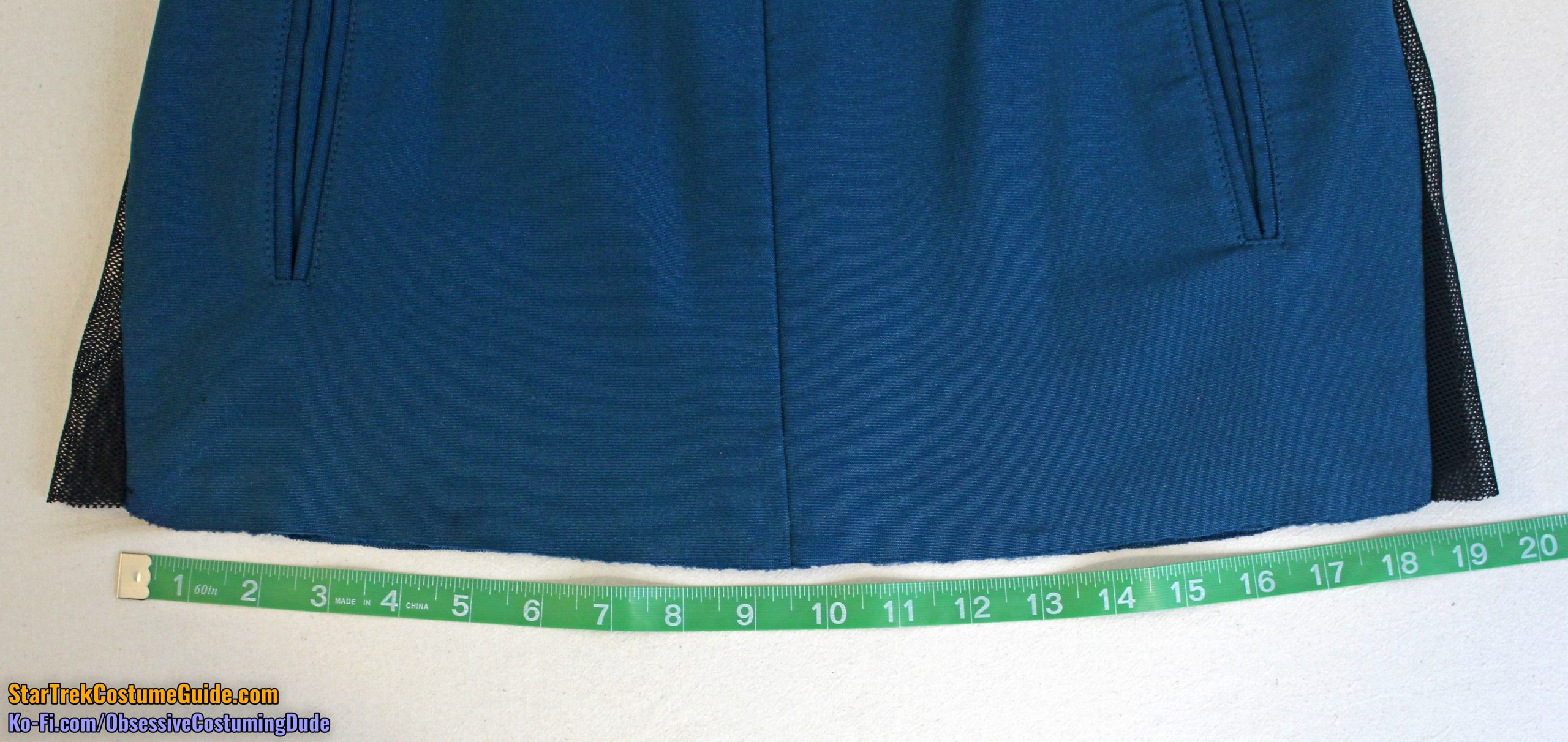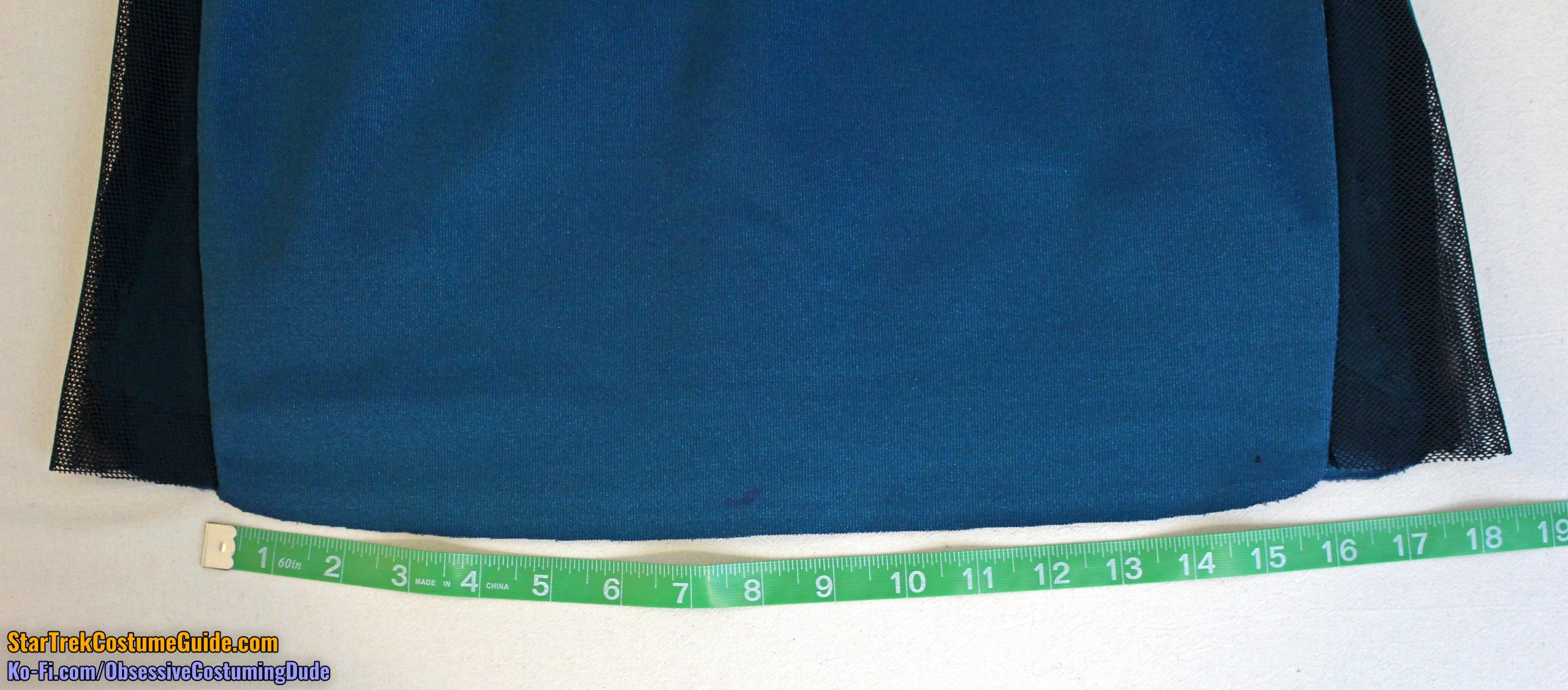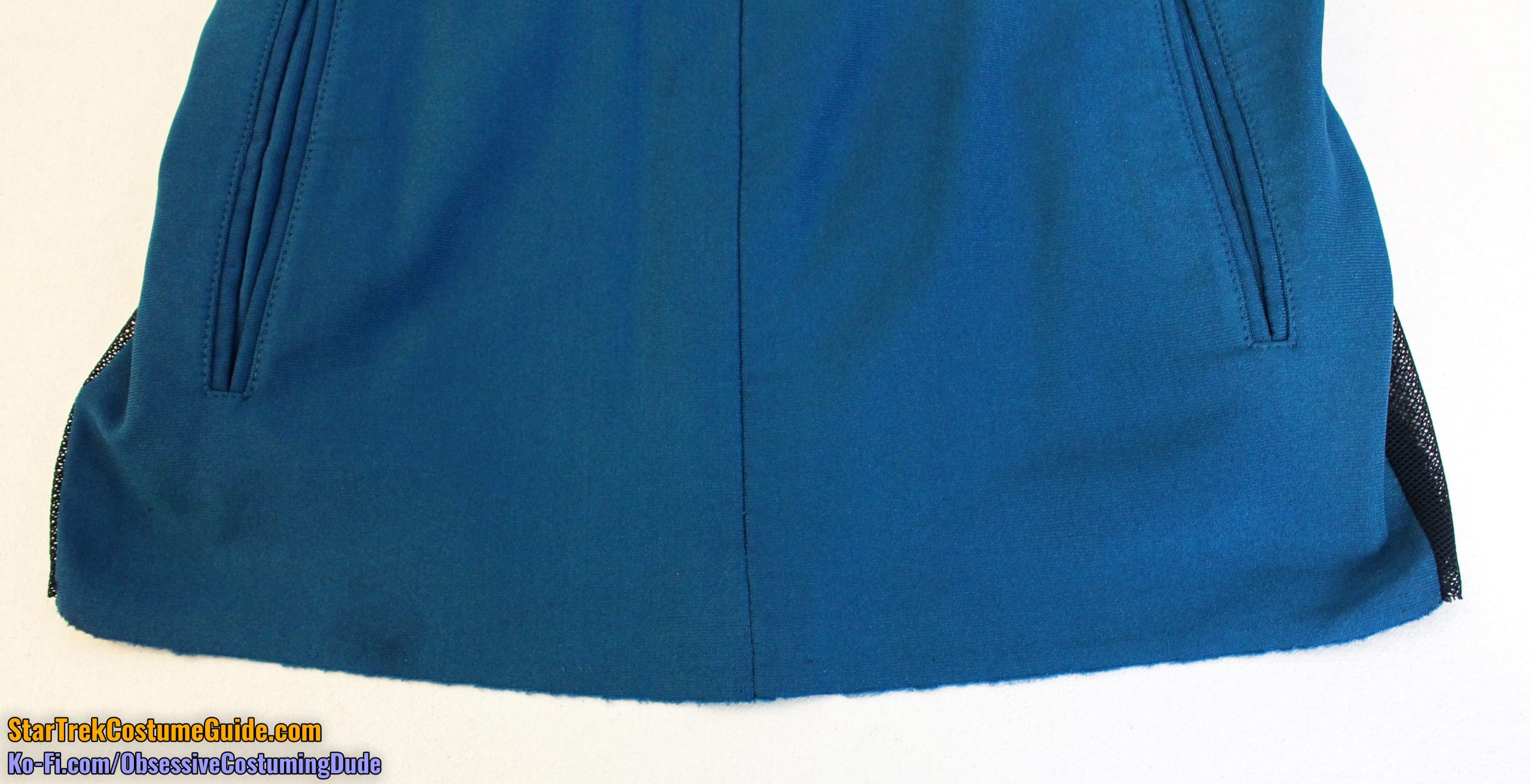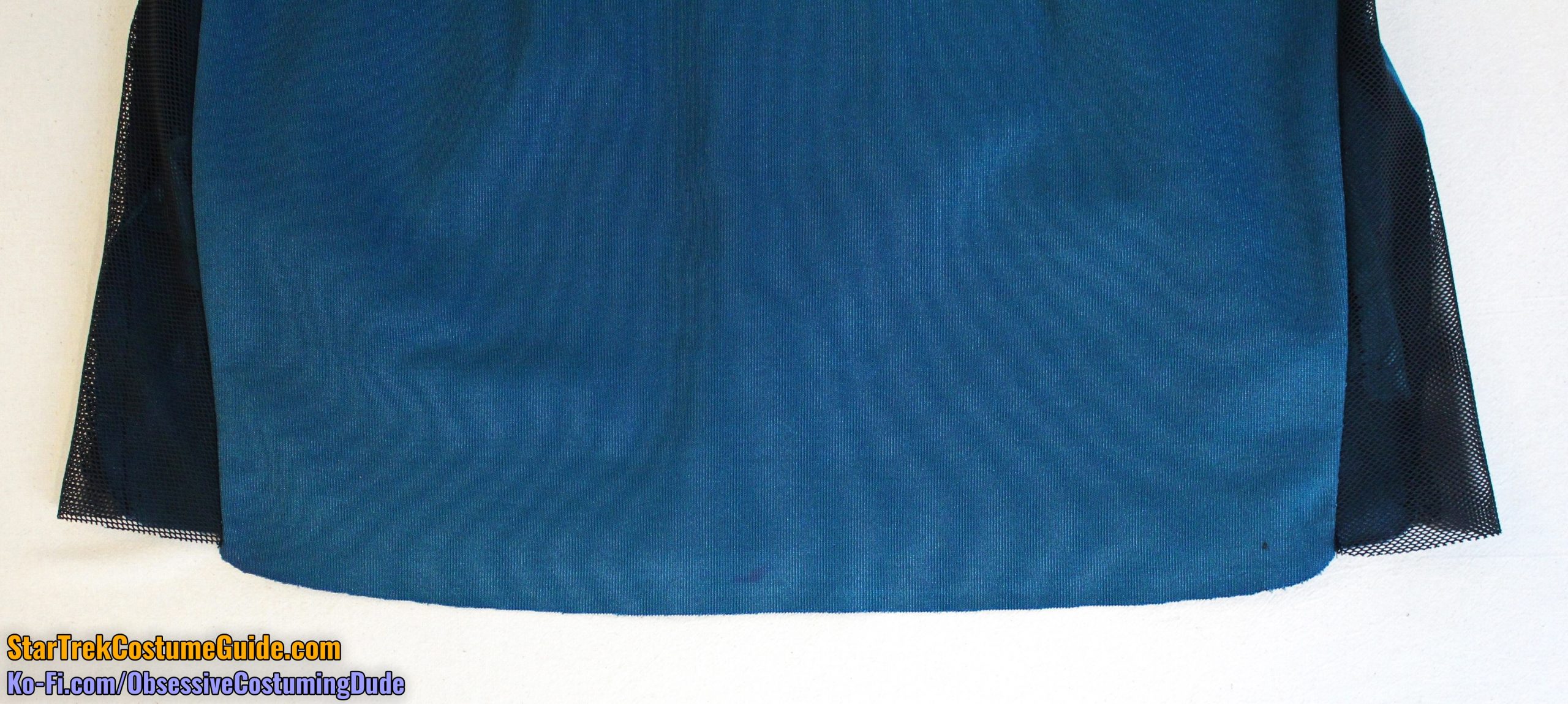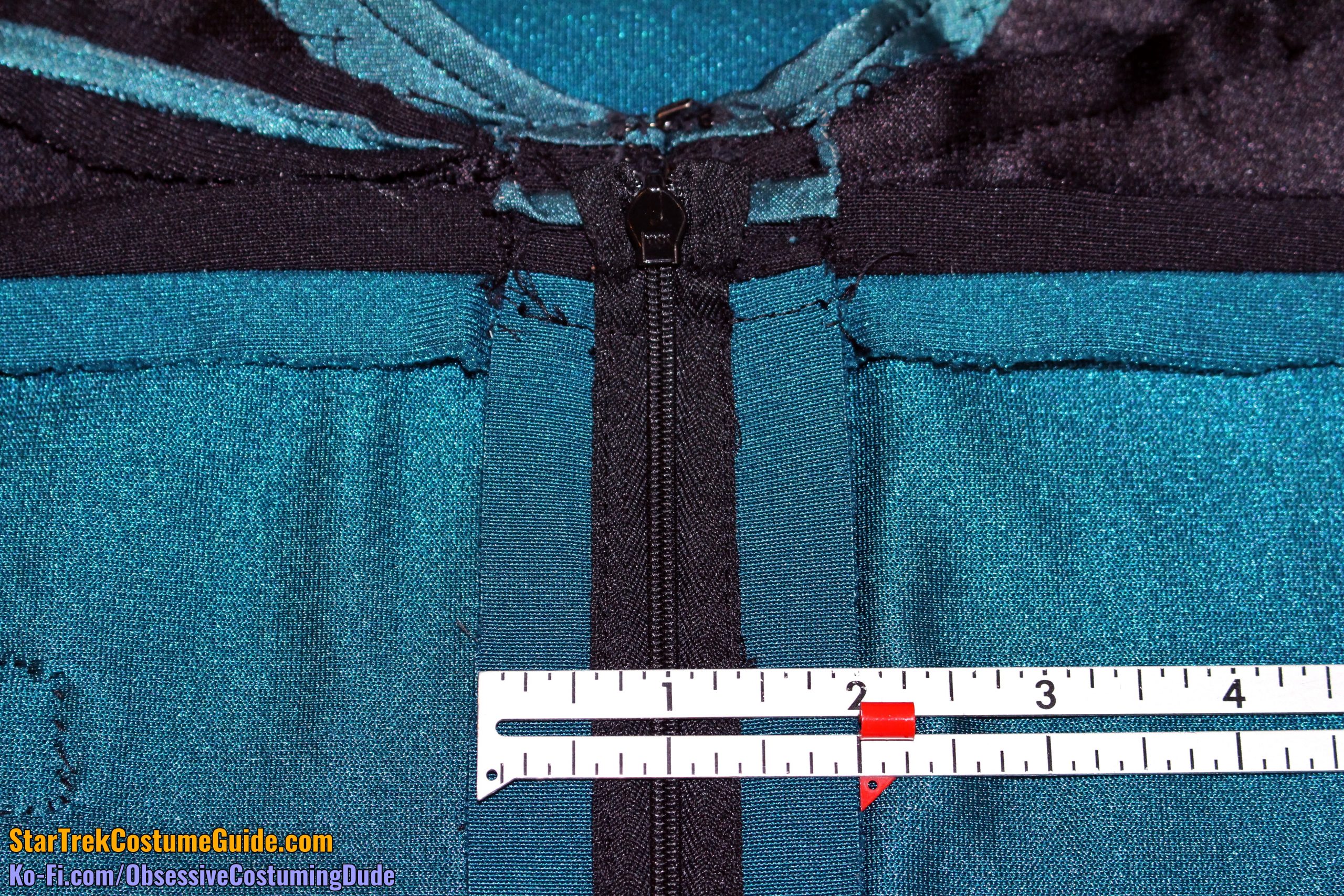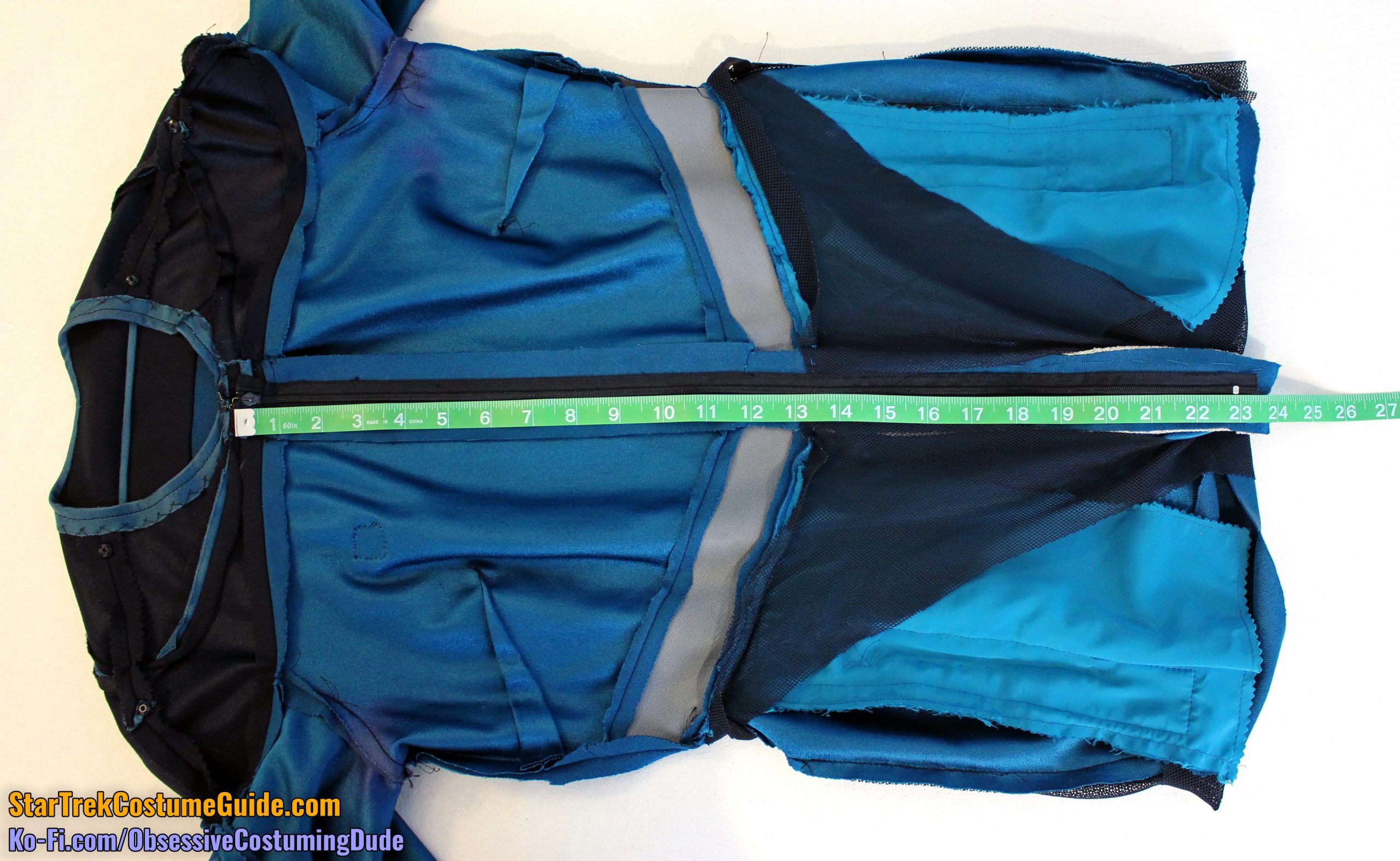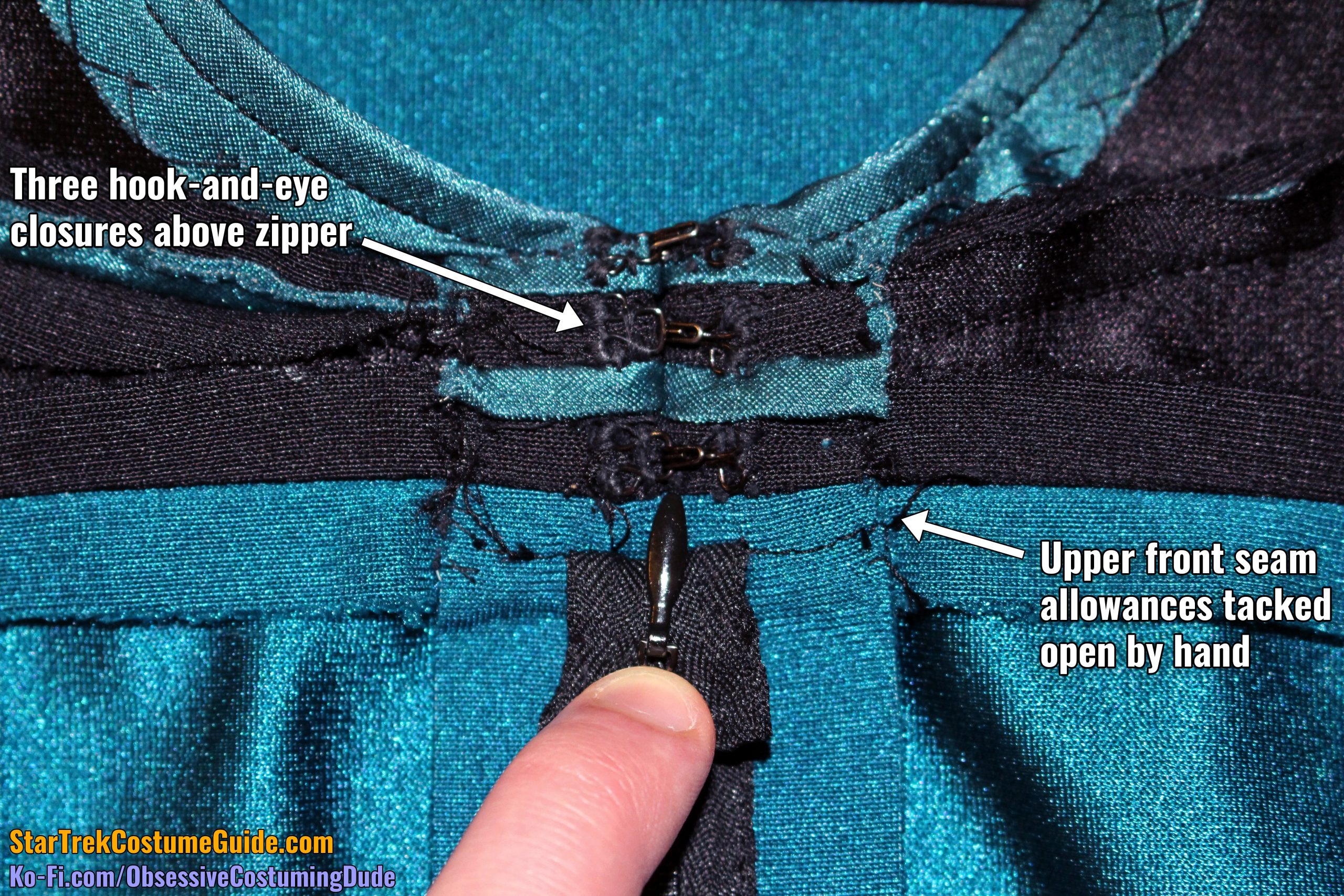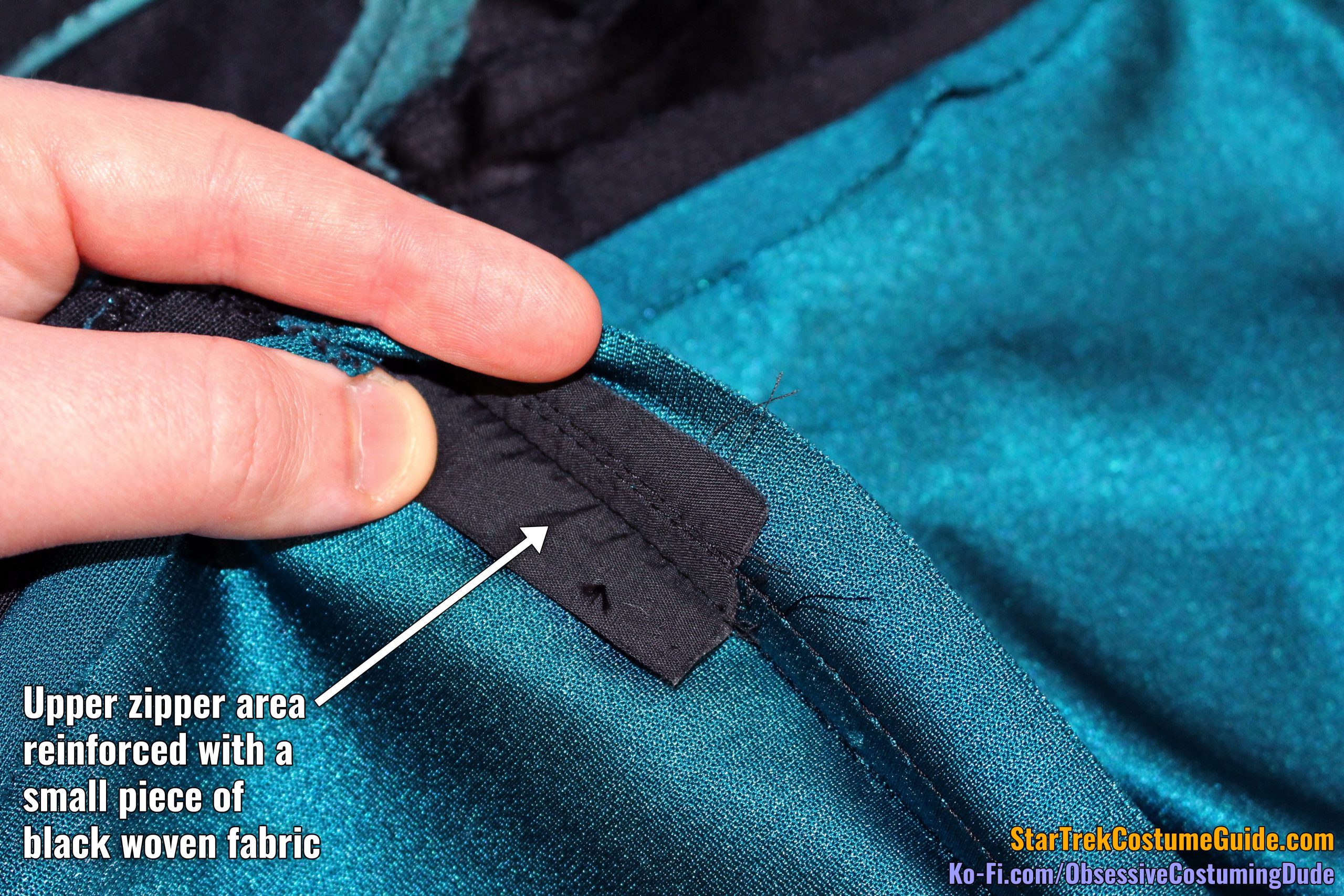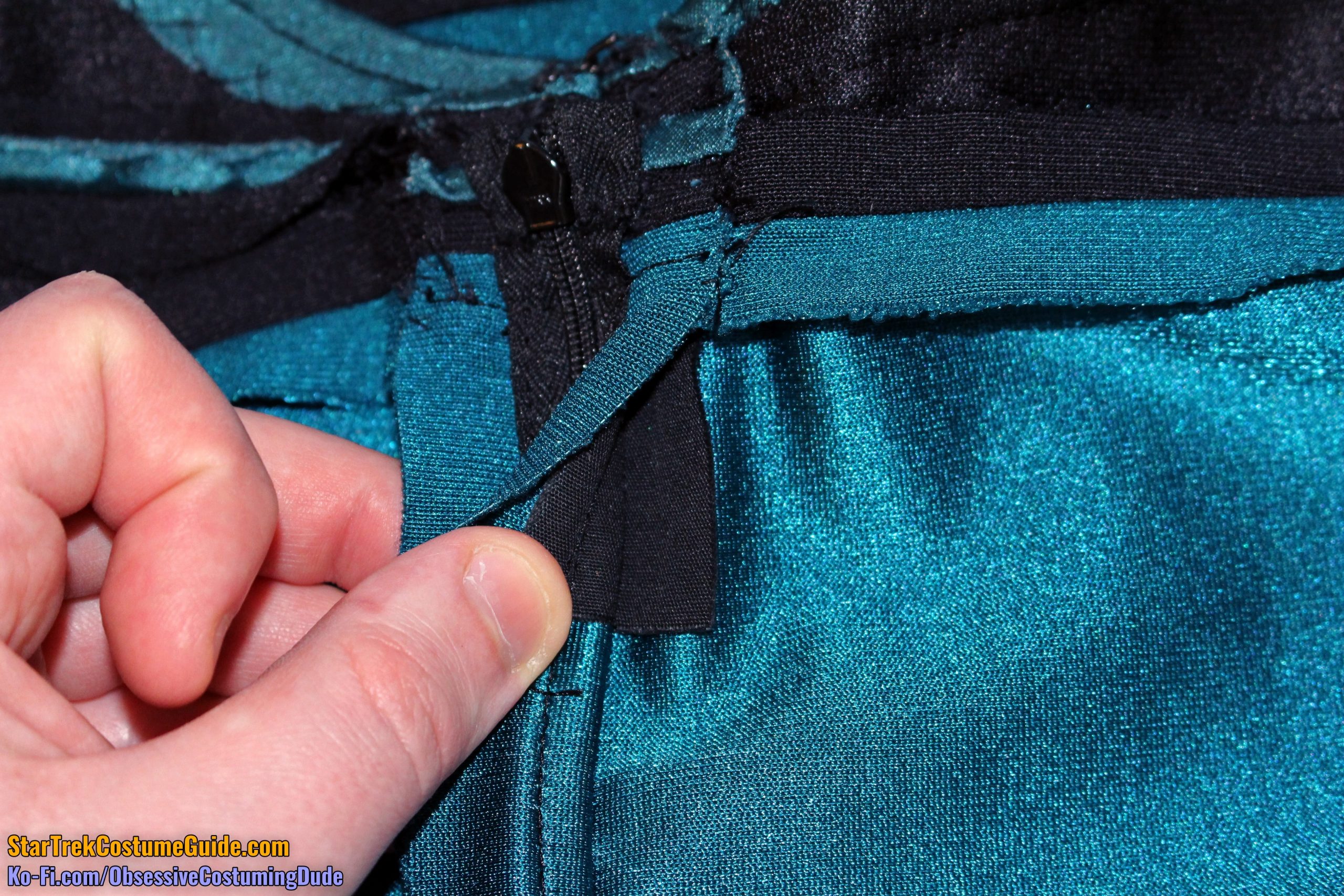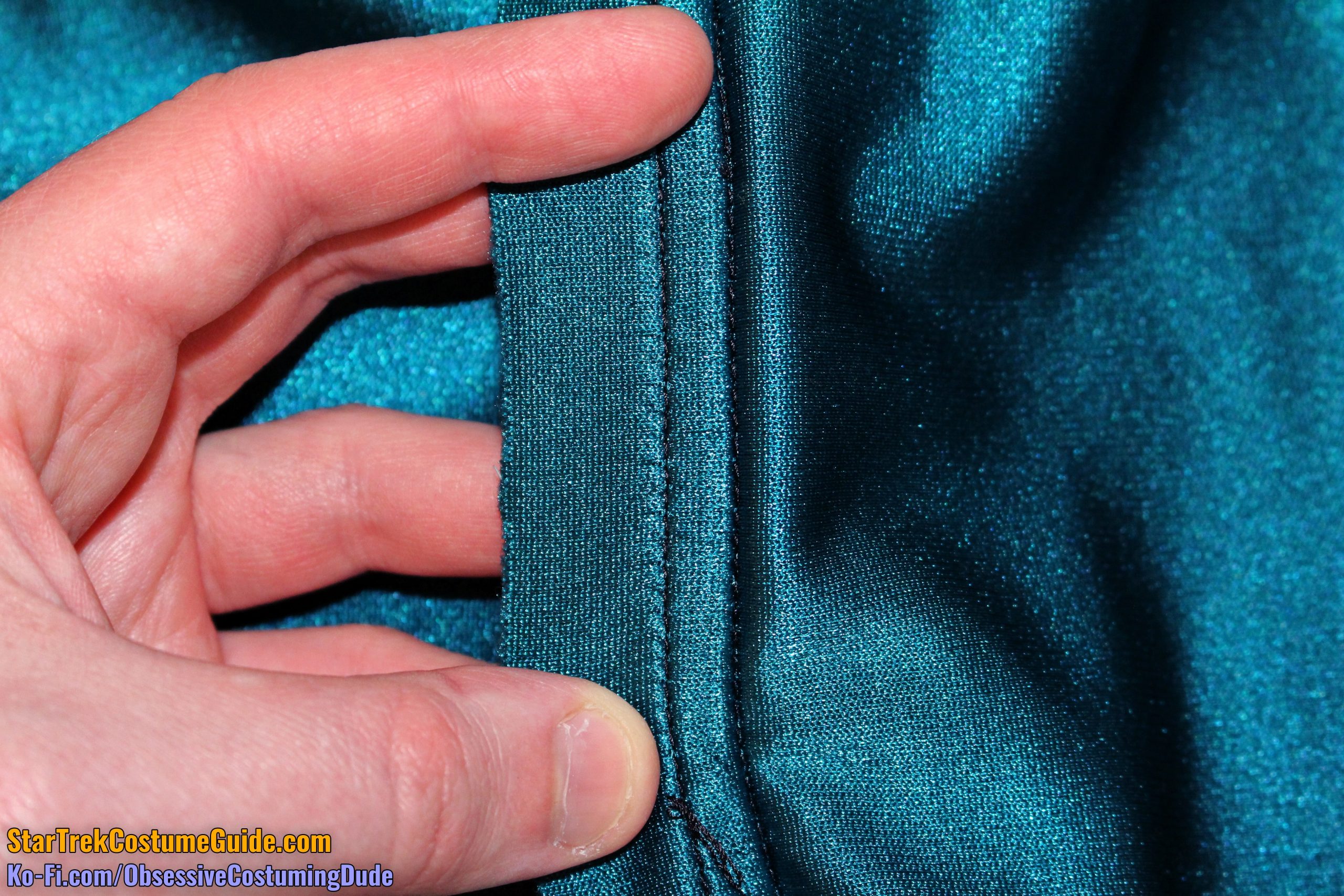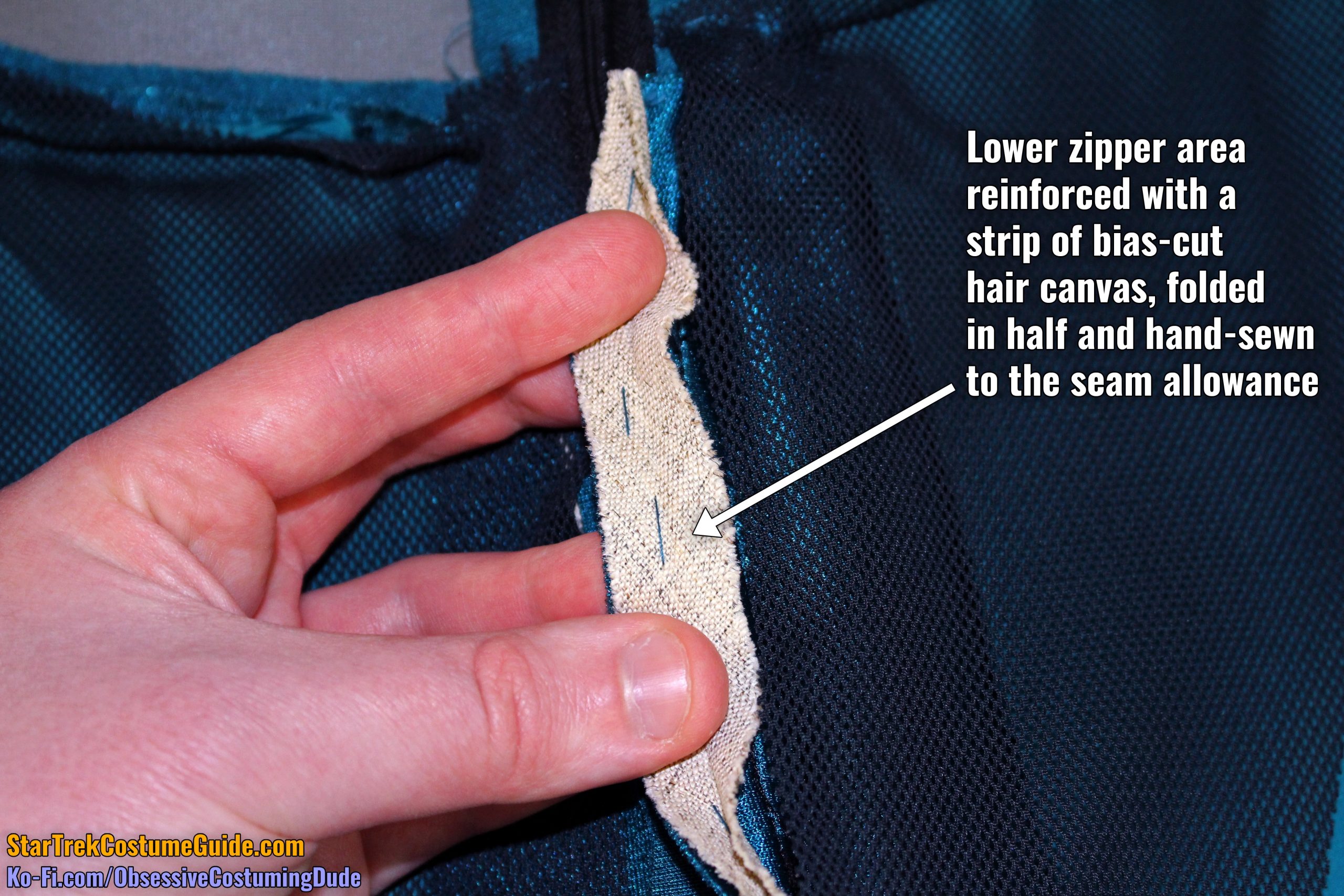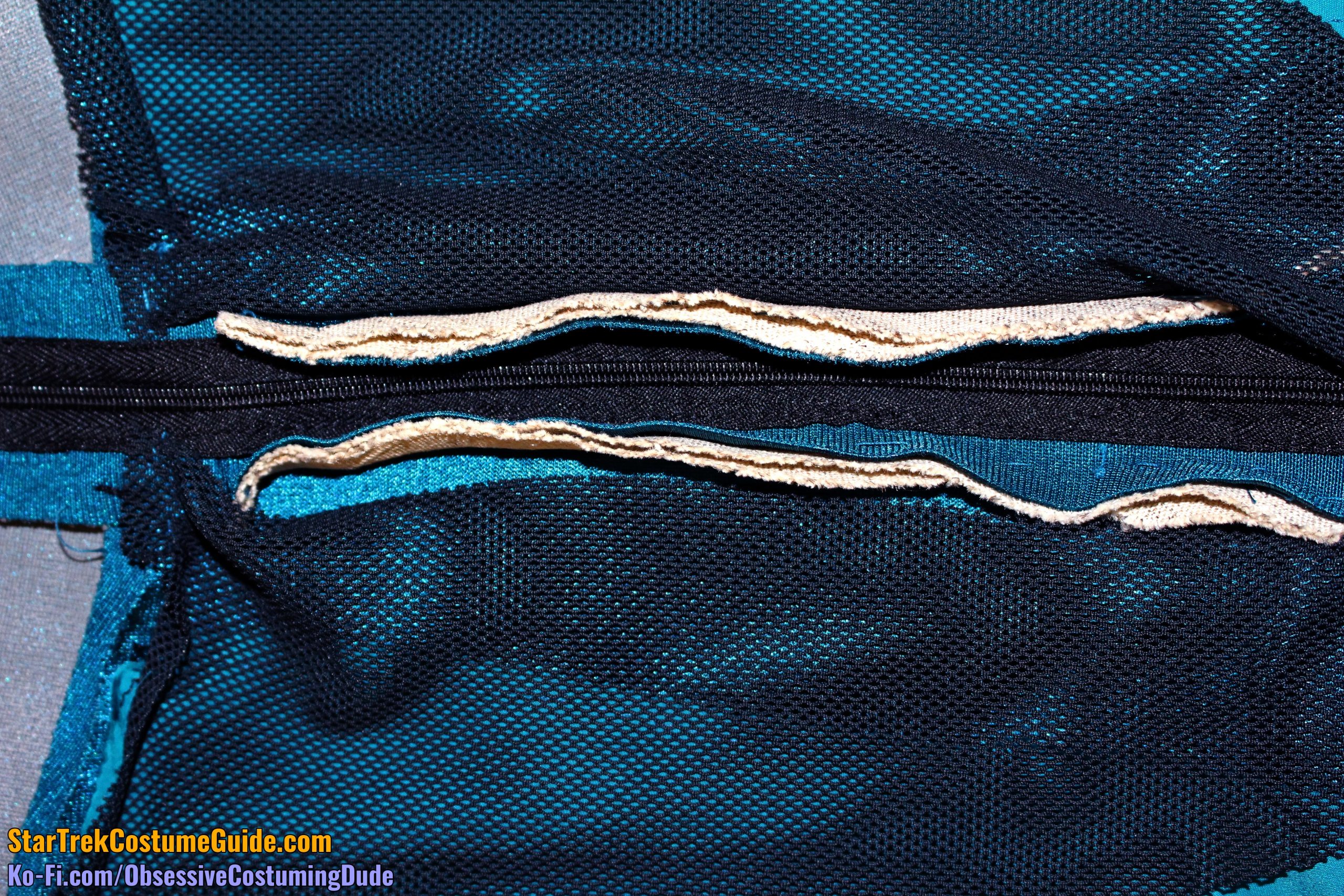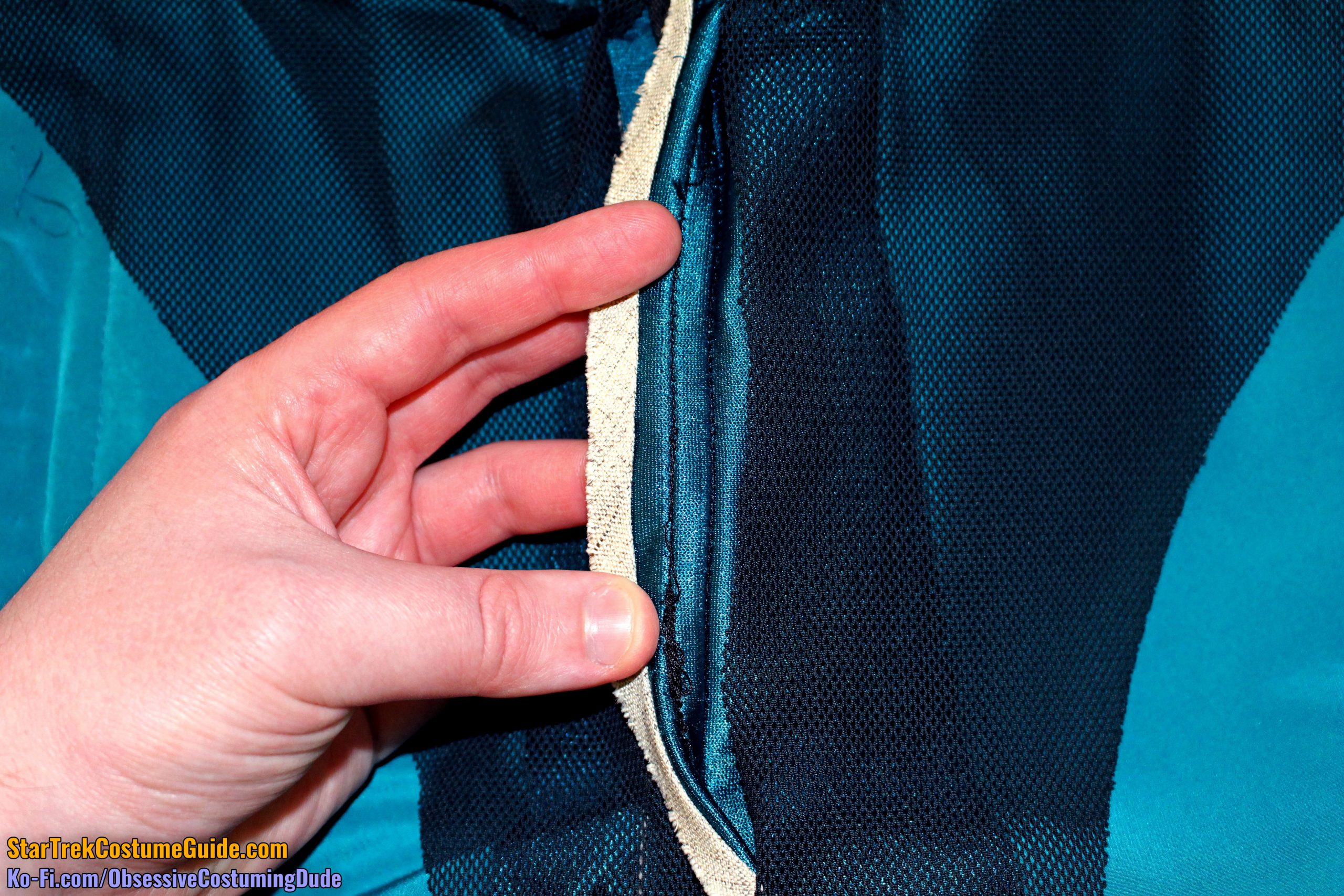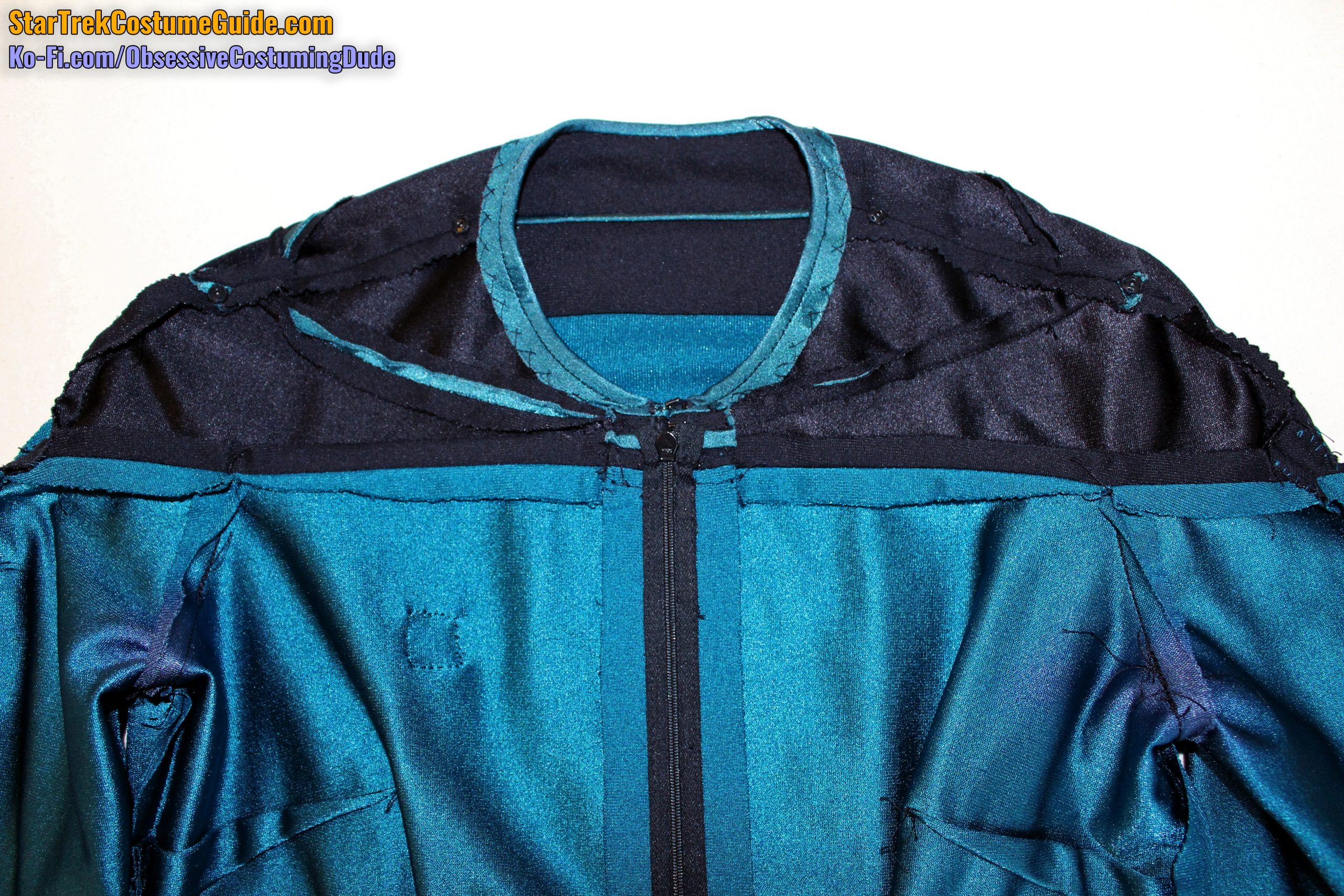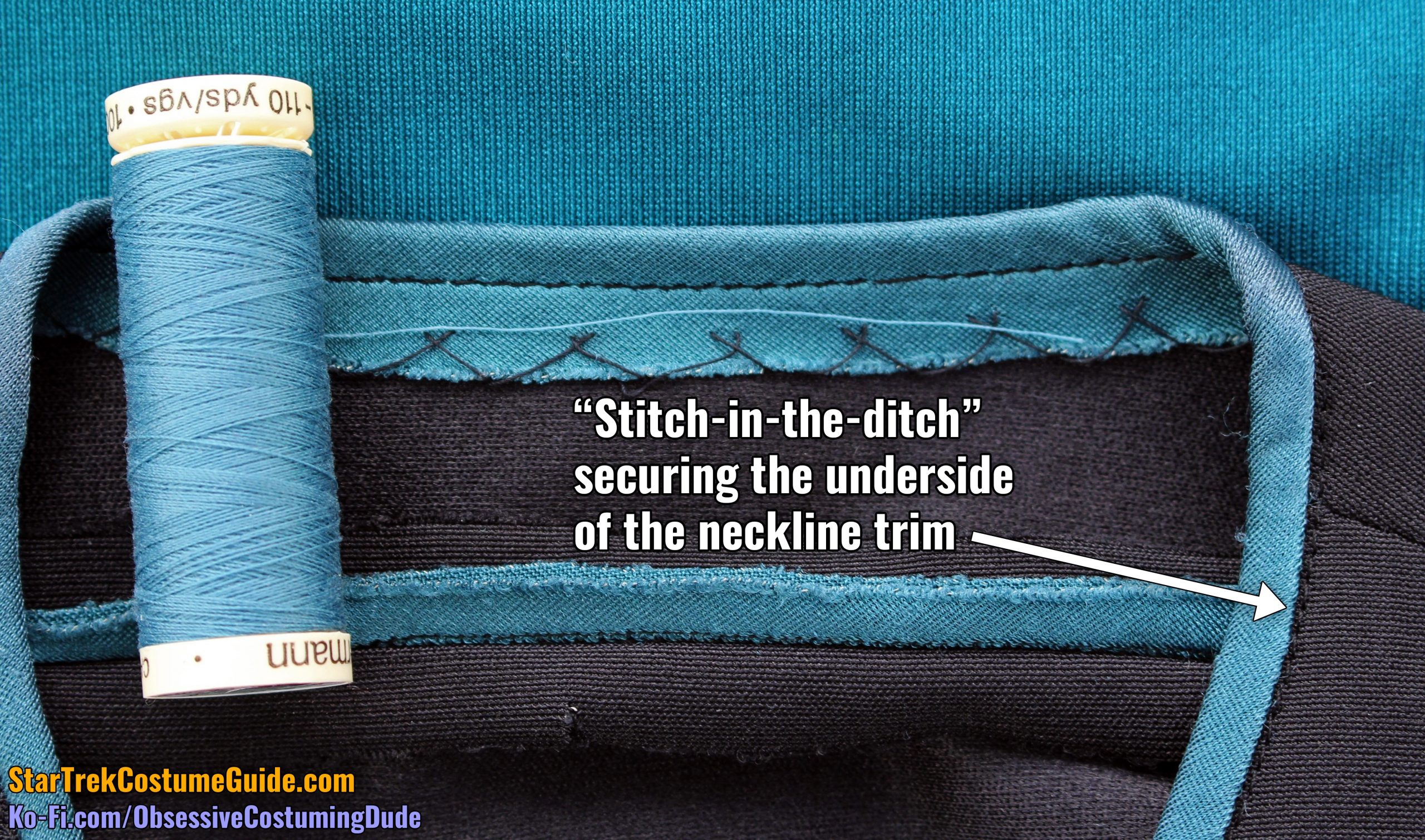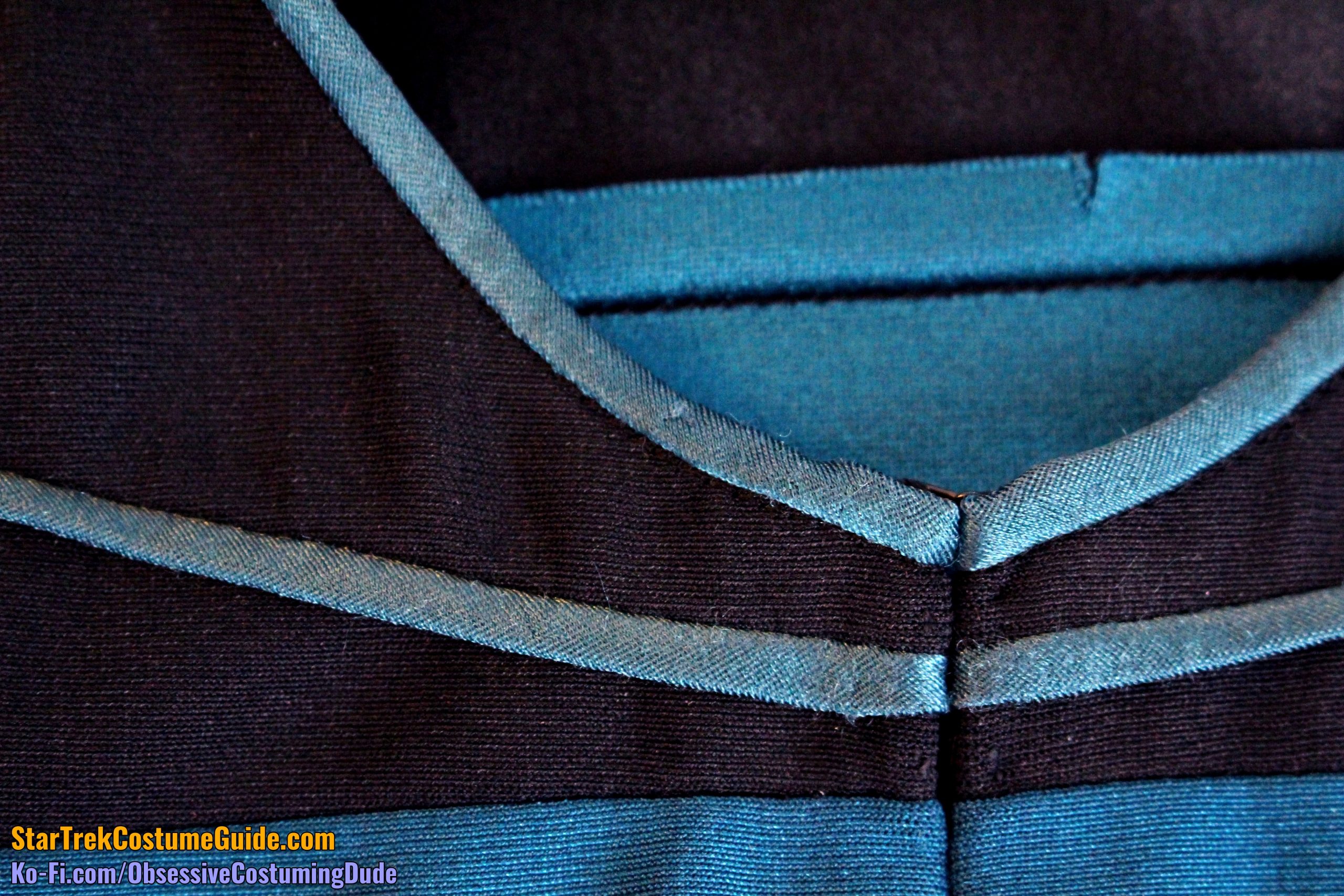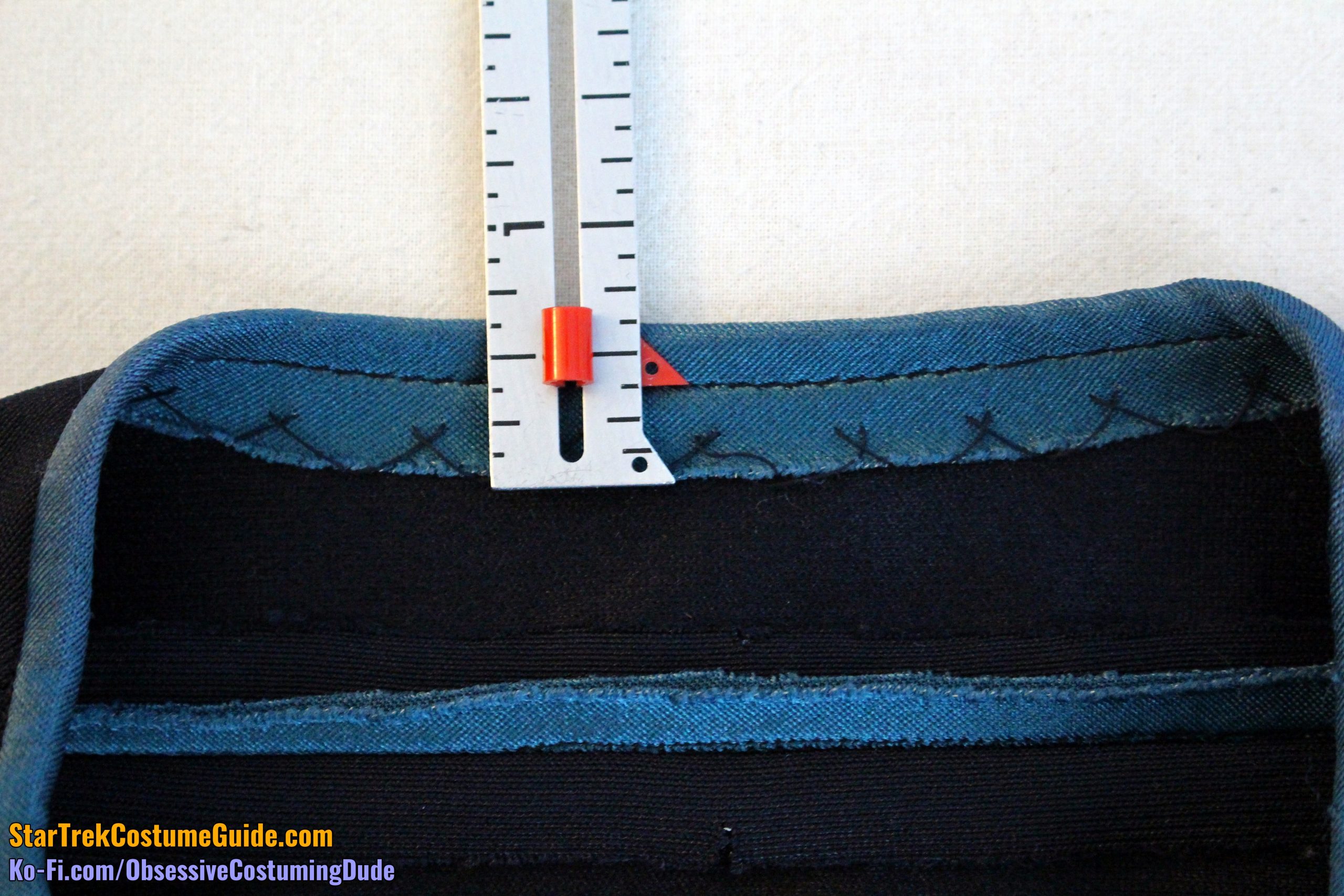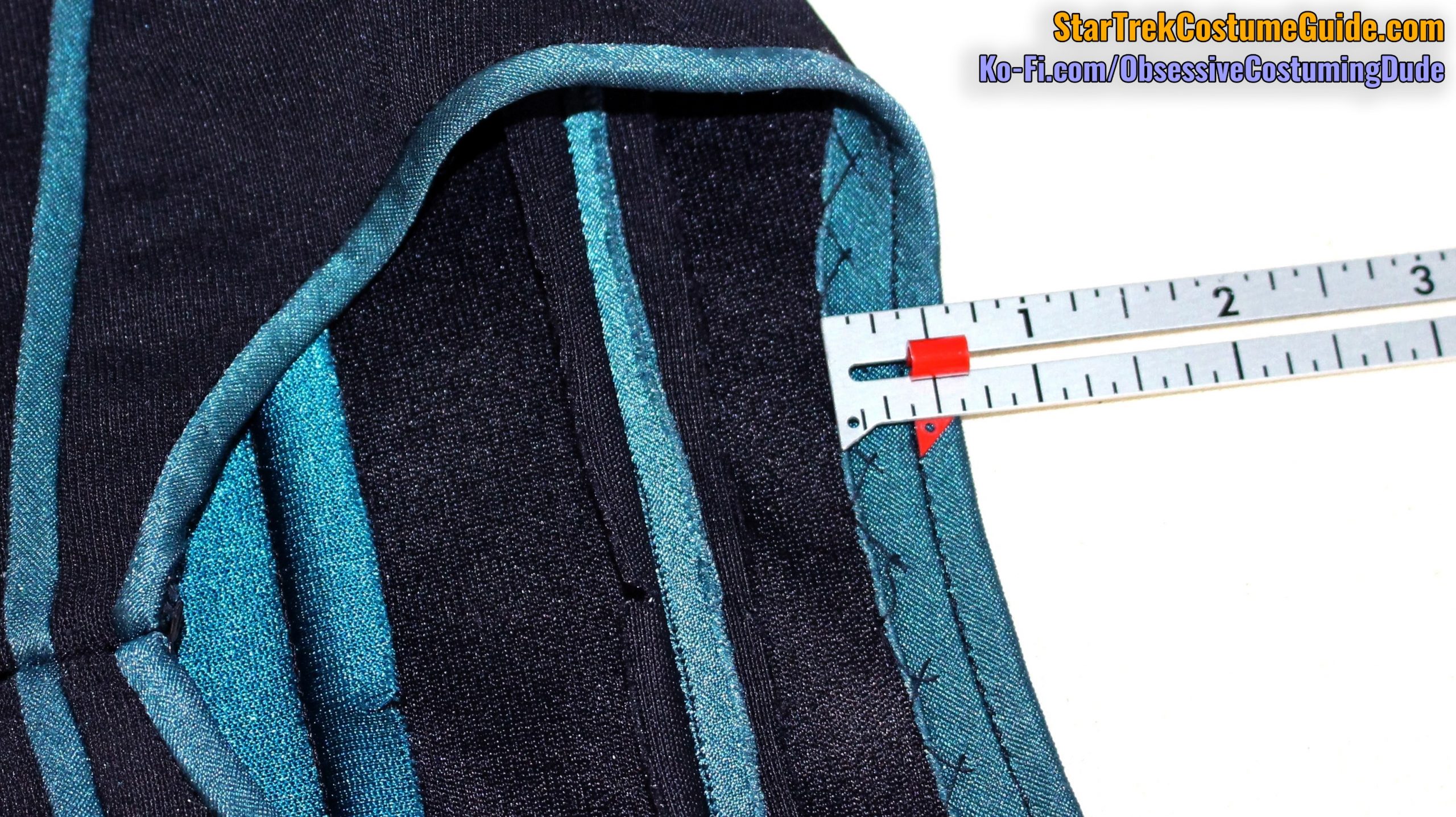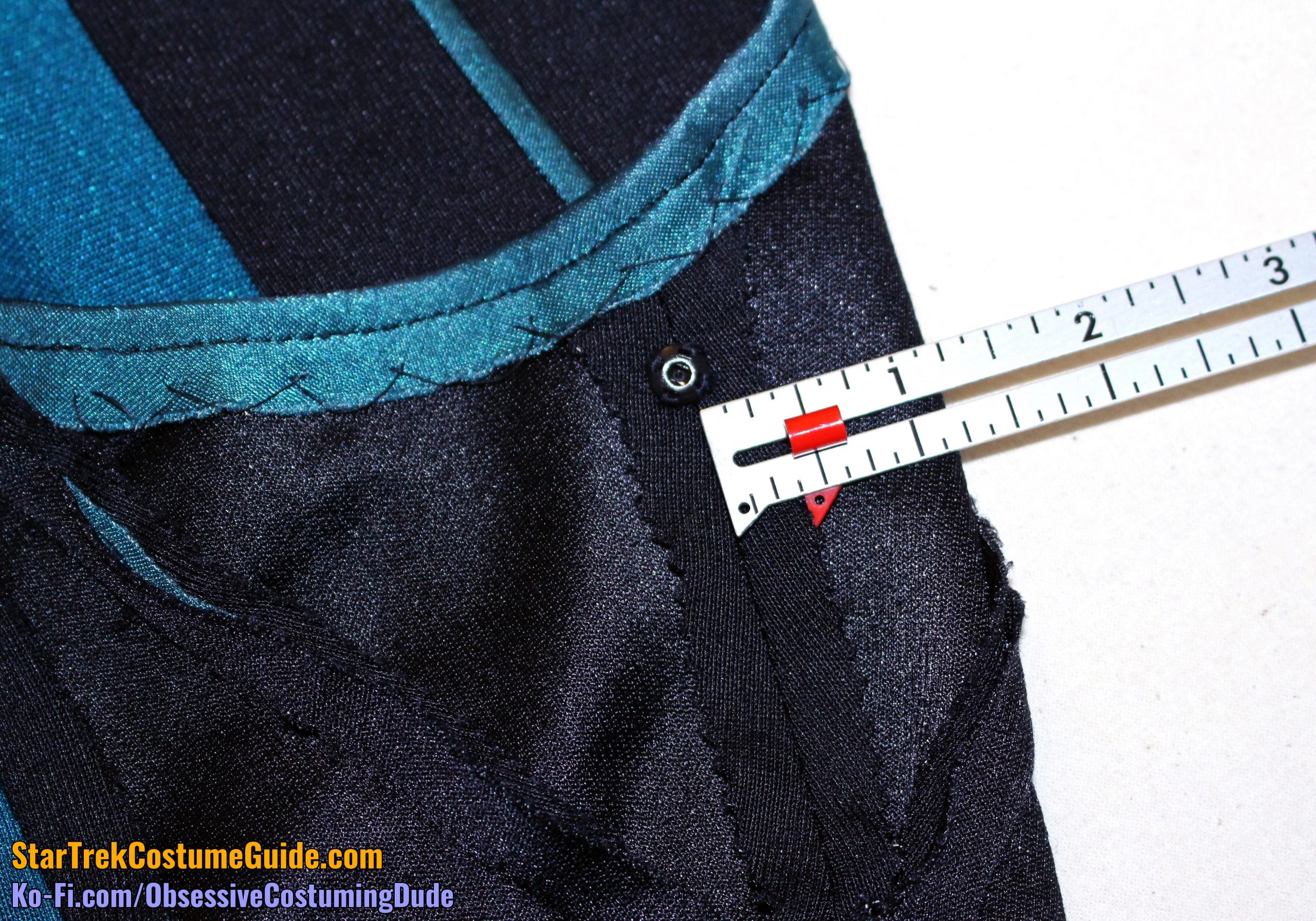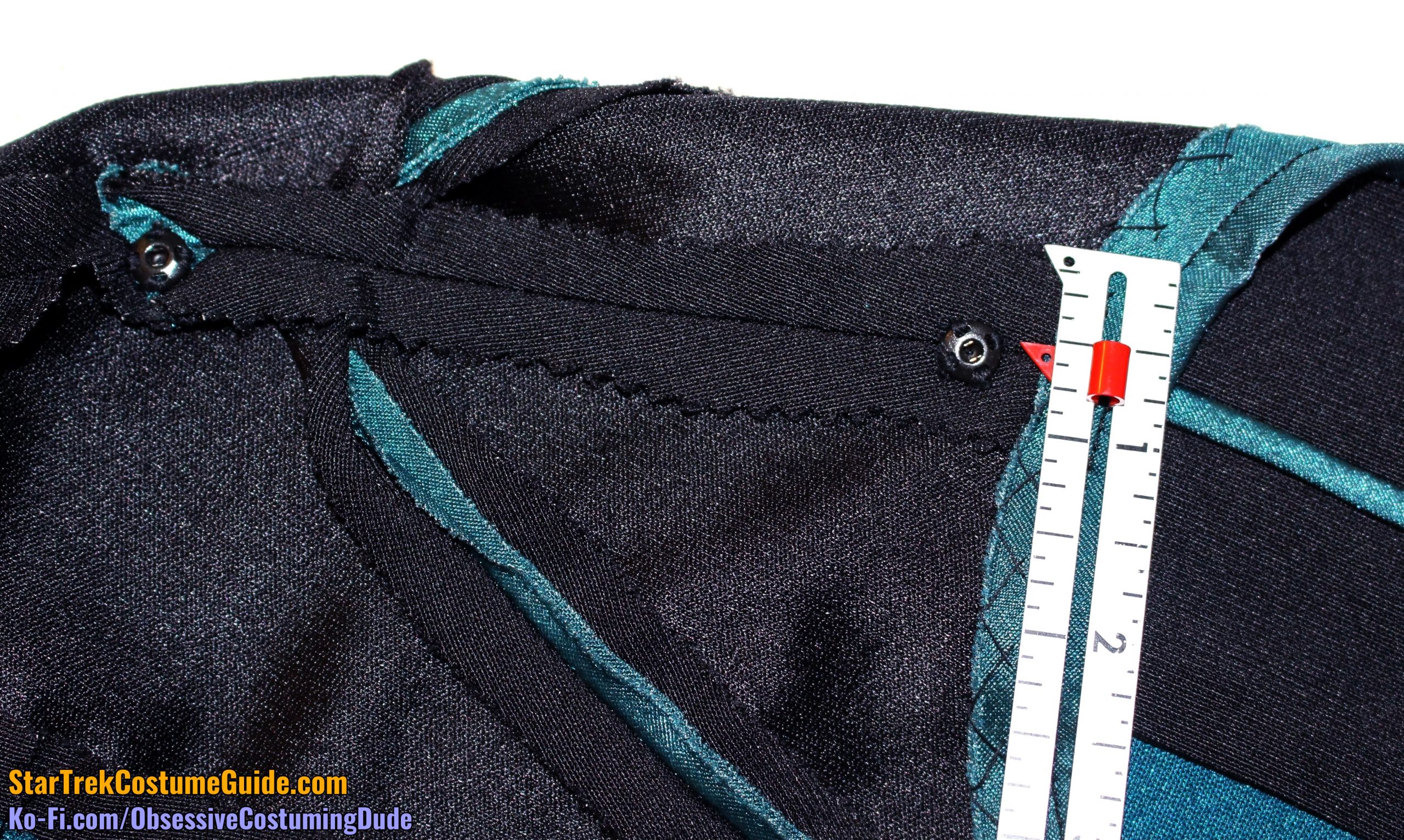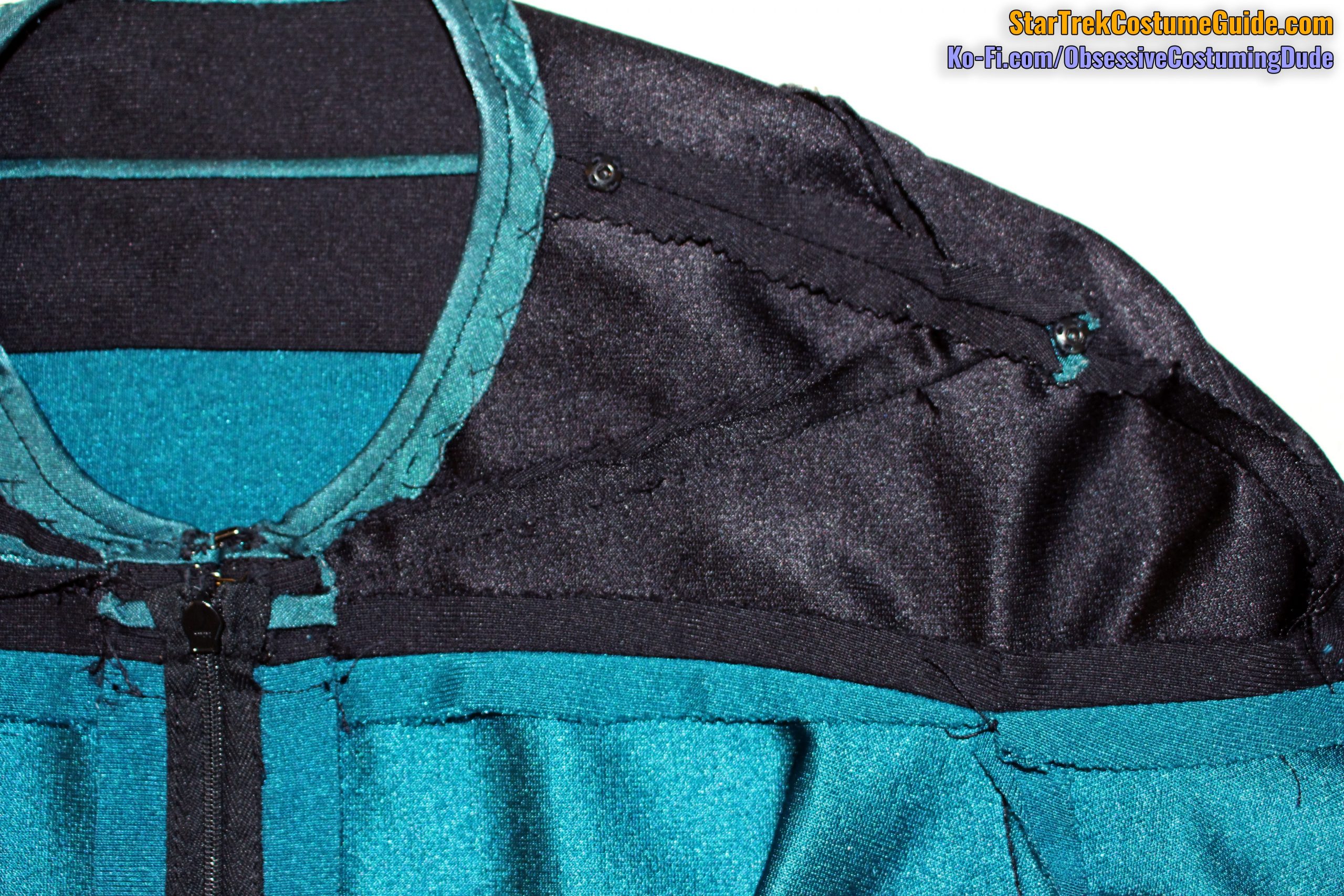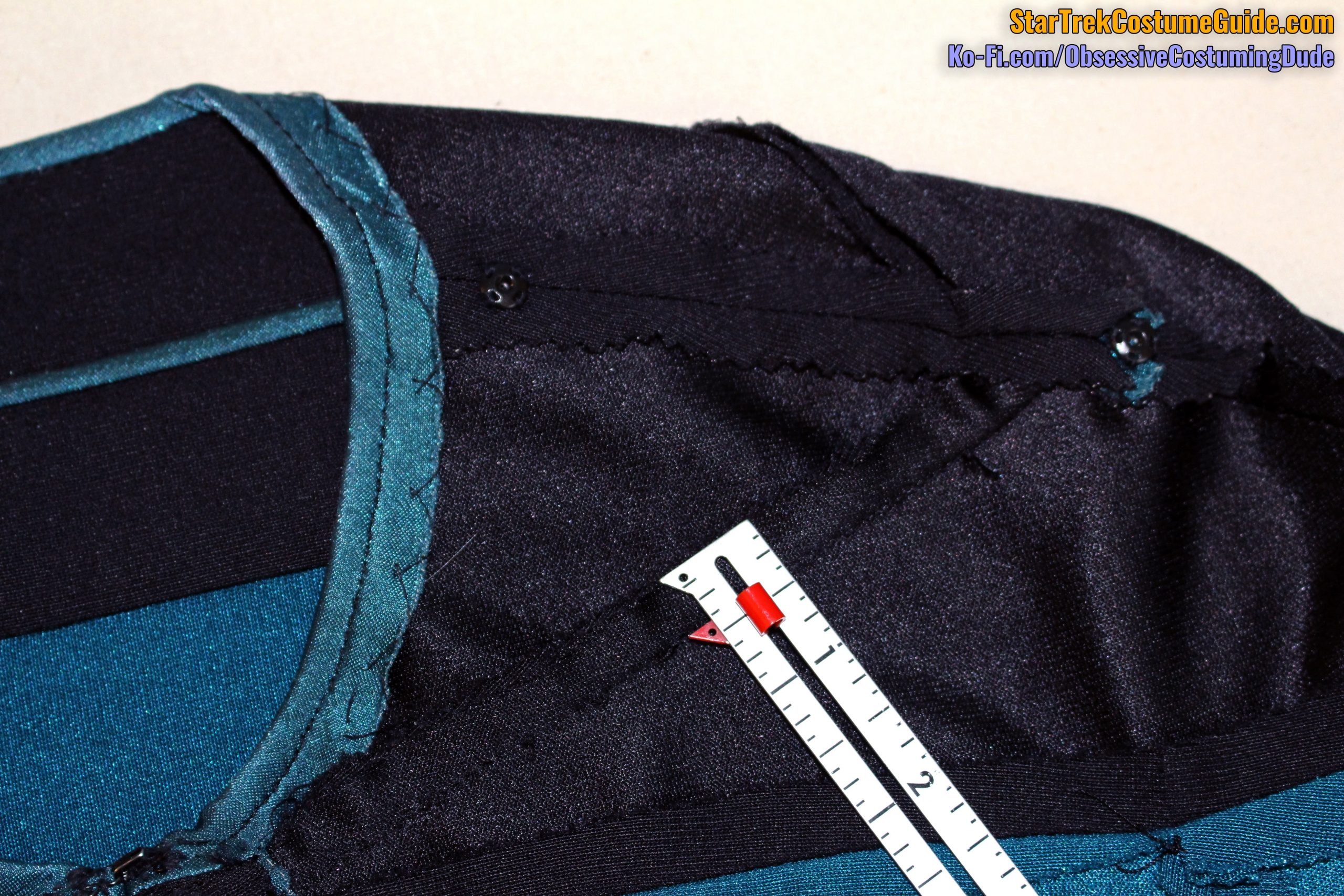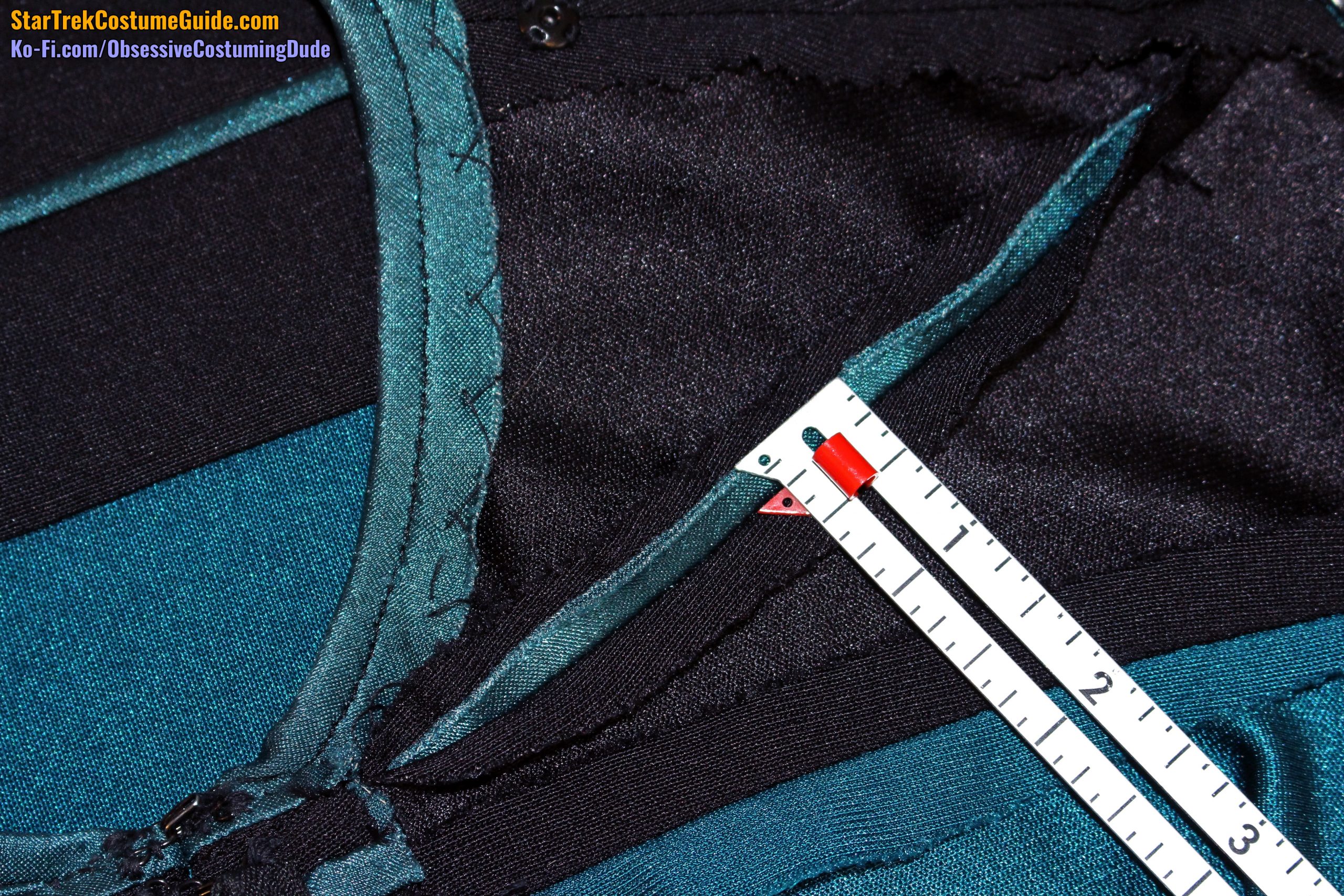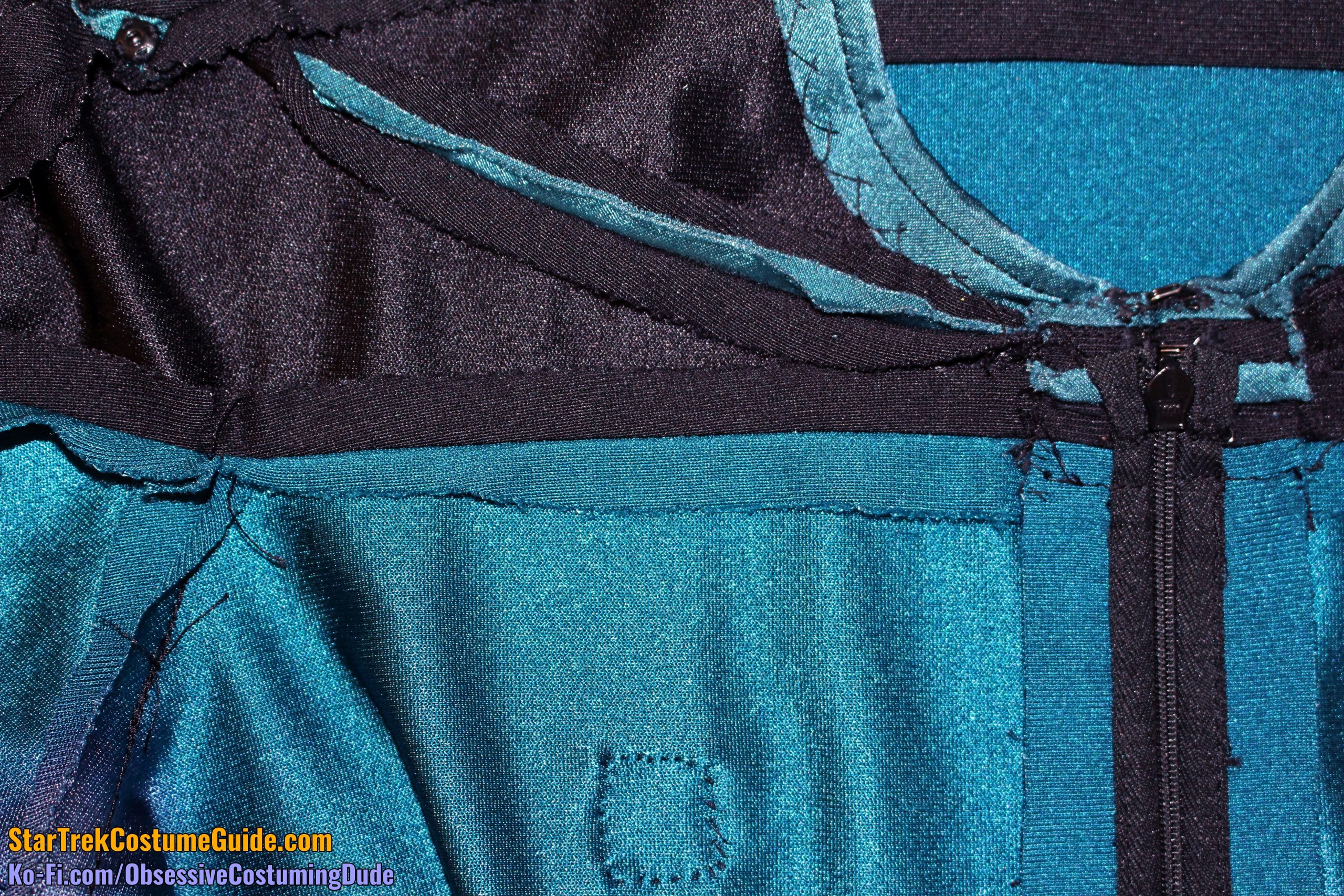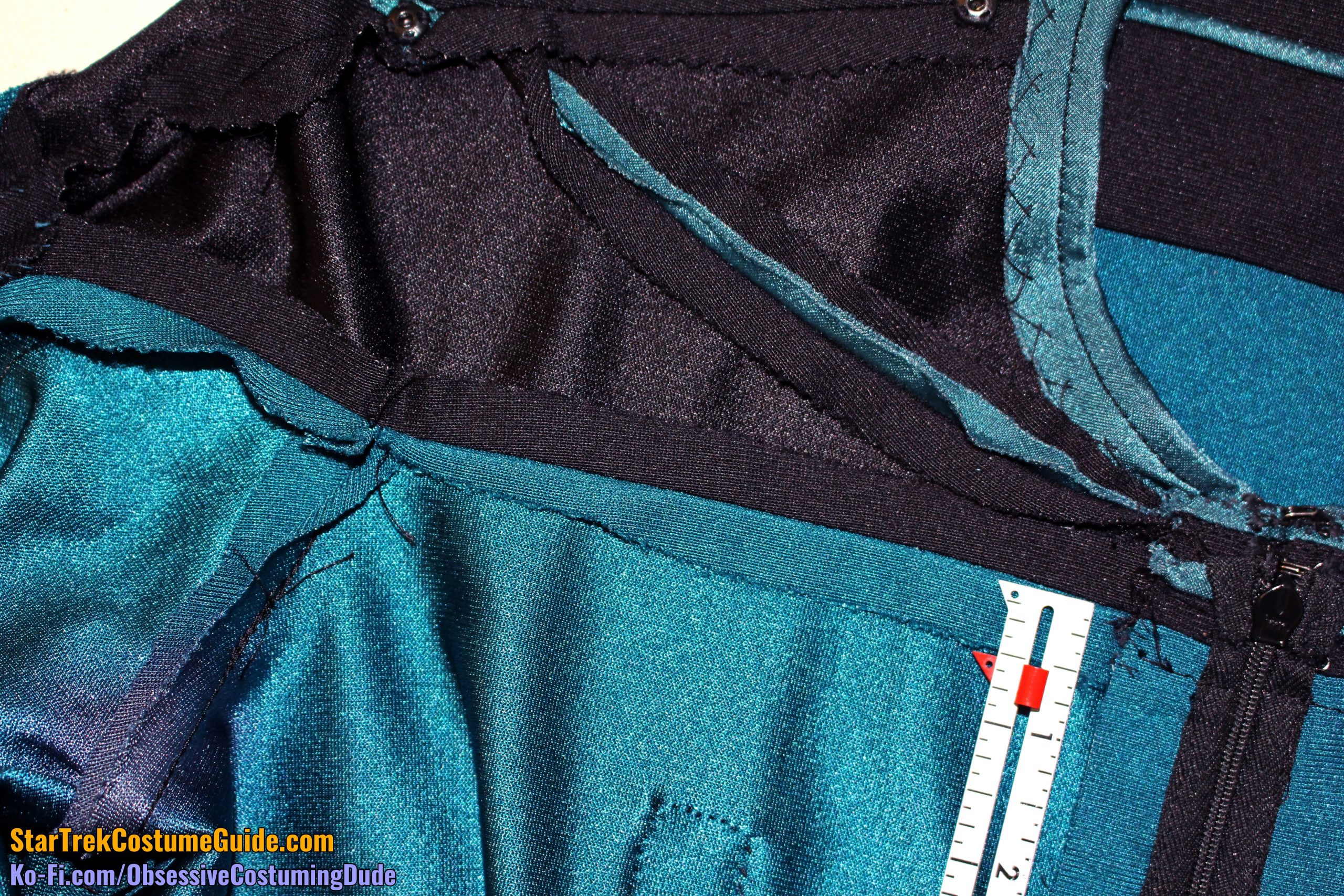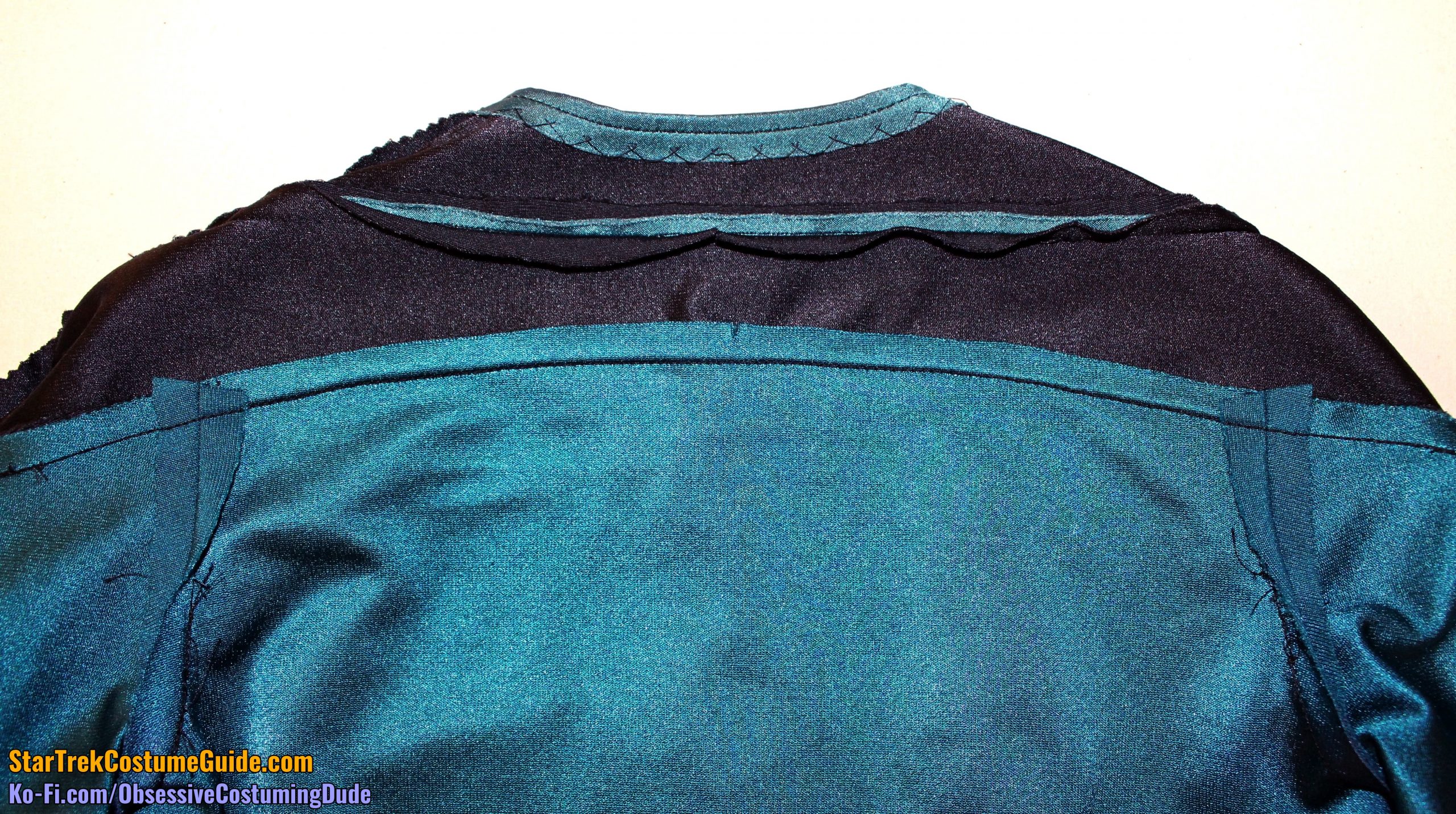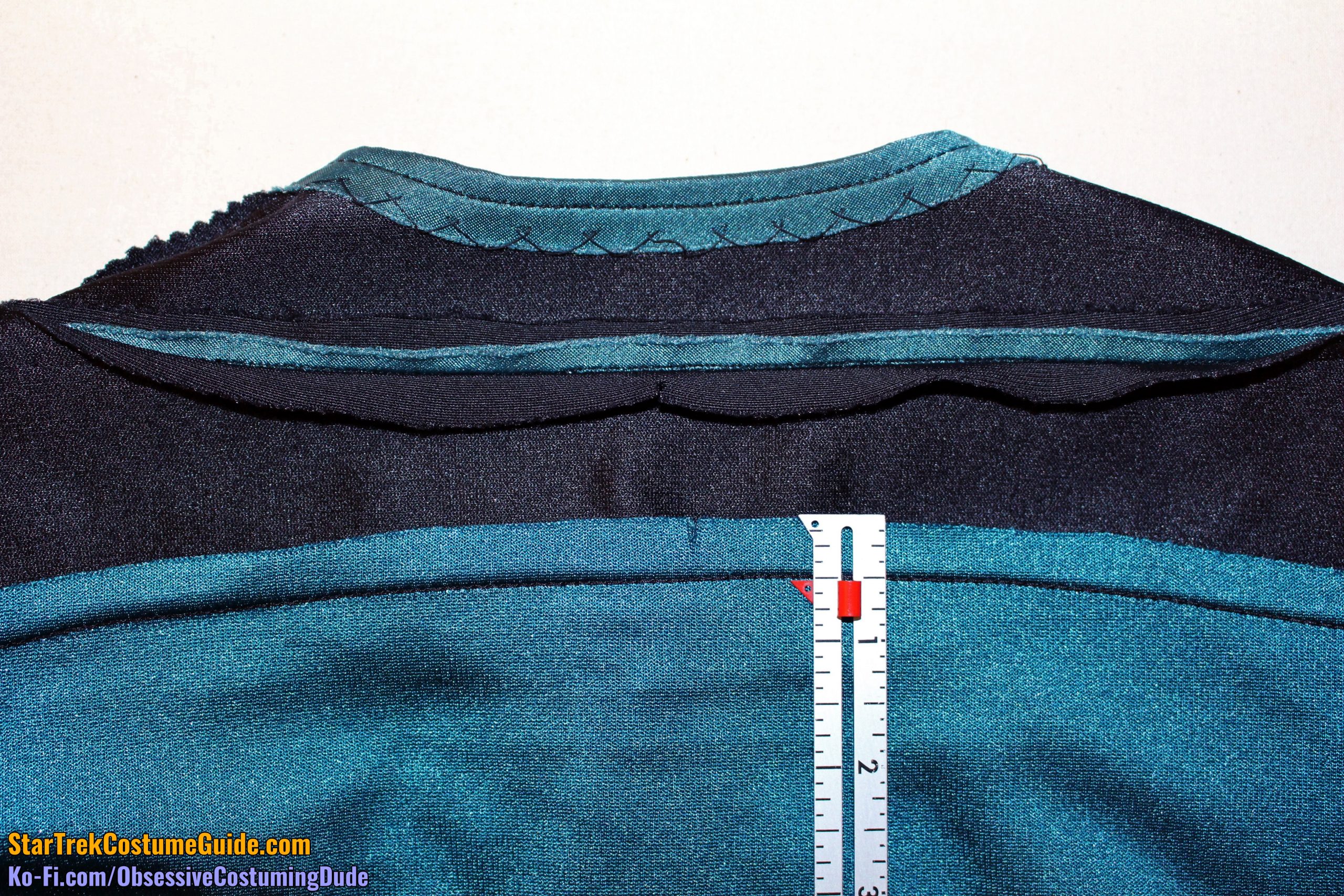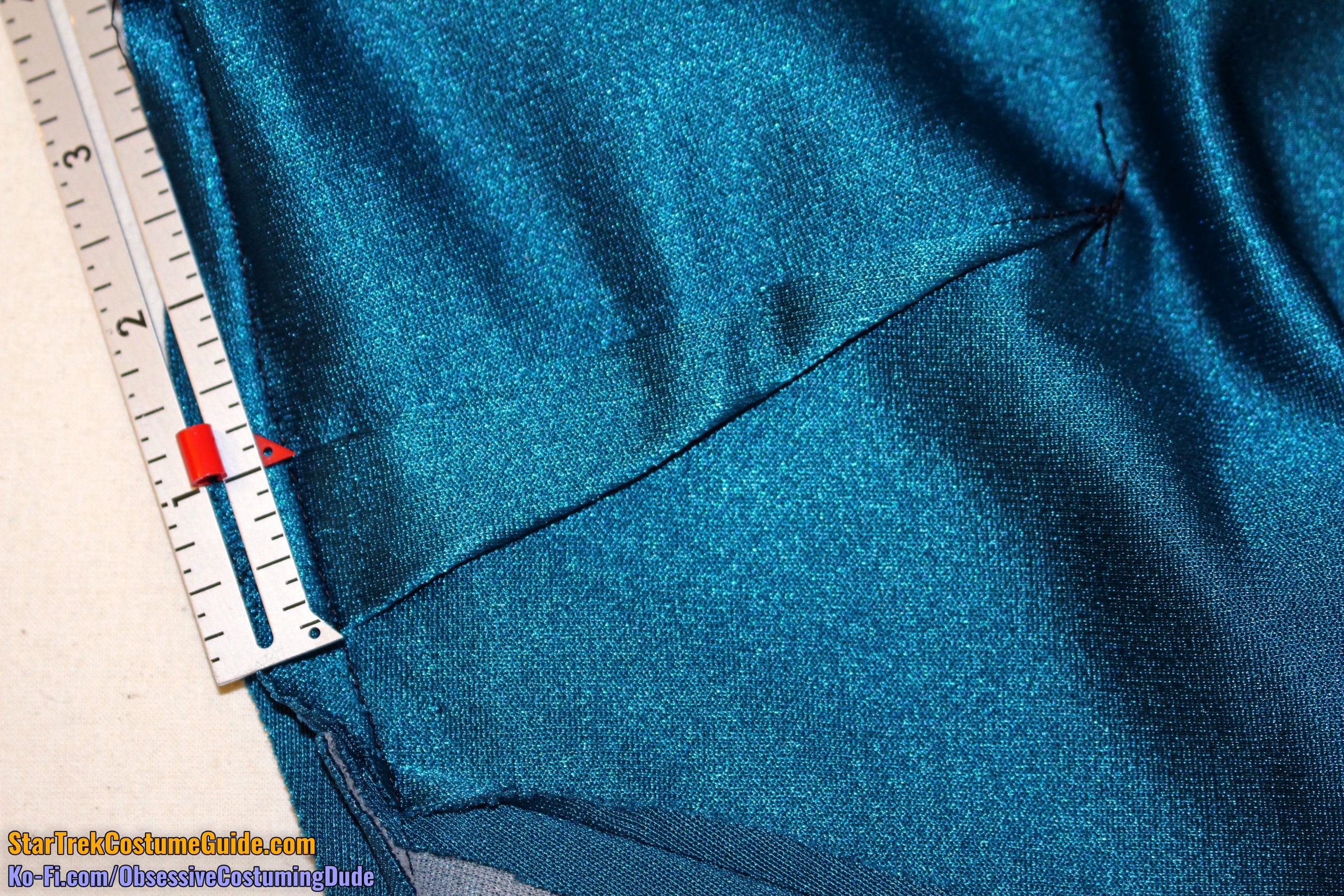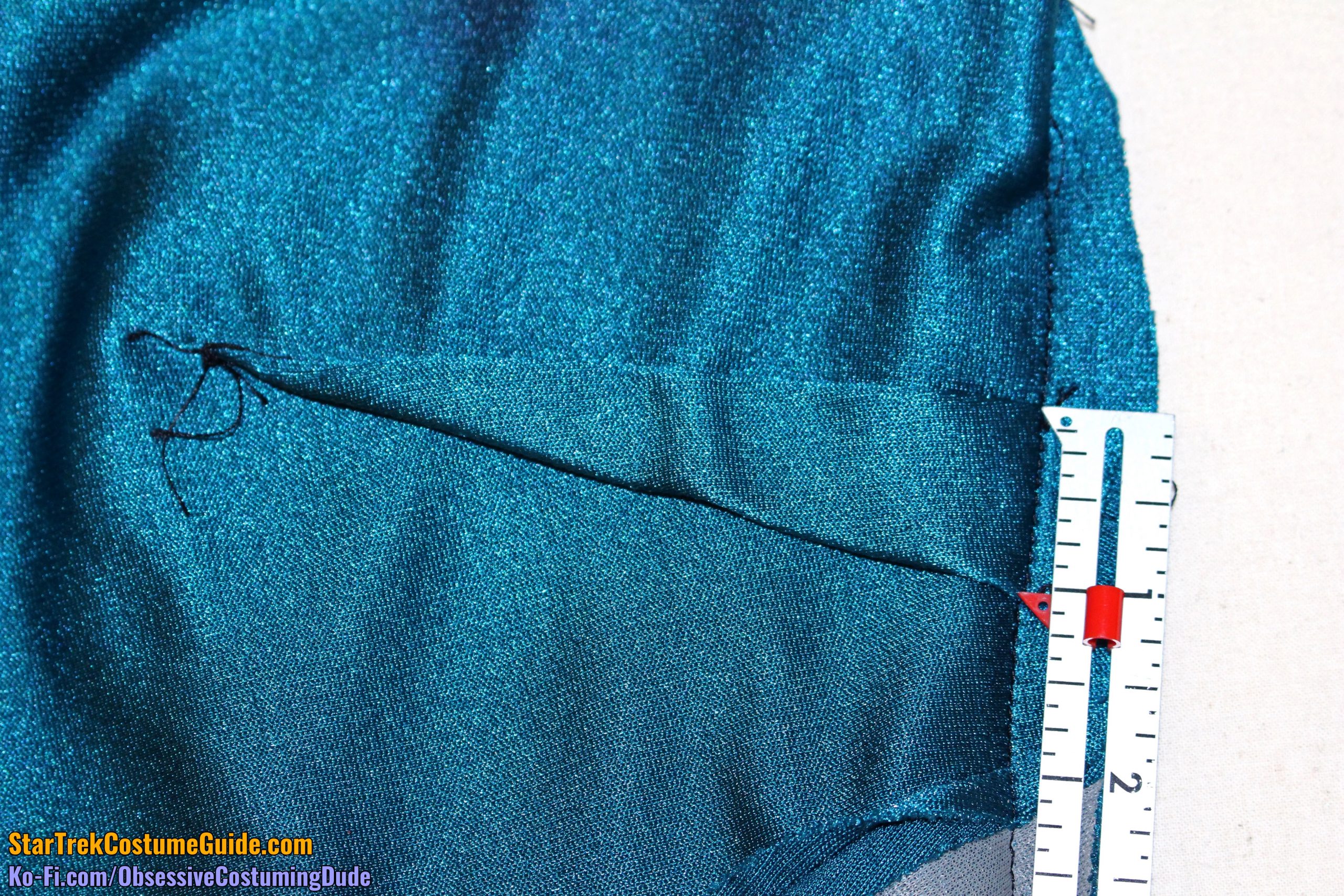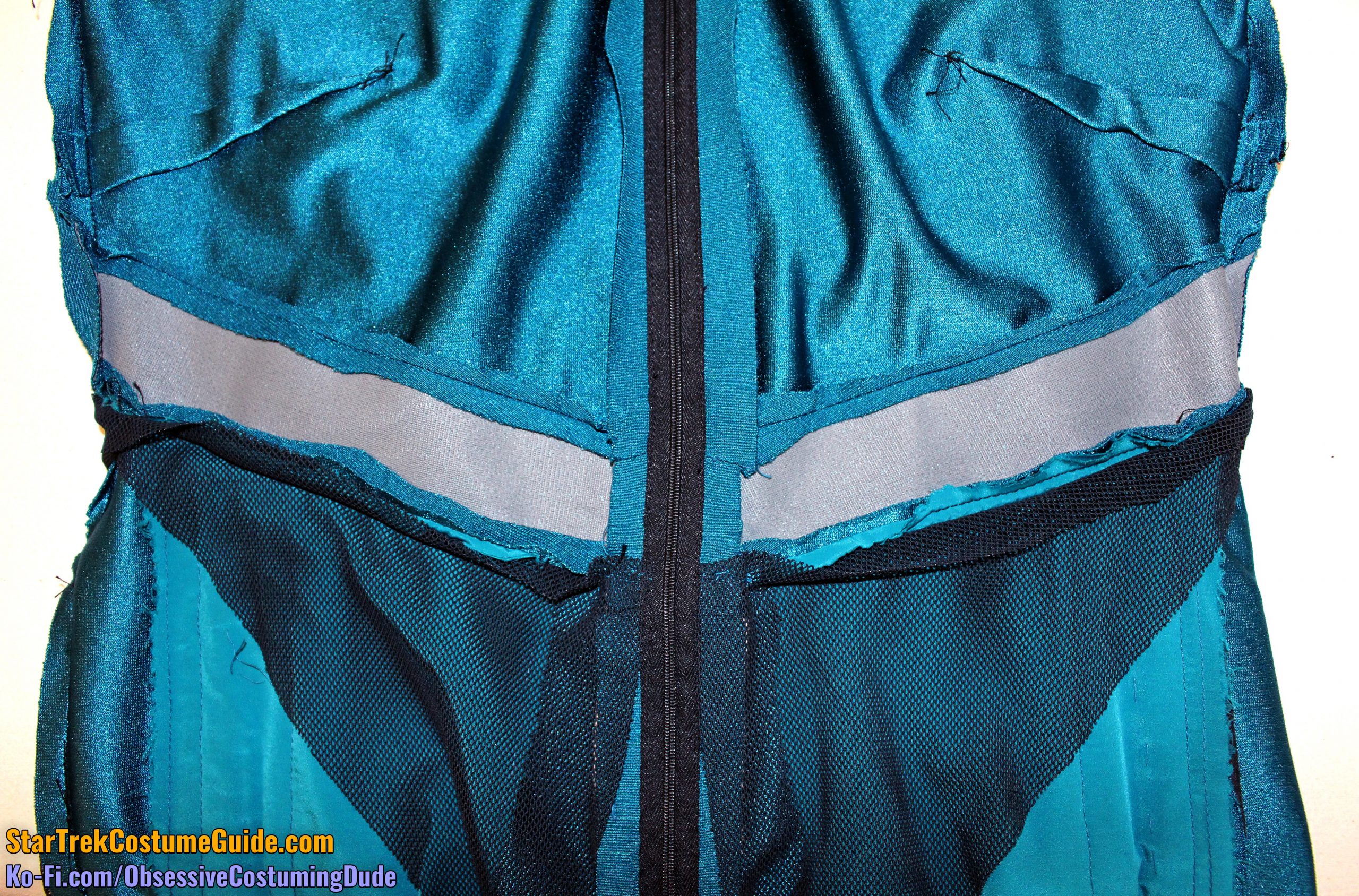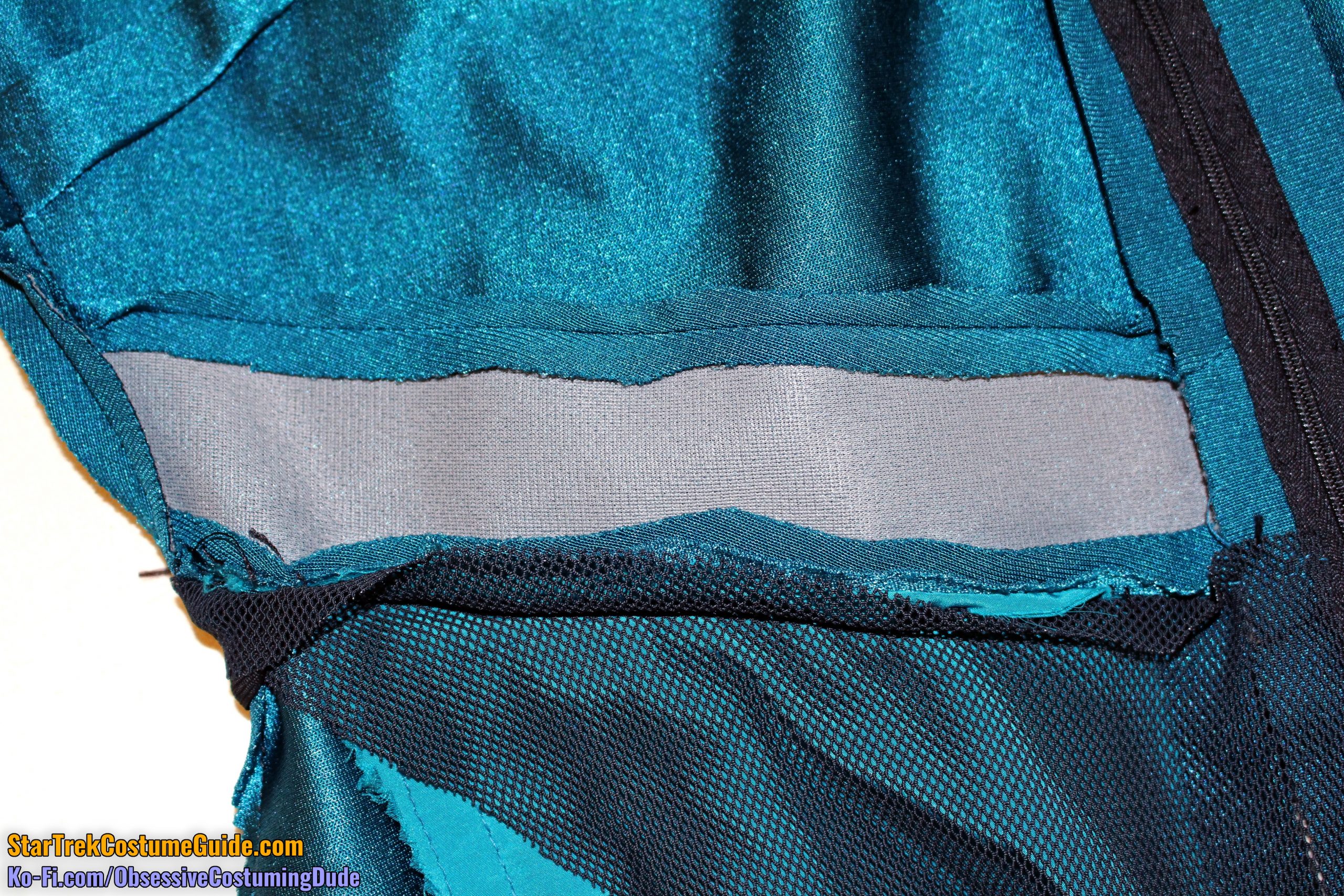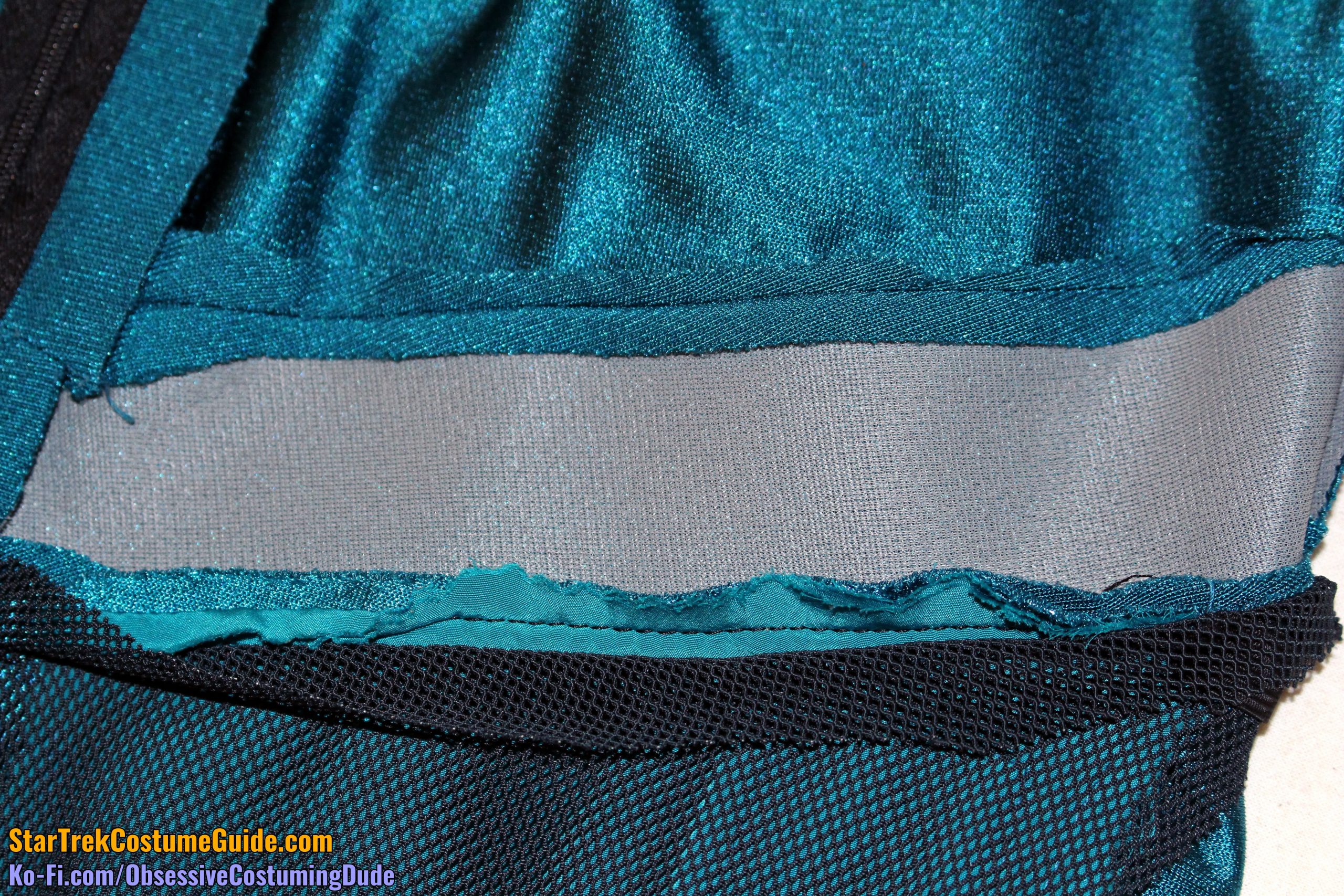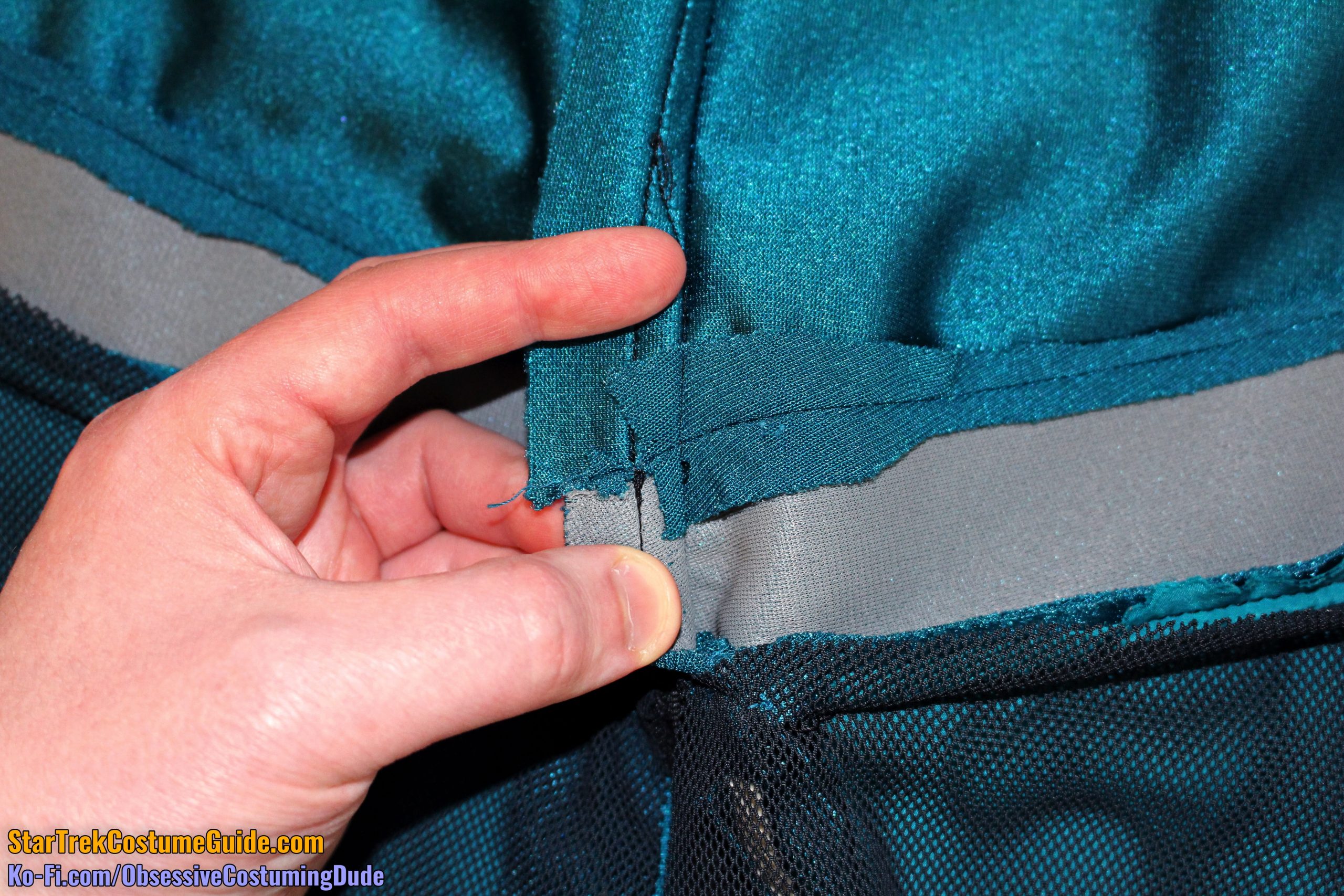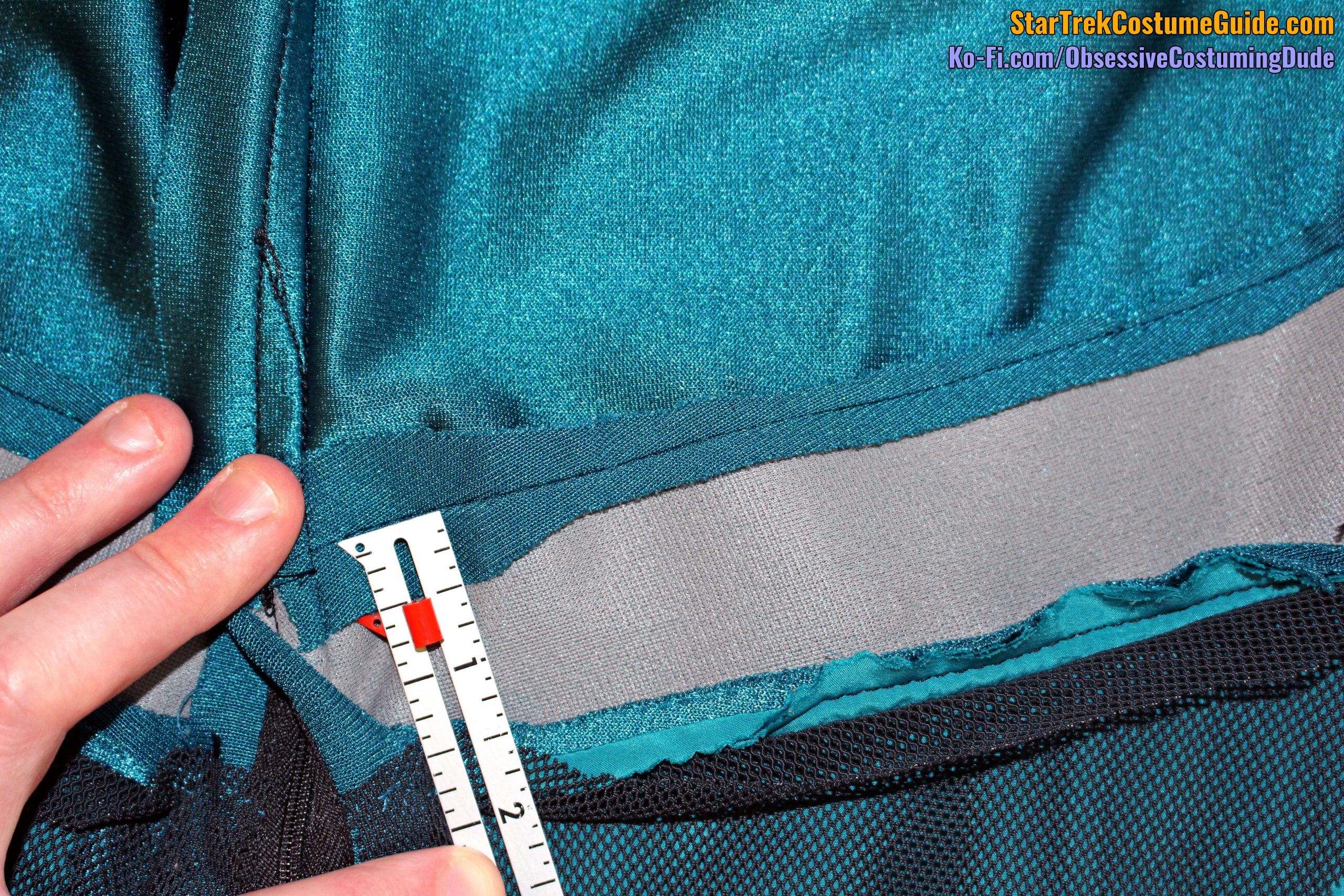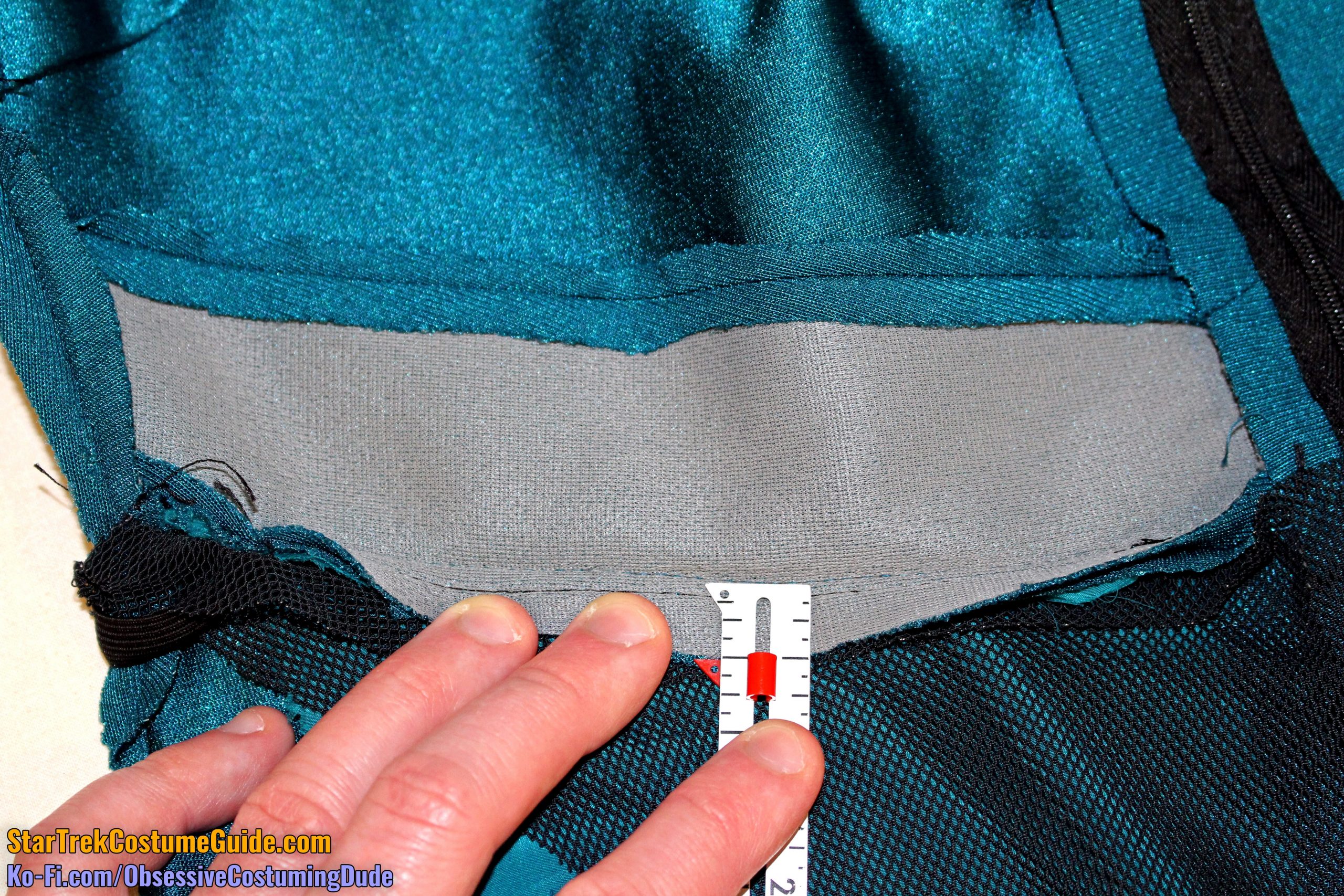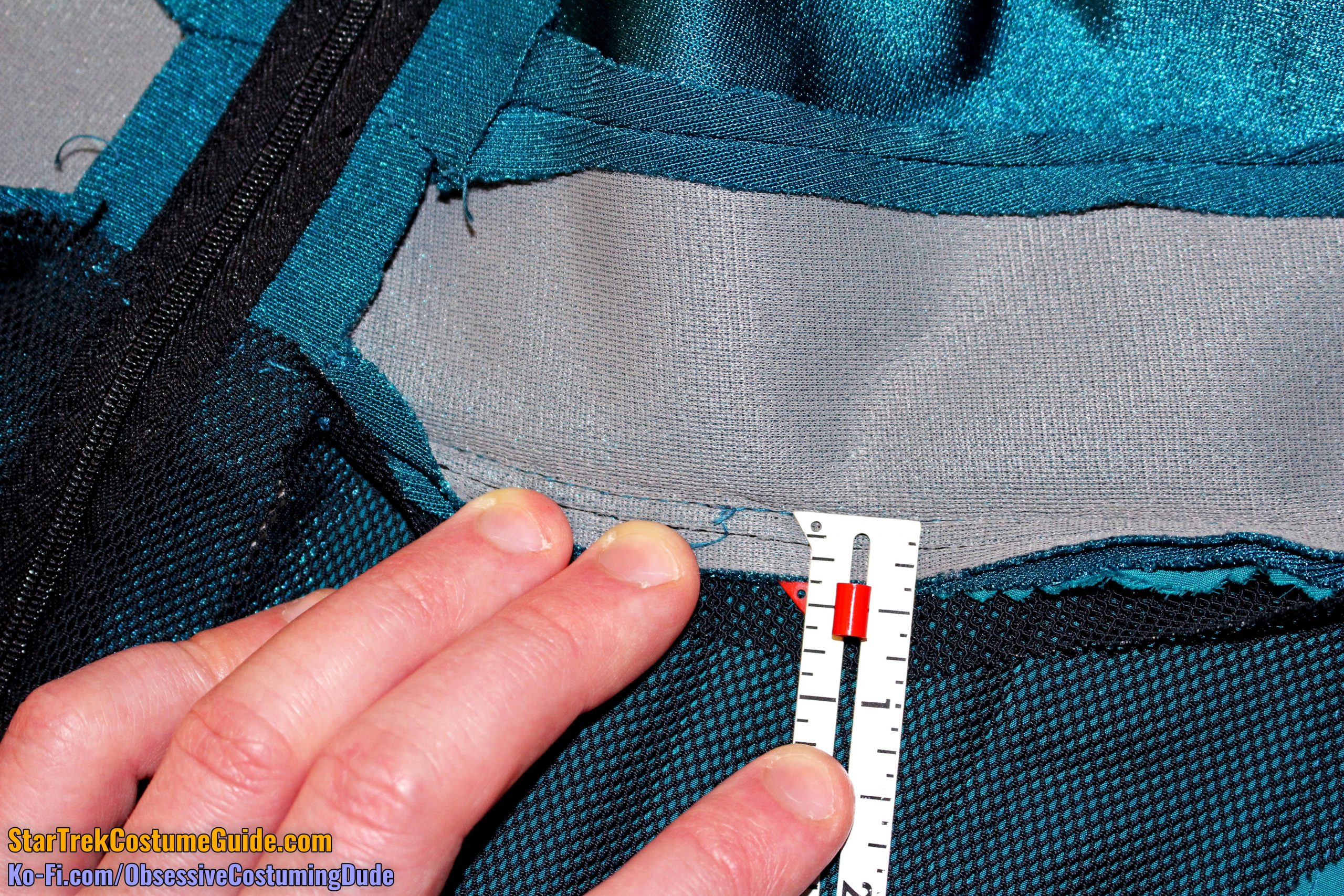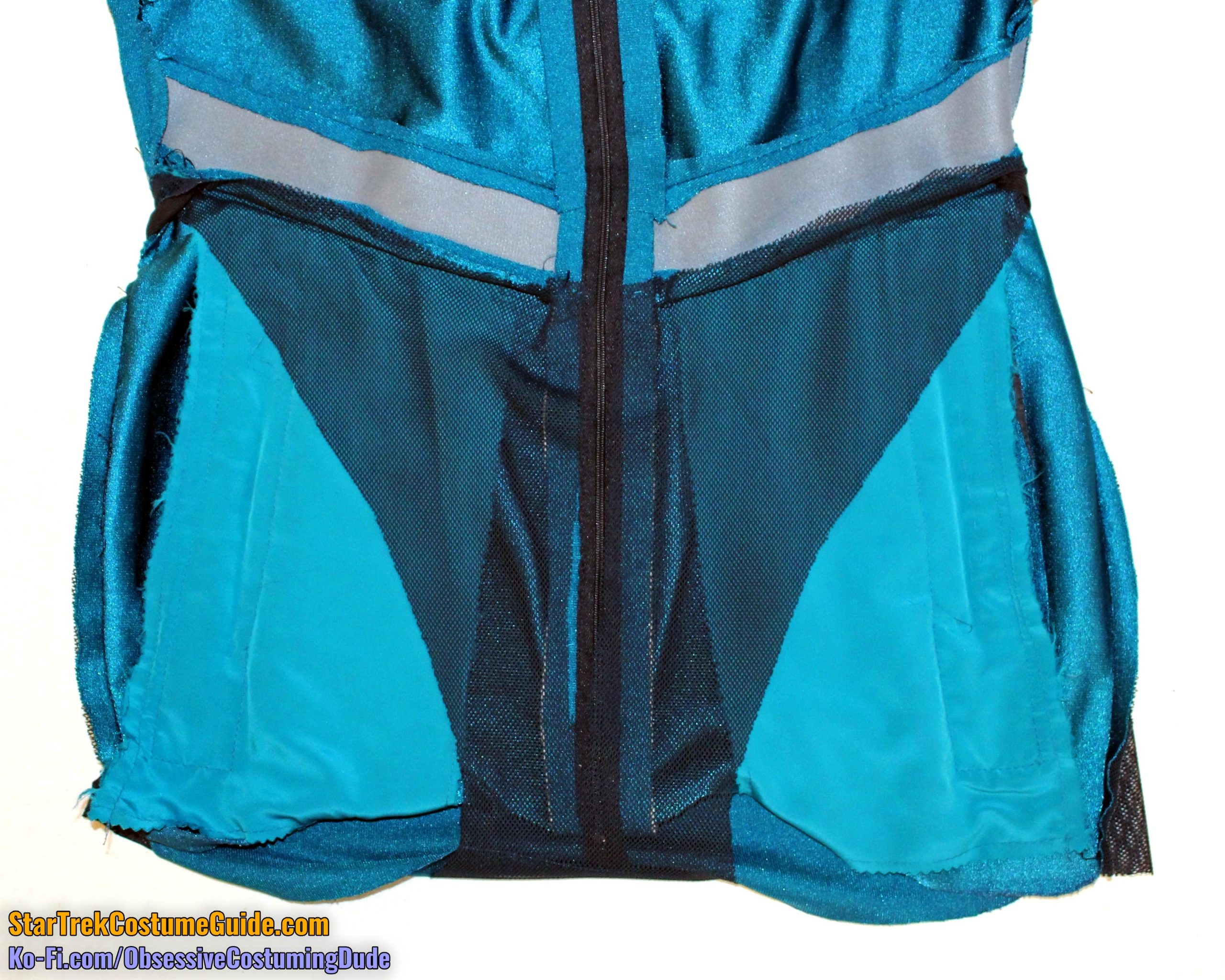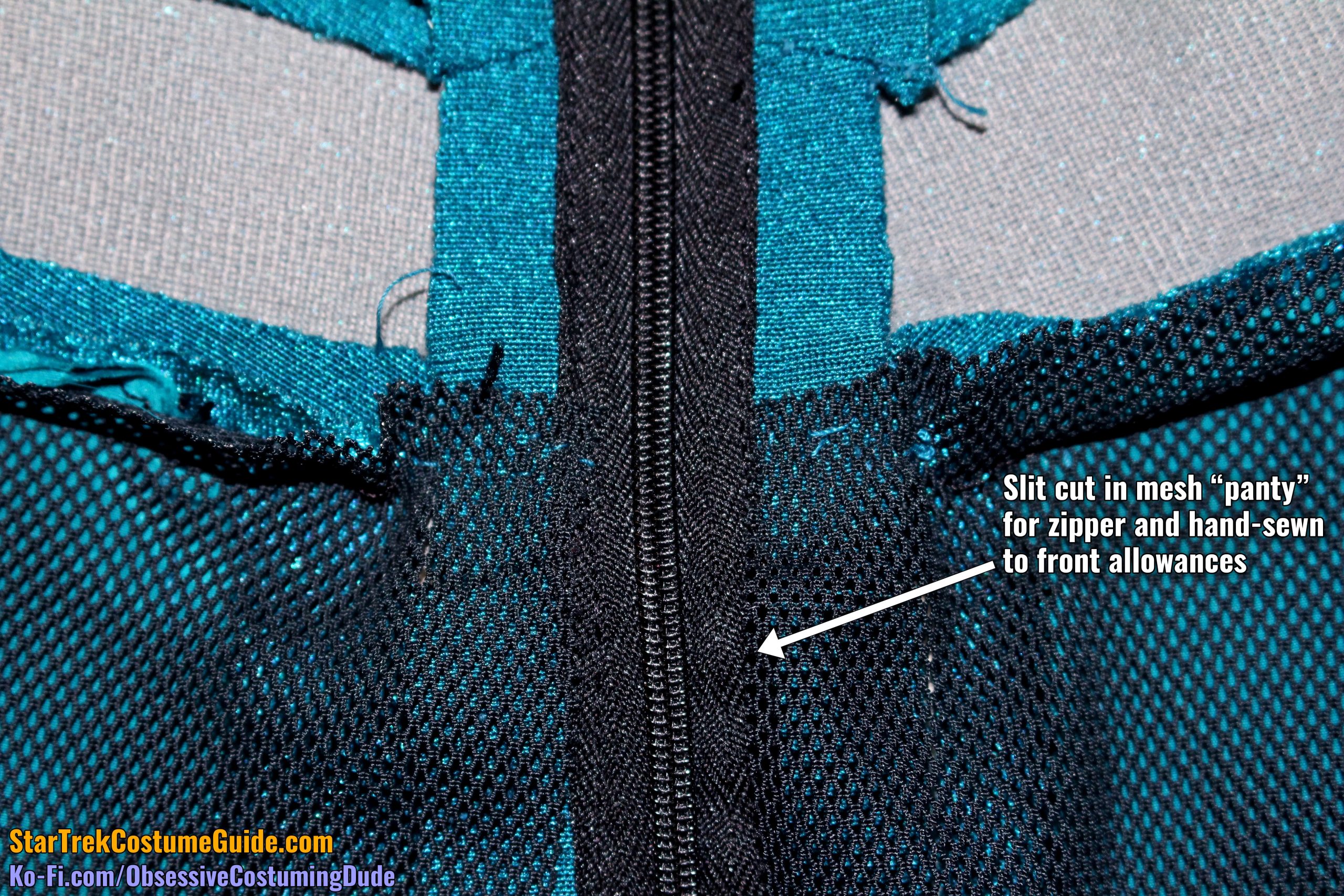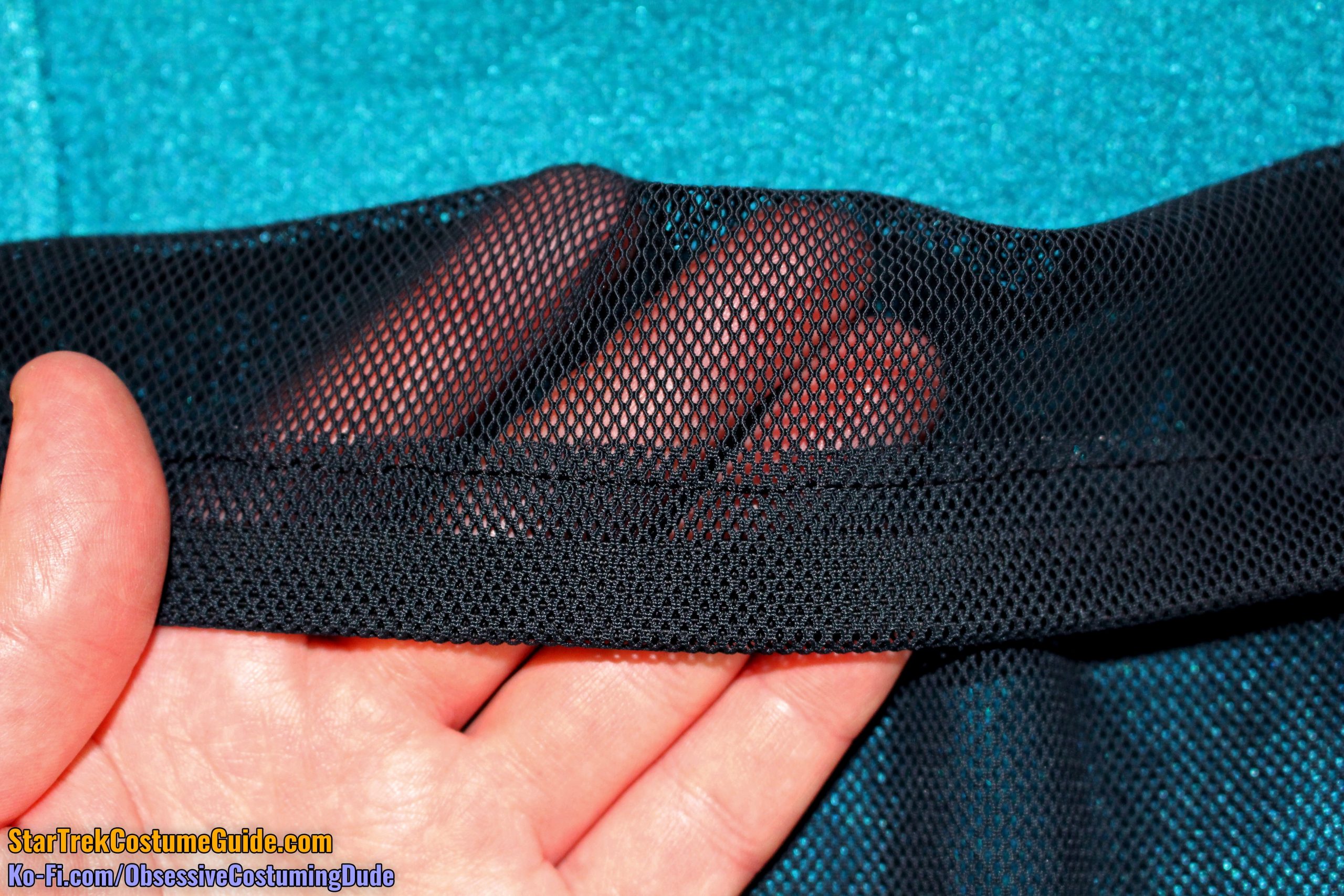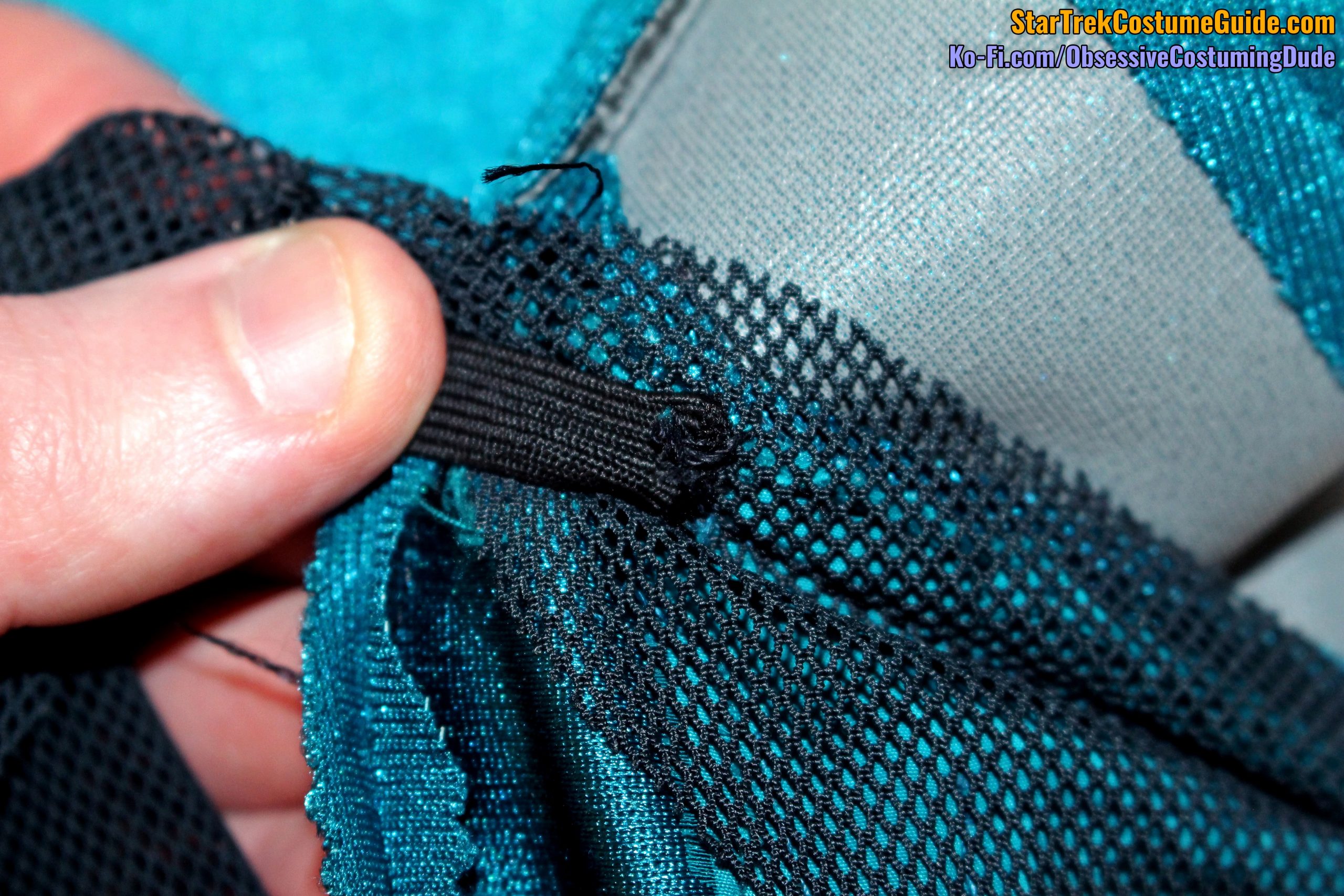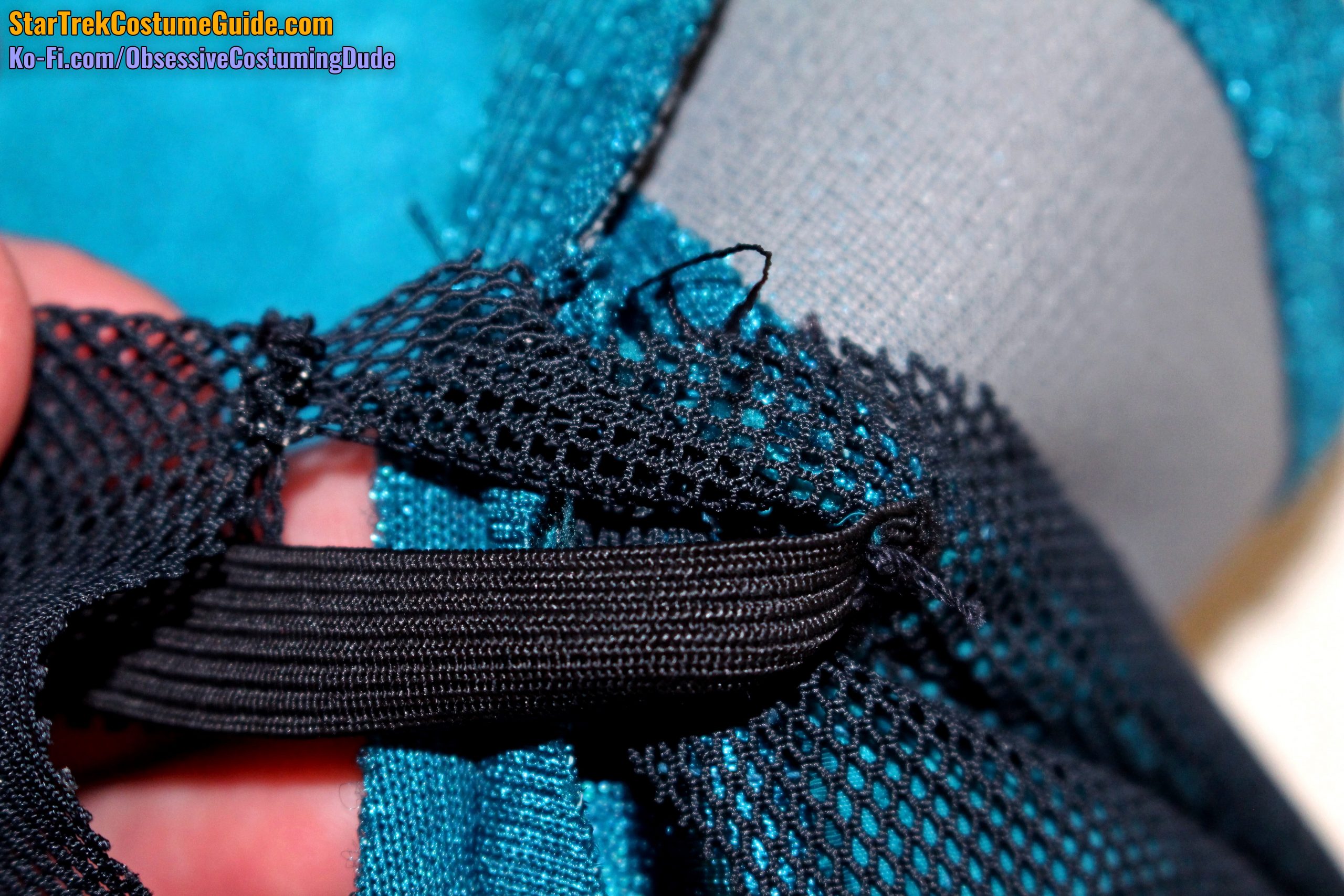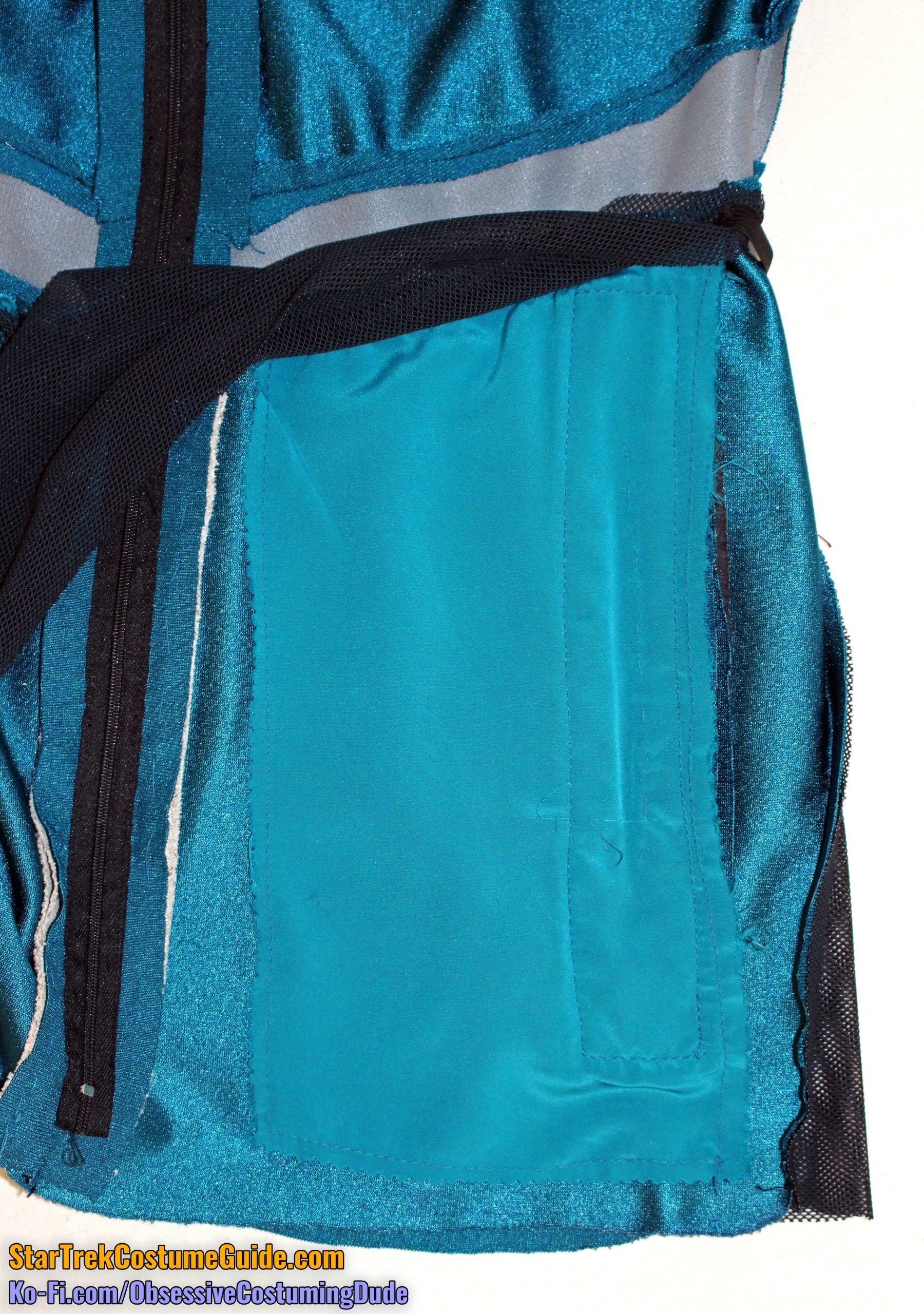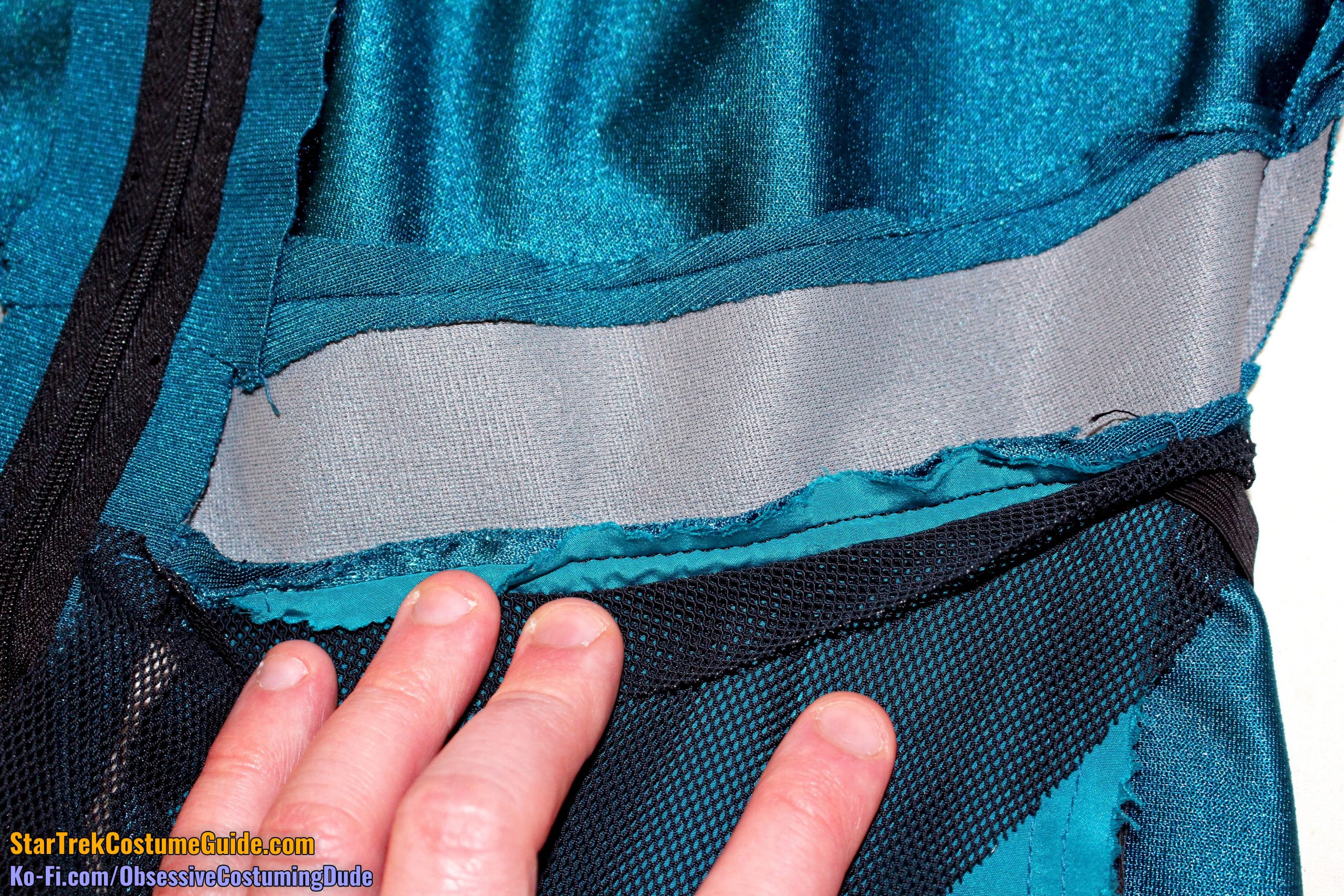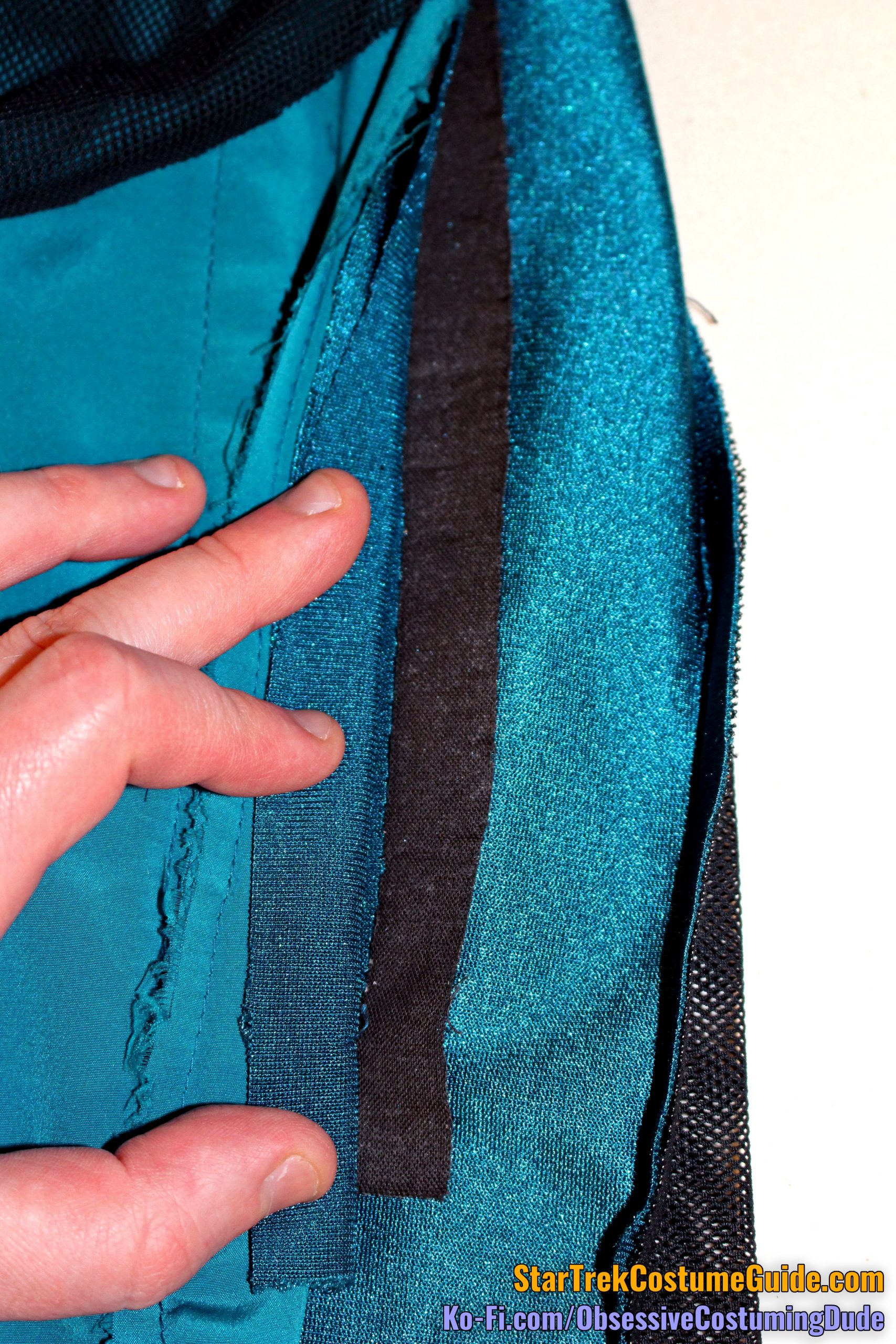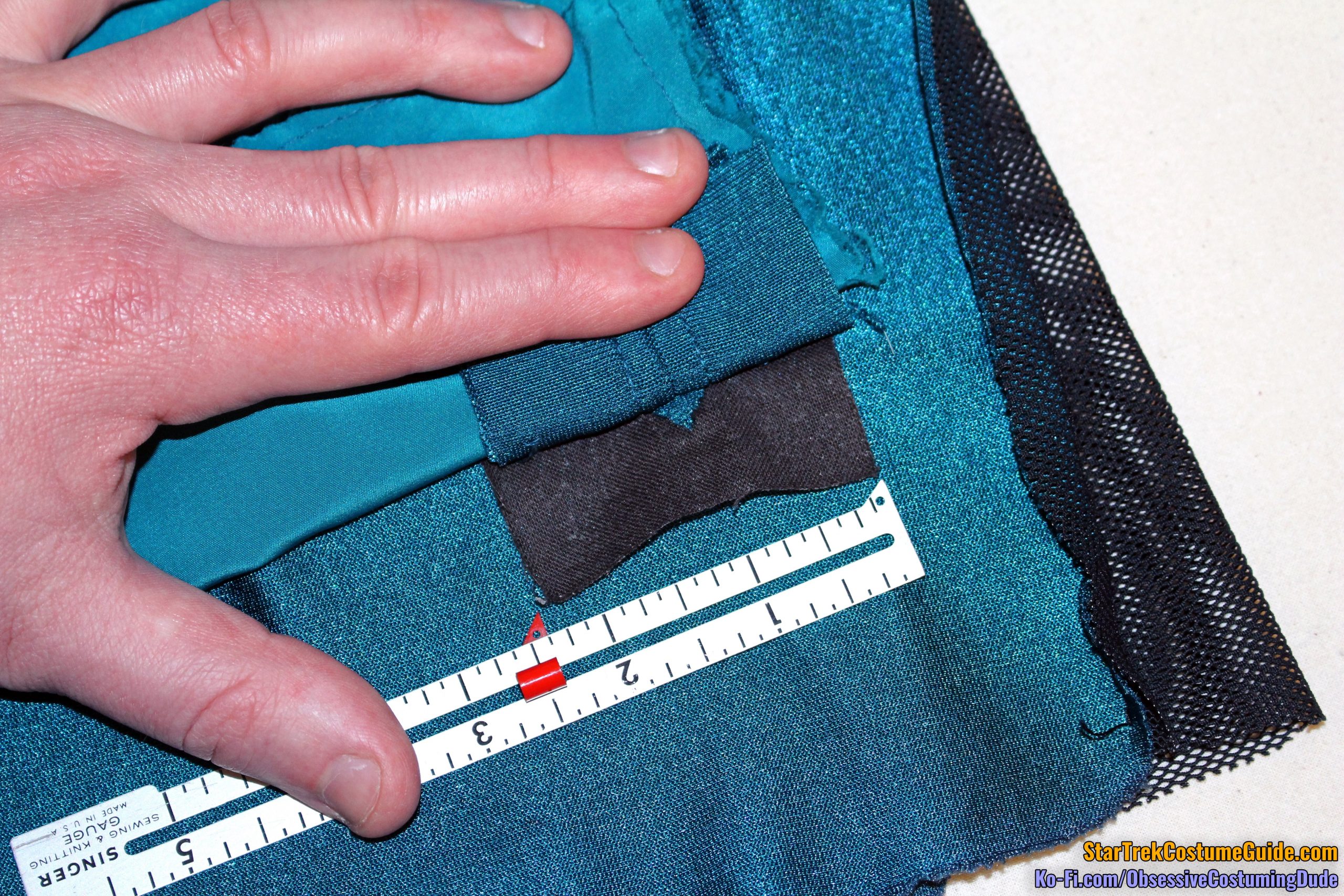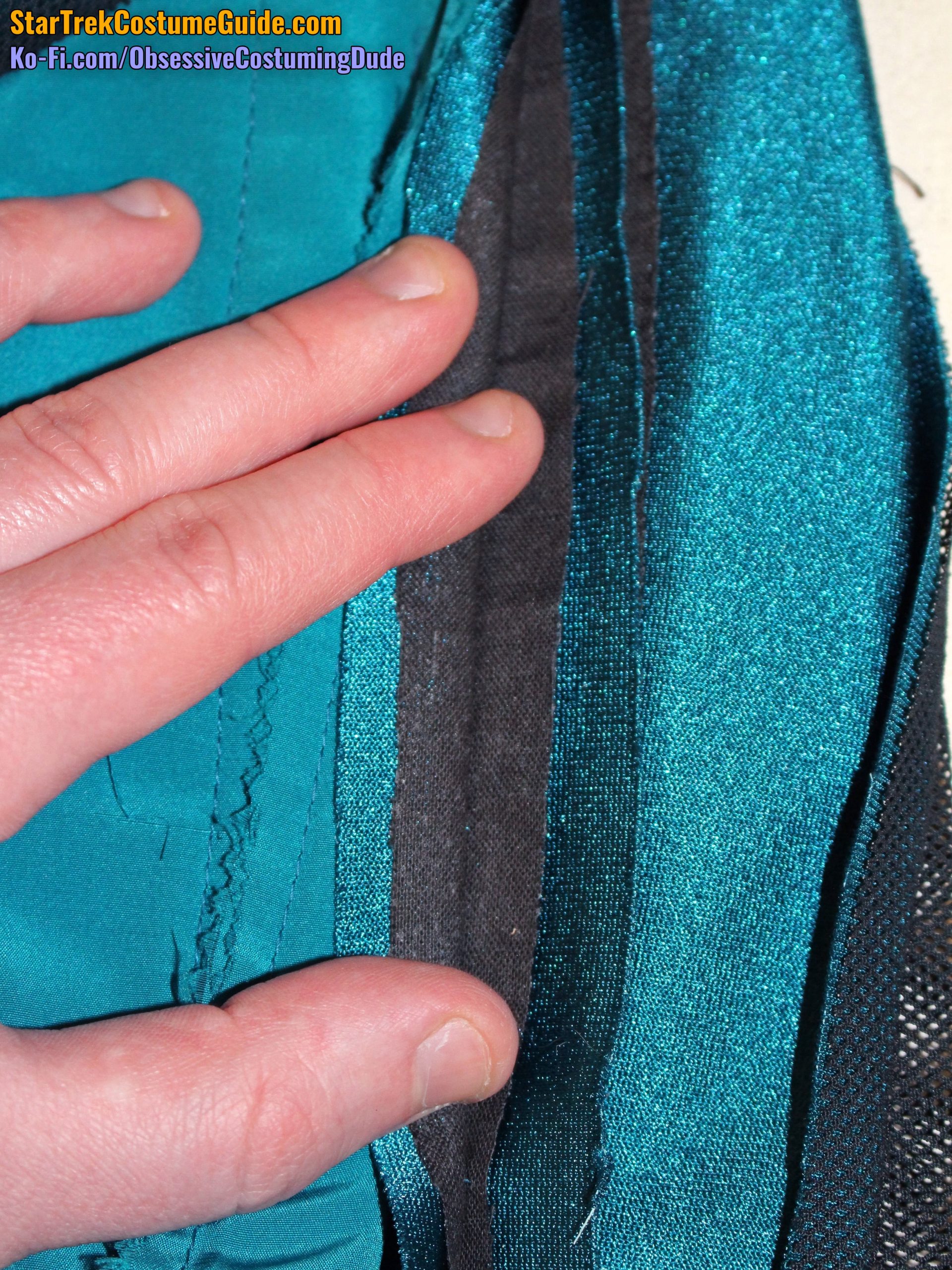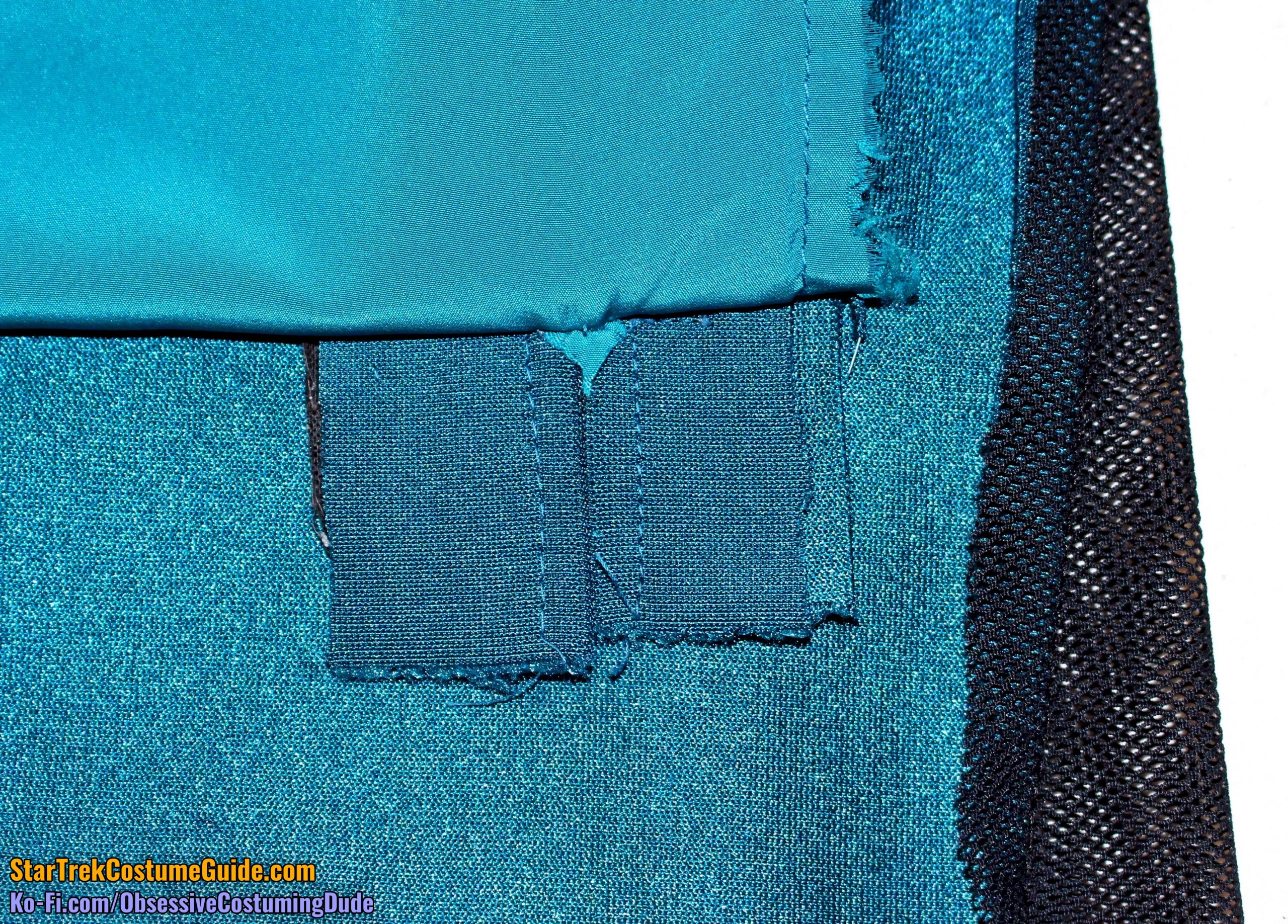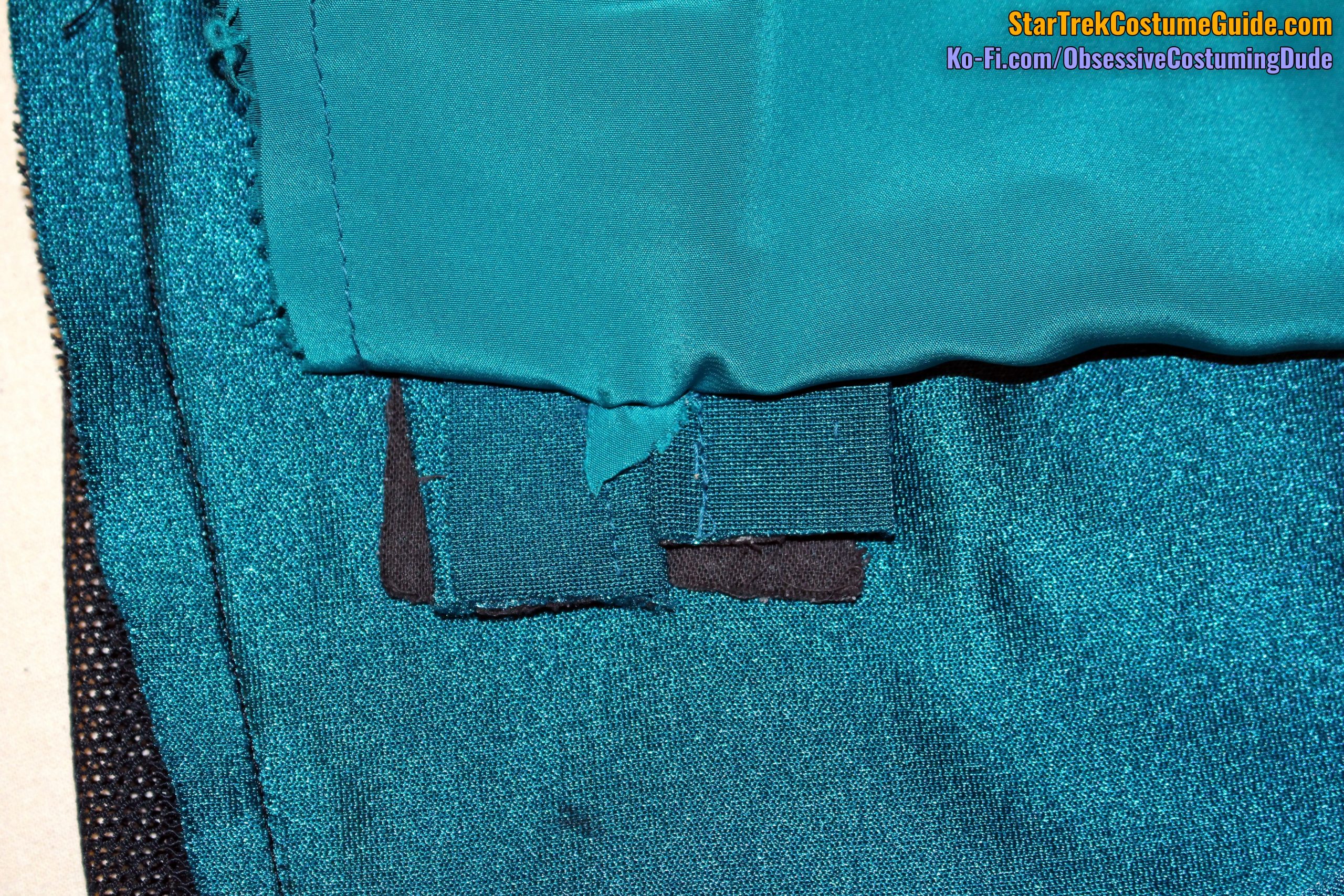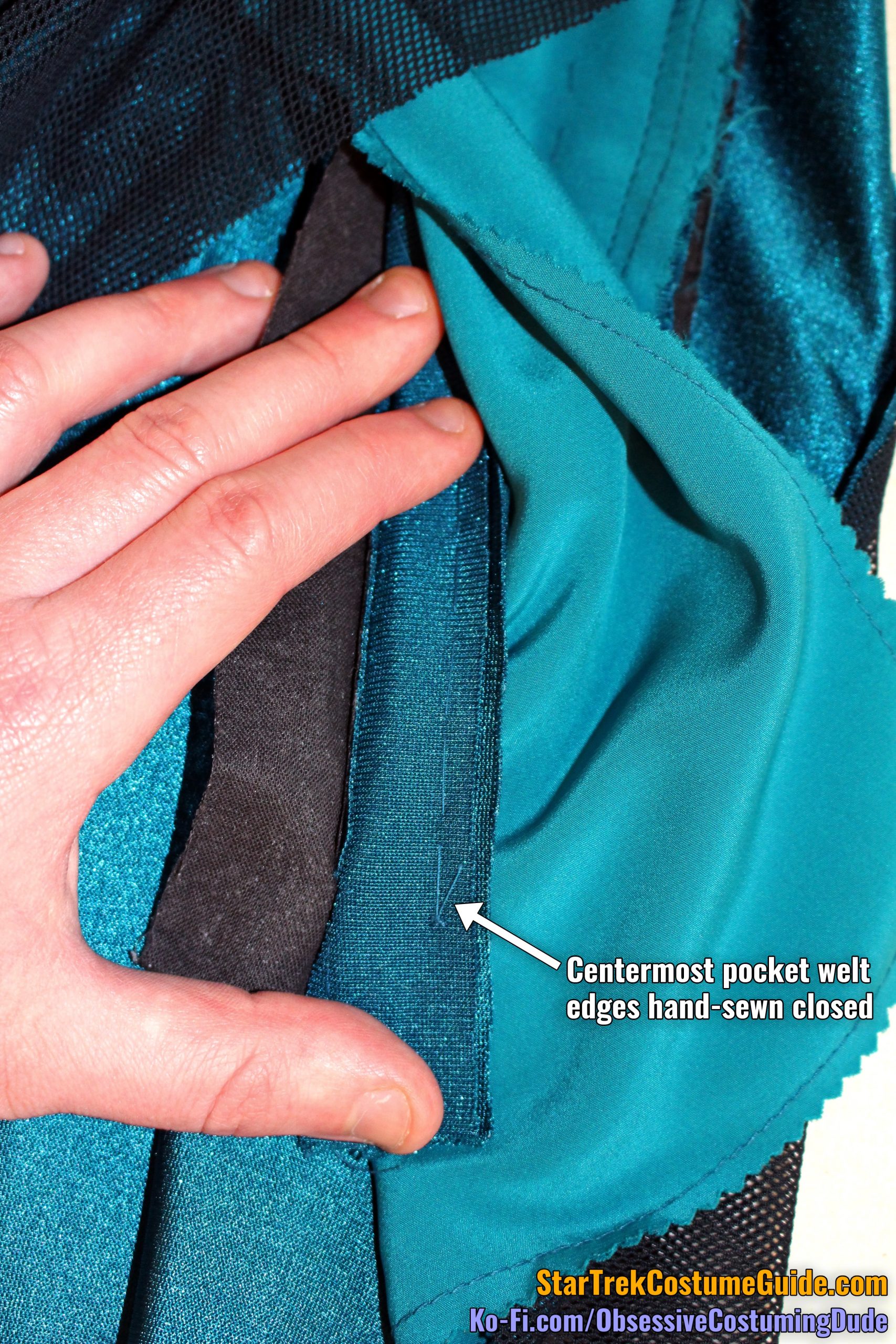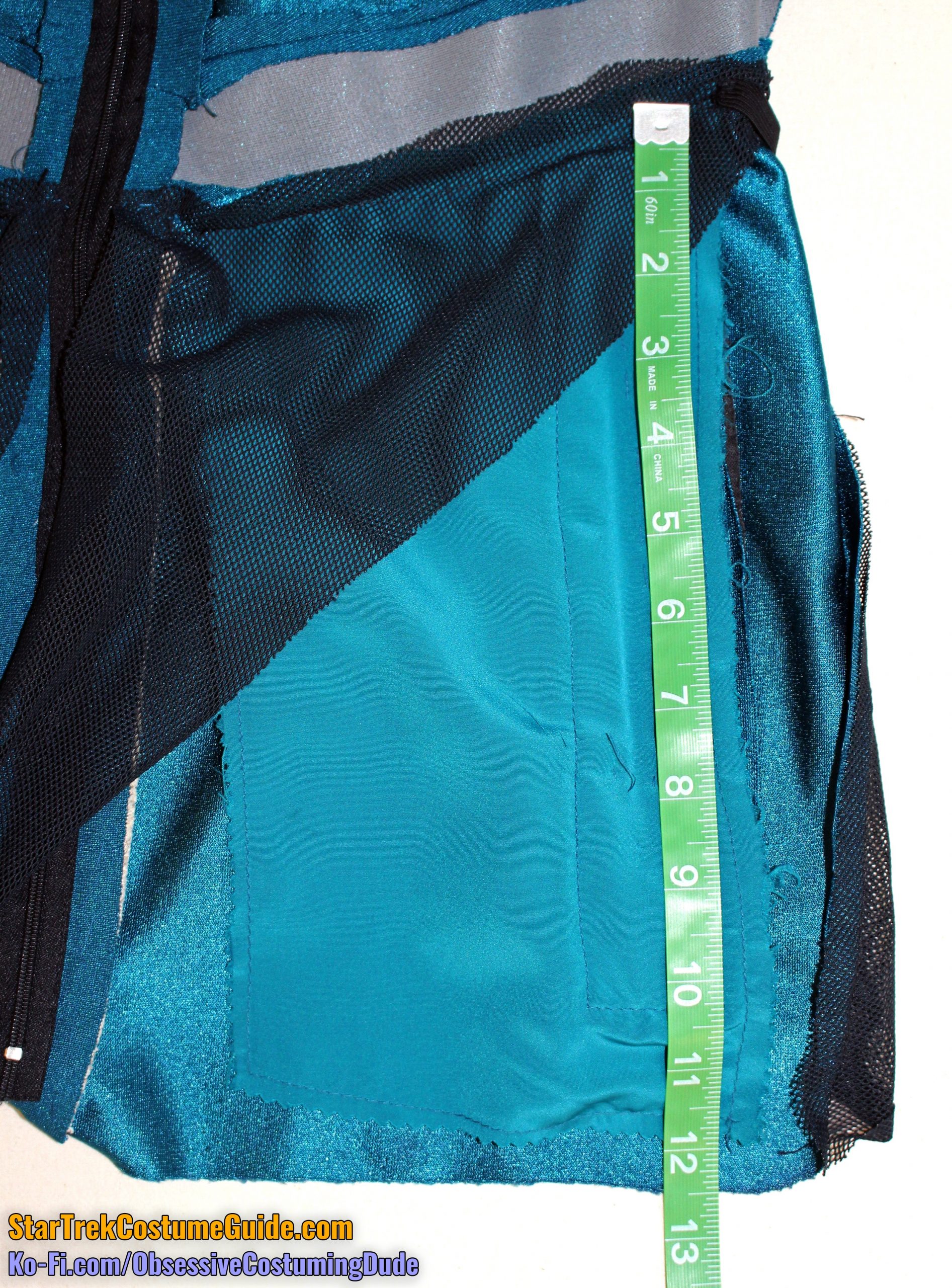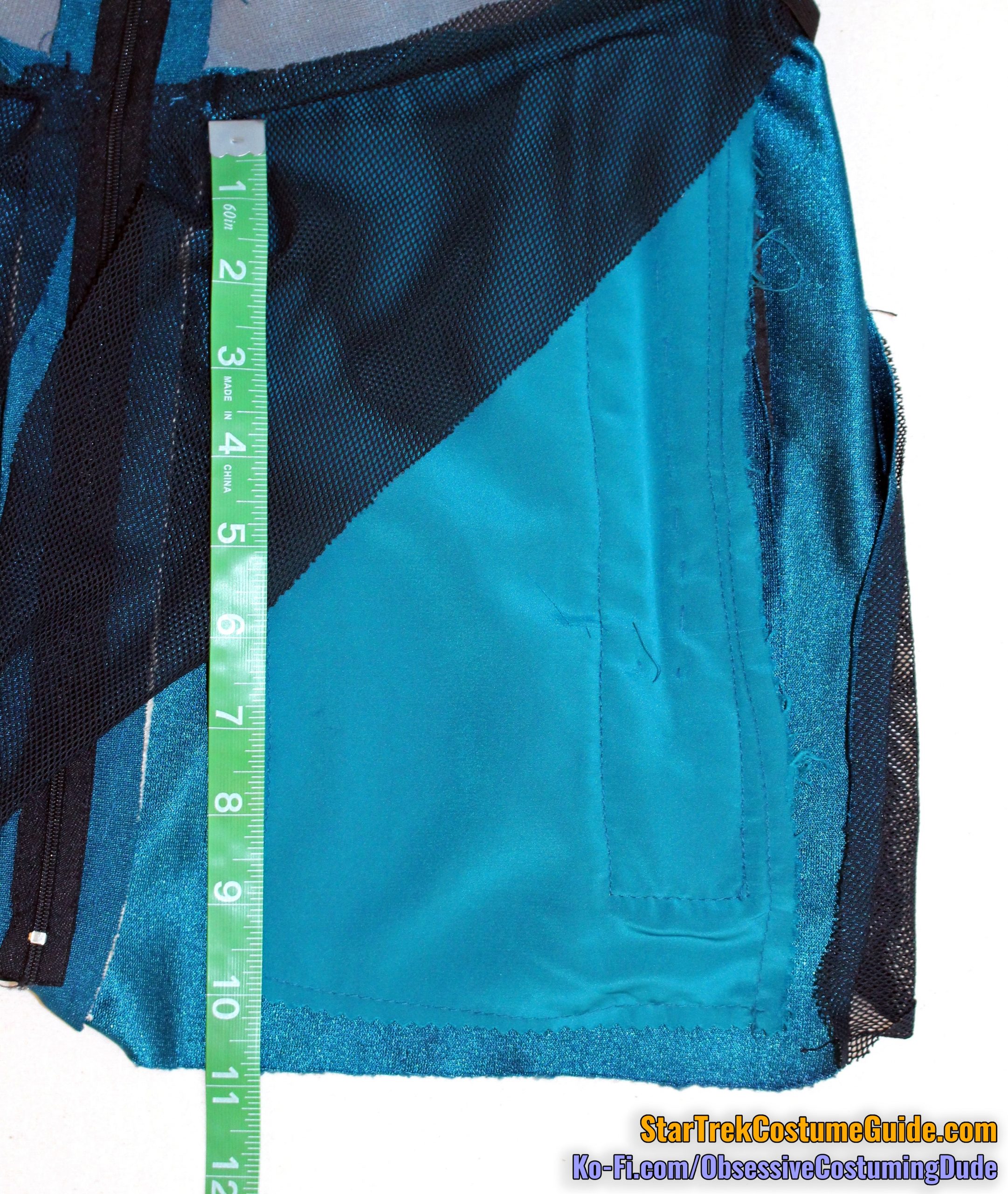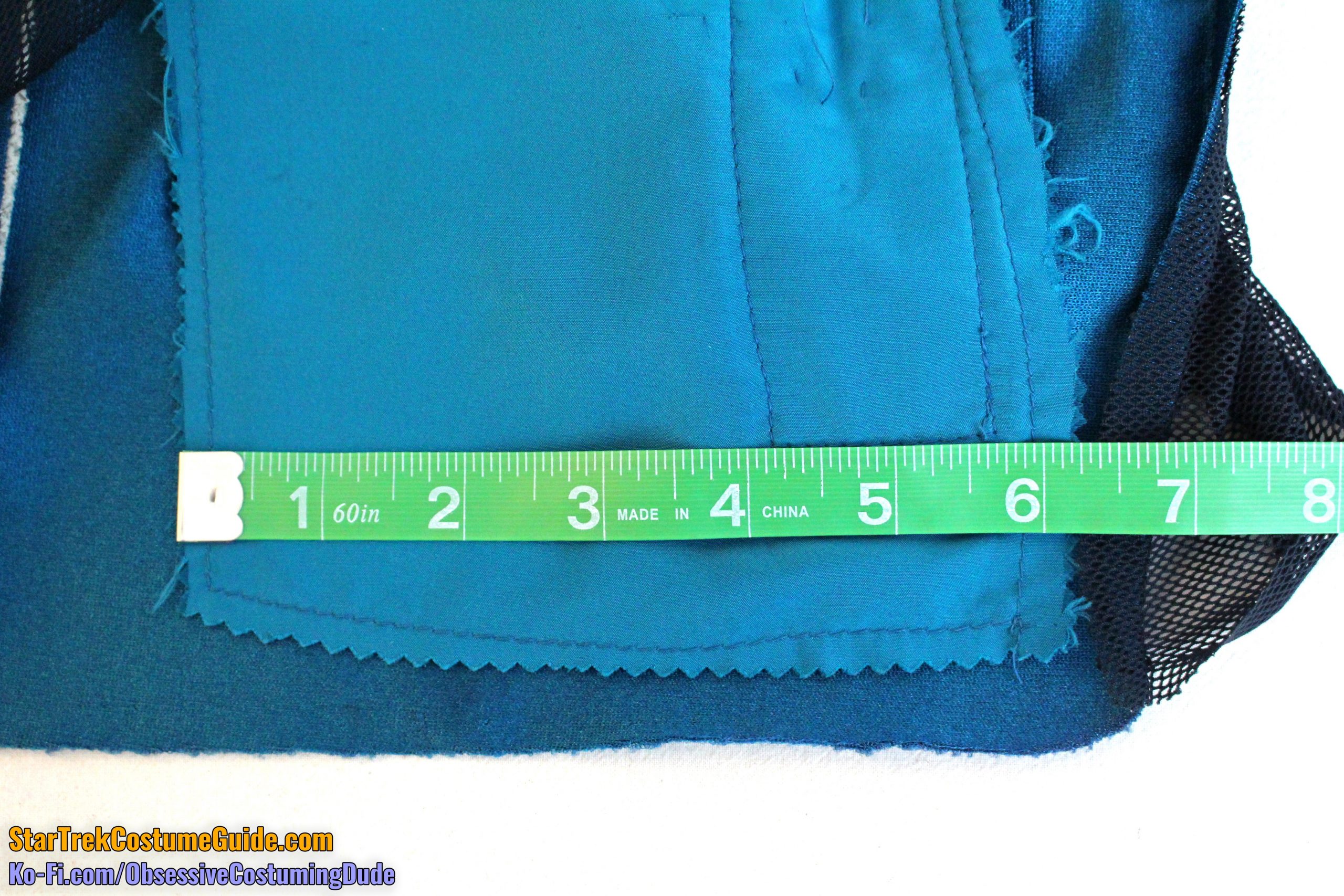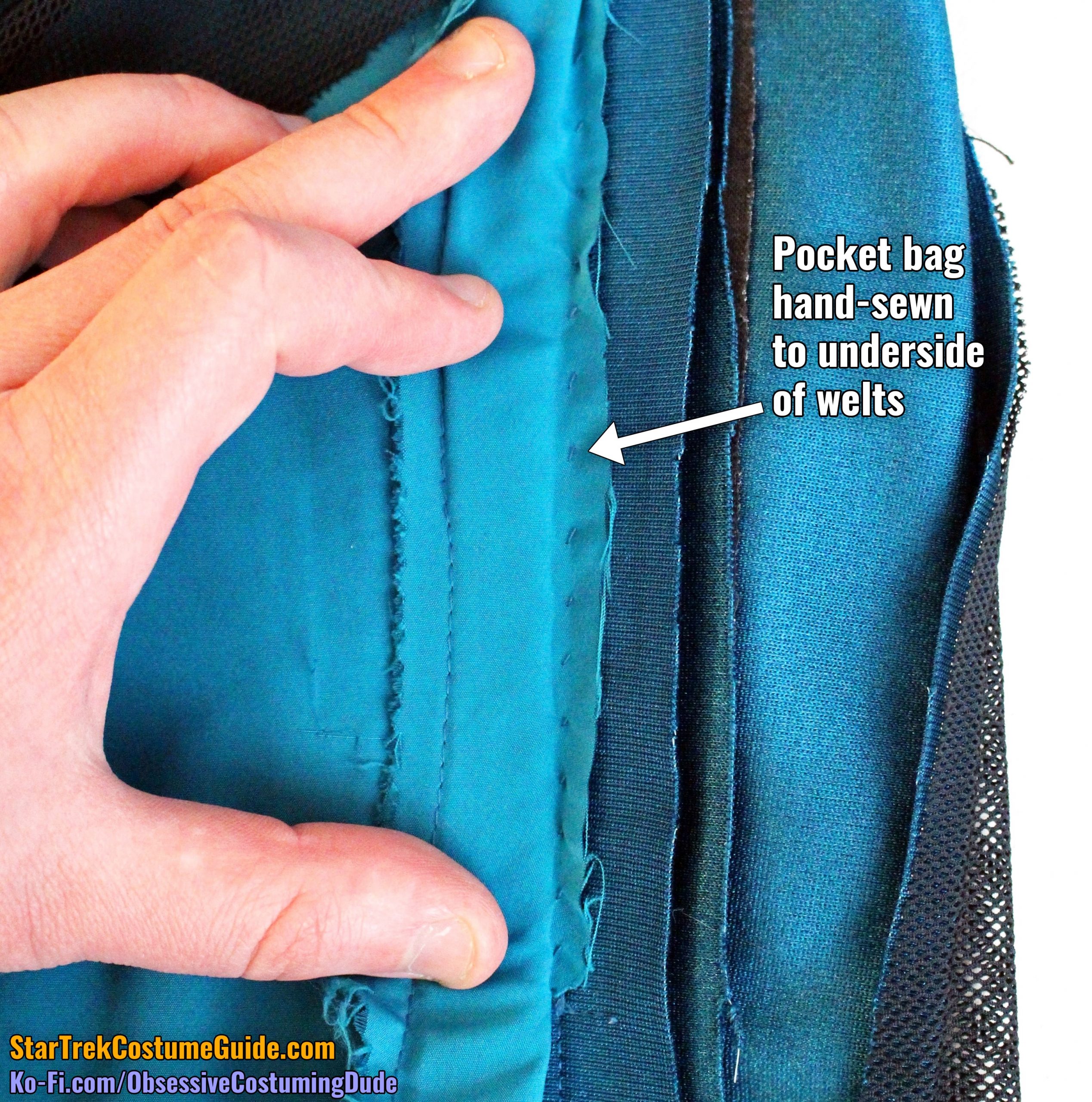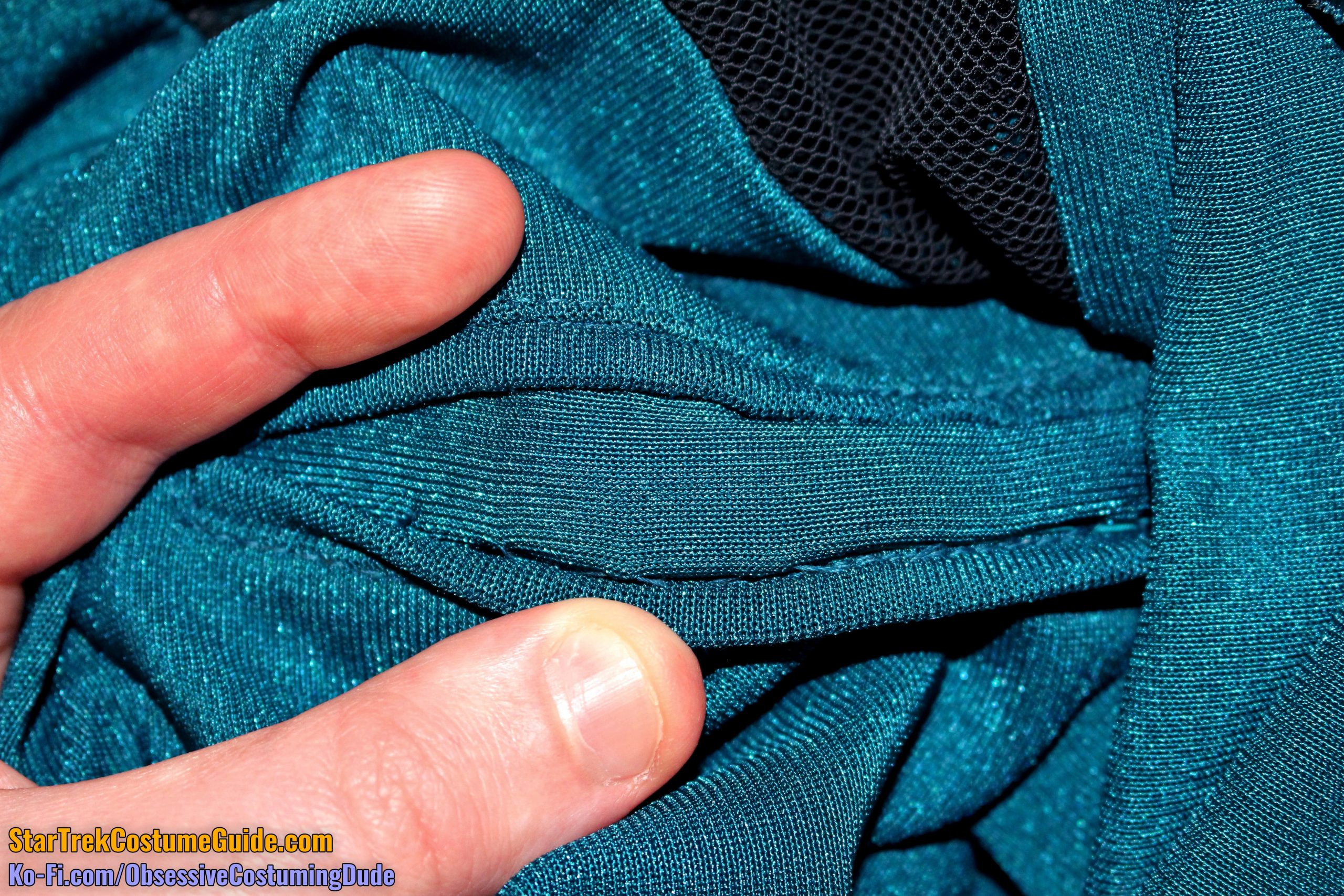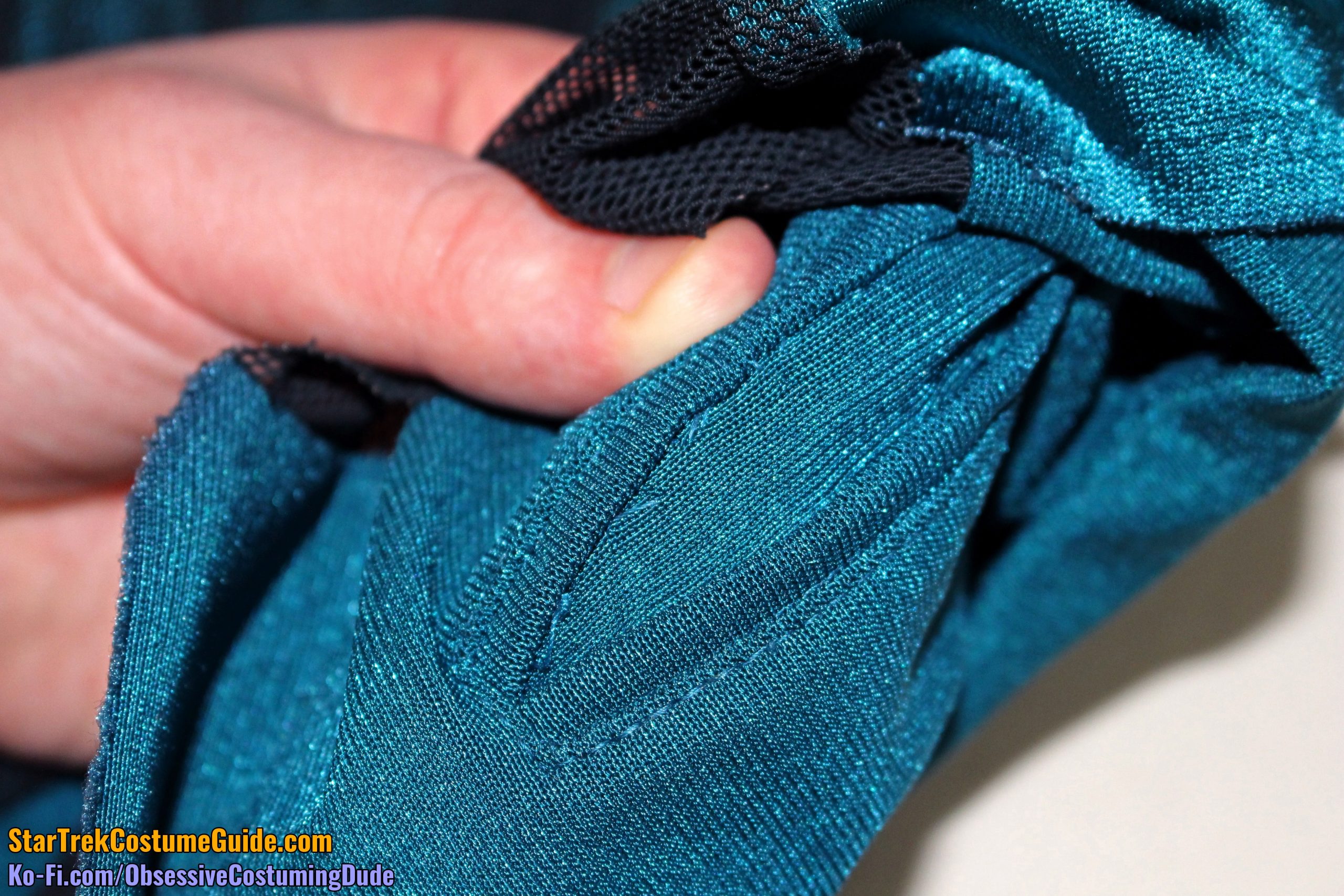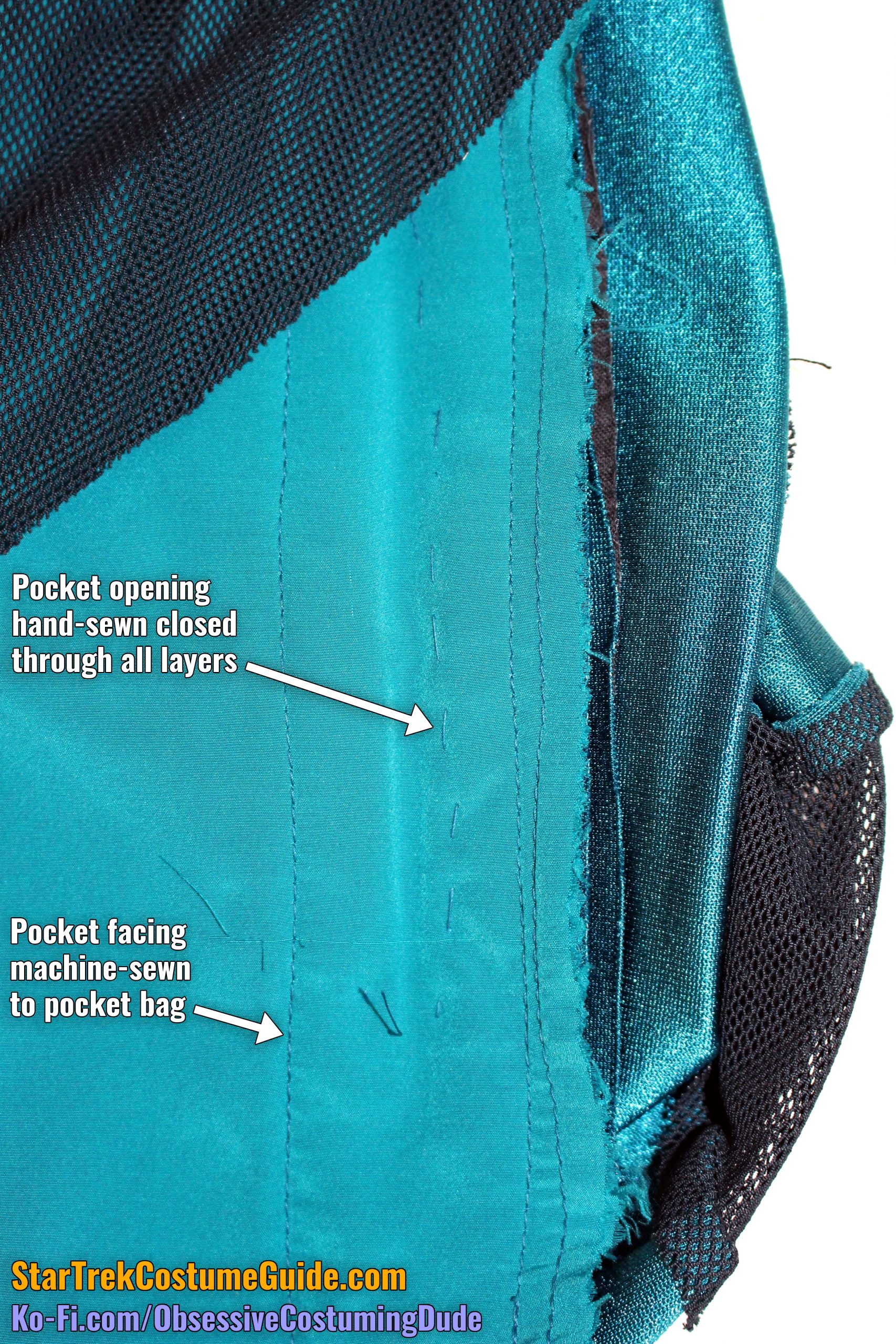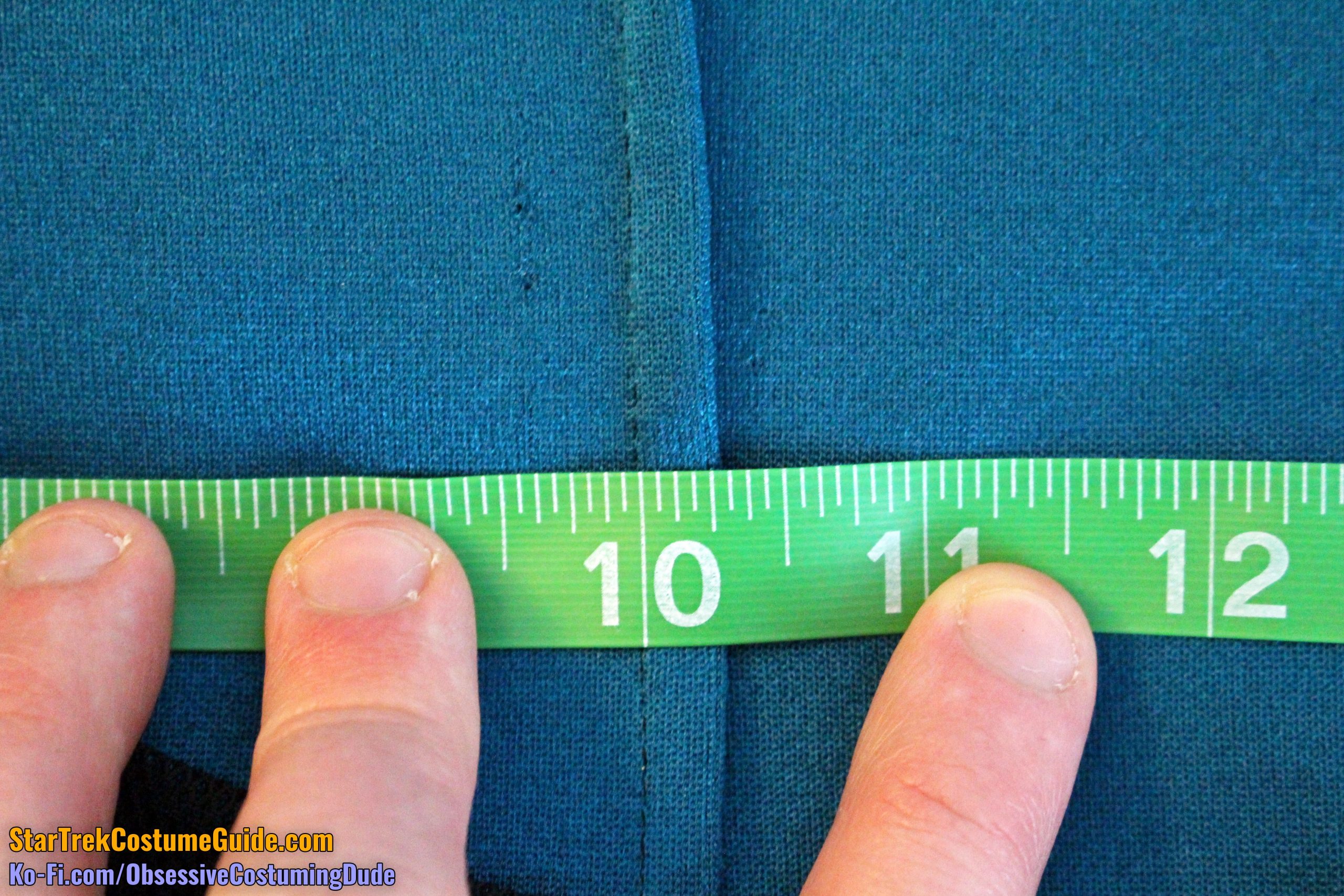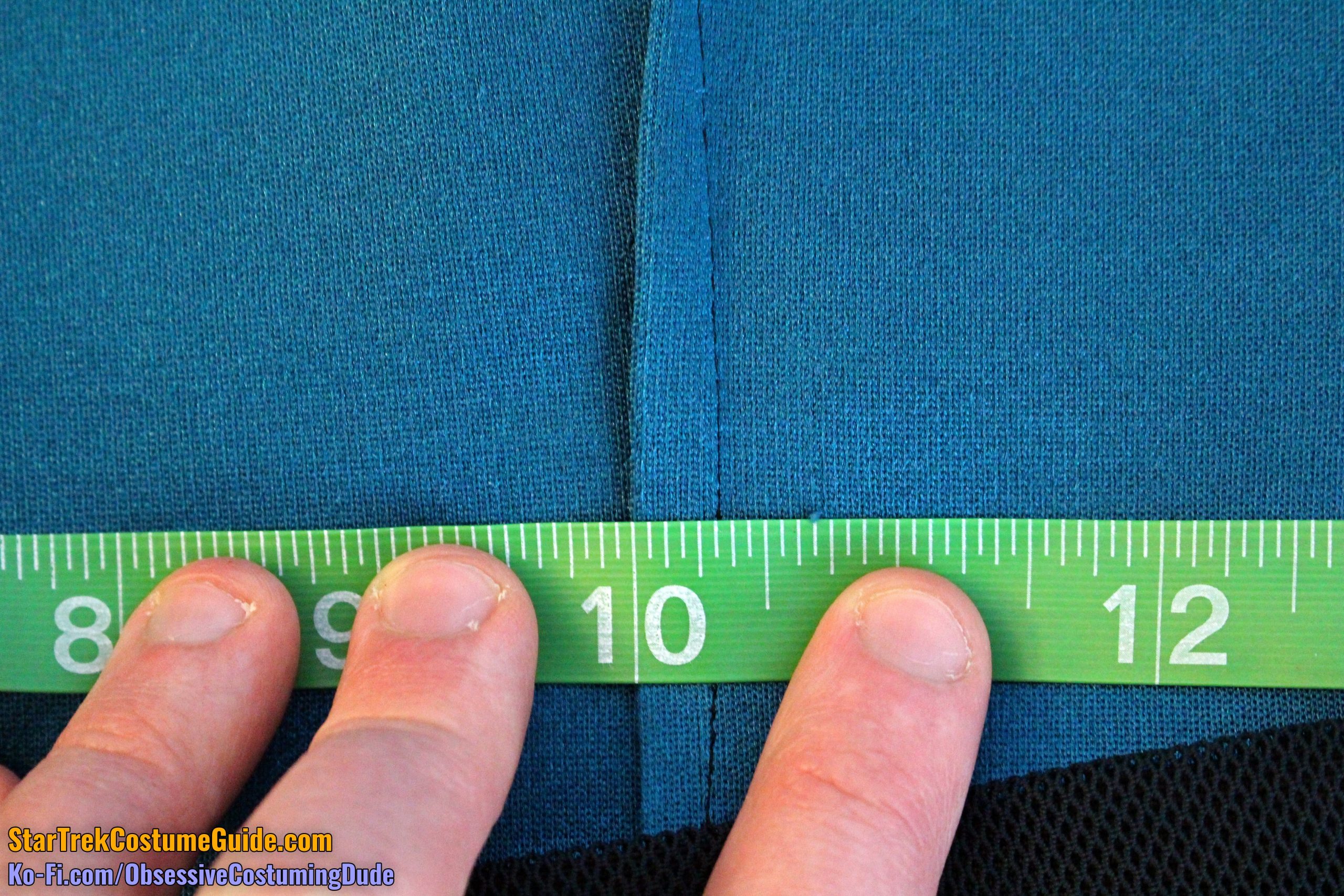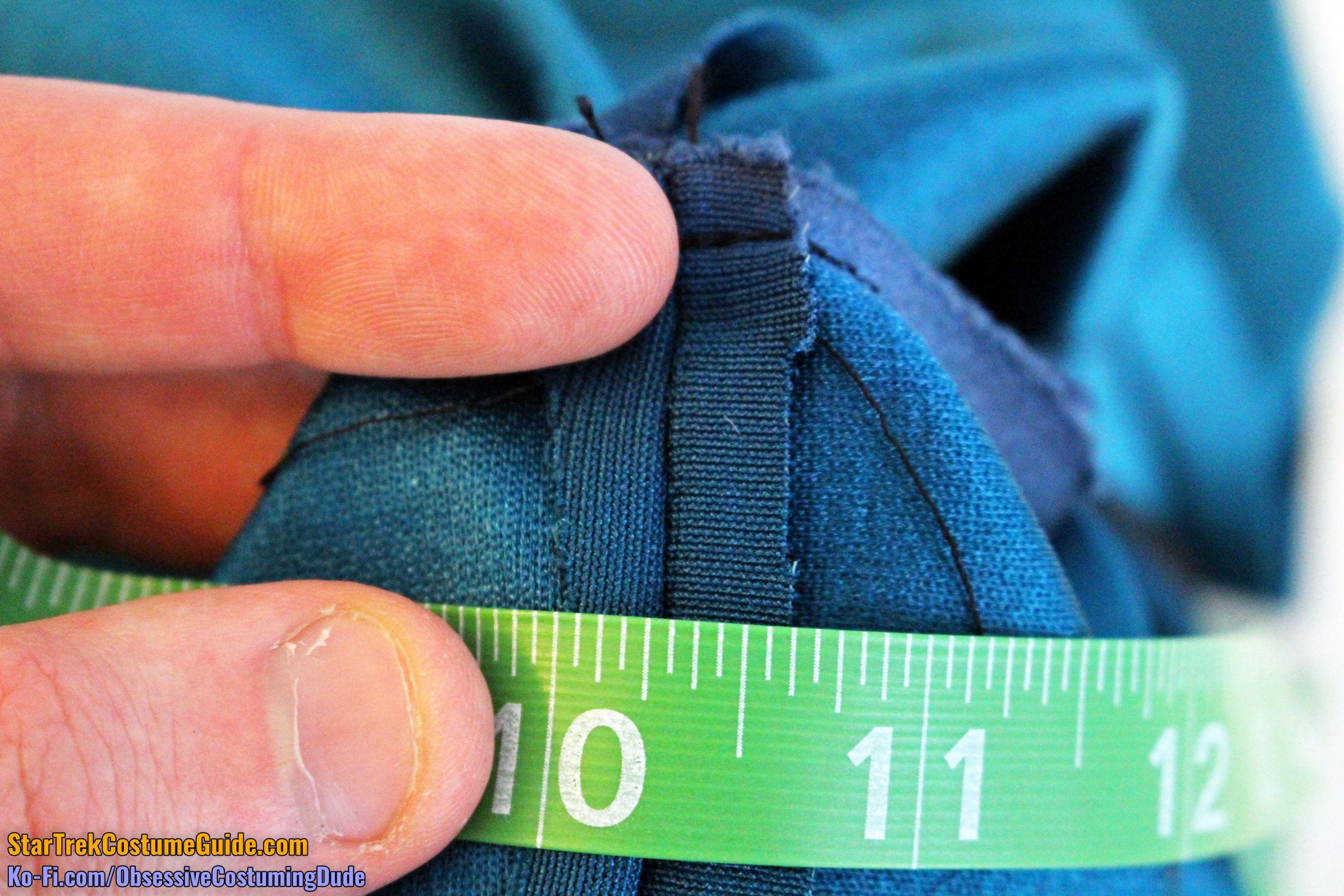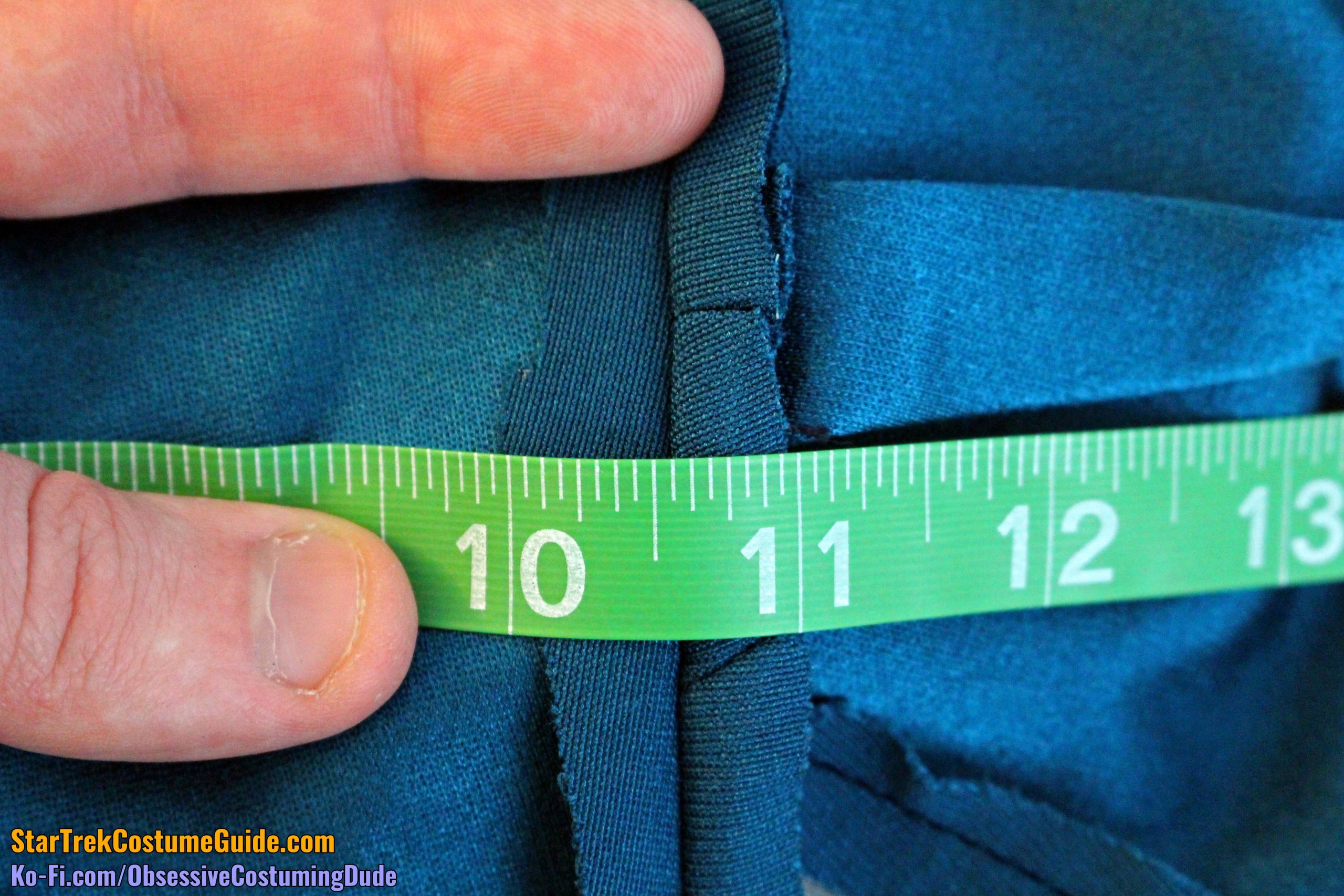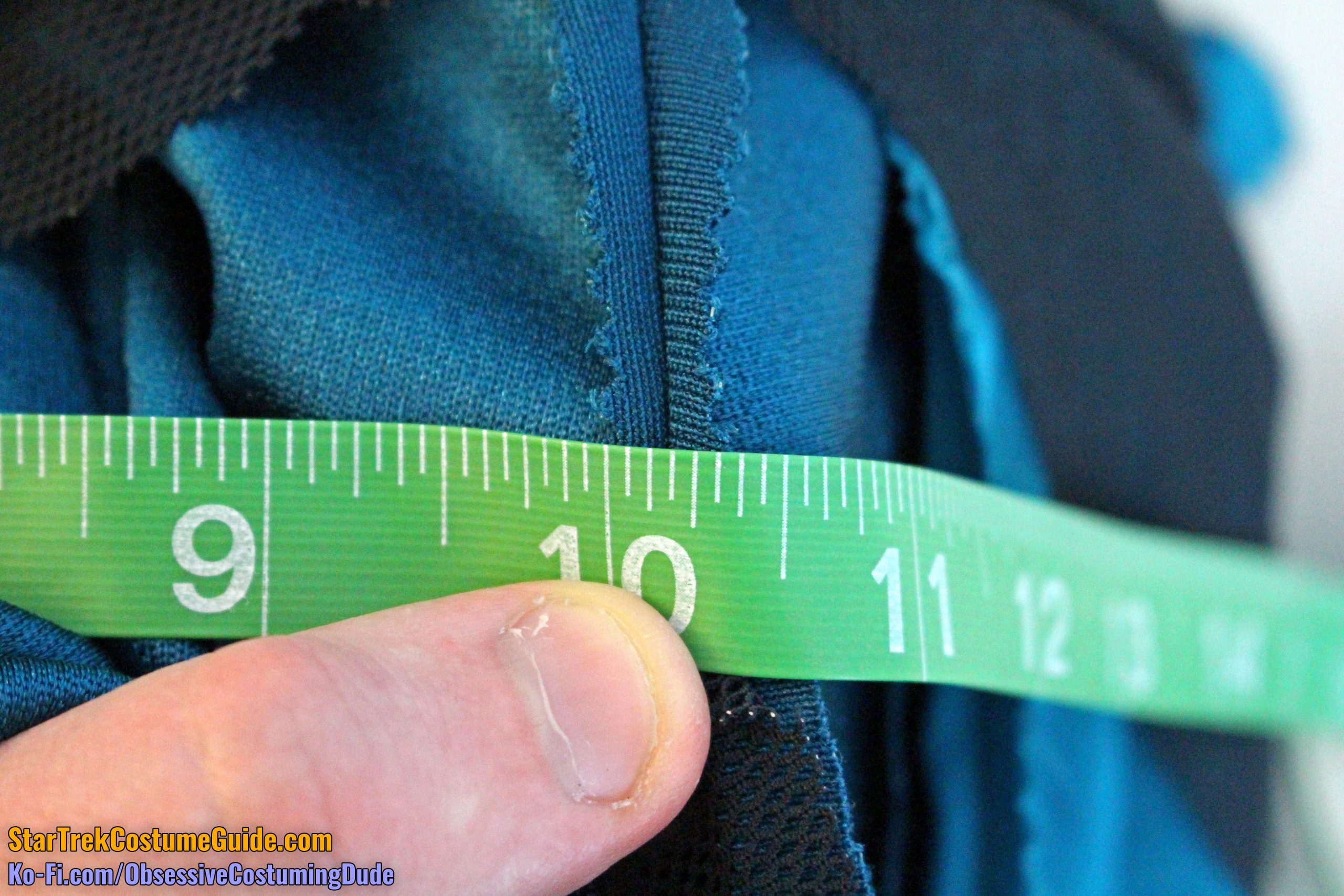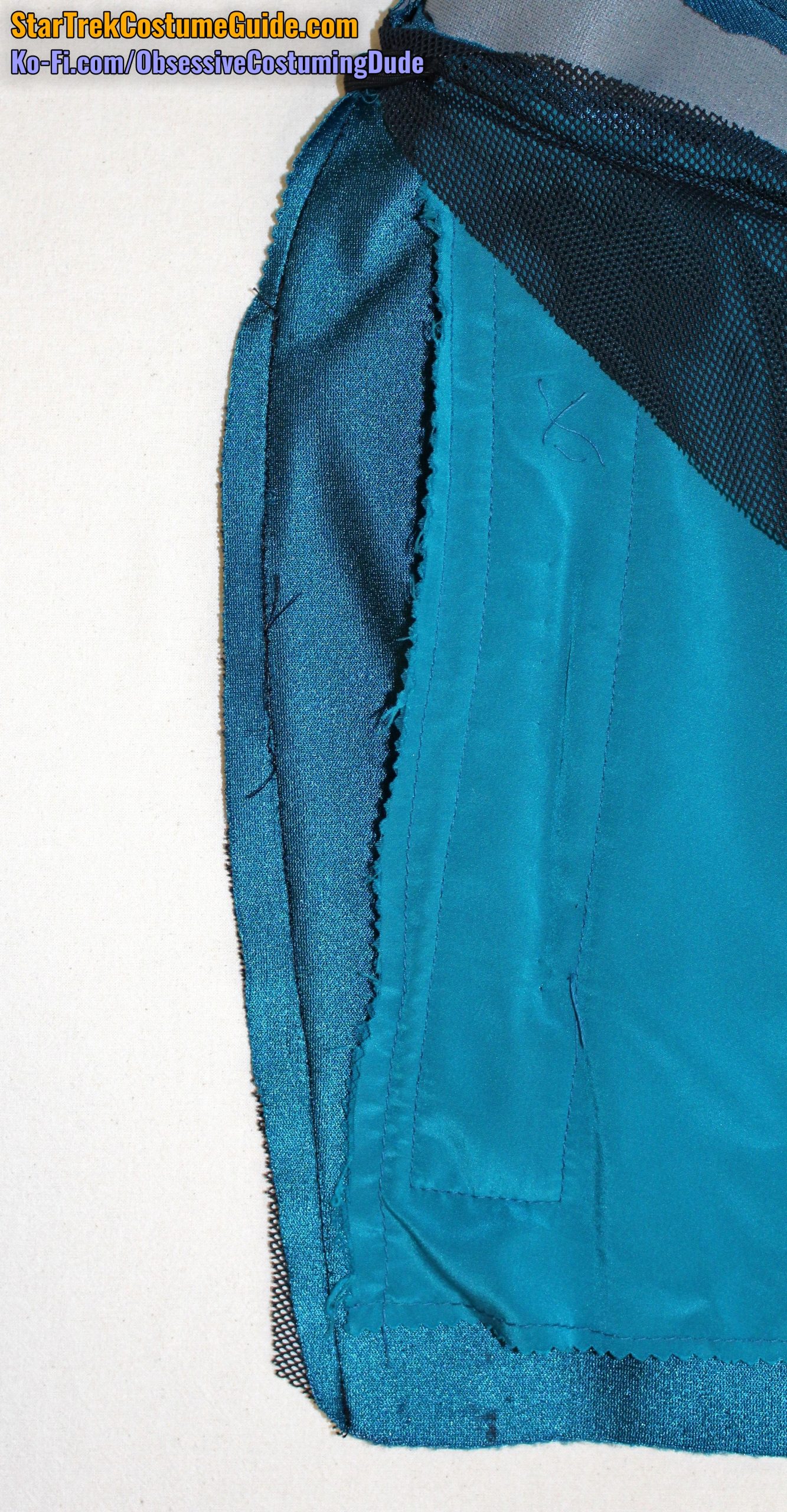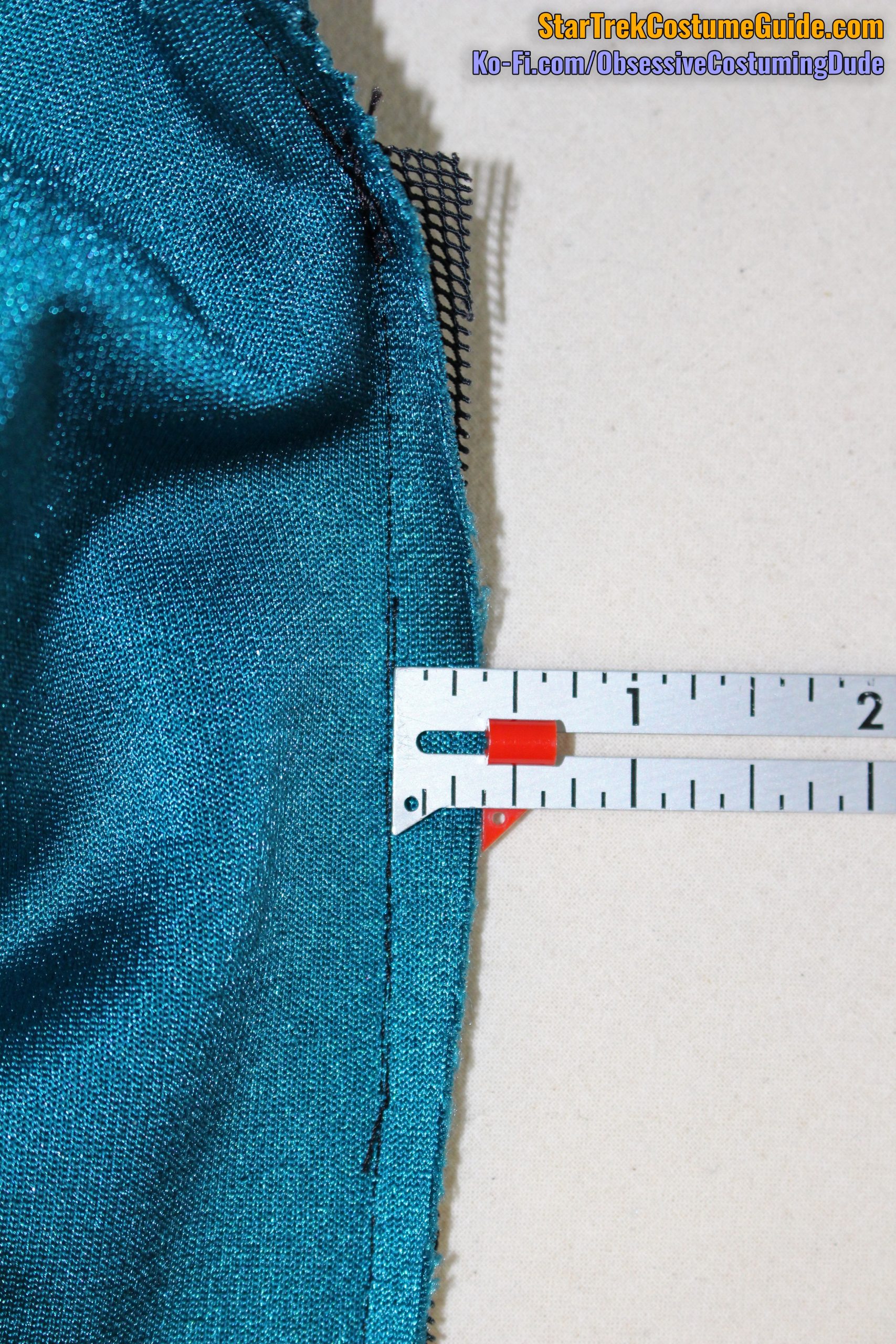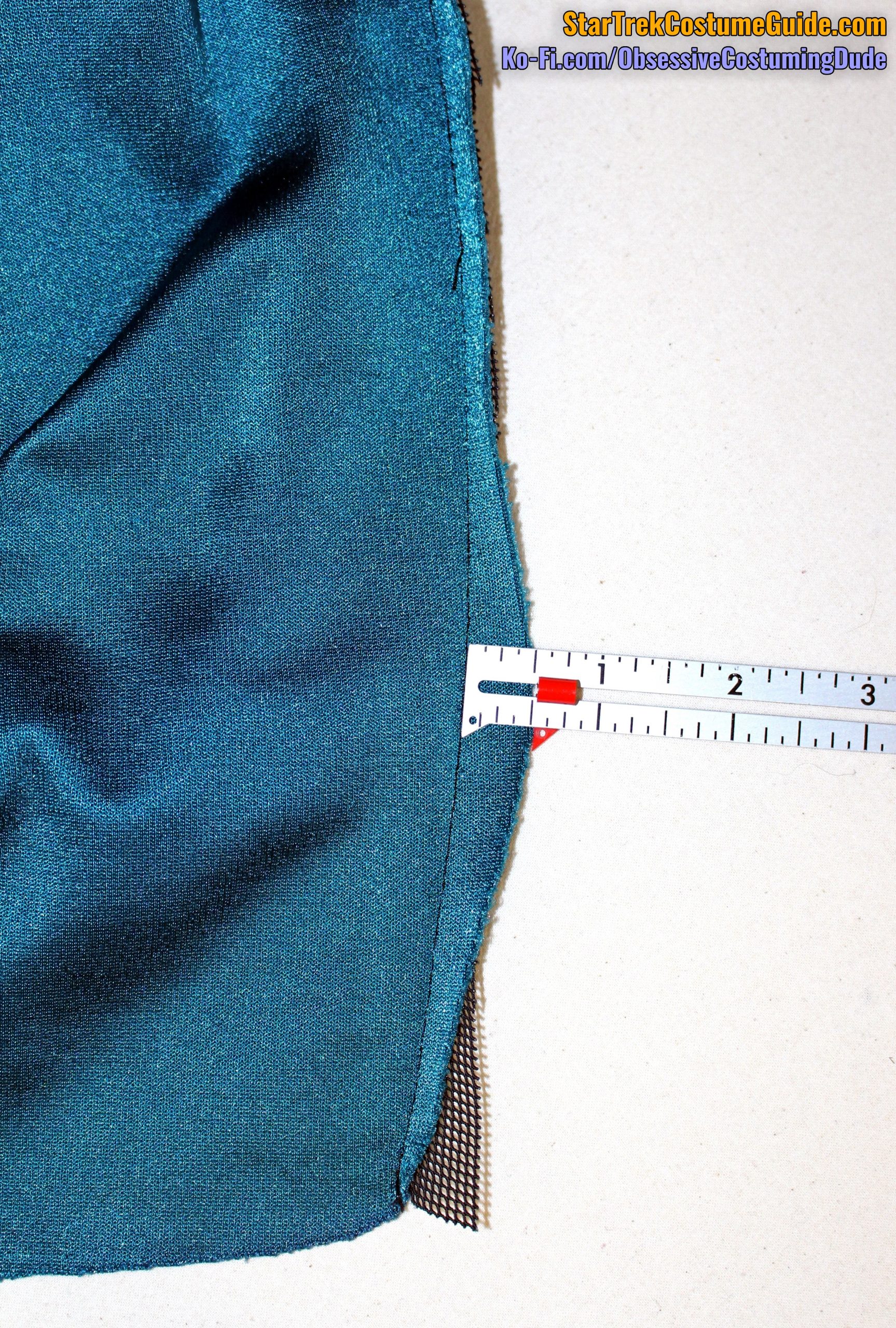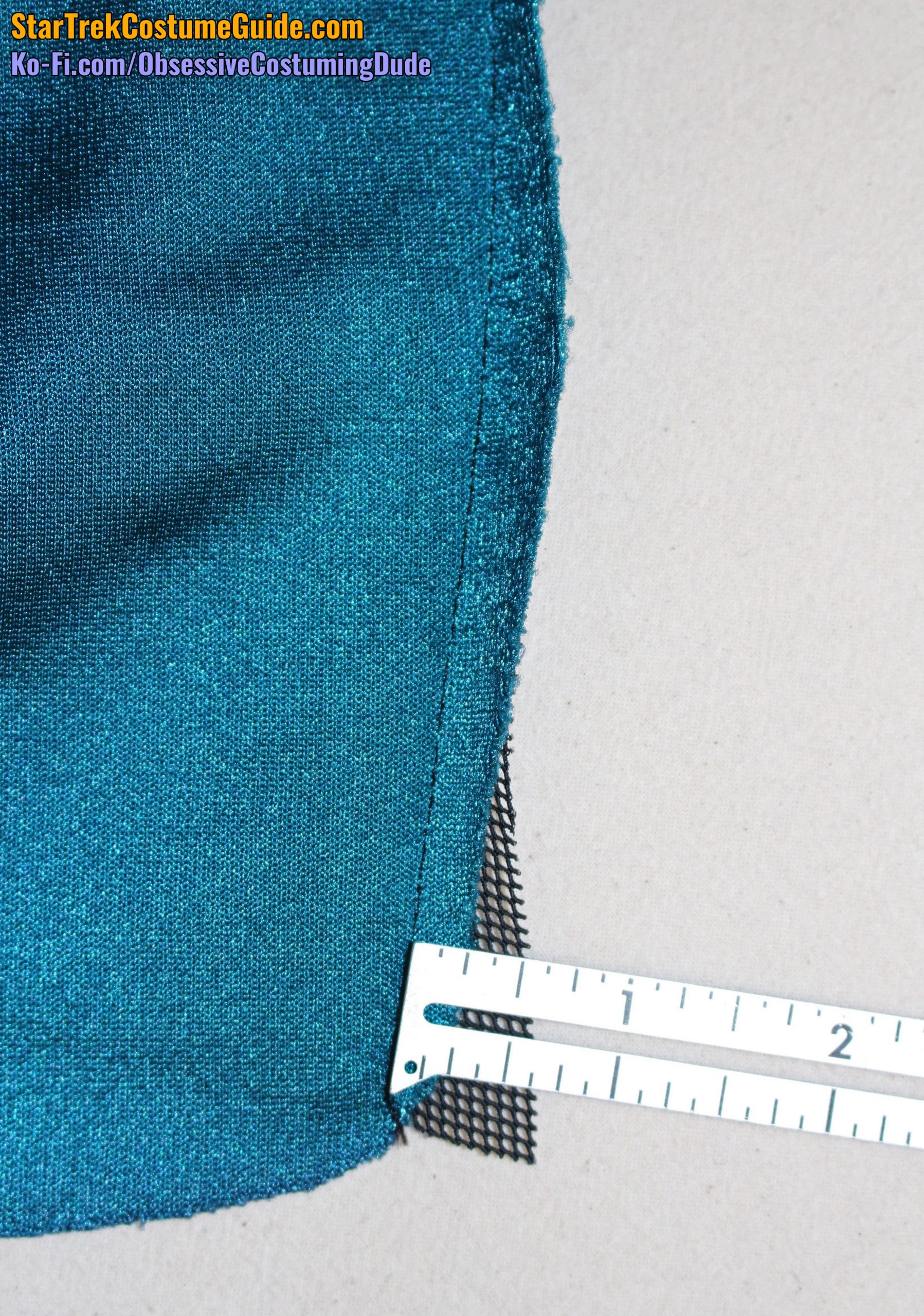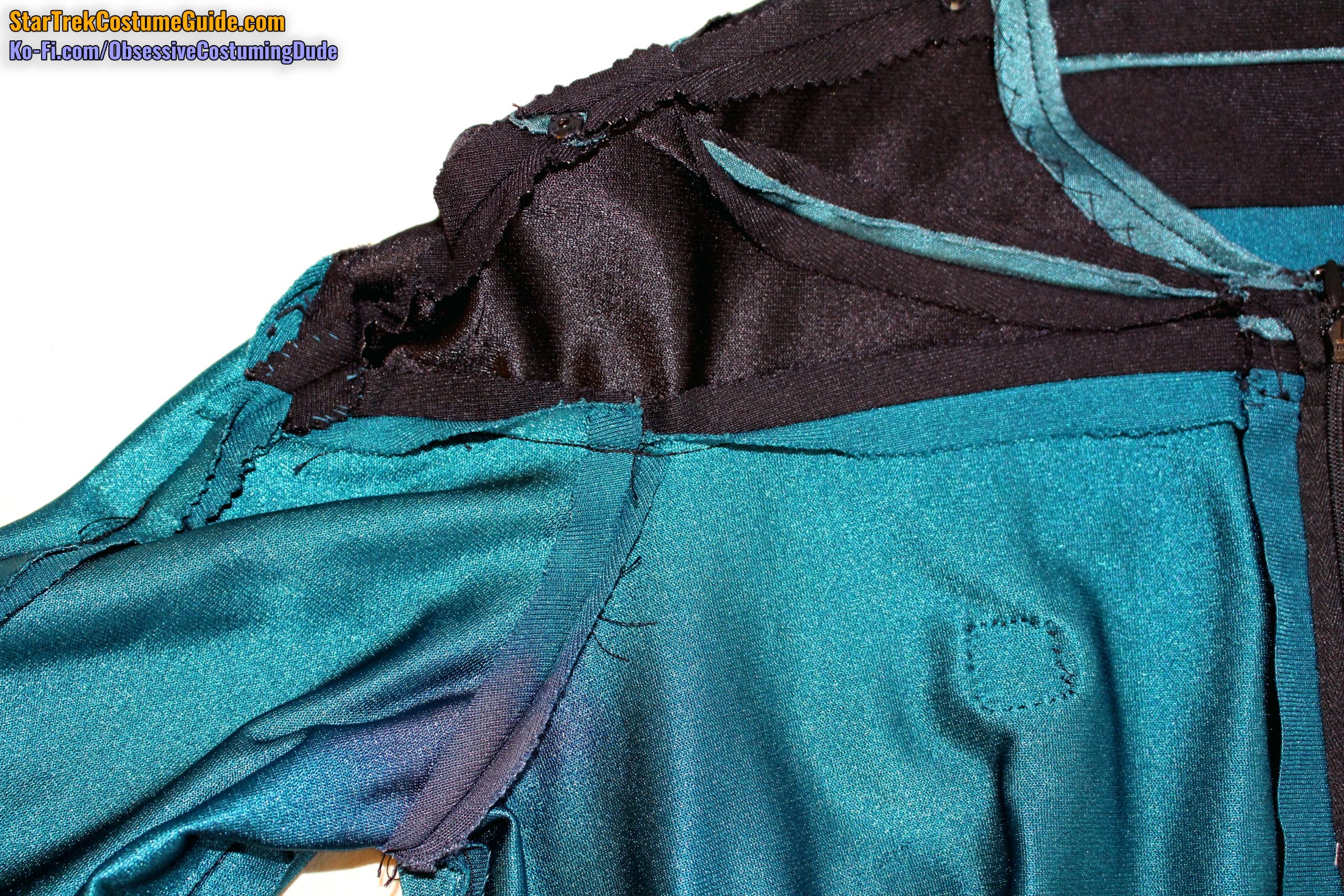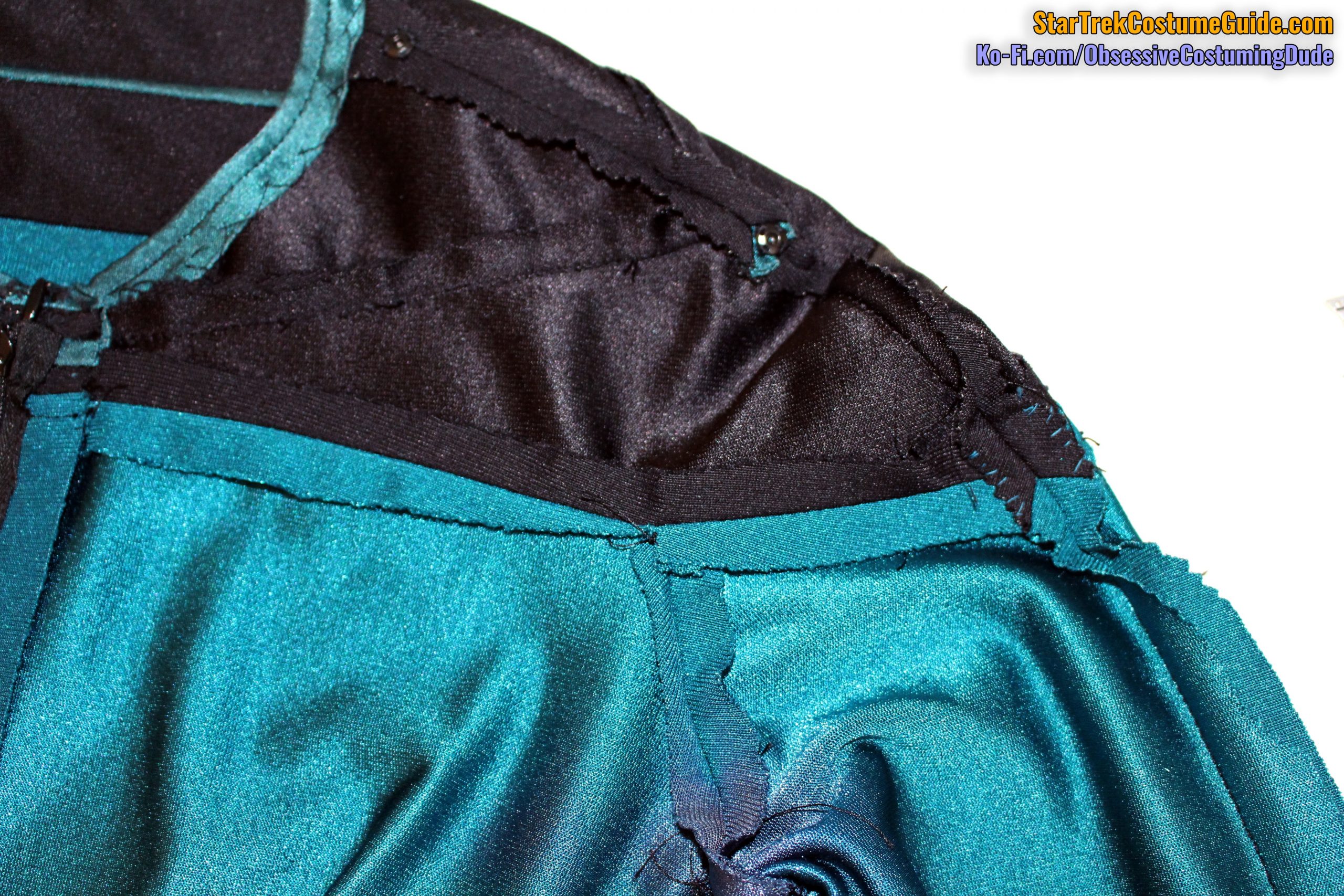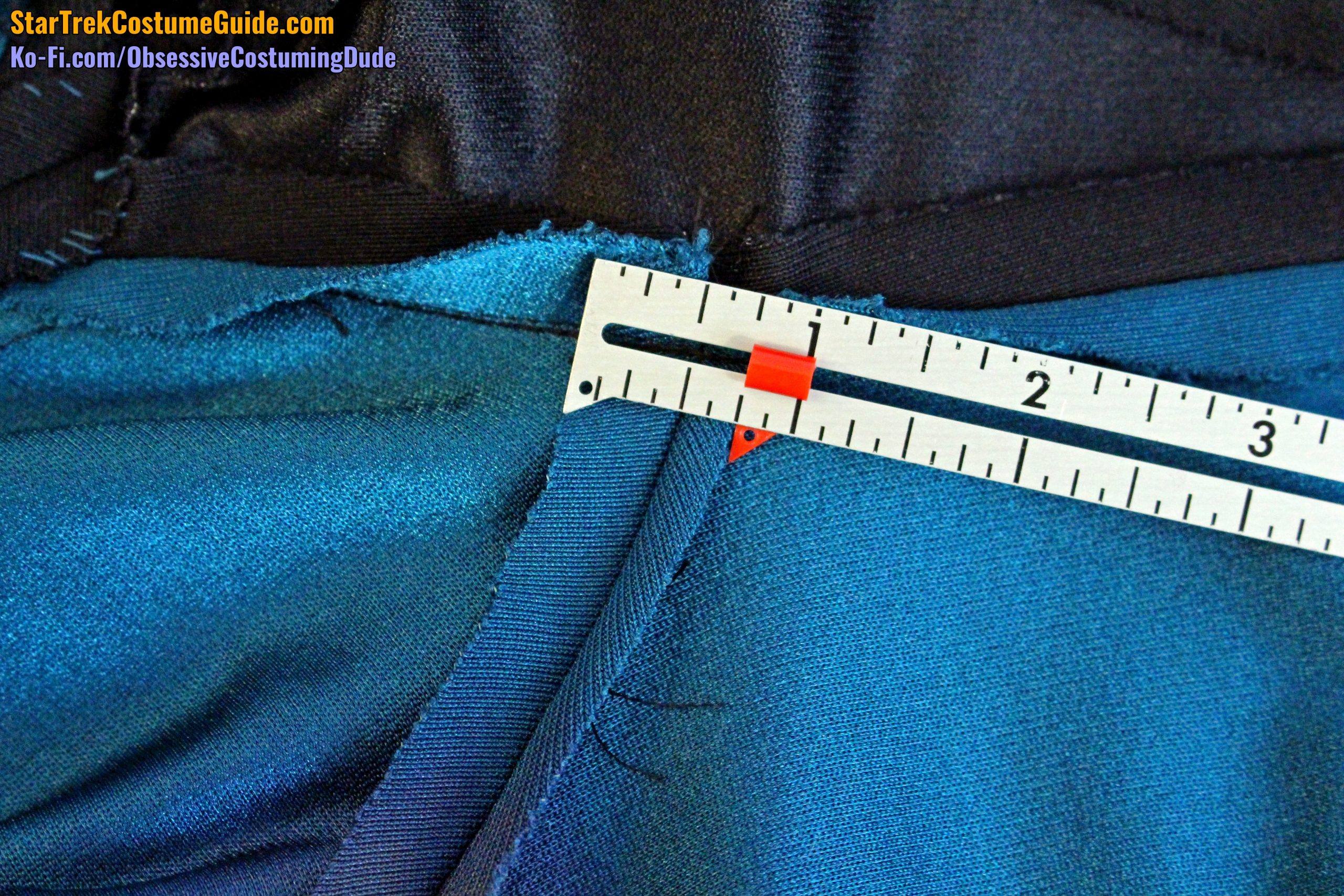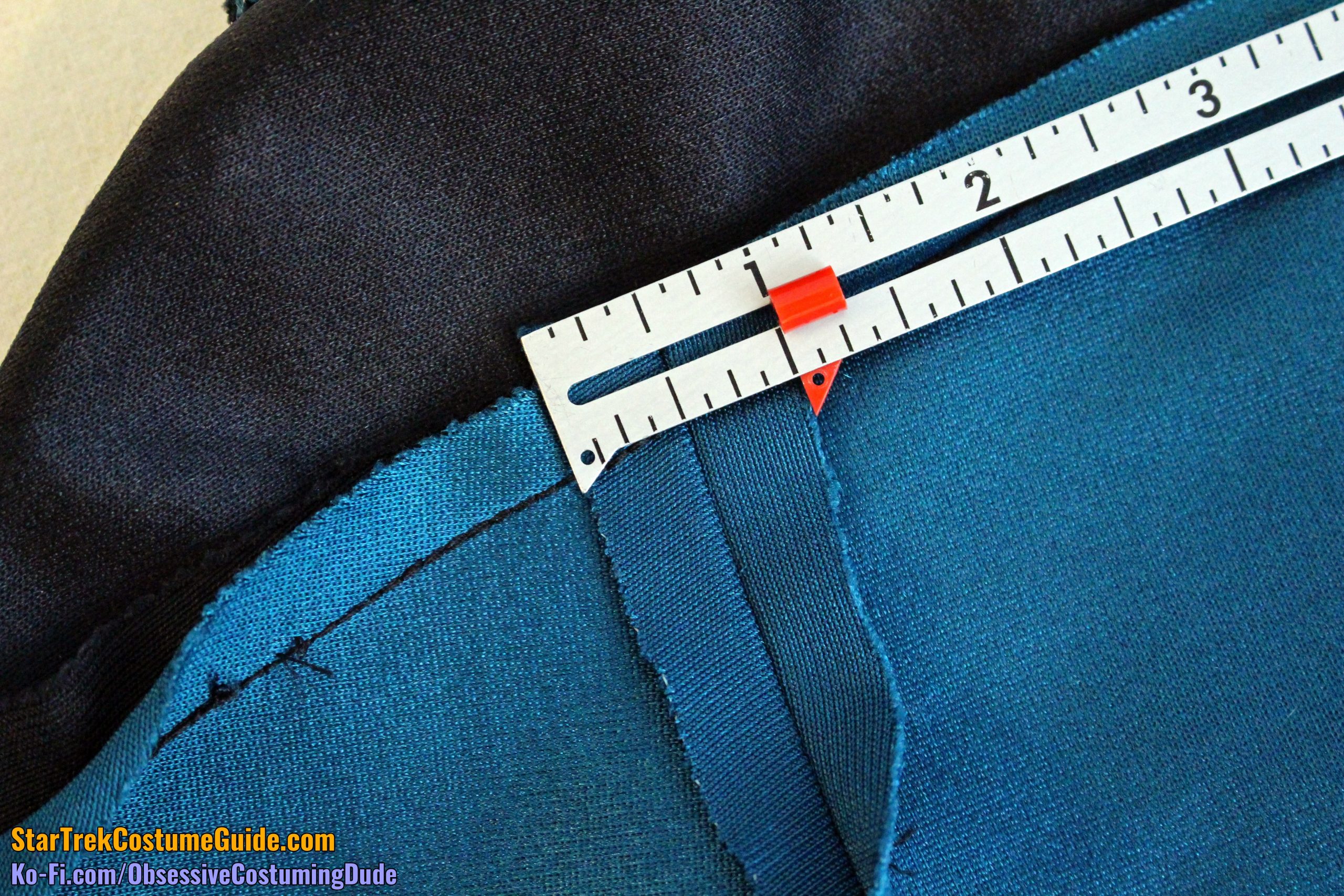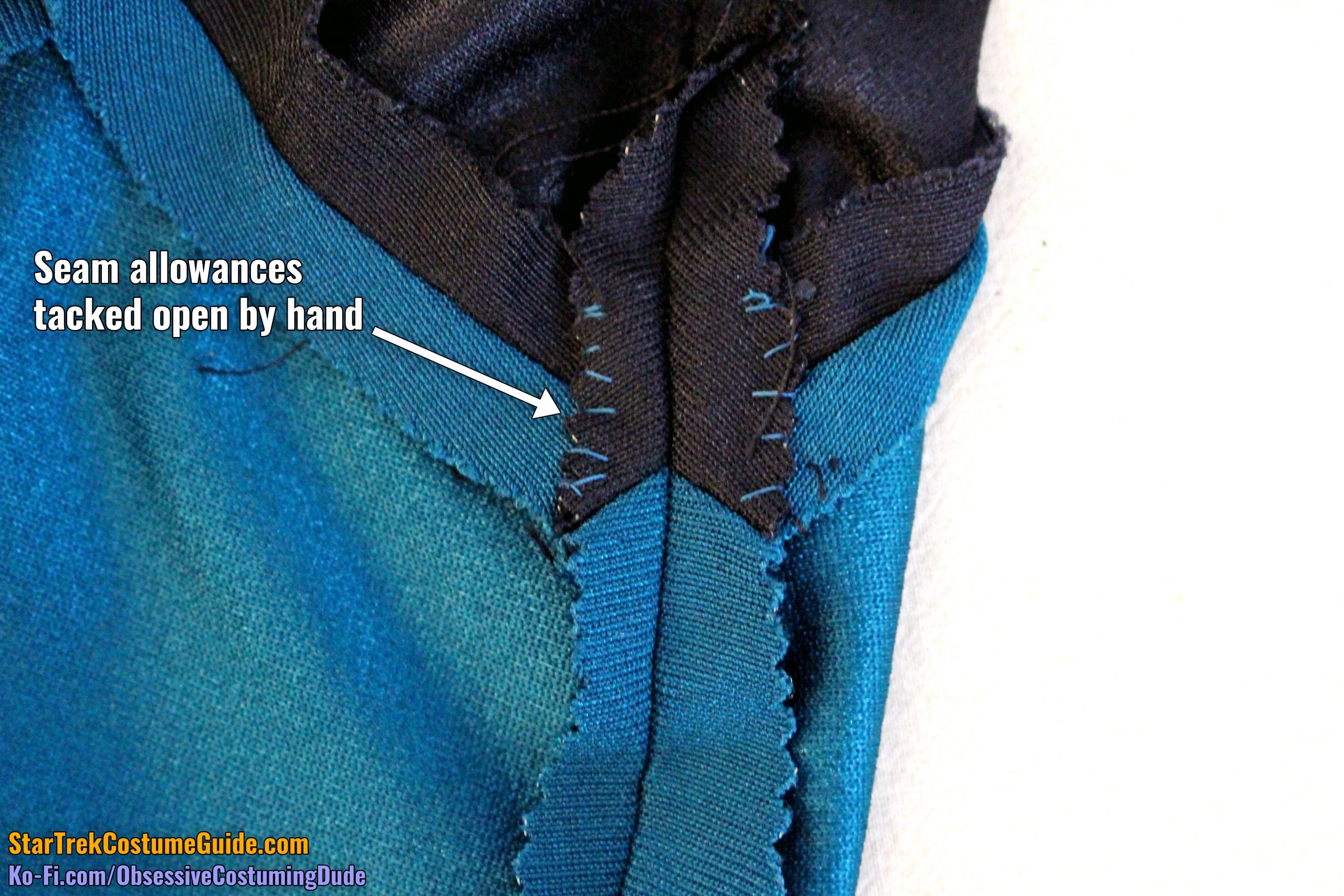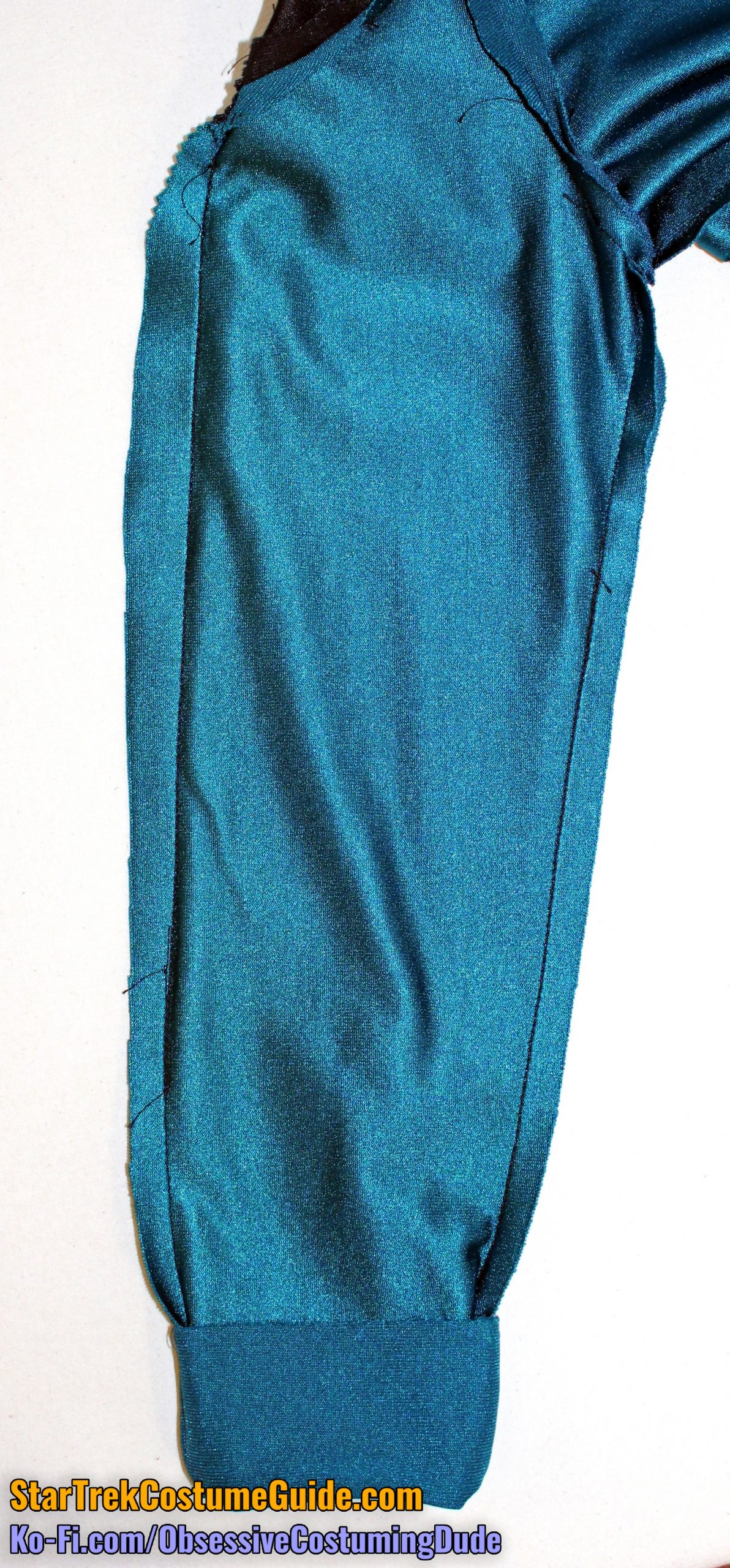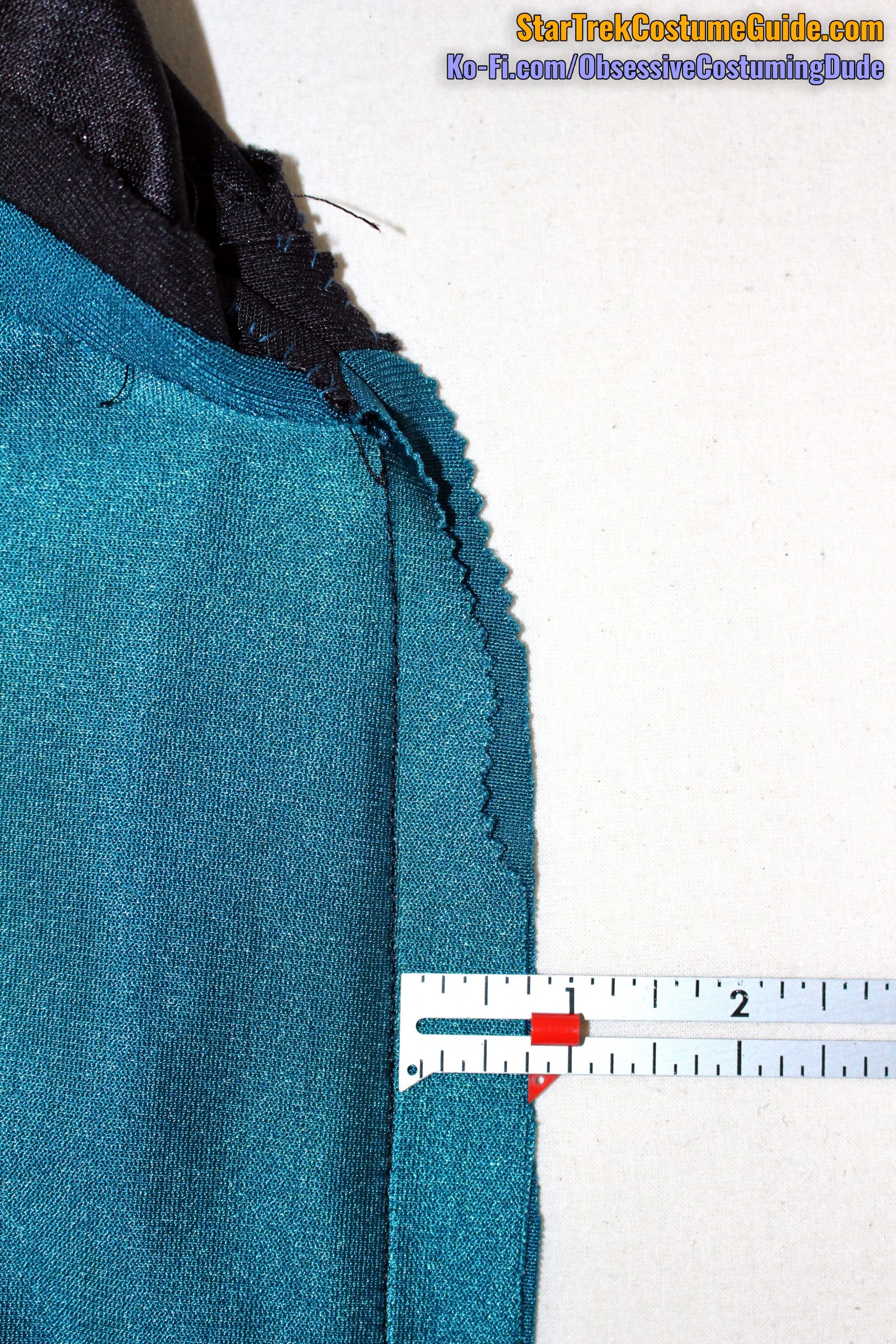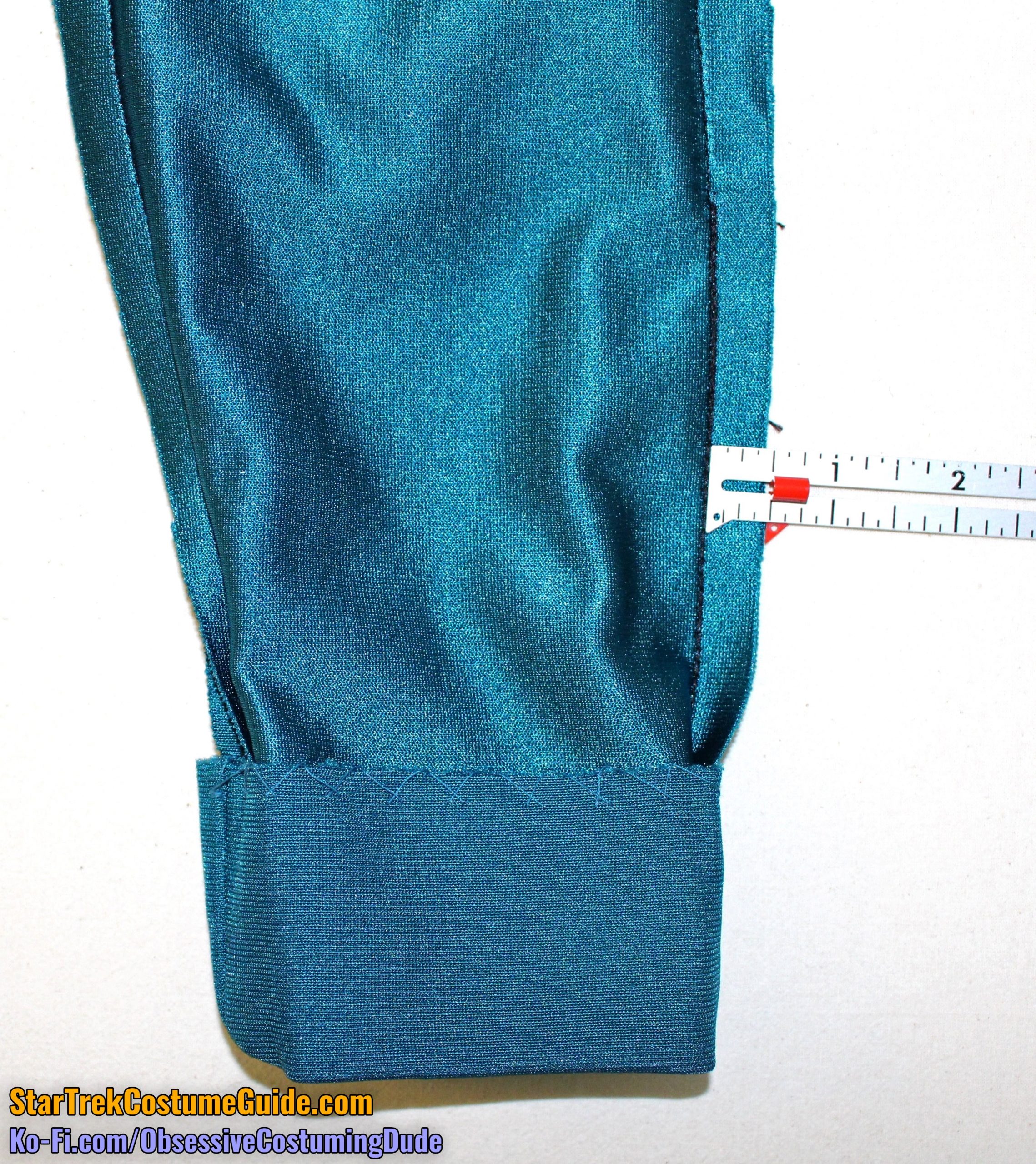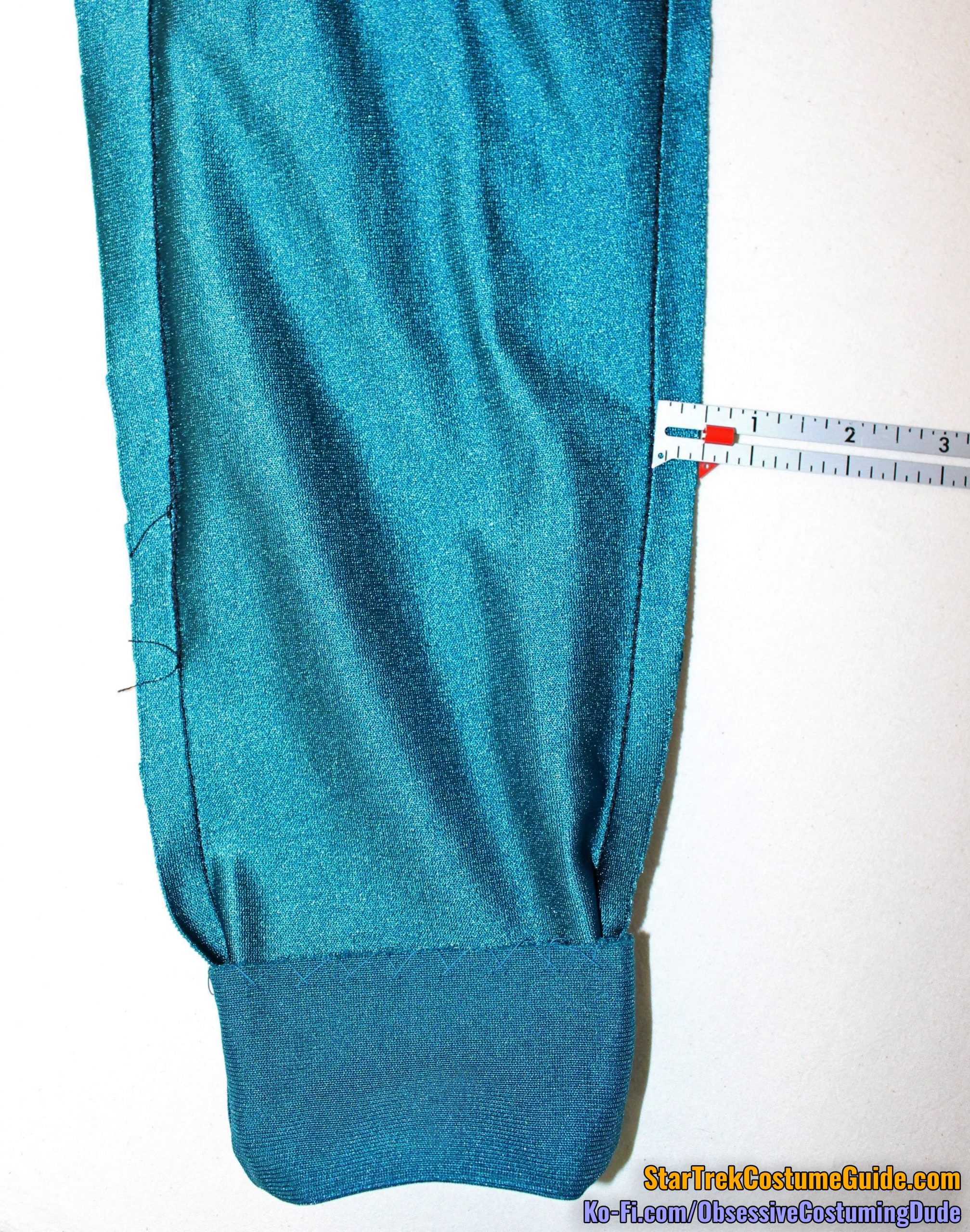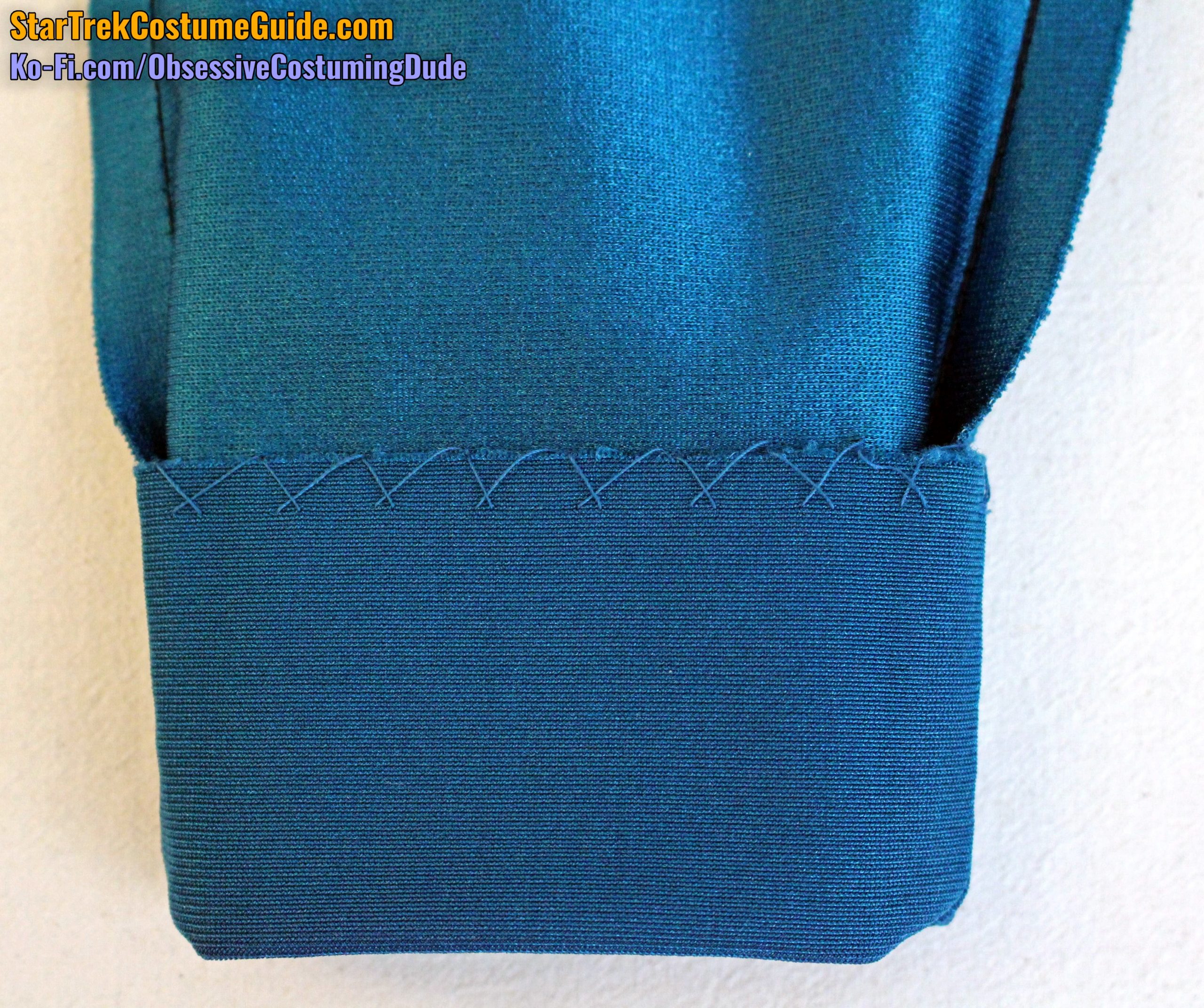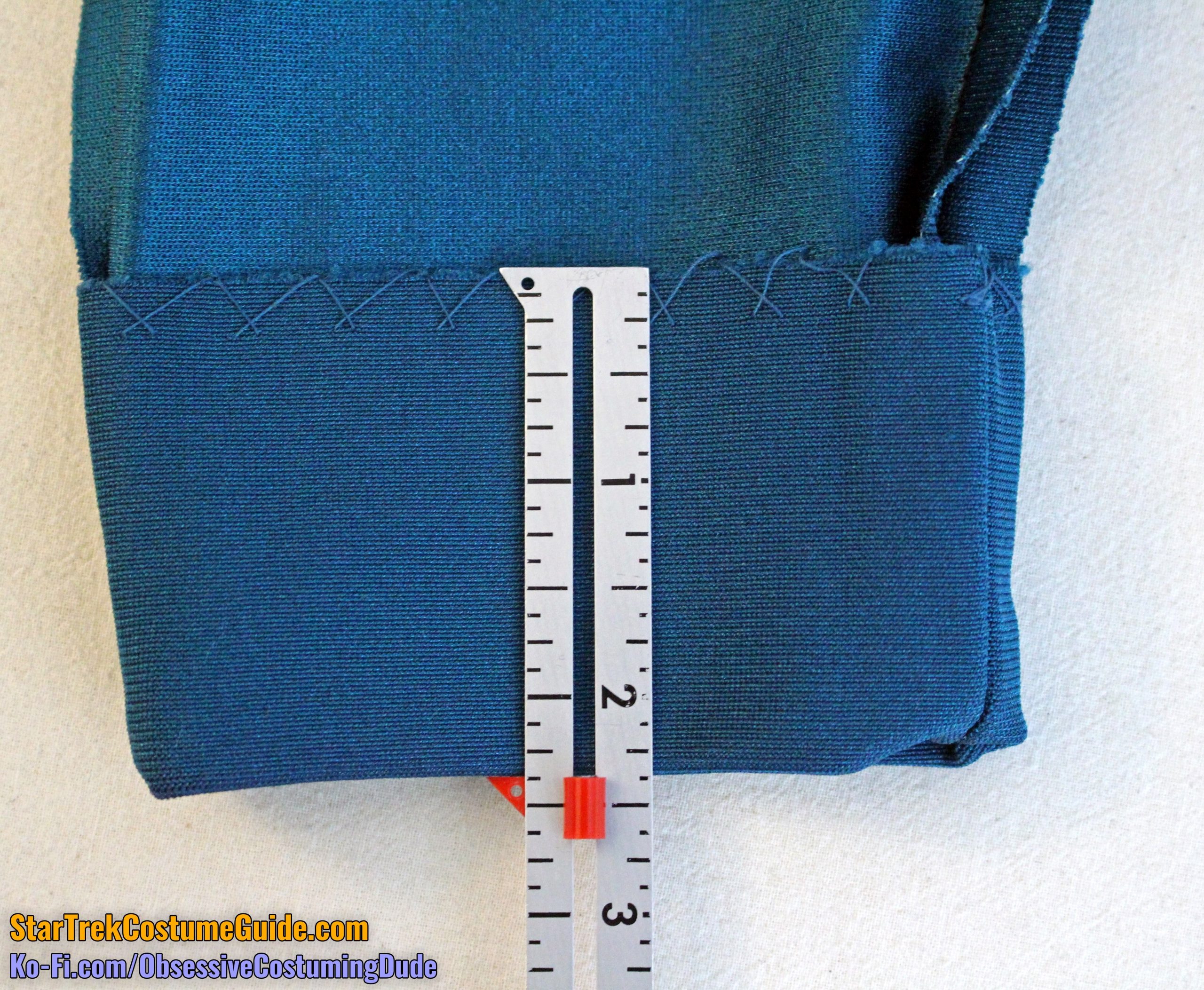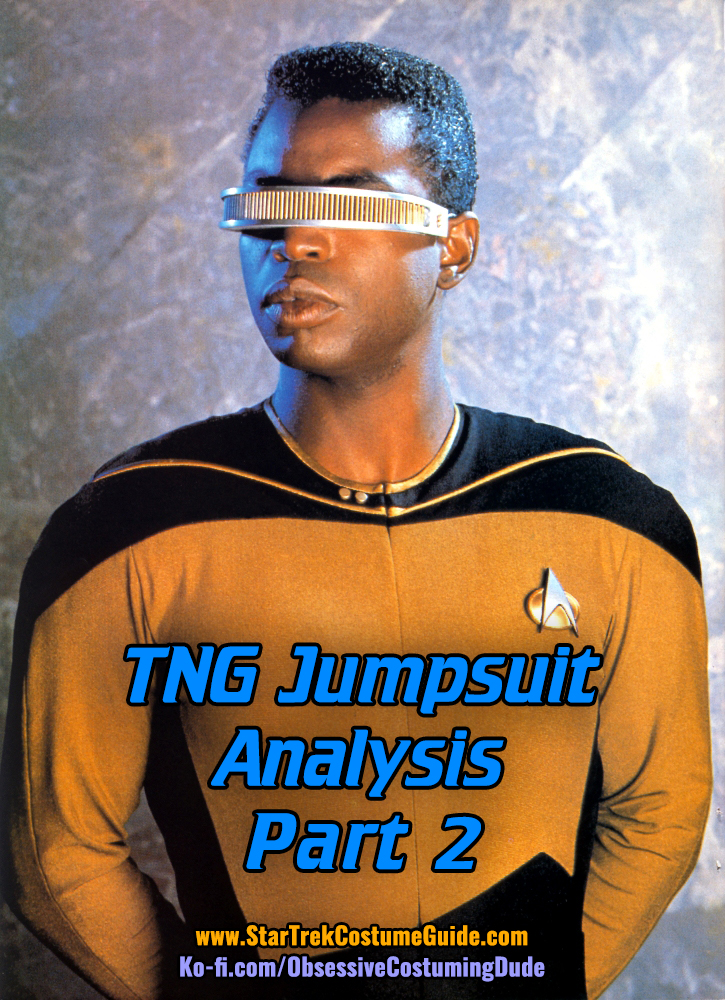As I mentioned in my TNG medical smock analysis, a while back I had the opportunity to examine a screen-used Dr. Pulaski medical smock, courtesy of Angelo Cifaldi.
As a supplement to the broader costume analysis, in this blog post we’ll be taking a closer, more detailed look at this specific Dr. Pulaski uniform from the season 2 opening episode, “The Child.”
(This was a very early video of mine – almost 4 years ago now – so please pardon its shortcomings. The information is still solid, though.)
Very special thanks to Angelo Cifaldi for the privilege of examining this uniform and sharing my research with you, and to my Ko-Fi supporters for helping make this happen. 🙂
INITIAL IMPRESSIONS
Three things struck me almost immediately upon beginning my examination of the costume, all of which I’ll elaborate on over the course of this post.
First, I’d been very curious about the color; as you may recall, it nearly always looked full-on blue in the actual show, but photos of the screen-used Dr. Pulaski uniforms by auctioneers and private collectors spanned the gamut – everything from greenish teal to, again, full-on blue.
Well, having seen it in-person, I can confirm that the original jumbo spandex was, in fact, a very dark teal – a bluish teal, but teal nevertheless!
Second, this thing is short – over 5” shorter than the women’s TNG skant I examined. I’d been working under the assumption that the two garments were approximately the same length, considering the screencaps I examined, but apparently not – possibly an optical illusion caused by Diana Muldaur’s height, or perhaps she simply has very short arms? Or a combination of both?
And finally, as I began studying and measuring the smock more, I became increasingly convinced that this particular uniform was hastily – and I do mean hastily – assembled in a mad rush.
I really got the sense that whoever made this thing was in a major hurry, and with this particular uniform only ever being seen in the first episode of the season, that kind of fits …
Which is not to say, of course, that this costume is rubbish or somehow substandard in quality! It’s a solid piece of work, surprisingly heavy, and it was obviously sturdy enough to withstand production use for (at least) an entire episode. It’s a fine piece, and for you TNG and/or Dr. Pulaski fans reading, I think you’ll find this examination interesting.
FABRIC and COLOR
As I mentioned, the actual division color was teal – a dark, bluish teal, but definitely teal.
And of course, the actual hue and saturation of the teal varied considerably over the course of the show, both in-person and on-camera.
At the time I examined this skant (early 2018), I hadn’t yet begun collecting costume cards with swatches of screen-used uniform fabric, but my friend Michael Cowart had a couple and kindly loaned them to me for a color comparison.
Interestingly, the teal Beverly and Deanna swatches were already different colors, with the Deanna swatch being slightly bluer and more saturated.
And of course, neither were a match for the Dr. Pulaski uniform.
Here’s a series of comparison photos I took, under different lighting conditions:
I believe the Dr. Crusher swatch to have been from the later-middle era of the show (circa seasons 5-6a, when her uniform looked the palest).
And as you can see, the aforementioned Dr. Crusher teal was a far cry from Dr. Pulaski’s.
I believe the Counselor Troi swatch was probably from the last year-and-a-half of the show, when she nearly always wore the standard Starfleet uniform (which was also around the time the TNG teal division color noticeably deepened for the final time).
This Counselor Troi teal was a bit closer, but still nowhere blue or dark enough.
For those of you who have a Pantone book handy, see color #315 U as a close representation of the screen-used fabric color.
(Or you could just Google it, although colors of course vary radically depending on graphics/monitor settings.)
Here is the aforementioned Pantone #315 U pictured with and without flash:
In this case, I found three that were all very close.
The first two are Valspar paint chip #5011-8, “Classic Teal” (picture left) and #5011-9, “Shaded Lake” (picture right).
I think the “Classic Teal” is slightly closer, but it depends on the lighting.
The third is also Valspar, but from a different series: CI 15, “Midnight Bayou” (below):
And finally, the Coats & Clark thread color #5380 “Dark Teal” was the closest match I found to the fabric at my local JoAnn.
As with the TNG skant I examined, the division-colored neckline/yoke piping wasn’t the same jumbo spandex as the body of the uniform, but a different fabric entirely.
And again, it didn’t quite match the color of the teal jumbo spandex used for the body.
The neckline/yoke trim fabric appears to have been a lighter-weight spandex, cut on the bias/diagonal.
(This appears to have been common practice with the early TNG uniforms.)
Here’s a quick look at how the Beverly and Deanna swatch colors compare to the neckline trim.
For the division-colored yoke/neckline trim, Gütermann #635 was the closest that I found.
And here’s what they look like, together.
Side note – while photographing this Pulaski uniform, I began noticing just how differently its color registers on-camera, even without any color-editing.
Under flash with my DSLR camera (Canon Rebel T5i), the teal registers as a greenish-teal; something about the flash on my camera seems to really bring out the yellow, making it appear more green.
However, without flash, and particularly in interior lighting (even with my photography umbrellas nearby to brighten the area), the teal photographs as a full-on blue.
For example, here are two detail photos I took within moments of each other, the only difference being that one was with flash, while the other wasn’t:
As if that weren’t strange enough, I noticed a similar effect when photographing the thread spool with the costume outside – again, two photos taken within moments of each other, but this time, neither was taken with camera flash.
I mean like, the wind blows, and this thing changes color?!? Even the spool of thread looked different!
Apparently there’s something about this particular color not only throws my DSLR camera for a loop, but also the actual film that was used to shoot The Next Generation.
I’m not at all an expert on lighting or photography, but to my eye the early seasons of TNG seem to have been filmed under bright blue lighting.
Photographing the costume with my bright photography umbrellas and no flash may be a replication of the original color-shifting effect.
(That, or it’s those damn gremlins …)
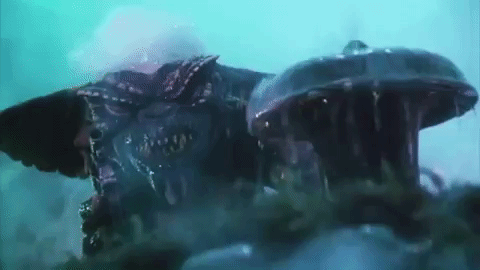
In this case, most of the following photos of the Pulaski smock’s exterior were taken without flash, which is why it looks so blue. However, most of the interior photos were taken with flash.
EXTERIOR DIMENSIONS and CONSTRUCTION
After documenting the color as best I could, I grabbed my measuring tape and began the process of documenting the skant’s dimensions and construction, generally working from the top down; front, then back; outside, then inside.
The neckline was only 5” from edge to edge, at its widest.
It was tough to get a read on the width of the neckline trim; sometimes it appeared to be 3/16” (which appears to have been standard for early TNG uniforms), but it also sometimes looked closer to a full ¼”.
The same was also the case with the yoke piping, on both the front and back.
My guess is that it was either intended to be 3/16” and occasionally got a little stretched, or it was intended to be ¼” and was accidentally sewn in a hair too much in a few places.
As to which was the intended width, I think there’s a case to be made for both.
As you might recall, the original trim width established by William Ware Theiss for the season 1 uniforms appears to have been 3/16“.
However, you might also recall, season 2 costume designer Durinda Rice Wood appears to have slightly widened the trim from the first season, and this Dr. Pulaski uniform was not only from the very first episode for which Wood was costume designer, but the first new uniform design we saw.
As of this writing, I’m inclined to believe that ¼” was the intended width.
But either way, after having made numerous early TNG replica uniforms myself (as well as a replica of this particular Dr. Pulaski medical smock), I can personally attest to how difficult it can be to control the neckline trim and yoke piping to within less than 1/16” margin of error!
At the center front, the yoke was about 1 ⅛” deep (including the neckline trim).
The shoulder seams were rolled forward slightly.
Curiously though, the front yoke was 4 ¼” deep, measured from the neckline end of the shoulder seam, just like the TNG skant I examined.
(The back yoke was deeper when measured from the shoulder seam, though – more on that shortly.)
The front yoke extended onto the upper sleeve approximately 3 ⅜”.
Using the horizontal “weave” of the jumbo spandex as a guide, one can observe that the lower edge of the front yoke wasn’t cut straight, but it curved gently downward away from center.
The front yoke curved downward about ⅝” from center front to armscye.
The yoke continued to curve onto the sleeve – ⅝” from the armscye to the lower/outer corner of the yoke.
Interestingly, the lower edge of the front yoke was gracefully curved all the way from the center front to the lower/outer corner, but when the sleeve was raised, it pulled the lower edge of the yoke as to make it appear to have a slight “point” at the armscye.
The back yoke was 3 ⅜” deep at the center back, including the neckline trim.
The back yoke was 4 ⅜” deep, measured from the neckline end of the shoulder.
The back yoke extended onto the upper sleeve approximately 4 ½”.
The back yoke also curved downward away from center; it curved downward ½” from center to armscye.
It also continued to slightly curve onto the sleeve, although noticeably less than the front – a mere ¼”.
The sleeves themselves were two-piece sleeves, although not in a conventional/traditional style; there was an outer seam, and an inner/underarm seam.
The sleeves were cut on the crossgrain, and again using the weave of the jumbo spandex as a guide, we can observe that the wedge cut for the outer front yoke was 1 ¼” tall.
The back “sleeve wedges” were taller – 1 ¾” on one side, and 1 ⅞” on the other.
On both sleeves, the outer sleeve seam measured 19” from the outer/lower corner of the yoke to the hem line.
Also on both sleeves, the inner sleeve seam measured 17” from the armscye seam to the hem line.
Curiously, the inner sleeve seam did not align with the side seam on the body of the smock.
On the left side, the sleeve seam was ⅝” behind the side seam, while on the right side, it was ½” behind it.
(This was my first head-scratching moment, since in my experience with the TNG jumpsuits, TNG skants, and TNG season 1 admiral jackets, it’s much easier to just sew the sides and inner sleeves closed in one go.)
The Pulaski medical smock was 23 ⅝” long at the center front, measured from the bottom of the yoke to the bottom of the smock.
I find this curious, since this is over 5” shorter than the TNG skant I examined (which was 29” long, measured in the same manner), yet Dr. Pulaski’s smock appeared to be about the same length as the TNG skants – or, if anything, perhaps even a bit longer!
This could be a height issue, but there’s some confusion there, as Google says Marina Sirtis is 5’ 5” tall, while IMDB says she’s only 5’ 3”.
On the other hand, Google says Diana Muldaur is 5’ 5”, while IMDB says she’s 5’ 5 ½”.
Perhaps Diana Muldaur has comparatively short arms?
In any event, the back panel was a couple inches longer than the front – 25 ⅝”, measured from the bottom of the yoke to the bottom of the smock.
The upper edges of the front panels were 6 ½” wide each, measured from the center front to the armscye.
These edges were curved similarly to the lower edge of the yoke, although slightly less so – a mere ¼” from center front to armscye.
The upper edge of the back panel also measured 13” across, from armscye to armscye.
The upper edge of the back panel was considerably more curved than the front – ¾” from center back to armscye.
An important detail you may have noticed is that like the other early TNG-era uniforms, the front panels of the smock were cut with the jumbo spandex on the crossgrain – i.e. with the “weave” being horizontal, and the fabric’s stretch being vertical.
However, on the back of the smock, the jumbo spandex was cut on the straight grain, with the “weave” being vertical, and the fabric’s stretch being horizontal!
(I have a theory as to why – more on this later.)
Oddly, the sides of the smock were slightly different dimensions.
On the left side, the side seam measured 10” from the armscye to the top of side panel insert.
However, on the right side, the side seam was slightly longer – 10 ½” from the same points.
However, these “slits” weren’t merely the lower side seams left open, revealing the high-waisted black uniform trousers underneath; there were actually triangular black mesh panels sewn into the lower sides.
Both the front and back edges of the left side panel were 10 ¾”, and the bottom edge was 3 ⅞” wide.
The front and back edges of the right side panel, however, were a bit shorter – 9 ¾”, and the bottom was ever-so-slightly wider (4”).
The bust area was shaped with bust darts.
The right dart was 4 ½” long (from side seam to tip), while the left dart was 4 ⅝” long.
At the front waist area was a V-shaped waistband, 2” wide.
The total incline of the waistband, from center front to side seam, was 2 ¾”.
The upper edge of the waistband was 11” beneath the lower edge of the front yoke at the center front.
On the lower, outer front area of the medical smock were two double-welt pockets – a rarity indeed for the TNG/DS9/VOY-era of Star Trek!
In fact, other than Dr. Crusher’s lab coat and the TNG, VOY, and DS9/NEM-era cadet uniforms, this is literally the only TNG-era Starfleet uniform I can recall that had visible pockets of any kind.
Considering this specific Pulaski uniform was only ever seen in the first episode of the season, I wonder if perhaps Durinda Rice Wood was only told about the “no pockets policy” of the TNG-era uniforms after it was too late to do anything about it.
The pockets themselves were both 7 ½” tall.
As you can see, the pocket welts were cut on the crossgrain, just as the front fabric was.
However, the pocket facing was cut on the straight grain, allowing it to stretch with the pocket opening.
The pocket was also edge-stitched around its perimeter.
As for the pocket width … well, that’s a can of worms.
Both pockets measured 7/16” wide at the top, widened to ¾” at the middle, and narrowed back down to 7/16” at the bottom.
Right pocket:
Left pocket:
I could be mistaken (of course), but I believe the welts were originally intended to be ¼” wide, with a total pocket width of ½”, but a tiny little bit was “lost” during construction.
The pockets were literally fixed into this position via hand-sewing, but more on that later.
Anyway, on the back of the smock was a pair of fitting darts.
The back left dart was 8 ¼” tall, while the back right dart was 8 ½” tall.
Both darts were positioned 4” away from the side seam at the waist.
The lower front measured 18 ½” wide, from side insert to side insert (with the right side being slightly wider than the left).
The lower back measured 16” wide, from side insert to side insert.
One of the most surprising – even shocking – aspects of the smock is that the lower edges were simply cut to length, left raw and unhemmed!
Jumbo spandex doesn’t fray like woven fabrics tend to, and there’s no real structural risk of leaving the bottom edges unhemmed, but I found it particularly surprising considering how extensively the TNG skants were hemmed (literally every edge), and that the sleeves on this smock were turned up and properly hemmed.
The minor inconsistencies with the alignment and proportions notwithstanding, this was the first major indicator to me that this particular uniform was made in a rush.
It’s admittedly possible that some of the fabric at the bottom of the smock was trimmed away in the 30-odd years since the episode in which it appeared first aired, but the overall length in relation to the sleeves looks about right to me, so I find this unlikely.
Furthermore, most of the evidence that this uniform was hastily constructed is to be found on the interior of the smock … but first, a look at the closure system.
CLOSURE SYSTEM
The smock closed up the center front via a non-separating invisible zipper, and the front seam allowance was 1” on each side.
In total, the zipper was 23 ½” long, and the bottom of the smock was sewn closed beneath the zipper.
The top inch or so of the zipper was left hanging free, the upper front (yoke) seam allowances were tacked into place by hand, and three hook-and-eye closures closed the upper front above the zipper.
The top of the front body panels was reinforced with a small piece of black fabric, which was (more or less) centered over the seam line and sewn in with the zipper.
Also observe the additional row of stitching, where the zipper tape was fastened down.
Beneath the waistband, the outer edges of the seam allowances were reinforced with what appears to be bias-cut hair canvas (comparable in weight to “Heavyweight hymo” from B. Black & Sons), approximately ¾” wide, folded in half, and hand-sewn to the allowances.
I have no idea what purpose this interfacing serves.
It doesn’t extend anywhere near the seam line, and it’s not machine-sewn in, so it wasn’t to stabilize the jumbo spandex for the zipper installation.
There’s negligible risk of the seam allowances stretching out of place while the zipper’s closed, and even if they do, so what?
It’s not attached to anything else (like the pockets or the mesh “panty assembly, which we’ll get to momentarily), so it doesn’t seem to serve any structural purpose.
Literally my only guess would be that it was intended to bulk up the outer seam allowances past the zipper tape, so on the front of the costume, there’d be less of a bulge at the center front – tapering from zipper, to hair canvas, to just the front body.
But if that were the case, why is there no hair canvas on the upper front, above the waistband?!?
INTERIOR CONSTRUCTION
Now we’ll take a look at the Pulaski smock’s interior construction.

Here’s a general glance at the front interior, before we start to examine it in detail.
At a glance, the neckline trim appeared to have been constructed in the same manner as the early TNG jumpsuits and TNG skants, but it actually wasn’t.
On the aforementioned early TNG uniforms, the neckline trim was a strip of fabric folded in half, sewn on, and turned under.
However, this Pulaski medical smock’s neckline trim was actually attached more like bias binding might be; the strip was sewn on, pressed over, turned under, and the underside was secured with a “stitch-in-the-ditch.”
You can just barely see the “stitch-in-the-ditch” on the outer edge of the neckline trim in these photos:
The final result with this method is subtly different; rather than the neckline trim extending out from underneath the yoke, this way the trim sits on top of the neckline, creating a tiny “bulge.”
The neckline trim’s allowance on the underside was ⅜”, and it was catch-stitched to the underside of the yoke.
The shoulder seam allowances were ⅜”, except they widened to ½” at the neckline – another minor indicator that this costume was personally-fitted and may have been made in a hurry.
I find it curious that the shoulder seam allowances were “pinked” (i.e. cut with pinking shears), since as I mentioned, jumbo spandex doesn’t unravel like woven fabrics do so it’s unnecessary as a protective/preventative measure.
Also note the shoulder pads attached via two black snaps sewn to the shoulder seam allowances and were obvious removable.
The upper/lower yoke seam allowances were ⅜” and pressed upward.
However, the yoke piping seam allowances were trimmed down to ¼”.
The front yoke/body seam allowances were pressed open.
While the yoke’s lower seam allowance was consistently ½”, the upper front seam allowance was ½” at the center front and tapered down to almost nothing at the armscye.
To me, this implies that the seam was either let out for fitting reasons, or the seam allowance was trimmed away toward the armscye (since in my experience, those armscye seam allowances always want to poke upward no matter how much you press them).
Also note that the armscye seam allowances were pressed and sewn in open, although they naturally want to pull toward the sleeves.
The back yoke/body seam allowances were ½” and pressed upward.
And again, the armscye seam allowances were both pressed, and sewn-in, open.
The bust darts were 1” tall and pressed open over the dart’s stitch line.
The waistband had some weirdness going on, too.
As you can see, the waistband was reinforced with a white, knit, fusible interfacing.
The waistband’s upper seam allowances were pressed open.
They appear to have originally been ½” and trimmed down to ¼” an inch or so from the center front, and they were almost entirely trimmed out from underneath the front seam allowance.
Normally I’m all for reducing bulk, and trimming/grading seam allowances is a great way to do this, but I find this particular execution curious …
Why not simply trim them down to ¼” all the way
Perhaps the wider seam allowances at the front were, again, to help obscure the zipper/front seam allowance?
Or maybe trimming the allowances was an afterthought?
The lower seam allowances were also ½” and pressed upward.
In addition to the waistband itself, the lower waistband seam allowances served two other important purposes.
First, and perhaps most obviously, there was a sort of black mesh “panty” attached to the body of the smock, made of the same black mesh as the side panel inserts.
This “panty” was probably intended to “anchor” the smock into place on the wearer, preventing it from twisting or pulling upward.
Both the front and back were cut as a single piece, and it was sewn into place on the sides at the waist, as well as to the front waistband’s lower seam allowances.
A slit was cut in the “panty” for the zipper, and the upper front corners were hand-sewn to the front seam allowances.
The upper back edge of the “panty” was actually hemmed, with approximately 1” hem allowance and stitched down ¼” from the edge, creating a channel for a length of ½” black elastic.
Both the upper back corners of the “panty” and the ends of the elastic were tacked down by hand.
My guess would be that this elastic helped the “panty” hug the back more and keep it from drooping.
As you may recall, the front pockets were literally sewn closed, so I was surprised to discover pocket bags on the interior of the costume – implying that these pockets may have been originally intended to be functional.
(The pocket bag fabric looks kind of silky, but it felt more like a polyester lining to me.)
My hypothesis is that they were originally intended to be functional pockets, but it was determined that they weren’t viable for actual use – probably due to lack of stability (perhaps a combination of the spandex itself, and the fact that only two sides of the pocket were actually fastened down).
So, the pockets were quickly hand-sewn closed – perhaps even on the day, between filming takes – to prevent the actress from using them, or perhaps even to keep them from stretching open while not in use.
While this is only a theory, to me it’s additional evidence that this costume was assembled in a hurry.
The other function served by the waistband’s lower seam allowances was to anchor the upper edges of the pocket bags into place.
The pocket area was stabilized with a rectangle of black fusible interfacing, 2 ⅜” wide, which has (probably long since) unbonded from the fabric.
On both sides, the pocket welts were slightly uneven in their positioning, especially the left side.
(Not that it really matters on the exterior of the garment, of course, but to me it’s yet another indicator of this particular costume’s hasty construction.)
Both pocket bags were approximately 12” tall at the outer edge, 10” tall at the front edge, and 6 ¼” wide.
As you can see, the pocket bag was sewn closed with ¼” seam allowance, and the outer edges were “pinked.”
Here, you can just barely see the thread, where the pocket opening was hand-sewn closed.
On the back, the right dart was about ¼”, but the left dart was a tiny bit wider – 5/16“.
Both darts were pressed toward the center back.
The side seam allowance “warbled” quite a bit.
Both appeared to be ⅜” wide at the armscye (underarm), widened considerably toward the bust/waist (especially the back), then tapered down to almost nothing toward the side panel insert – although the lower side seam allowances appear to have been trimmed down with pinking shears for some reason.
For example, this particular seam allowance was approximately ⅜” near the top, widened to ½” at the lower middle, and tapered down to less than ¼” near the bottom (although the mesh/netting was noticeably wider).
To me, these wavering seam allowances further indicate a rushed fit and/or assembly.
Another theory I have is that the non-separating front zipper caused the obvious issue of donning and removing the smock, so to compensate, the back of the smock was cut with the stretch going horizontally, around the wearer’s body.
However, even the additional give may not have been enough, so the lower sides may have been opened and the black mesh inserted later, to allow the smock to open farther when putting on the garment.
Not only did the black mesh panels open the bottom of the smock by about 8”, but the mesh stretches a bit as well.
The combined stretch of both the back spandex and the additional fullness with the side panels allowed the smock to be donned, despite the non-separating front invisible zipper.
In other words, perhaps the smock was originally intended to be closed along the sides, but the lower sides were opened to provide additional wearing ease.
It’s just (another) theory, but it does happen to fit the available facts and evidence.
The front armscye seam allowances were uneven, too.
The front sleeve’s armscye seam allowance was noticeably wider than the front body armscye (½” vs. ¼”, respectively).
The back armscye seam allowances, however, were both ½”.
The seam allowances at the lower/outer corner of the yokes and the upper corners of the sleeves were tacked open by hand.
The outer sleeve seam allowances were about ¾” at the top and tapered down to ½”, toward the bottom of the sleeve.
The sleeve hem allowance was pressed upward and catch-stitched to the underside by hand.
The sleeve hem allowance was 2 ⅜” – a very curious allowance.
My guess is that the original (patterned) hem allowance was 2”, but the sleeves were slightly too long on Diana Muldaur, so the sleeves were hemmed a bit more.
Were this the case, it would lend further evidence to Diana Muldaur possibly having short arms, helping to reconcile the overall length issue.
IN CONCLUSION
I’d again like to thank Angelo Cifaldi for allowing me to study this screen-used Dr. Pulaski uniform, and to share my research with you.
I learned a great deal from this costume examination, and I hope you did as well!
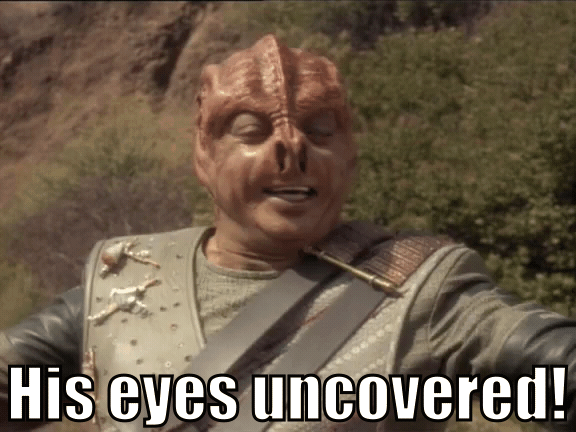
If you enjoyed this blog post, please support my costume research on Ko-Fi.
Every bar of gold-pressed latinum goes toward producing more sewing and costuming resources like this, for everyone interested in Star Trek costumes. 🙂

